
VCT 38xxA
Video/Controller/Teletext
IC Family
Edition Oct. 17, 2000
6251-518-1AI
ADVANCE INFORMATION
MICRONAS
MICRONAS

VCT 38xxA
ADVANCE INFORMATION
2
Micronas
Contents
Page
Section
Title
7
1.
Introduction
8
1.1.
Features
8
1.1.1.
Video Features
8
1.1.2.
Microcontroller Features
8
1.1.3.
OSD Features
8
1.1.4.
Teletext Features
8
1.1.5.
Audio Features
8
1.1.6.
General Features
9
1.2.
Chip Architecture
10
1.3.
System Application
11
2.
Video Processing
11
2.1.
Introduction
11
2.2.
Video Front-end
11
2.2.1.
Input Selector
11
2.2.2.
Clamping
11
2.2.3.
Automatic Gain Control
11
2.2.4.
Analog-to-Digital Converters
12
2.2.5.
Digitally Controlled Clock Oscillator
12
2.2.6.
Analog Video Output
12
2.3.
Adaptive Comb Filter
13
2.4.
Color Decoder
13
2.4.1.
IF-Compensation
14
2.4.2.
Demodulator
14
2.4.3.
Chrominance Filter
14
2.4.4.
Frequency Demodulator
14
2.4.5.
Burst Detection / Saturation Control
14
2.4.6.
Color Killer Operation
15
2.4.7.
Automatic Standard Recognition
15
2.4.8.
PAL Compensation/ 1-H Comb Filter
16
2.4.9.
Luminance Notch Filter
16
2.4.10.
Skew Filtering
16
2.5.
Horizontal Scaler
16
2.6.
Black-line Detector
17
2.7.
Test Pattern Generator
17
2.8.
Video Sync Processing
18
2.9.
Macrovision Detection
18
2.10.
Display Processing
18
2.10.1.
Luma Contrast Adjustment
18
2.10.2.
Black-Level Expander
19
2.10.3.
Dynamic Peaking
21
2.10.4.
Digital Brightness Adjustment
21
2.10.5.
Soft Limiter
21
2.10.6.
Chroma Interpolation
21
2.10.7.
Chroma Transient Improvement
22
2.10.8.
Inverse Matrix
22
2.10.9.
RGB Processing
22
2.10.10.
OSD Color Look-up Table
22
2.10.11.
Picture Frame Generator
23
2.10.12.
Priority Decoder
23
2.10.13.
Scan Velocity Modulation
23
2.10.14.
Display Phase Shifter

Contents, continued
Page
Section
Title
ADVANCE INFORMATION
VCT 38xxA
Micronas
3
25
2.11.
Video Back-end
25
2.11.1.
CRT Measurement and Control
26
2.11.2.
SCART Output Signal
27
2.11.3.
Average Beam Current Limiter
27
2.11.4.
Analog RGB Insertion
27
2.11.5.
Fast-Blank Monitor
29
2.12.
Synchronization and Deflection
29
2.12.1.
Deflection Processing
29
2.12.2.
Angle and Bow Correction
29
2.12.3.
Horizontal Phase Adjustment
30
2.12.4.
Vertical and East/West Deflection
30
2.12.5.
EHT Compensation
31
2.12.6.
Protection Circuitry
31
2.13.
Reset Function
31
2.14.
Standby and Power-On
32
2.15.
I
2
C Bus Slave Interface
32
2.15.1.
Control and Status Registers
44
2.15.1.1.
Scaler Adjustment
46
2.15.1.2.
Calculation of Vertical and East-West Deflection Coefficients
47
3.
Text and OSD Processing
47
3.1.
Introduction
47
3.2.
SRAM Interface
47
3.3.
Text Controller
49
3.4.
Teletext Acquisition
49
3.5.
Teletext Page Management
49
3.5.1.
Memory Manager
50
3.5.2.
Memory Organization
50
3.5.3.
Page Table
52
3.5.4.
Ghost Row Organization
52
3.5.5.
Subpage Manager
53
3.6.
WST Display Controller
55
3.7.
Display Memory
57
3.8.
Character Generator
58
3.8.1.
Character Code Mapping
59
3.8.2.
Character Font ROM
60
3.8.3.
Latin Font Mapping
61
3.8.4.
Cyrillic Font Mapping
62
3.8.5.
Arabic Font Mapping
63
3.8.6.
Character Font Structure
64
3.9.
National Character Mapping
66
3.10.
Four-Color Mode
67
3.11.
OSD Layer
68
3.12.
Command Language
76
3.13.
I/O Register
82
3.14.
I
2
C-Bus Slave Interface
82
3.14.1.
Subaddressing
82
3.14.1.1.
CPU Subaddressing
83
3.14.1.2.
DRAM Subaddressing
83
3.14.1.3.
Command Subaddressing
83
3.14.1.4.
Data Subaddressing
84
3.14.1.5.
Hardware Identification

VCT 38xxA
ADVANCE INFORMATION
4
Micronas
Contents, continued
Page
Section
Title
85
4.
Audio Processing
85
4.1.
Introduction
85
4.2.
Input Select
85
4.3.
Volume Control
85
4.4.
I
2
C-Bus Slave Interface
86
5.
TV Controller
86
5.1.
Introduction
86
5.2.
CPU
86
5.2.1.
CPU Slow Mode
87
5.3.
RAM and ROM
87
5.3.1.
Address Map
87
5.3.2.
Bootloader
87
5.4.
Control Register
89
5.5.
Standby Registers
90
5.6.
Test Registers
90
5.7.
Reset Logic
90
5.7.1.
Alarm Function
90
5.7.2.
Software Reset
91
5.7.2.1.
From Standby into Normal Mode
91
5.7.2.2.
From Normal into Standby Mode
91
5.7.3.
Internal Reset Sources
92
5.7.3.1.
Supply Supervision
92
5.7.3.2.
Clock Supervision
93
5.7.3.3.
Watchdog
94
5.7.4.
External Reset Sources
94
5.7.5.
Summary of Module Reset States
94
5.7.6.
Reset Registers
95
5.8.
Memory Banking
95
5.8.1.
Banking Register
96
5.9.
DMA Interface
98
5.9.1.
DMA Registers
99
5.10.
Interrupt Controller
99
5.10.1.
Features
99
5.10.2.
General
99
5.10.3.
Initialization
99
5.10.4.
Operation
99
5.10.5.
Inactivation
101
5.10.6.
Precautions
101
5.10.7.
Interrupt Registers
103
5.10.8.
Interrupt Assignment
103
5.10.8.1.
Interrupt Multiplexer
104
5.10.9.
Port Interrupt Module
106
5.10.10.
Interrupt Timing
107
5.11.
Memory Patch Module
107
5.11.1.
Features
107
5.11.2.
General
107
5.11.3.
Initialization
108
5.11.4.
Patch Operation
108
5.11.5.
Patch Registers
109
5.12.
I
2
C-Bus Master Interface
111
5.12.1.
I2C Bus Master Interface Registers

Contents, continued
Page
Section
Title
ADVANCE INFORMATION
VCT 38xxA
Micronas
5
113
5.13.
Timer T0 and T1
113
5.13.1.
Features
113
5.13.2.
Operation
114
5.13.3.
Timer Registers
115
5.14.
Capture Compare Module (CAPCOM)
115
5.14.1.
Features
116
5.14.2.
Initialization
116
5.14.3.
Operation of CCC
116
5.14.3.1.
Operation of Subunit
117
5.14.4.
Inactivation
118
5.14.5.
CAPCOM Registers
120
5.15.
Pulse Width Modulator
120
5.15.1.
Features
120
5.15.2.
General
120
5.15.3.
Initialization
120
5.15.4.
Operation
120
5.15.5.
PWM Registers
121
5.16.
Tuning Voltage Pulse Width Modulator
121
5.16.1.
Features
121
5.16.2.
General
122
5.16.3.
Initialization
122
5.16.4.
Operation
122
5.16.5.
TVPWM Registers
123
5.17.
A/D Converter (ADC)
123
5.17.1.
Features
123
5.17.2.
Operation
124
5.17.3.
Measurement Errors
124
5.17.4.
Comparator
125
5.17.5.
ADC Registers
126
5.18.
Ports
126
5.18.1.
Port Assignment
127
5.18.2.
Universal Ports P1 to P3
127
5.18.2.1.
Features
128
5.18.2.2.
Universal Port Mode
128
5.18.3.
Universal Port Registers
129
5.18.4.
I
2
C Ports P40 and P41
129
5.18.4.1.
Features
130
5.18.5.
Audio Ports P42 to P46
130
5.18.5.1.
Features
131
5.18.6.
CLK20 Output Port
131
5.18.6.1.
Features
132
5.19.
I/O Register Cross Reference

VCT 38xxA
ADVANCE INFORMATION
6
Micronas
Contents, continued
Page
Section
Title
136
6.
Specifications
136
6.1.
Outline Dimensions
138
6.2.
Pin Connections and Short Descriptions
142
6.3.
Pin Descriptions for PSDIP64 package
144
6.4.
Pin Descriptions for PMQFP128 package
145
6.5.
Pin Configuration
147
6.6.
Pin Circuits
150
6.7.
Electrical Characteristics
150
6.7.1.
Absolute Maximum Ratings
150
6.7.2.
Recommended Operating Conditions
150
6.7.2.1.
General Recommendations
151
6.7.2.2.
Analog Input and Output Recommendations
152
6.7.2.3.
Recommended Crystal Characteristics
153
6.7.3.
Characteristics
153
6.7.3.1.
General Characteristics
153
6.7.3.2.
Test Input
154
6.7.3.3.
Reset Input
154
6.7.3.4.
I
2
C Bus Interface
155
6.7.3.5.
20-MHz Clock Output
155
6.7.3.6.
Analog Video Output
155
6.7.3.7.
A/D Converter Reference
156
6.7.3.8.
Analog Video Front-End and A/D Converters
158
6.7.3.9.
Analog RGB and FB Inputs
159
6.7.3.10.
Horizontal Flyback Input
159
6.7.3.11.
Horizontal Drive Output
159
6.7.3.12.
Vertical Safety Input
159
6.7.3.13.
Vertical Protection Input
160
6.7.3.14.
Vertical and East/West D/A Converter Output
160
6.7.3.15.
Interlace Output
160
6.7.3.16.
Sense A/D Converter Input
160
6.7.3.17.
Range Switch Output
161
6.7.3.18.
D/A Converter Reference
161
6.7.3.19.
Analog RGB Outputs, D/A Converters
164
6.7.3.20.
Scan Velocity Modulation Output
164
6.7.3.21.
Analog Audio Inputs and Outputs
165
6.7.3.22.
ADC Input Port
165
6.7.3.23.
Universal Port
166
6.7.3.24.
Memory Port
167
7.
Application
171
8.
Glossary of Abbreviations
171
9.
References
172
10.
Data Sheet History
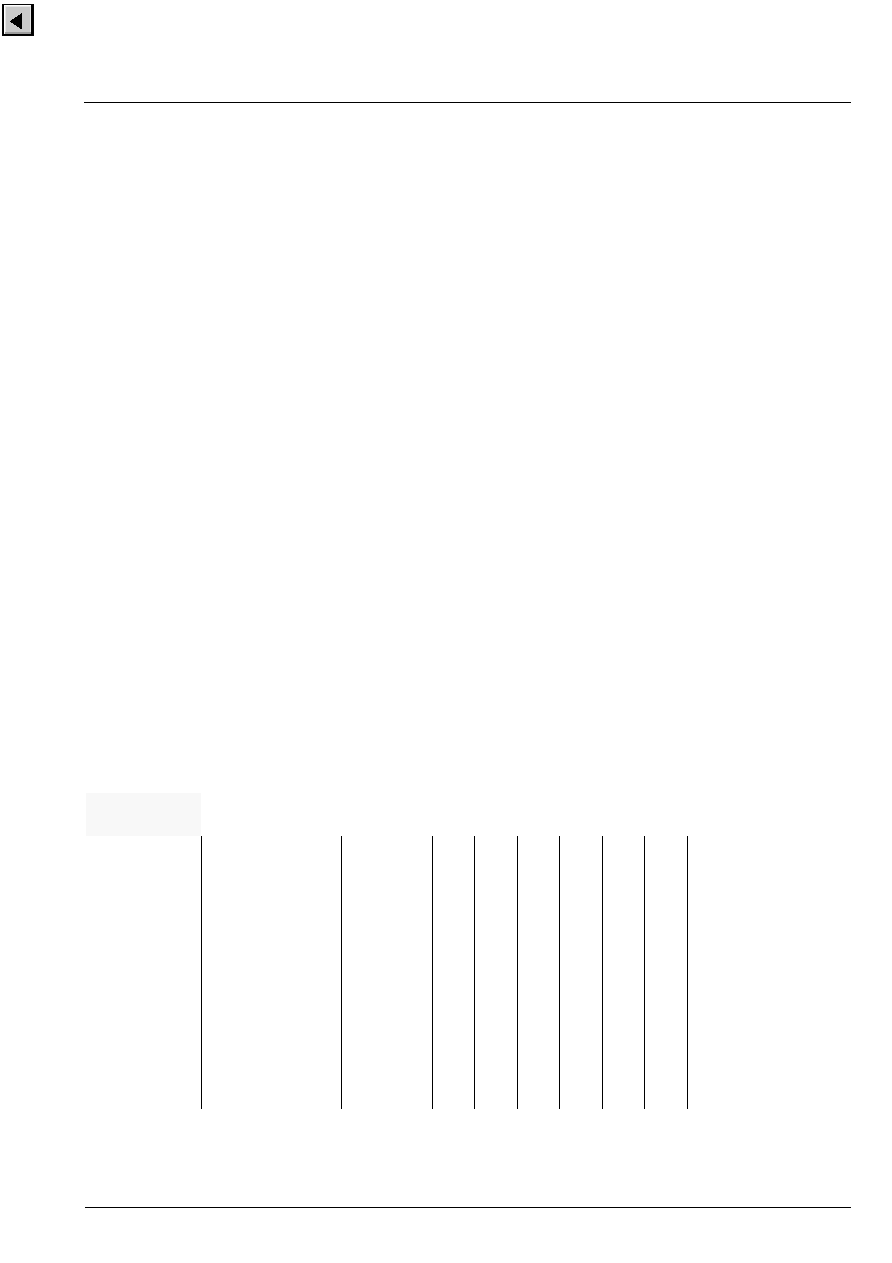
ADVANCE INFORMATION
VCT 38xxA
Micronas
7
Video/Controller/Teletext IC Family
Release Note: This data sheet describes functions
and characteristics of the VCT 38xxA-B2.
1. Introduction
The VCT 38xxA is an IC family of high-quality single-
chip TV processors. Modular design and a submicron
technology allow the economic integration of features
in all classes of TV sets. The VCT 38xxA family is
based on functional blocks contained and approved in
existing products like VDP 3120B, TPU 3050S, and
CCZ 3005K.
Each member of the family contains the entire video,
display and deflection processing for 4:3 and 16:9 50/
60-Hz TV sets. The integrated microcontroller is sup-
ported by a powerful OSD generator with integrated
teletext acquisition which can be upgraded with on-
chip page memory. With volume control and audio
input select the basic audio features for mono TV sets
are integrated. An overview of the VCT 38xxA single-
chip TV processor family is given in Fig. 1�1 on
page 7.
The VCT 38xxA family offers a rich feature set, cover-
ing the whole range of state-of-the-art 50/60-Hz TV
applications.
Fig. 1�1: VCT 38xxA family overview
A
d
ap
t
i
ve
C
o
m
b
F
i
l
t
er
Pa
n
o
r
a
m
a
S
c
a
l
e
r
P
i
ct
u
r
e
Imp
r
o
veme
n
t
s
(Color
T
r
a
n
s
i
e
n
t
Impr
o
v
.,
S
o
ft
L
i
m
i
te
r
,
Bl
a
c
k
-
L
e
v
e
l Ex
pa
nde
r
)
1
0
P
a
ge
T
e
let
x
t
VCT 38xxA
Family
VCT 3801A
e
x
t
.
P
r
og. M
e
mor
y
8
-
Bi
t
M
i
c
r
oc
ontr
o
l
l
e
r
9
6
kB R
O
M, 1
kB RAM
Fla
s
h Opt
i
o
n
Color
Dec
o
d
e
r
T
u
b
e
Contr
o
l
OSD Ge
ne
ra
tor
A
udio Contr
o
l
ex
t
.
P
a
g
e
M
e
m
o
r
y
VCT 3803A
VCT 3804A
VCT 3811A
VCT 3831A
VCT 3832A
VCT 3833A
VCT 3834A
PM
QFP1
2
8
PM
QFP1
2
8
VCT 3802A
1
P
a
g
e
T
e
let
x
t

VCT 38xxA
ADVANCE INFORMATION
8
Micronas
1.1. Features
1.1.1. Video Features
� four composite video inputs, two S-VHS inputs
� analog YC
r
C
b
input
� composite video monitor
� multistandard color decoder (1 crystal)
� multistandard sync decoder
� black-line detector
� adaptive 2H comb filter Y/C separator
� horizontal scaling (0.25 to 4)
� Panoramavision
� black-level expander
� dynamic peaking
� soft limiter (gamma correction)
� color transient improvement
� programmable RGB matrix
� analog RGB/Fastblank input
� half-contrast switch
� picture frame generator
� scan velocity modulation output
� high-performance H/V deflection
� angle and bow correction
� separate ADC for tube measurements
� EHT compensation
1.1.2. Microcontroller Features
� 8-bit, 10-MHz CPU (65C02)
� 96 kB program ROM on chip
� 1 kB program RAM on chip
� memory banking
� 16-input, 16-level interrupt controller
� patch modul for 10 ROM locations
� two 16-bit reloadable timers
� capture compare modul
� watchdog timer
� 14-bit PWM for voltage synthesis
� four 8-bit PWMs
� 10-bit ADC with 15:1 input MUX
� I
2
C bus master interface
� 24 programmable I/O ports
1.1.3. OSD Features
� 3 kB OSD RAM on chip
� WST level 1.5 compliant
� WST level 2 parallel attributes
� 32 foreground/background colors
� programmable color look-up table
� 1024 mask programmable characters
� 24 national languages
(Latin, Cyrillic, Greek, Arabic, Farsi, Hebrew)
� character matrix 8x8, 8x10, 8x13, 10x8, 10x10, 10x13
� vertical soft scroll
� 4-color mode for user font
1.1.4. Teletext Features
� four programmable video inputs
� acquisition is independent from display part
� adaptive data slicer
� signal quality detection
� WST, PDC, VPS, and WSS acquisition
� high-level command language
� EPG, FLOF, and TOP support
� 10 pages memory on chip
� up to 500 pages with external SRAM
1.1.5. Audio Features
� three mono inputs
� two mono outputs
� programmable channel select
� volume control for one mono channel
1.1.6. General Features
� submicron CMOS technology
� low-power standby mode
� single 20.25-MHz crystal
� 64-pin PSDIP package
� 128-pin PMQFP package
� emulator chip for software development

ADVANCE INFORMATION
VCT 38xxA
Micronas
9
1.2. Chip Architecture
Fig. 1�2: Block diagram of the VCT 38xxA (shaded blocks are optional)
Video
Front-end
Comb
Filter
Color
Decoder
Display
Processor
Video
Back-end
Panorama
Scaler
4
3
4
12
31
2
I
2
C Master
16 kB
Text RAM
3 kB
OSD
96 kB
CPU ROM
TPU
DMA
CPU
24 IO Ports
Watchdog
2 CapCom
2 Timer
15:1 Mux
10-bit ADC
8-bit PWM
Audio
3
2
Clock
Oscillator
1 kB
CPU RAM
XTAL1
XTAL2
VIN
AIN
Px
y
ADB, DB, CB
RGBOUT
RGBIN
VE
R
T
PR
O
T
HFLB
SE
N
S
E
I
2
C
XR
E
F
HOUT
VR
D
VR
T
SG
N
D
Color, Prio
MSync
I
2
C
VSUPAB
VS
U
PP1
GN
D
P
1
Reset
Logic
RESQ
VS
U
P
S
TEST
GNDAB
VS
U
P
A
F
VS
U
P
D
GND
A
F
GNDD
RS
W
2
GNDM
EW
8
14-bit PWM
2
2
3
CIN
SVM
V
i
deo
GNDS
CLK20
RDY
BE
24 kB
VCT 38xx
AOUT
VSync
VOUT
24 kB ROM
3 kB
OSD RAM
Pict.Improv.
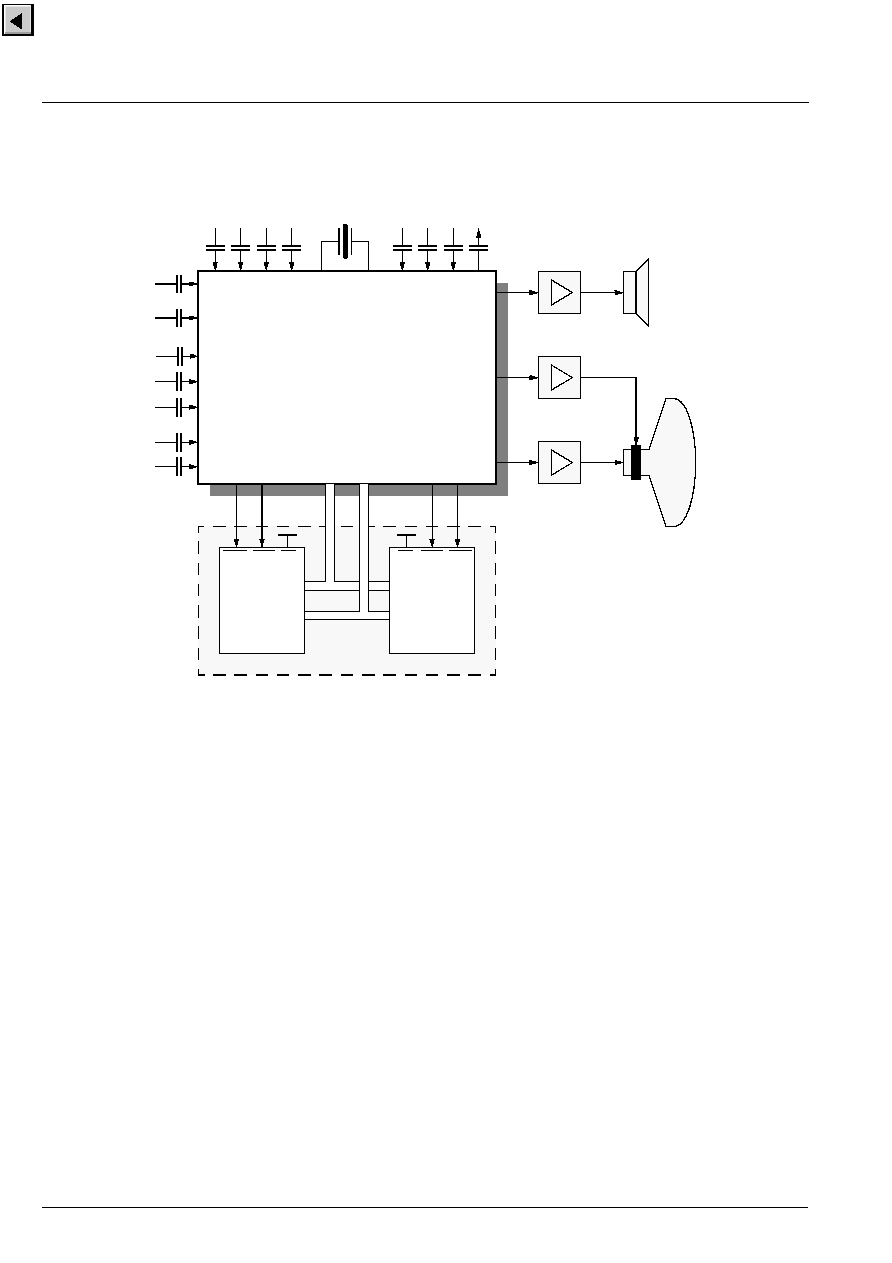
VCT 38xxA
ADVANCE INFORMATION
10
Micronas
1.3. System Application
Fig. 1�3: Single-chip TV with VCT 38xxA
VCT 38xxA
20.25 MHz
512 kB
SRAM
optional memory extension
Loudspeaker
Tuner/SCART/FrontAV
Anal
og Vi
deo
Analog Audio
CRT
Analog RGB
R
512 kB
ROM/
FLASH
CE
CE
OE2
WE2
ADB
DB
OE1 WE1
CVBS1
CVBS2
C
r
Y
C
b
C
Y
G
B
FB

ADVANCE INFORMATION
VCT 38xxA
Micronas
11
2. Video Processing
2.1. Introduction
The VCT 38xxA includes complete video, display, and
deflection processing. In the following sections the
video processing part of the VCT 38xxA will be named
VDP for short.
All processing is done digitally, the video front-end and
video back-end are interfacing to the analog world.
Most functions of the VDP can be controlled by soft-
ware via I
2
C bus slave interface (see Section 2.15. on
page 32).
2.2. Video Front-end
This block provides the analog interfaces to all video
inputs and mainly carries out analog-to-digital conver-
sion for the following digital video processing. A block
diagram is given in Fig. 2�1.
Most of the functional blocks in the front-end are digi-
tally controlled (clamping, AGC, and clock-DCO). The
control loops are closed by the Fast Processor (`FP')
embedded in the video decoder.
2.2.1. Input Selector
Up to seven analog inputs can be connected. Four
inputs are for input of composite video or S-VHS luma
signal. These inputs are clamped to the sync back
porch and are amplified by a variable gain amplifier.
Two chroma inputs can be used for connection of
S-VHS carrier-chrominance signal. These inputs are
internally biased and have a fixed gain amplifier. For
analog YC
r
C
b
signals (e.g. from DVD players) one of
the selected luminance inputs is used together with
CBIN and CRIN inputs.
2.2.2. Clamping
The composite video input signals are AC-coupled to
the IC. The clamping voltage is stored on the coupling
capacitors and is generated by digitally controlled cur-
rent sources. The clamping level is the back porch of
the video signal. S-VHS chrominance is also AC-cou-
pled. The input pin is internally biased to the center of
the ADC input range. The chrominance inputs for
YC
r
C
b
need to be AC-coupled by 220 nF clamping
capacitors. It is strongly recommended to use 5-MHz
anti-alias low-pass filters on each input. Each channel
is sampled at 10.125 MHz with a resolution of 8 bit and
a clamping level of 128.
2.2.3. Automatic Gain Control
A digitally working automatic gain control adjusts the
magnitude of the selected baseband by +6/�4.5 dB in
64 logarithmic steps to the optimal range of the ADC.
The gain of the video input stage including the ADC is
213 steps/V with the AGC set to 0 dB. The gain of the
chrominance path in the YC
r
C
b
mode is fix and
adapted to a nominal amplitude of 0.7 V
pp
. However, if
an overflow of the ADC occurs an extended signal
range from 1 V
pp
can be selected.
2.2.4. Analog-to-Digital Converters
Two ADCs are provided to digitize the input signals.
Each converter runs with 20.25 MHz and has 8 bit res-
olution. An integrated bandgap circuit generates the
required reference voltages for the converters. The two
ADCs are of a 2-stage subranging type.
Fig. 2�1: Video front-end
VIN2
VIN3
VIN4
CIN1
VIN1
Bias
ADC
ADC
Gain
Clamp
Inp
u
t
Frequency
Reference
Generation
DVCO
�
150
ppm
AGC
+6/�4.5 dB
digital CVBS or Luma
digital Chroma
System Clocks
20.25 MHz
CVBS/Y
CVBS/Y
CVBS/Y
CVBS/Y
Chroma
Mu
x
CIN2
Chroma
Clamp
CBIN
Chroma
CRIN
mux
VOUT
CVBS/Y
3
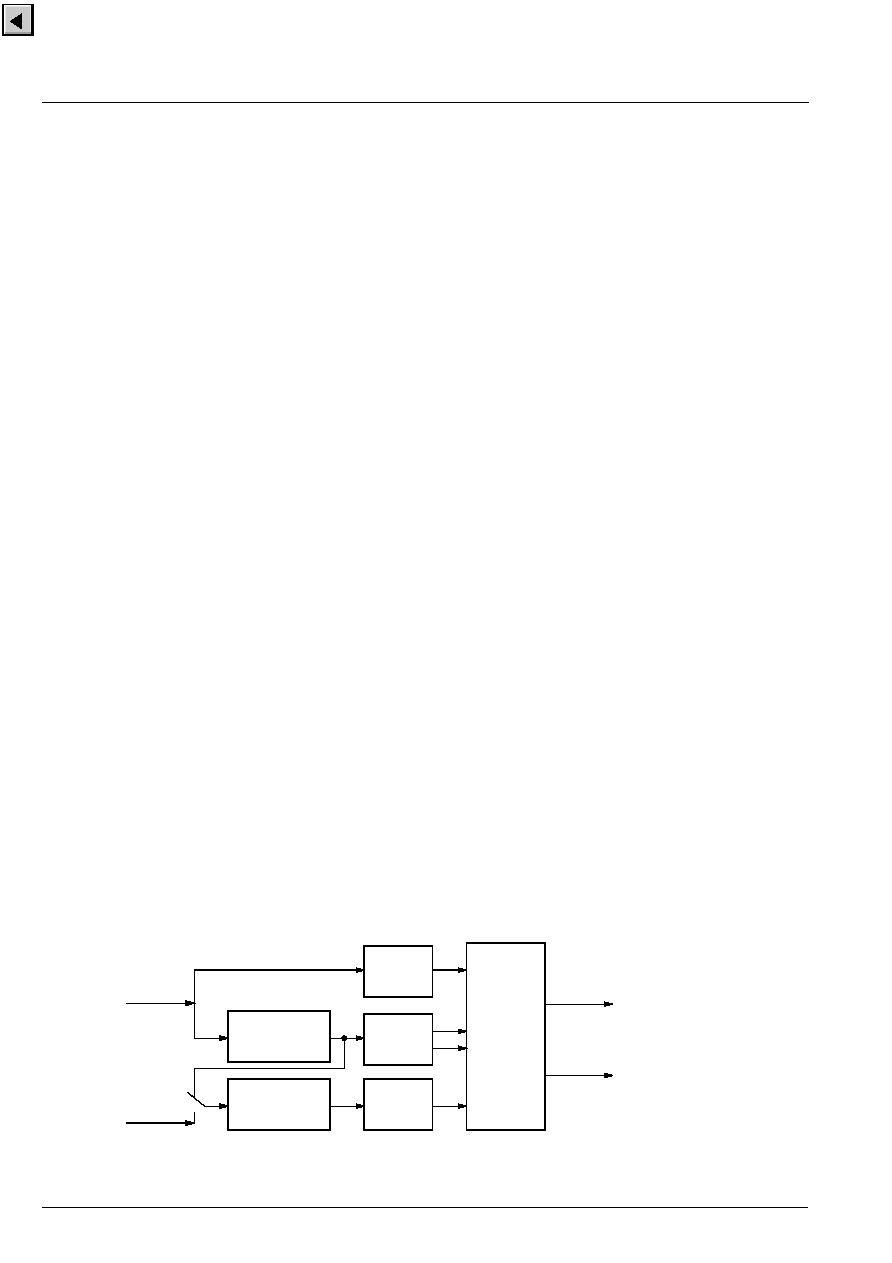
VCT 38xxA
ADVANCE INFORMATION
12
Micronas
2.2.5. Digitally Controlled Clock Oscillator
The clock generation is also a part of the analog front-
end. The crystal oscillator is controlled digitally by the
control processor. The clock frequency can be
adjusted within
�
150 ppm.
2.2.6. Analog Video Output
The input signal of the Luma ADC is available at the
analog video output pin. The signal at this pin must be
buffered by a source follower. The output voltage is
2 V, thus the signal can be used to drive a 75-
line.
The magnitude is adjusted with an AGC in 8 steps
together with the main AGC.
2.3. Adaptive Comb Filter
The adaptive comb filter is used for high-quality lumi-
nance/chrominance separation for PAL or NTSC sig-
nals. The comb filter improves the luminance resolu-
tion (bandwidth) and reduces interferences like
cross-luminance and cross-color artifacts. The adap-
tive algorithm can eliminate most of the mentioned
errors without introducing new artifacts or noise.
A block diagram of the comb filter is shown in Fig. 2�2.
The filter uses two line delays to process the informa-
tion of three adjacent video lines. To have a fixed
phase relationship of the color subcarrier in the three
channels, the system clock (20.25 MHz) is fractionally
locked to the color subcarrier. This allows the process-
ing of all color standards and substandards using a
single crystal frequency.
The CVBS signal in the three channels is filtered at the
subcarrier frequency by a set of bandpass/notch fil-
ters. The output of the three channels is used by the
adaption logic to select the weighting that is used to
reconstruct the luminance/chrominance signal from
the 4 bandpass/notch filter signals. By using soft mix-
ing of the 4 signals switching artifacts of the adaption
algorithm are completely suppressed.
The comb filter uses the middle line as reference,
therefore, the comb filter delay is one line. If the comb
filter is switched off, the delay lines are used to pass
the luma/ chroma signals from the A/D converters to
the luma/ chroma outputs. Thus, the comb filter delay
is always one line.
Various parameters of the comb filter are adjustable,
hence giving to the user the ability to adjust his own
desired picture quality.
Two parameters (KY, KC) set the global gain of luma
and chroma comb separately; these values directly
weigh the adaption algorithm output. In this way, it is
possible to obtain a luma/chroma separation ranging
from standard notch/bandpass to full comb decoding.
The parameter KB allows to choose between the two
proposed comb booster modes. This so-called feature
widely improves vertical high-to-low frequency transi-
tions areas, the typical example being a multiburst to
DC change. For KB=0, this improvement is kept mod-
erate, whereas, in case of KB=1, it is maximum, but
the risk to increase the "hanging dots" amount for
some given color transitions is higher.
Using the default setting, the comb filter has separate
luma and chroma decision algorithms; however, it is
possible to switch the chroma comb factor to the cur-
rent luma adaption output by setting CC to 1.
Another interesting feature is the programmable limita-
tion of the luma comb amount; proper limitation, asso-
ciated to adequate luma peaking, gives rise to an
enhanced 2-D resolution homogeneity. This limitation
is set by the parameter CLIM, ranging from 0 (no limi-
tation) to 31 (max. limitation).
The DAA parameter (1:off, 0:on) is used to disable/
enable a very efficient built-in "rain effect" suppressor;
many comb filters show this side effect which gives
some vertical correlation to a 2-D uniform random
area, due to the vertical filtering. This unnatural-look-
ing phenomenon is mostly visible on tuner images,
since they are always corrupted by some noise; and
this looks like rain.
Fig. 2�2: Block diagram of the adaptive comb filter (PAL mode)
1H Delay Line
1H Delay Line
CVBS Input
Chroma Input
Bandpass
Filter
Bandpass
Filter
Bandpass/
Notch
Filter
Lum
a /
Chr
o
ma
Mixer
s
Ada
p
t
i
on L
ogi
c
Luma Output
Chroma Output

ADVANCE INFORMATION
VCT 38xxA
Micronas
13
2.4. Color Decoder
In this block, the standard luma/chroma separation and
multi-standard color demodulation is carried out. The
color demodulation uses an asynchronous clock, thus
allowing a unified architecture for all color standards.
A block diagram of the color decoder is shown in Fig.
2�3. The luma as well as the chroma processing, is
shown here. The color decoder provides also some
special modes, e.g. wide band chroma format which is
intended for S-VHS wide bandwidth chroma.
If the adaptive comb filter is used for luma chroma sep-
aration, the color decoder uses the S-VHS mode pro-
cessing. The output of the color decoder is YC
r
C
b
in a
4:2:2 format.
Fig. 2�3: Color decoder
2.4.1. IF-Compensation
With off-air or mistuned reception, any attenuation at
higher frequencies or asymmetry around the color
subcarrier is compensated. Four different settings of
the IF-compensation are possible:
� flat (no compensation)
� 6 dB/octave
� 12 dB/octave
� 10 dB/MHz
The last setting gives a very large boost to high fre-
quencies. It is provided for SECAM signals that are
decoded using a SAW filter specified originally for the
PAL standard.
Fig. 2�4: Frequency response of chroma IF-com-
pensation
ColorPLL/ColorACC
1 H Delay
MUX
MU
X
CrossSwitch
Notch
Filter
Luma / CVBS
Luma
Chroma
Mixer
Low-pass Filter
Phase/Freq
Demodulator
ACC
Chroma
IF Compensation
DC-Reject

VCT 38xxA
ADVANCE INFORMATION
14
Micronas
2.4.2. Demodulator
The entire signal (which might still contain luma) is
now quadrature-mixed to the baseband. The mixing
frequency is equal to the subcarrier for PAL and NTSC,
thus achieving the chroma demodulation. For SECAM,
the mixing frequency is 4.286 MHz giving the quadra-
ture baseband components of the FM modulated
chroma. After the mixer, a low-pass filter selects the
chroma components; a downsampling stage converts
the color difference signals to a multiplexed half-rate
data stream.
The subcarrier frequency in the demodulator is gener-
ated by direct digital synthesis; therefore, substan-
dards such as PAL 3.58 or NTSC 4.43 can also be
demodulated.
2.4.3. Chrominance Filter
The demodulation is followed by a low-pass filter for
the color difference signals for PAL/NTSC. SECAM
requires a modified low-pass function with bell-filter
characteristic. At the output of the low-pass filter, all
luma information is eliminated.
The low-pass filters are calculated in time multiplex for
the two color signals. Three bandwidth settings (nar-
row, normal, broad) are available for each standard.
For PAL/NTSC, a wide band chroma filter can be
selected. This filter is intended for high bandwidth
chroma signals, e.g. a non-standard wide bandwidth
S-VHS signal.
Fig. 2�5: Frequency response of chroma filters
2.4.4. Frequency Demodulator
The frequency demodulator for demodulating the
SECAM signal is implemented as a CORDIC structure.
It calculates the phase and magnitude of the quadra-
ture components by coordinate rotation.
The phase output of the CORDIC processor is differ-
entiated to obtain the demodulated frequency. After
the deemphasis filter, the Dr and Db signals are scaled
to standard C
r
C
b
amplitudes and fed to the crossover
switch.
2.4.5. Burst Detection / Saturation Control
In the PAL/NTSC-system the burst is the reference for
the color signal. The phase and magnitude outputs of
the CORDIC are gated with the color key and used for
controlling the phase-locked-loop (APC) of the demod-
ulator and the automatic color control (ACC) in PAL/
NTSC.
The ACC has a control range of +30...
-
6 dB.
Color saturation can be selected once for all color
standards. In PAL/NTSC it is used as reference for the
ACC. In SECAM the necessary gains are calculated
automatically.
For SECAM decoding, the frequency of the burst is
measured. Thus, the current chroma carrier frequency
can be identified and is used to control the SECAM
processing. The burst measurements also control the
color killer operation; they are used for automatic stan-
dard detection as well.
2.4.6. Color Killer Operation
The color killer uses the burst-phase/burst-frequency
measurement to identify a PAL/NTSC or SECAM color
signal. For PAL/NTSC, the color is switched off (killed)
as long as the color subcarrier PLL is not locked. For
SECAM, the killer is controlled by the toggle of the
burst frequency. The burst amplitude measurement is
used to switch-off the color if the burst amplitude is
below a programmable threshold. Thus, color will be
killed for very noisy signals. The color amplitude killer
has a programmable hysteresis.
PAL/NTSC
SECAM
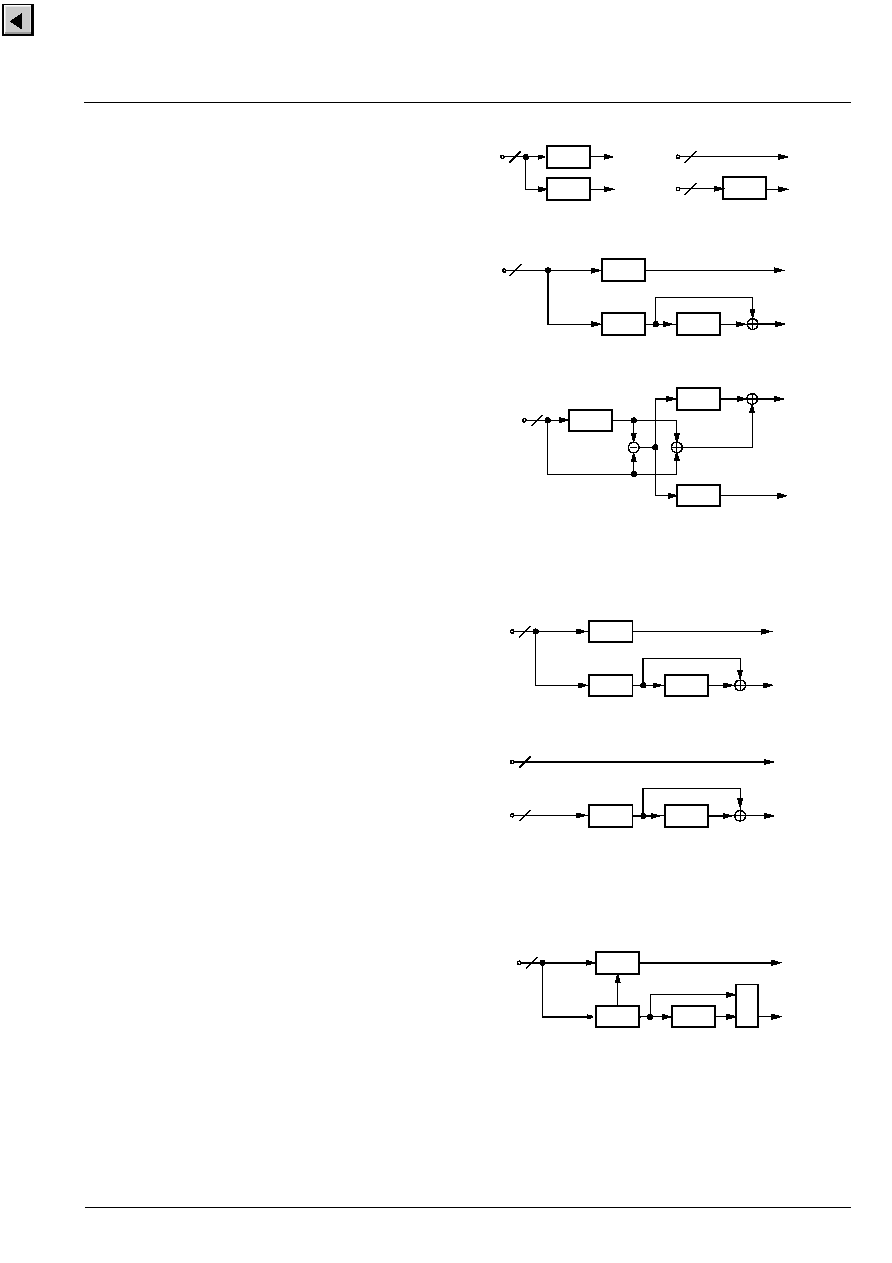
ADVANCE INFORMATION
VCT 38xxA
Micronas
15
2.4.7. Automatic Standard Recognition
The burst-frequency measurement is also used for
automatic standard recognition (together with the sta-
tus of horizontal and vertical locking) thus allowing a
completely independent search of the line and color
standard of the input signal. The following standards
can be distinguished:
PAL B,G,H,I; NTSC M; SECAM; NTSC 44; PAL M;
PAL N; PAL 60
For a preselection of allowed standards, the recogni-
tion can be enabled/disabled via I
2
C bus for each stan-
dard separately.
If at least one standard is enabled, the VCT 38xxA reg-
ularly checks the horizontal and vertical locking of the
input signal and the state of the color killer. If an error
exists for several adjacent fields a new standard
search is started. Depending on the measured line
number and burst frequency, the current standard is
selected.
For error handling the recognition algorithm delivers
the following status information:
� search active (busy)
� search terminated, but failed
� found standard is disabled
� vertical standard invalid
� no color found
2.4.8. PAL Compensation/1-H Comb Filter
The color decoder uses one fully integrated delay line.
Only active video is stored.
The delay line application depends on the color stan-
dard:
� NTSC:
1-H comb filter or color compensation
� PAL:
color compensation
� SECAM: crossover switch
In the NTSC compensated mode, (Fig. 2�6c), the color
signal is averaged for two adjacent lines. Thus,
cross-color distortion and chroma noise is reduced. In
the NTSC comb filter mode, (Fig. 2�6d), the delay line
is in the composite signal path, thus allowing reduction
of cross-color components, as well as cross-lumi-
nance. The loss of vertical resolution in the luminance
channel is compensated by adding the vertical detail
signal with removed color information.
Fig. 2�6: NTSC color decoding options
Fig. 2�7: PAL color decoding options
Fig. 2�8: SECAM color decoding
chroma
Notch
filter
8
Chroma
Process.
CVBS
Y
1 H
Delay
8
CVBS
Chroma
Process.
Notch
filter
Y
8
Chroma
Process.
Luma
Y
8
C C
r b
C C
r b
C C
r b
Notch
filter
1 H
Delay
8
Chroma
Process.
CVBS
Y
C C
r b
d) comb filter
c) compensated
a) conventional
b) S-VHS
Chroma
Notch
filter
1 H
Delay
8
Chroma
Process.
CVBS
Y
8
Chroma
Process.
Luma
Y
8
1 H
Delay
C C
r b
C C
r b
a) conventional
b) S-VHS
MUX
Notch
filter
1 H
Delay
8
Chroma
Process.
CVBS
Y
C C
r b

VCT 38xxA
ADVANCE INFORMATION
16
Micronas
2.4.9. Luminance Notch Filter
If a composite video signal is applied, the color infor-
mation is suppressed by a programmable notch filter.
The position of the filter center frequency depends on
the subcarrier frequency for PAL/NTSC. For SECAM,
the notch is directly controlled by the chroma carrier
frequency. This considerably reduces the cross-lumi-
nance. The frequency responses for all three systems
are shown in Fig. 2�9.
Fig. 2�9: Frequency responses of the luma
notch filter for PAL, NTSC, SECAM
2.4.10.Skew Filtering
The system clock is free-running and not locked to the
TV line frequency. Therefore, the ADC sampling pat-
tern is not orthogonal. The decoded YC
r
C
b
signals are
converted to an orthogonal sampling raster by the
skew filters, which are part of the scaler block.
The skew filters allow the application of a group delay
to the input signals without introducing waveform or
frequency response distortion.
The amount of phase shift of this filter is controlled by
the horizontal PLL1. The accuracy of the filters is 1/32
clocks for luminance and 1/4 clocks for chroma. Thus
the 4:2:2 YC
r
C
b
data is in an orthogonal pixel format
even in the case of nonstandard input signals such as
VCR.
2.5. Horizontal Scaler
The 4:2:2 YC
r
C
b
signal from the color decoder is pro-
cessed by the horizontal scaler. The scaler block
allows a linear or nonlinear horizontal scaling of the
input video signal in the range of 0.25 to 4. Nonlinear
scaling, also called "Panoramavision", provides a geo-
metrical distortion of the input picture. It is used to fit a
picture with 4:3 format on a 16:9 screen by stretching
the picture geometry at the borders. Also, the inverse
effect can be produced by the scaler. A summary of
scaler modes is given in Table 2�1.
The scaler contains a programmable decimation filter,
a 1-line FIFO memory, and a programmable interpola-
tion filter. The scaler input filter is also used for pixel
skew correction (see Section 2.4.10. on page 16). The
decimator/interpolator structure allows optimal use of
the FIFO memory. The controlling of the scaler is done
by the internal Fast Processor.
2.6. Black-line Detector
In case of a letterbox format input video, e.g. Cinema-
scope, PAL+ etc., black areas at the upper and lower
part of the picture are visible. It is suitable to remove or
reduce these areas by a vertical zoom and/or shift
operation.
The VCT 38xxA supports this feature by a letterbox
detector. The circuitry detects black video lines by
measuring the signal amplitude during active video.
For every field the number of black lines at the upper
and lower part of the picture are measured, compared
to the previous measurement and the minima are
stored in the I
2
C-register BLKLIN. To adjust the picture
dB
MHz
10
0
2
4
6
8
10
0
�10
�20
�30
�40
dB
MHz
10
0
2
4
6
8
10
0
�10
�20
�30
�40
PAL/NTSC notch filter
SECAM notch filter
Table 2�1: Scaler modes
Mode
Scale
Factor
Description
Compression
4:3
16:9
0.75
linear
4:3 source displayed on
a 16:9 tube,
with side panels
Panorama
4:3
16:9
non-
linear
compr
4:3 source displayed on
a 16:9 tube,
Borders distorted
Zoom
4:3
4:3
1.33
linear
Letterbox source (PAL+)
displayed on a 4:3 tube,
vertical overscan with
cropping of side panels
Panorama
4:3
4:3
non-
linear
zoom
Letterbox source (PAL+)
displayed on a 4:3 tube,
vertical overscan, bor-
ders distorted, no crop-
ping

ADVANCE INFORMATION
VCT 38xxA
Micronas
17
amplitude, the external controller reads this register,
calculates the vertical scaling coefficient and transfers
the new settings, e.g. vertical sawtooth parameters,
horizontal scaling coefficient etc., to the VCT 38xxA.
Letterbox signals containing logos on the left or right
side of the black areas are processed as black lines,
while subtitles, inserted in the black areas, are pro-
cessed as non-black lines. Therefore, the subtitles are
visible on the screen. To suppress the subtitles, the
vertical zoom coefficient is calculated by selecting the
larger number of black lines only. Dark video scenes
with a low contrast level compared to the letterbox area
are indicated by the BLKPIC bit.
2.7. Test Pattern Generator
The YC
r
C
b
outputs can be switched to a test mode
where YC
r
C
b
data are generated digitally in the
VCT 38xxA. Test patterns include luma/chroma ramps
and flat fields.
2.8. Video Sync Processing
Fig. 2�10 shows a block diagram of the front-end sync
processing. To extract the sync information from the
video signal, a linear phase low-pass filter eliminates
all noise and video contents above 1 MHz. The sync is
separated by a slicer; the sync phase is measured. A
variable window can be selected to improve the noise
immunity of the slicer. The phase comparator mea-
sures the falling edge of sync, as well as the integrated
sync pulse.
The sync phase error is filtered by a phase-locked loop
that is computed by the FP. All timing in the front-end is
derived from a counter that is part of this PLL, and it
thus counts synchronously to the video signal.
A separate hardware block measures the signal back
porch and also allows gathering the maximum/mini-
mum of the video signal. This information is processed
by the FP and used for gain control and clamping.
For vertical sync separation, the sliced video signal is
integrated. The FP uses the integrator value to derive
vertical sync and field information.
The information extracted by the video sync process-
ing is multiplexed onto the hardware front sync signal
(FSY) and is distributed to the rest of the video pro-
cessing system.
The data for the vertical deflection, the sawtooth, and
the East-West correction signal is calculated by the
VCT 38xxA. The data is buffered in a FIFO and trans-
ferred to the back-end by a single wire interface.
Frequency and phase characteristics of the analog
video signal are derived from PLL1. The results are fed
to the scaler unit for data interpolation and orthogonal-
ization and to the clock synthesizer for line-locked
clock generation. Horizontal and vertical syncs are
latched with the line-locked clock.
Fig. 2�10: Sync separation block diagram
Phase
Separator
&
Low-pass
counter
Front-end
Timing
Front Sync
low-pass
1 MHz
&
sync slicer
Horizontal
Sync
Separation
Vertical
Sync
Separation
FIFO
Sawtooth
video
input
Skew
Front
Sync
Generator
Vertical
Serial
Data
Vertical
Sawtooth
E/W
Parabola
Calculation
clamping, colorkey, FIFO_write
PLL1
Clamp &
Signal
Meas.
Vblank
Field
Clock
Synthesizer
Syncs
Clock
H/V Syncs
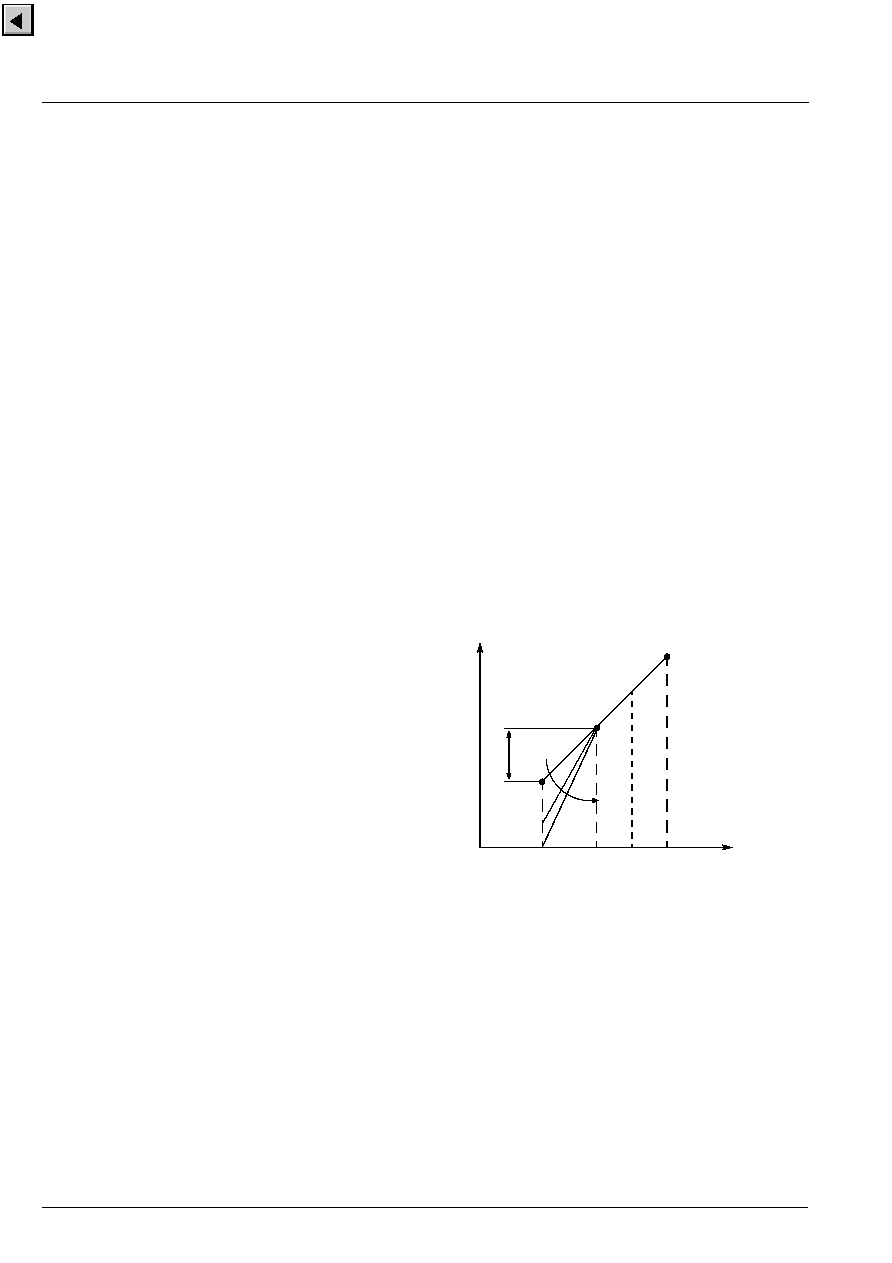
VCT 38xxA
ADVANCE INFORMATION
18
Micronas
2.9. Macrovision Detection
Video signals from Macrovision encoded VCR tapes
are decoded without loss of picture quality. However, it
might be necessary in some applications to detect the
presence of Macrovision encoded video signals. This
is possible by reading the Macrovision status register
(FP-RAM 0x170).
Macrovision encoded video signals typically have AGC
pulses and pseudo sync pulses added during VBI. The
amplitude of the AGC pulses is modulated in time. The
Macrovision detection logic measures the VBI lines
and compares the signal against thresholds.
The window wherein the video lines are checked for
Macrovision pulses can be defined in terms of start
and stop line (e.g. 6-15 for NTSC).
2.10.Display Processing
In the display processing the conversion from digital
YC
r
C
b
to analog RGB is carried out. A block diagram is
shown in Fig. 2�18 on page 24. In the luminance pro-
cessing path, contrast and brightness adjustments and
a variety of features, such as black-level expansion,
dynamic peaking and soft limiting, are provided. In the
chrominance path, the C
r
C
b
signals are converted to
4:4:4 format and filtered by a color transient improve-
ment circuit. The YC
r
C
b
signals are converted by a
programmable matrix to RGB color space.
The display processor provides separate control set-
tings for two pictures, i.e. different coefficients for a
`main' and a `side' picture.
The digital OSD insertion circuit allows the insertion of
a 5-bit OSD signal. The color space for this signal is
controlled by a partially programmable color look-up
table (CLUT) and contrast adjustment.
The OSD signals and the display clock are synchro-
nized to the horizontal flyback. For the display clock, a
gate delay phase shifter is used. In the analog back-
end, three 10-bit digital-to-analog converters provide
the analog output signals.
2.10.1.Luma Contrast Adjustment
The contrast of the luminance signal can be adjusted
by multiplication with a 6-bit contrast value. The con-
trast value corresponds to a gain factor from 0 to 2,
where the value 32 is equivalent to a gain of 1. The
contrast can be adjusted separately for main picture
and side picture.
2.10.2.Black-Level Expander
The black-level expander enhances the contrast of the
picture. Therefore the luminance signal is modified
with an adjustable, non-linear function. Dark areas of
the picture are changed to black, while bright areas
remain unchanged. The advantage of this black-level
expander is that the black expansion is performed only
if it will be most noticeable to the viewer.
The black-level expander works adaptively. Depending
on the measured amplitudes `L
min
' and `L
max
' of the
low-pass-filtered luminance and an adjustable coeffi-
cient BTLT, a tilt point `L
t
' is established by
L
t
= L
min
+ BTLT (L
max
- L
min
).
Above this value there is no expansion, while all lumi-
nance values below this point are expanded according
to:
L
out
= L
in
+ BAM
(L
in
- L
t
)
A second threshold, L
tr
, can be programmed, above
which there is no expansion. The characteristics of the
black-level expander are shown in Fig. 2�11and Fig.
2�12.
Fig. 2�11: Characteristics of the black-level expander
The tilt point L
t
is a function of the dynamic range of
the video signal. Thus, the black-level expansion is
only performed when the video signal has a large
dynamic range. Otherwise, the expansion to black is
zero. This allows the correction of the characteristics of
the picture tube.
L
min
BTLT
BAM
L
t
L
tr
L
max
L
tr
BTHR
L
in
L
out

ADVANCE INFORMATION
VCT 38xxA
Micronas
19
Fig. 2�12: Black-level expansion
a) luminance input
b) luminance input and output
2.10.3.Dynamic Peaking
Especially with decoded composite signals and notch
filter luminance separation, as input signals, it is nec-
essary to improve the luminance frequency character-
istics. With transparent, high-bandwidth signals, it is
sometimes desirable to soften the image.
In the VCT 38xxA, the luma response is improved by
`dynamic' peaking. The algorithm has been optimized
regarding step and frequency response. It adapts to
the amplitude of the high-frequency part. Small AC
amplitudes are processed, while large AC amplitudes
stay nearly unmodified.
The dynamic range can be adjusted from
-
14 to
+
14 dB for small high-frequency signals. There is sep-
arate adjustment for signal overshoot and for signal
undershoot. For large signals, the dynamic range is
limited by a non-linear function that does not create
any visible alias components. The peaking can be
switched over to "softening" by inverting the peaking
term by software.
The center frequency of the peaking filter is switchable
from 2.5 MHz to 3.2 MHz. For S-VHS and for notch filter
color decoding, the total system frequency responses
for both PAL and NTSC are shown in Fig. 2�14.
Transients, produced by the dynamic peaking when
switching video source signals, can be suppressed via
the priority bus.
Fig. 2�13: Dynamic peaking frequency response
a)
b)
L
min
L
t
L
max
L
t
dB
MHz
20
5
�5
�10
�15
�20
0
2
4
6
8
10
15
10
0
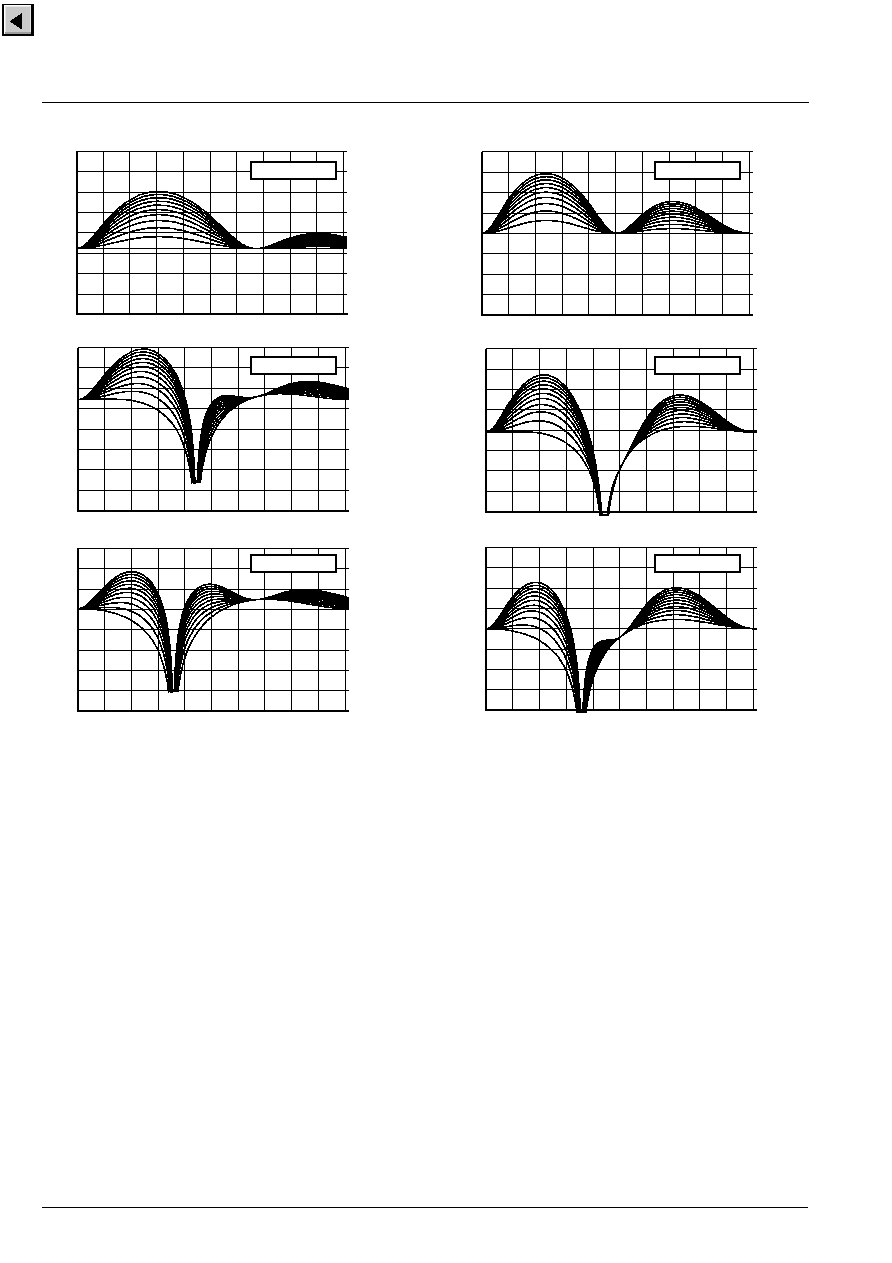
VCT 38xxA
ADVANCE INFORMATION
20
Micronas
Fig. 2�14: Total frequency response for peaking filter and S-VHS, PAL, NTSC
dB
MHz
20
5
-5
-10
-15
-20
0
2
4
6
8
10
15
10
0
dB
MHz
20
5
-5
-10
-15
-20
0
2
4
6
8
10
15
10
0
dB
MHz
20
5
-5
-10
-15
-20
0
2
4
6
8
10
15
10
0
dB
MHz
20
5
-5
-10
-15
-20
0
2
4
6
8
10
15
10
0
dB
MHz
20
5
-5
-10
-15
-20
0
2
4
6
8
10
15
10
0
dB
MHz
20
5
-5
-10
-15
-20
0
2
4
6
8
10
15
10
0
CF=2.5 MHz
CF=2.5 MHz
CF=2.5 MHz
CF=3.2 MHz
CF=3.2 MHz
CF=3.2 MHz
NTSC
PAL/SECAM
S-VHS

ADVANCE INFORMATION
VCT 38xxA
Micronas
21
2.10.4.Digital Brightness Adjustment
The DC-level of the luminance signal can be adjusted
by adding an 8-bit number in the luminance signal path
in front of the softlimiter.
With a contrast adjustment of 32 (gain
+
1) the signal
can be shifted by 100 %. After the brightness addition,
the negative going signals are limited to zero. It is
desirable to keep a small positive offset with the signal
to prevent undershoots produced by the peaking from
being cut. The digital brightness adjustment works
separately for main and side picture.
2.10.5.Soft Limiter
The dynamic range of the processed luma signal must
be limited to prevent the CRT from overload. An appro-
priate headroom for contrast, peaking and brightness
can be adjusted by the TV manufacturer according to
the CRT characteristics. All signals above this limit will
be `soft'-clipped. A characteristic diagram of the soft
limiter is shown in Fig. 2�15. The total limiter consists
of three parts:
Part 1 includes adjustable tilt point and gain. The gain
before the tilt value is 1. Above the tilt value, a part
(0...15/16) of the input signal is subtracted from the
input signal itself. Therefore, the gain is adjustable
from 16/16 to 1/16, when the slope value varies from
0 to 15. The tilt value can be adjusted from 0 to 511.
Part 2 has the same characteristics as part 1. The sub-
tracting part is also relative to the input signal, so the
total differential gain will become negative if the sum of
slope 1 and slope 2 is greater than 16 and the input
signal is above the both tilt values (see characteris-
tics).
Finally, the output signal of the soft limiter will be
clipped by a hard limiter adjustable from 256 to 511.
2.10.6.Chroma Interpolation
A linear phase interpolator is used to convert the
chroma sampling rate from 10.125 MHz (4:2:2) to
20.25 MHz (4:4:4). All further processing is carried out
at the full sampling rate.
Fig. 2�15: Characteristic of soft limiter A and B and hard limiter
2.10.7.Chroma Transient Improvement
The intention of this block is to enhance the chroma
resolution. A correction signal is calculated by differen-
tiation of the color difference signals. The differentia-
tion can be selected according to the signal bandwidth,
e.g. for PAL/NTSC/SECAM or digital component sig-
nals, respectively. The amplitude of the correction sig-
nal is adjustable. Small noise amplitudes in the correc-
tion signal are suppressed by an adjustable coring
circuit. To eliminate `wrong colors', which are caused
by over and undershoots at the chroma transition, the
sharpened chroma signals are limited to a proper
value automatically.
0
100
200
300
400
500
600
700
800
900
1023
Calculation Example for the
Softlimiter Input Amplitude.
(The real signal processing in
the limiter is 2 bit more than
described here)
Y Input
16...235 (ITUR)
Black Level
16 (constant)
Contrast 63
Dig. Brightness
20
BLE
off
Peaking off
Limiter input signal:
(Yin-Black Level)
Contr./32 + Brightn.
(235-16)
63/32 + 20 = 451
0
2
4
6
8
10
12
14
slope 2
[0...15]
0
2
4
6
8
10
12
14
Hard limiter
range=
256...511
slope 1
[0...15]
tilt 1 [ 0...511]
tilt 2 [ 0...511]
100
200
300
400
511
Output
0
Part 1
Part 2
Limiter Input
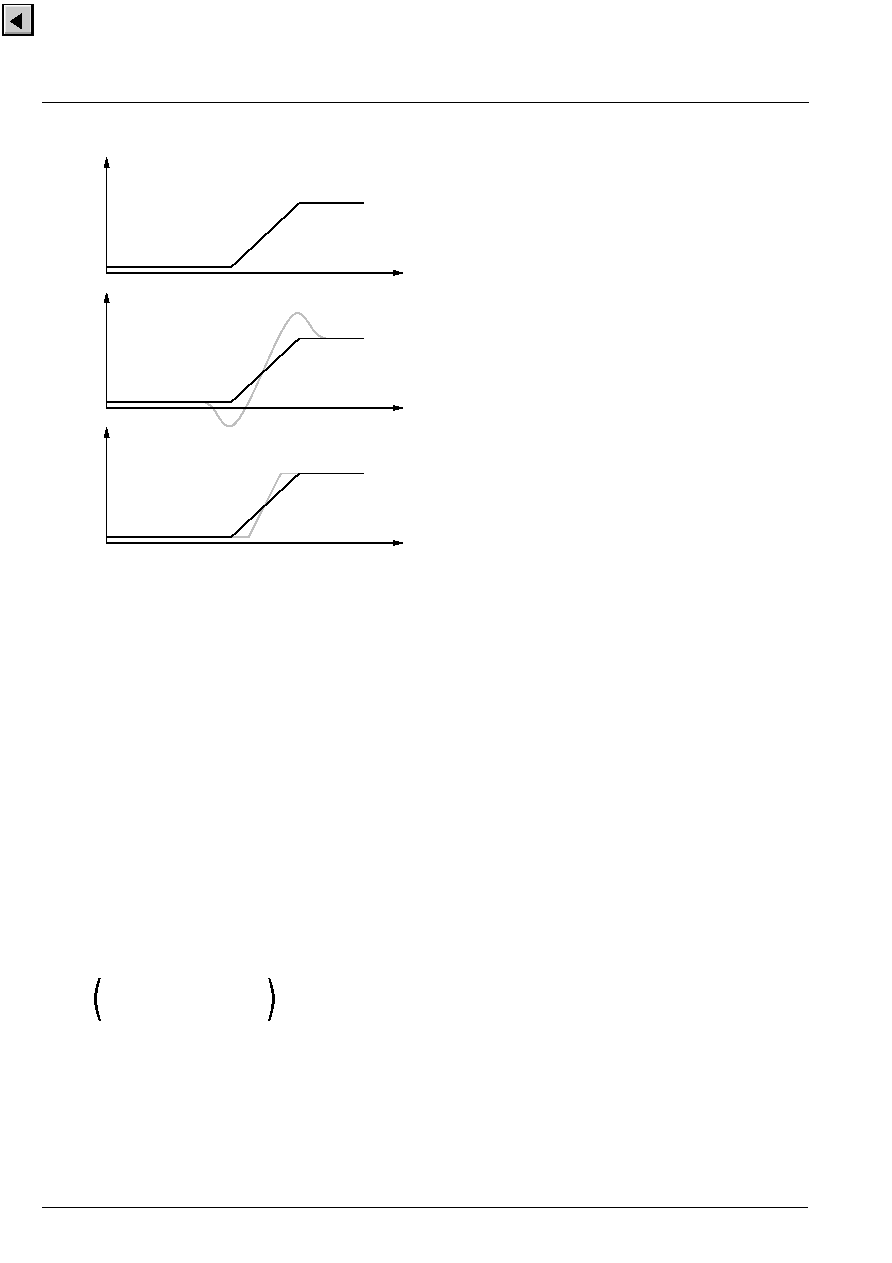
VCT 38xxA
ADVANCE INFORMATION
22
Micronas
Fig. 2�16: Digital color transient improvement
2.10.8.Inverse Matrix
A 6-multiplier matrix transcodes the C
r
and C
b
signals
to R-Y, B-Y, and G-Y. The multipliers are also used to
adjust color saturation in the range of 0 to 2. The coef-
ficients are signed and have a resolution of 9 bits.
There are separate matrix coefficients for main and
side pictures. The matrix computes:
R
-
Y
=
MR1*C
b
+
MR2*C
r
G
-
Y
=
MG1*C
b
+
MR2*C
r
B
-
Y
=
MB1*C
b
+
MR2*C
r
The initialization values for the matrix are computed
from the standard ITUR (CCIR) matrix:
For a contrast setting of CTM
+
32, the matrix values
are scaled by a factor of 64 (see Table 2�4 on
page 34).
2.10.9.RGB Processing
After adding the post-processed luma, the digital RGB
signals are limited to 10 bits. Three multipliers are
used to digitally adjust the white drive. Using the same
multipliers an average beam current limiter is imple-
mented (see Section 2.11.1. on page 25).
2.10.10.OSD Color Look-up Table
The VCT 38xxA has five input lines for an OSD signal.
This signal forms a 5-bit address for a color look-up
table (CLUT). The CLUT is a memory with 32 words
where each word holds a RGB value.
Bits 0 to 3 (bit 4
=
0) form the addresses for the ROM
part of the OSD, which generates full RGB signals (bit
0 to 2) and half-contrast RGB signals (bit 3).
Bit 4 addresses the RAM part of the OSD with 16
freely programmable colors, addressable with bit 0 to
3. The programming is done via the I
2
C bus.
The amplitude of the CLUT output signals can be
adjusted separately for R, G, and B via the I
2
C bus.
The switchover between video RGB and OSD RGB is
done via the priority decoder.
2.10.11.Picture Frame Generator
When the picture does not fill the total screen (height
or width too small) it is surrounded with black areas.
These areas (and more) can be colored with the pic-
ture frame generator. This is done by switching over
the RGB signal from the matrix to the signal from the
OSD color look-up table.
The width of each area (left, right, upper, lower) can be
adjusted separately. The generator starts on the right,
respectively lower side of the screen and stops on the
left, respectively upper side of the screen. This means,
it runs during horizontal, respectively vertical flyback.
The color of the complete border can be stored in the
programmable OSD color look-up table in a separate
address. The format is 3 x 4-bit RGB. The contrast can
be adjusted separately.
The picture frame generator includes a priority master
circuit. Its priority is programmable and the border is
generated only if the priority is higher than the priority
of the other sources (video/OSD). Therefore, the bor-
der can be underlay or overlay depending on the pic-
ture source.
a) C
r
C
b
input of DTI
b) C
r
C
b
input
+
correction signal
c) sharpened and limited C
r
C
b
t
t
t
C
r
in
C
b
in
a)
b)
Ampl.
C
r
out
C
b
out
c)
R
G
B
=
1
1
1
0
-
0.345
1.773
1.402
-
0.713
0
Y
C
b
C
r
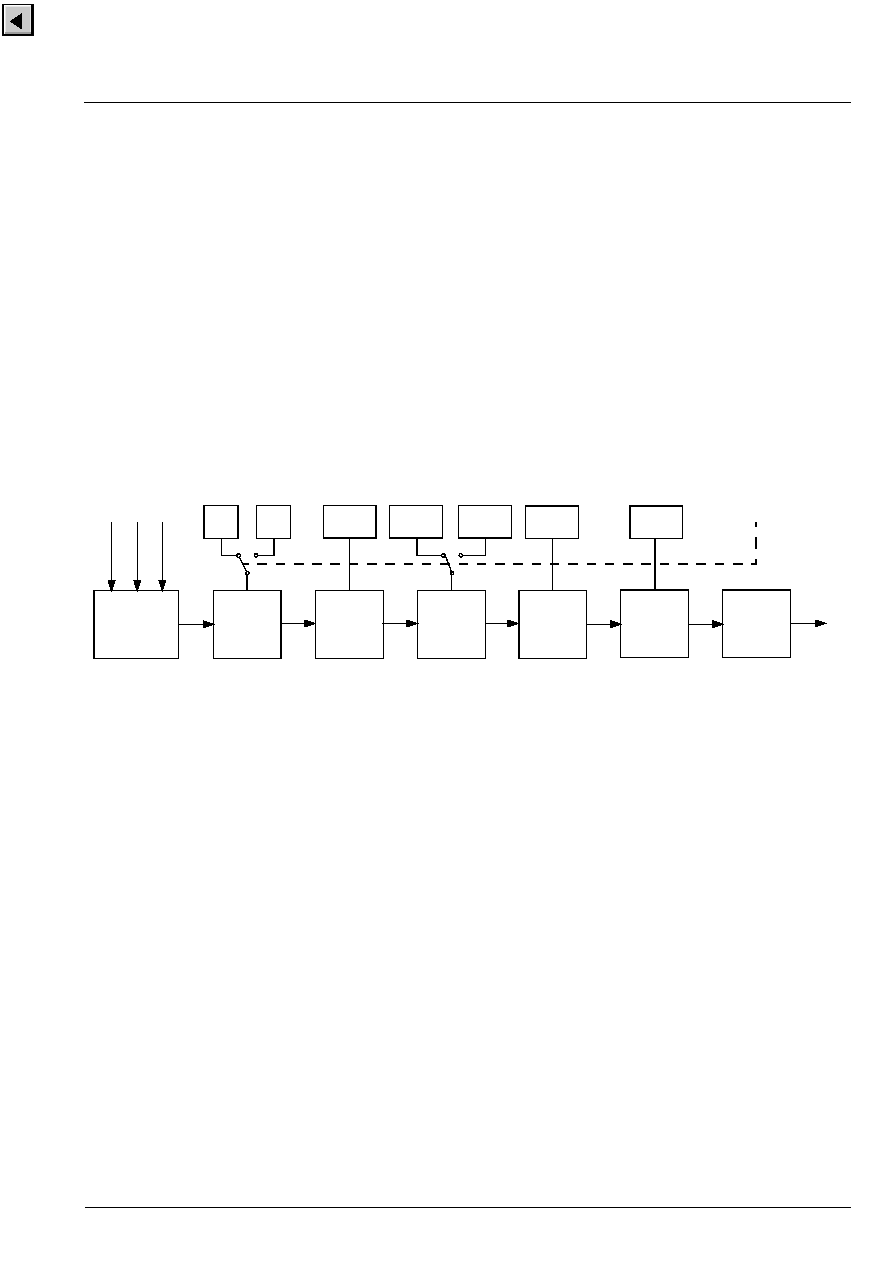
ADVANCE INFORMATION
VCT 38xxA
Micronas
23
2.10.12.Priority Decoder
The priority decoder selects the picture source
depending on the programmed priorities. Up to eight
levels can be selected for OSD and the picture frame �
where 0 is the highest. The video source always has
the lowest priority. A 5-bit information is attached to
each priority (see Table 2�4 on page 34). These bits
are programmable via the I
2
C bus and have the follow-
ing meanings:
� one of two contrast, brightness and matrix values for
main and side picture
� RGB from video signal or color look-up table
� disable/enable black-level expander
� disable/enable peaking transient suppression when
signal is switched
� disable/enable analog Fast-Blank input
2.10.13.Scan Velocity Modulation
The RGB input signal of the SVM is converted to Y in a
simple matrix. Then the Y signal is differentiated by a
filter of the transfer function 1-Z
-N
, where N is program-
mable from 1 to 6. With a coring, some noise can be
suppressed. This is followed by a gain adjustment and
an adjustable limiter. The analog output signal is gen-
erated by an 8-bit D/A converter.
The signal delay can be adjusted by
�
3.5 clocks in
half-clock steps. For the gain and filter adjustment
there are two parameter sets. The switching between
these two sets is done with the same RGB switch sig-
nal that is used for switching between video-RGB and
OSD-RGB for the RGB outputs (see Fig. 2�17).
Fig. 2�17: SVM Block diagram
2.10.14.Display Phase Shifter
A phase shifter is used to partially compensate the
phase differences between the video source and the
flyback signal. By using the described clock system,
this phase shifter works with an accuracy of approxi-
mately 1 ns. It has a range of 1 clock period which is
equivalent to
�
24.7 ns at 20.25 MHz. The large
amount of phase shift (full clock periods) is realized in
the front-end circuit.
N1
N2
Coring
Gain1
Gain2
Limiter
Limit
Delay
RGB Switch
R
G
B
Matrix and
Shaping
Modulation
Notch
Differen-
tiator
1-Z
-Nx
Coring
adjustment
Gain
adjustment
Delay
adjustment
D/A
Converter
Output
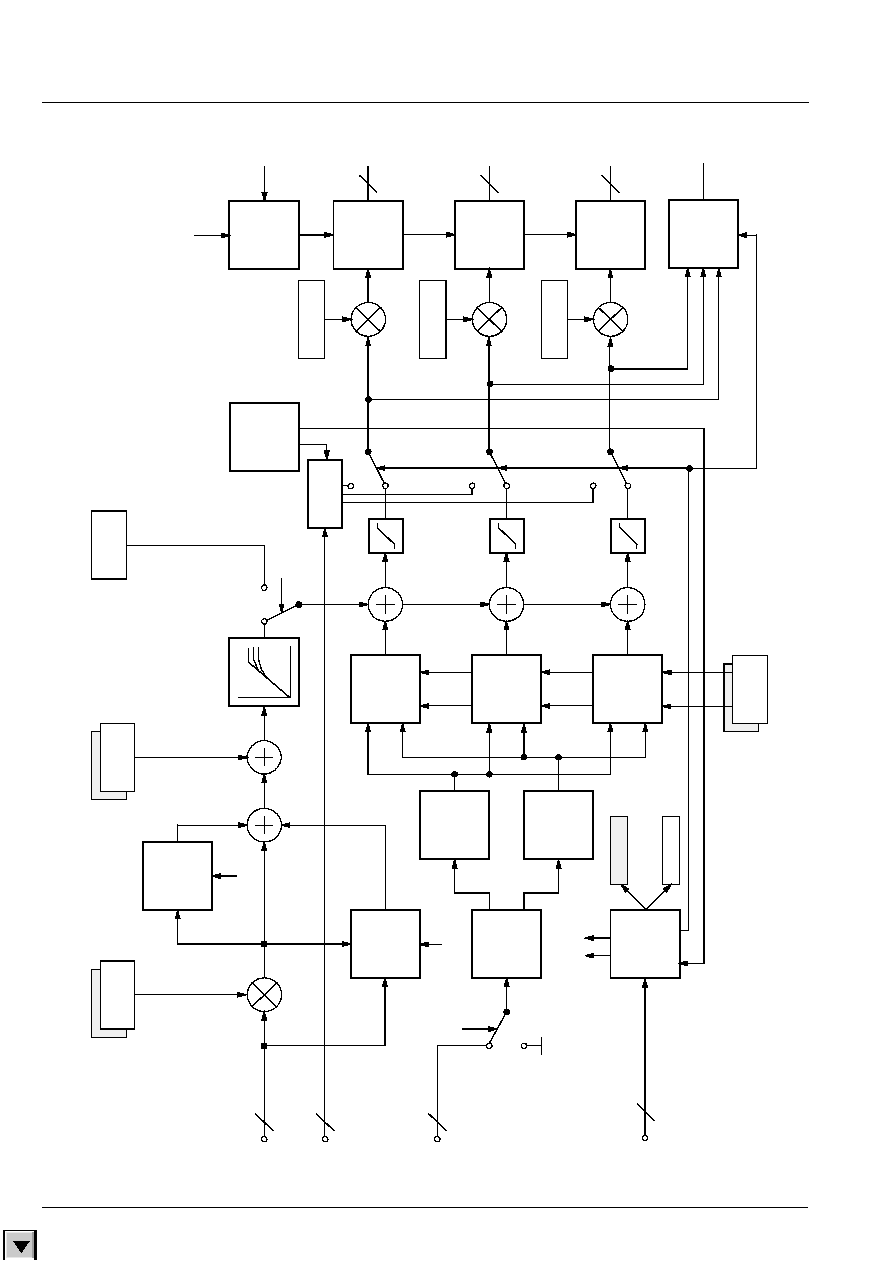
VCT
38xxA
A
D
V
A
NCE
INFORM
A
T
ION
24
M
i
c
r
onas
Fig. 2
�
18:
Di
gi
tal
ba
ck
-
end
Contrast
Dynamic
peaking
Brightness
+ Offset
Softlimiter
White-Drive
Measurement
C
LOCK
Horizontal
Flyback
DTI
(C
r
)
DTI
(C
b
)
Interpol
4:4:4
Black-
Level
Expander
10
dig.
Rout
dig.
Gout
dig.
Bout
Cr
Cb
dig.
Y in
dig.
C
r
C
b
in
8
8
Matrix
Saturation
White-Drive R
x beam Curr. Lim.
Display
& Clock
Control
PRIO in
PRIO
Decoder
select
Coefficients
Main Picture
Side Picture
3
Matrix
R'
Matrix
G'
Matrix
B'
Y
R
G
B
luma insert
for CRTmeasurement
CLUT,
for CRT Measurement
Blanking
dig. OSD in
5
Contrast
SVMout
10
10
Scan
Velocity
Modulation
Picture
Frame
Generator
prio
prio
White-Drive G
x Beam curr. Lim.
White-Drive
x Beam Curr. Lim.
Phase
Shift
0...1 Clock
Phase
Shift
0...1 Clock
Phase
Shift
0...1 Clock

ADVANCE INFORMATION
VCT 38xxA
Micronas
25
2.11.Video Back-end
The digital RGB signals are converted to analog RGBs
using three video digital-to-analog converters (DAC)
with 10-bit resolution. An analog brightness value is
provided by three additional DACs. The adjustment
range is 40 % of the full RGB range.
Controlling the white-drive/analog brightness and also
the external contrast and brightness adjustments is
done via the Fast Processor, located in the front-end.
Control of the cutoff DACs is done via I
2
C bus regis-
ters.
Finally cutoff and blanking values are added to the
RGB signals. Cutoff (dark current) is provided by three
9-bit DACs. The adjustment range is 60 % of full scale
RGB range.
The analog RGB-outputs are current outputs with cur-
rent-sink characteristics. The maximum current drawn
by the output stage is obtained with peak white RGB.
An external half contrast signal can be used to reduce
the output current of the RGB outputs to 50 %.
2.11.1.CRT Measurement and Control
The display processor is equipped with an 8-bit
PDM-ADC for all measuring purposes. The ADC is
connected to the SENSE input pin, the input range is 0
to 1.5V. The bandwidth of the PDM filter can be
selected; it is 40/80 kHz for small/large bandwidth set-
ting. The input impedance is more than 1 M
.
Cutoff and white-drive current measurement are car-
ried out during the vertical blanking interval. They
always use the small bandwidth setting. The current
range for the cutoff measurement is set by connecting
a sense resistor to the MADC input. For the white-drive
measurement, the range is set by using another sense
resistor and the range select switch 2 output pin
(RSW2). During the active picture, the minimum and
maximum beam current is measured. The measure-
ment range can be set by using the range select
switch 1 pin (RSW1) as shown in Fig. 2�19 and Fig. 2�
20. The timing window of this measurement is pro-
grammable. The intention is, to automatically detect
letterbox transmission or to measure the actual beam
current. All control loops are closed via the external
control microprocessor.
Fig. 2�19: MADC range switches
Fig. 2�20: MADC measurement timing
A
D
MADC
Beam Current
SENSE
RSW1
RSW2
R3
R2
R1
Lines
active measure-
ment resistor
ultra black
black
R1
||
R2
||
R3
RSW1=on, RSW2=on
PICTURE MEAS.
PMSO
R1
CB + IBRM
B
cutoff
CR + IBRM + WDRV
WDR
CR + IBRM
CG + IBRM
G
cutoff
R
cutoff
R1
||
R3
R1
||
R2
||
R3
RSW1=on, RSW2=on
PICTURE MEAS.
PMST
TML
RSW2
=on
TUBE MEASUREMENT
R
G
B
white
drive
R
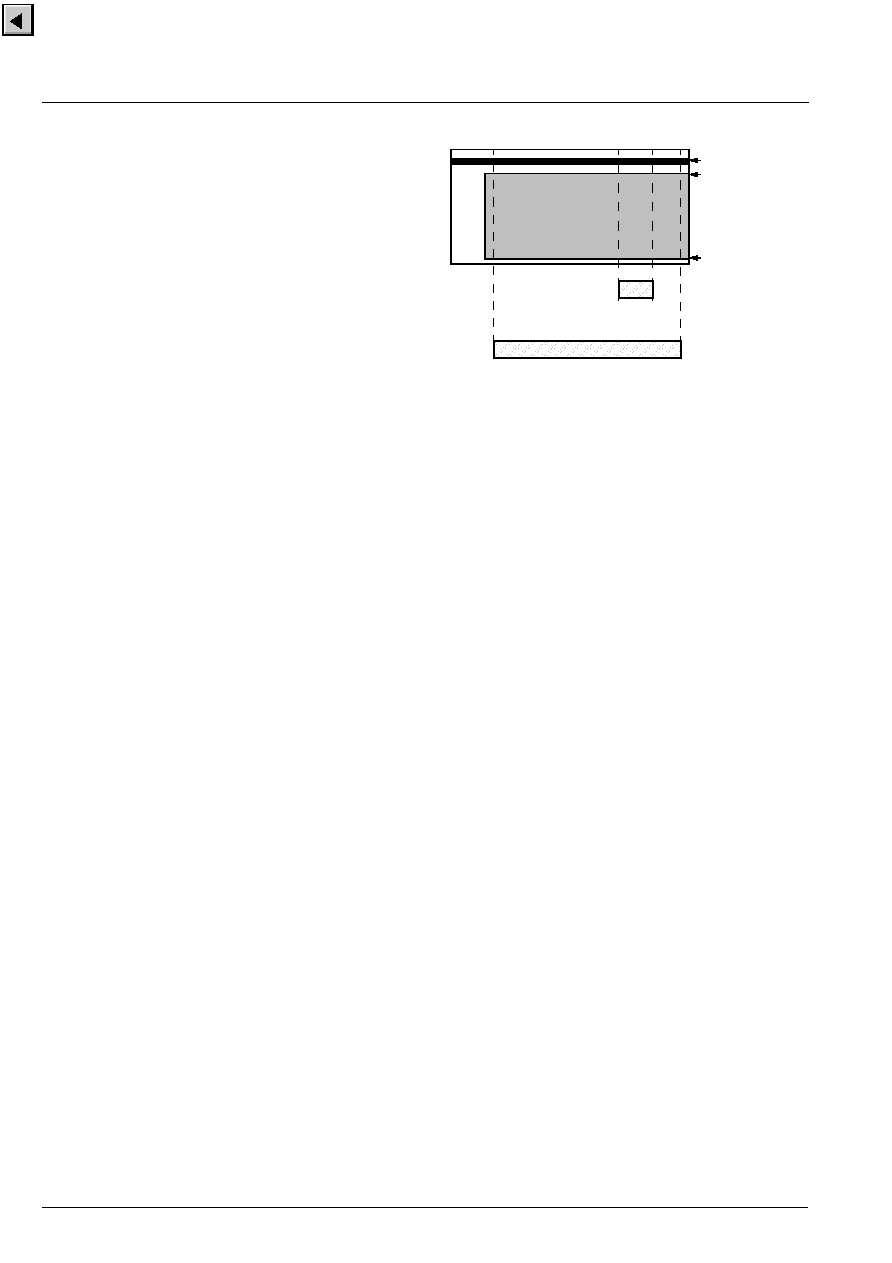
VCT 38xxA
ADVANCE INFORMATION
26
Micronas
In each field two sets of measurements can be taken:
a) The picture tube measurement returns results for
� cutoff R
� cutoff G
� cutoff B
� white-drive R or G or B (sequentially)
b) The picture measurement returns data on
� active picture maximum current
� active picture minimum current
The tube measurement is automatically started when
the cutoff blue result register is read. Cutoff control for
RGB requires one field only, whereas a complete
white-drive control requires three fields. If the mea-
surement mode is set to `offset check', a measurement
cycle is run with the cutoff/white-drive signals set to
zero. This allows to compensate the MADC offset as
well as input the leakage currents. During cutoff and
white-drive measurements, the average beam current
limiter function (see Section 2.11.3. on page 27) is
switched off and a programmable value is used for the
brightness setting. The start line of the tube measure-
ment can be programmed via I
2
C bus, the first line
used for the measurement, i.e. measurement of cutoff
red, is 2 lines after the programmed start line.
The picture measurement must be enabled by the con-
trol microprocessor after reading the min./max. result
registers. If a `1' is written into bit 2 in subaddress 25,
the measurement runs for one field. For the next mea-
surement a `1' has to be written again. The measure-
ment is always started at the beginning of active video.
The vertical timing for the picture measurement is pro-
grammable, and may even be a single line. Also the
signal bandwidth is switchable for the picture measure-
ment.
Two horizontal windows are available for the picture
measurement. The large window is active for the entire
active line. Tube measurement is always carried out
with the small window. Measurement windows for pic-
ture and tube measurement are shown in Fig. 2�21.
Fig. 2�21: Windows for tube and picture measure-
ments
2.11.2.SCART Output Signal
The RGB output of the VCT 38xxA can also be used to
drive a SCART output. In the case of the SCART sig-
nal, the parameter CLMPR (clamping reference) has to
be set to 1. Then, during blanking, the RGB outputs
are automatically set to 50 % of the maximum bright-
ness. The DC offset values can be adjusted with the
cutoff parameters CR, CG, and CB. The amplitudes
can be adjusted with the drive parameters WDR,
WDG, and WDB.
active video
field 1/ 2
tube measurement
picture meas. start
picture meas. end
small window for tube
measurement (cutoff, white drive)
large window for active picture
picture meas. start

ADVANCE INFORMATION
VCT 38xxA
Micronas
27
2.11.3.Average Beam Current Limiter
The average beam current limiter (BCL) uses the
SENSE input for the beam current measurement. The
BCL uses a different filter to average the beam current
during the active picture. The filter bandwidth is
approx. 2 kHz. The beam current limiter has an auto-
matic offset adjustment that is active two lines before
the first cutoff measurement line.
The beam current limiter function is located in the
front-end. The data exchange between the front-end
and the back-end is done via a single-wire serial inter-
face.
The beam current limiter allows the setting of a thresh-
old current. If the beam current is above the threshold,
the excess current is low-pass filtered and used to
attenuate the RGB outputs by adjusting the white-drive
multipliers for the internal (digital) RGB signals, and
the analog contrast multipliers for the analog RGB
inputs, respectively. The lower limit of the attenuator is
programmable, thus a minimum contrast can always
be set. During the tube measurement, the ABL attenu-
ation is switched off. After the white-drive measure-
ment line it takes 3 lines to switch back to BCL limited
drives and brightness.
Typical characteristics of the ABL for different loop
gains are shown in Fig. 2�22; for this example the tube
has been assumed to have square law characteristics.
Fig. 2�22: Beam current limiter characteristics:
beam current output vs. drive
BCL threshold: 1
2.11.4.Analog RGB Insertion
The VCT 38xxA allows insertion of external analog
RGB signals. The RGB signal is key-clamped and
inserted into the main RGB by the Fast-Blank switch.
The external RGB input can be overlaid or underlaid to
the digital picture. The external RGB signals can be
adjusted independently as regards DC level (bright-
ness) and magnitude (contrast).
All signals for analog RGB insertion (RIN, GIN, BIN,
FBLIN) must be synchronized to the horizontal flyback,
otherwise a horizontal jitter will be visible. The
VCT 38xxA has no means for timing correction of the
analog RGB input signals.
2.11.5.Fast-Blank Monitor
The presence of external analog RGB sources can be
detected by means of a Fast-Blank monitor. The status
of the Fast-Blank input can be monitored via an I
2
C
bus register. There is a 2 bit information, giving static
and dynamic indication of a Fast-Blank signal. The
static bit is directly reading the Fast-Blank input line,
whereas the dynamic bit is reading the status of a
flip-flop triggered by the negative edge of the Fast-
Blank signal.
With this monitor logic it is possible to detect if there is
an external RGB source active and if it is a full screen
insertion or only a box. The monitor logic is connected
directly to the FBLIN pin.

VCT 38xxA
ADVANCE INFORMATION
28
Micronas
Fig. 2�23: Video back-end
ext.
contr
a
st *
w
h
i
t
e
dri
v
e R
*
bea
m cur
r
en
t l
i
m
.
cut
o
ff R
10-bit
DAC
Video
3.75 mA
blank &
timing
8 bit
ADC
measurm.
9-bit
U/I-DAC
3.75 mA
clamp
key
analog
R in
SENSE
analog
R out
analog
G out
analog
B out
analog
G in
analog
B in
me
asure
m
ent
bu
ffer
digital
R in
H
V
measurem.
10
9-bit
DAC
1.5 mA
ext. br
i
g
htne
ss *
w
h
i
t
e dr
i
v
e R
digital
G in
digital
B in
9-bit
DAC
2.2 mA
10-bit
DAC
Video
3.75 mA
10-bit
DAC
Video
3.75 mA
9-bit
U/I-DAC
3.75 mA
9-bit
U/I-DAC
3.75 mA
cutof
f
G
9 bit
DAC
2.2 mA
cutoff B
9 bit
DAC
2.2 mA
9-bit
DAC
1.5 mA
9-bit
DAC
1.5 mA
Input
I/O
ext. br
i
ghtne
ss *
wh
ite
d
r
ive
G
ext
.
bri
g
h
t
ness *
wh
ite
d
r
ive
B
9-bit
DAC
1.5 mA
wh
ite
d
r
ive
G
9-bit
DAC
1.5 mA
i
n
t. bri
g
htness *
w
h
i
t
e dri
v
e
B
9-bit
DAC
1.5 mA
w
h
i
t
e dr
i
v
e R
in
t. b
r
ig
h
t
n
e
ss
*
i
n
t
.
bri
g
h
t
ness *
fast
ext.
contr
a
st *
w
h
i
t
e dri
v
e
G *
bea
m cur
r
en
t l
i
m
.
ext.
contr
a
st *
w
h
i
t
e
dri
v
e B
*
bea
m cur
r
en
t l
i
m
.
10
10
analog
SVM out
8
8-bit
DAC
SVM
1.88 mA
0.94 mA
digital
SVM in
serial interface
clamp
clamp
blank in
blanking
750
�
A
blanking
750
�
A
blanking
750
�
A
ext. brightness
ext. contrast
int . brightness
white drive B
white drive G
white drive R

ADVANCE INFORMATION
VCT 38xxA
Micronas
29
2.12.Synchronization and Deflection
The synchronization and deflection processing is dis-
tributed over front-end and back-end. The video
clamping, horizontal and vertical sync separation and
all video related timing information are processed in
the front-end. Most of the processing that runs at the
horizontal frequency is programmed on the internal
Fast Processor (FP). Also the values for vertical and
East/West deflection are calculated by the FP soft-
ware.
The generation of horizontal and vertical drive signals
can be synchronized to the video timing extracted in
the front-end or to a free running line counter in the
back-end.
2.12.1.Deflection Processing
The deflection processing generates the signals for the
horizontal and vertical drive (see Fig. 2�24). This block
contains two phase-locked loops:
� PLL2 generates the horizontal and vertical timing,
e.g. blanking, clamping and composite sync. Phase
and frequency are synchronized by the front sync
signal.
� PLL3 adjusts the phase of the horizontal drive pulse
and compensates for the delay of the horizontal out-
put stage. Phase and frequency are synchronized
by the oscillator signal of PLL2.
The horizontal drive circuitry uses a digital sine wave
generator to produce the exact (subclock) timing for
the drive pulse HOUT. The generator runs at 1 MHz.
Under control of the EHPLL bit and the internal voltage
supervision it is either synchronized by the deflection
PLL or it is free running. In the output stage the fre-
quency is divided down to give drive-pulse period and
width. The drive pulse width is programmable. The
horizontal drive uses an open drain output transistor.
After power on or during reset the HOUT generation is
switched to a free running mode with a fix duty cycle of
50 %. For normal operation the EHPLL bit has to be
set first. During the switch the actual period of HOUT
can vary by up to 1
�
s.
2.12.2.Angle and Bow Correction
The Angle and Bow correction is part of the horizontal
drive PLL. This feature allows a shift of the horizontal
drive pulse phase depending on the vertical position
on the screen. The phase correction has a linear
(angle) and a quadratic term (bow).
2.12.3.Horizontal Phase Adjustment
This section describes a simple way to align PLL
phases and the horizontal frame position.
1. With HDRV the duration of the horizontal drive pulse
has to be adjusted
2. With POFS2 the delay between input video and dis-
play timing (e.g. clamping pulse for analog RGB)
has to be adjusted
3. With CSYDEL the delay between video and analog
RGB (OSD) has to be adjusted.
4. With CSYDEL and HPOS the horizontal position of
both, the digital and analog RGB signal (from
SCART) relative to the clamping pulse has to be
adjusted to the correct position, e.g. the pedestal of
the generator signal.
5. With POFS3 the position of horizontal drive/flyback
relative to RGB has to be adjusted
6. With NEWLIN the position of a scaled video picture
can be adjusted (left, middle, center, etc; versions
with panorama scaler only).
7. With HBST and HBSO, the start and stop values for
the horizontal blanking have to be adjusted.
Note: The processing delay of the internal digital video
path differs depending on the comb filter option of the
VCT 38xxA. The versions with comb filter have an
additional delay of 34 clock cycles.
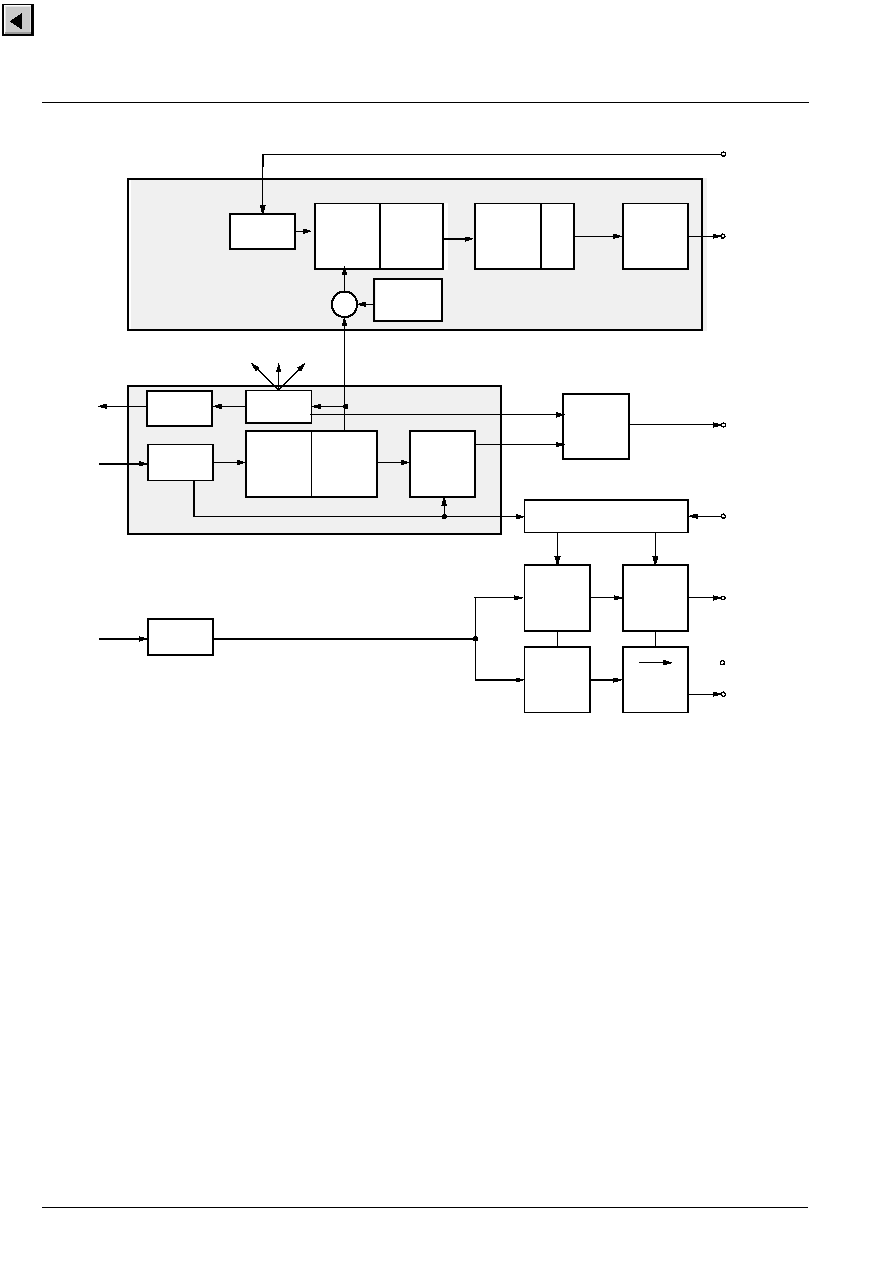
VCT 38xxA
ADVANCE INFORMATION
30
Micronas
Fig. 2�24: Deflection processing block diagram
2.12.4.Vertical and East/West Deflection
The calculations of the vertical and East/West deflec-
tion waveforms is done by the internal Fast Processor
(FP). The algorithm uses a chain of accumulators to
generate the required polynomial waveforms. To pro-
duce the deflection waveforms, the accumulators are
initialized at the beginning of each field. The initializa-
tion values must be computed by the TV control pro-
cessor and are written to the front-end once. The
waveforms are described as polynomials in x, where x
varies from 0 to 1 for one field.
P: a + b(x-0.5) + c(x-0.5)
2
+
d(x-0.5)
3
+ e(x-0.5)
4
The initialization values for the accumulators a0..a3 for
vertical deflection and a0..a4 for East/West deflection
are 12-bit values.
Fig. 2�25 shows several vertical and East/West deflec-
tion waveforms. The polynomial coefficients are also
stated.
In order to get a faster vertical retrace timing, the out-
put impedance of the vertical D/A-converter can be
reduced by 50 % during the retrace.
2.12.5.EHT Compensation
The vertical waveform can be scaled according to the
average beam current. This is used to compensate the
effects of electric high-tension changes due to beam
current variations. EHT compensation for East/West
deflection is done with an offset corresponding to the
average beam current.
Phase
Comparator
&
Low-pass
PLL2
E/W
correction
Sawtooth
PWM
15-bit
EW
VERT
VPROT
PWM
15-bit
DCO
Front
Sync
Interface
FSY
VDATA
Main
Sync
Generator
Vertical
Data
Phase
Comparator
&
Low-pass
PLL3
1:64
&
Output
Stage
HFLB
HOUT
DCO
Display
Timing
Line
Counter
blanking, clamping, etc.
Clock & Control
Sinewave
Generator
&
DAC
LPF
MSY
vertical reset
Skew
Measure-
ment
Angle &
Bow
+
VERTQ
Sync
Generation
INTLC

ADVANCE INFORMATION
VCT 38xxA
Micronas
31
2.12.6.Protection Circuitry
Picture tube and drive stage protection is provided
through the following measures:
� Vertical flyback protection input:
This pin searches for a negative edge in every field,
otherwise the RGB drive signals are blanked.
� Drive shutoff during flyback:
This feature can be selected by software.
� Safety input pin:
This input has two thresholds. Between zero and the
lower threshold, normal functioning takes place.
Between the lower and the higher threshold, the
RGB signals are blanked. Above the higher thresh-
old, the RGB signals are blanked and the horizontal
drive is shut off. Both thresholds have a small hys-
teresis.
Fig. 2�25: Vertical and East/West deflection waveforms
2.13.Reset Function
Reset of all VDP functions is performed by the RESQ
pin. When this pin becomes active, all internal regis-
ters and counters are lost. The TV controller can acti-
vate the RESQ pin by software (see Section 5.7.2. on
page 90).
When the RESQ pin is released, the internal reset is
still active for 4
�
s. After that time, the initialization of
all required registers is performed by the internal Fast
Processor. This takes approximately 60
�
s. During this
initialization procedure it is not possible to access the
VDP via the I
2
C interface.
The VDP has clock and voltage supervision circuits to
generate a stable HOUT signal. The voltage supervi-
sion activates an internal reset signal when the supply
for the digital circuits (VSUP
D
) goes below ~2.5 V for
more than 50 ns. This reset signal is extended by
50
�
s after VSUP
D
is back again.
2.14.Standby and Power-On
The VDP does not have a standby mode. To disable all
the analog and digital video functions, it is necessary
to switch off the supplies for analog front-end
(VSUP
AF
), analog back-end (VSUP
AB
) and digital
circuitry (VSUP
D
).
a,b,c,d,e
0,0,1,0,0
0,0,0,0,1
0,0,1,1,1
East/West:
a,b,c,d
0,1,0,0
0,1,1,0
0,1,0,1
Vertical:
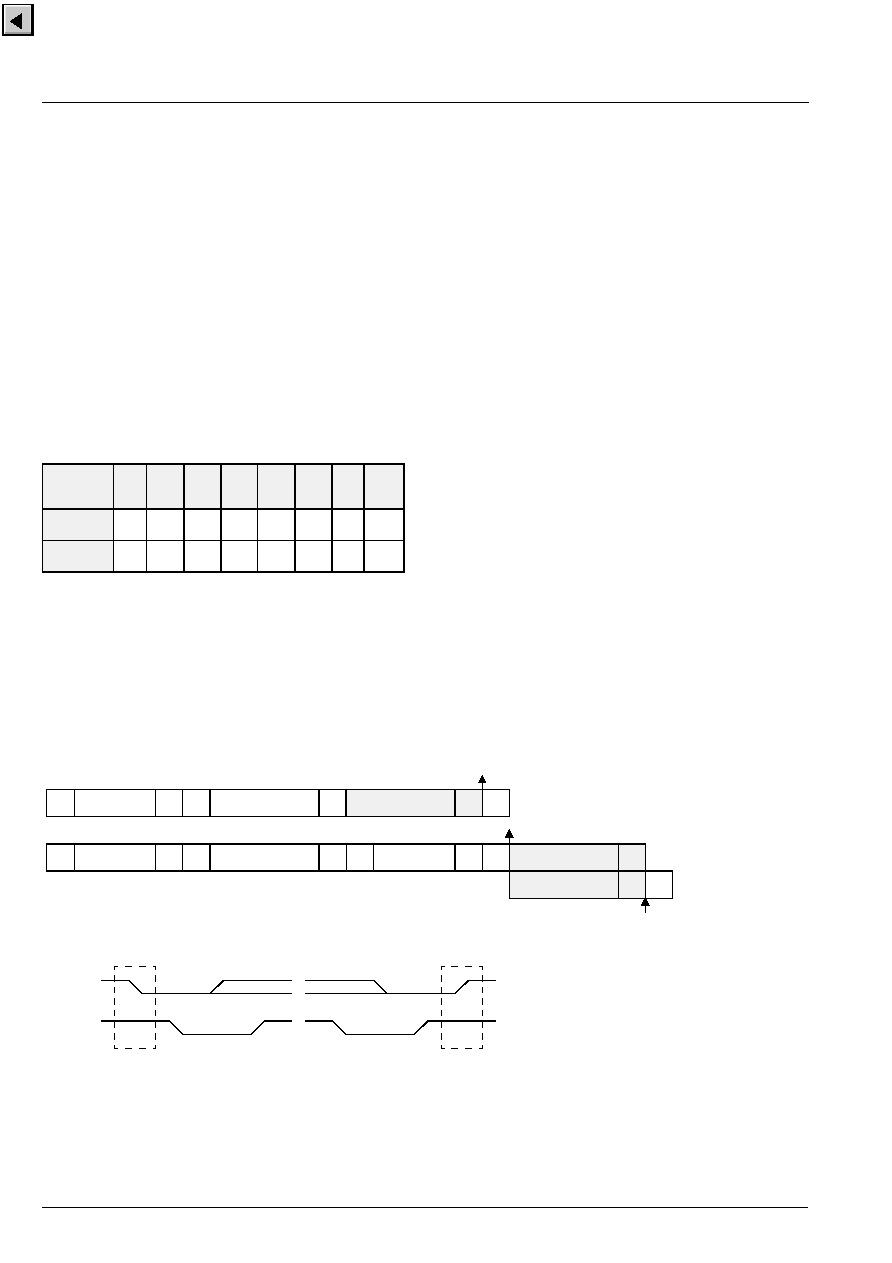
VCT 38xxA
ADVANCE INFORMATION
32
Micronas
2.15.I
2
C Bus Slave Interface
Communication between the VDP and the TV control-
ler is done via I
2
C bus. For detailed information on the
I
2
C bus please refer to the Philips manual `I
2
C bus
Specification'.
The VDP has two I
2
C bus slave interfaces (for compat-
ibility with VPC/DDP applications)
-
one in the
front-end and one in the back-end. Both I
2
C bus inter-
faces use I
2
C clock synchronization to slow down the
interface if required. Both I
2
C bus interfaces use one
level of subaddress: the I
2
C bus chip address is used
to address the VDP and a subaddress selects one of
the internal registers. The I
2
C bus chip addresses are
given below:
The registers of the VDP have 8 or 16-bit data size;
16-bit registers are accessed by reading/writing two
8-bit data words.
Fig. 2�26 shows I
2
C bus protocols for read and write
operations of the interface; the read operation requires
an extra start condition and repetition of the chip
address with read command set.
2.15.1.Control and Status Registers
Table 2�3 gives definitions of the VDP control and sta-
tus registers. The number of bits indicated for each
register in the table is the number of bits implemented
in hardware, i.e. a 9-bit register must always be
accessed using two data bytes but the 7 MSB will be
`don't care' on write operations and `0' on read opera-
tions. Write registers that can be read back are indi-
cated in Table 2�3.
Functions implemented by software in the on-chip con-
trol microprocessor (FP) are explained in Table 2�5.
A hardware reset initializes all control registers to 0.
The automatic chip initialization loads a selected set of
registers with the default values given in Table 2�3.
The register modes given in Table 2�3 are
� w:
write only register
� w/r:
write/read data register
� r:
read data from VDP
� v:
register is latched with vertical sync
� h:
register is latched with horizontal
Fig. 2�26: I
2
C bus protocols
Table 2�2: I
2
C chip addresses
Chip
Address
A6
A5
A4
A3
A2
A1
A0
R/W
front-end
1
0
0
0
1
1
1
1/0
back-end
1
0
0
0
1
0
1
1/0
P
S
1
0
SDA
SCL
S
S
1000 111
1000 111
W Ack
Ack
W
0111 1100
0111 1100
Ack
Ack
S
1 or 2 byte Data
1000 111
R
high byte Data
low byte Data
P
W
R
Ack
Nak
S
P
=
=
=
=
=
=
0
1
0
1
Start
Stop
Ack
Nak P
I
2
C write access
subaddress 7c
I
2
C read access
subaddress 7c
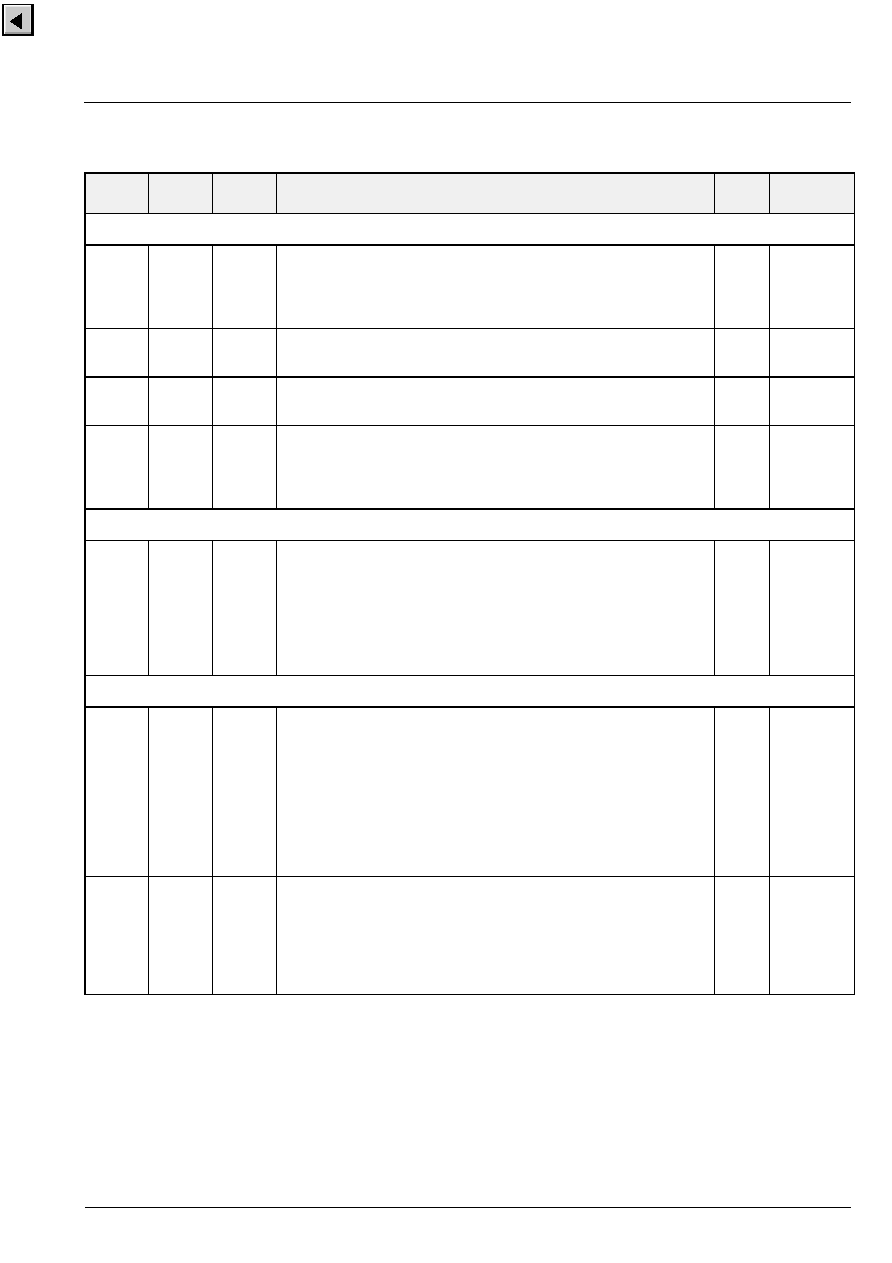
ADVANCE INFORMATION
VCT 38xxA
Micronas
33
Table 2�3: I
2
C control and status registers of the video front-end
I
2
C Sub
address
Number
of bits
Mode
Function
Default
Name
FP Interface
h'35
8
r
FP status
bit [0]
write request
bit [1]
read request
bit [2]
busy
FPSTA
h'36
16
w
bit[8:0]
9-bit FP read address
bit[11:9]
reserved, set to zero
FPRD
h'37
16
w
bit[8:0]
9-bit FP write address
bit[11:9]
reserved, set to zero
FPWR
h'38
16
w/r
bit[11:0]
FP data register, reading/writing to this
register will autoincrement the FP read/
write address. Only 16 bit of data are
transferred per I
2
C telegram.
FPDAT
Black Line Detector
h'12
16
r
read only register, do not write to this register!
after reading, LOWLIN and UPLIN are reset to 127 to start a
new measurement
bit[6:0]
number of lower black lines
bit[7]
always 0
bit[14:8]
number of upper black lines
bit[15]
normal/black picture
BLKLIN
LOWLIN
UPLIN
BLKPIC
Miscellaneous
h'29
16
w/r
Test pattern generator:
bit[10:0]
reserved (set to 0)
bit[11]
0/1
disable/enable test pattern generator
bit[13:12]
output mode:
00
Y/C = ramp (240 ... 17)
01
Y/C = 16
10
Y/C = 90
11
Y/C = 240
bit[15:14] 0/1
reserved (set to 0)
0
0
0
0
TPG
TPGEN
TPGMODE
h'22
16
w/r
NEWLINE (available for versions with panorama scaler only):
bit[10:0]
NEWLINE register
This register defines the readout start of
the next line in respect to the value of the
sync counter.
bit [15:11]
reserved (set to 0)
0
NEWLIN
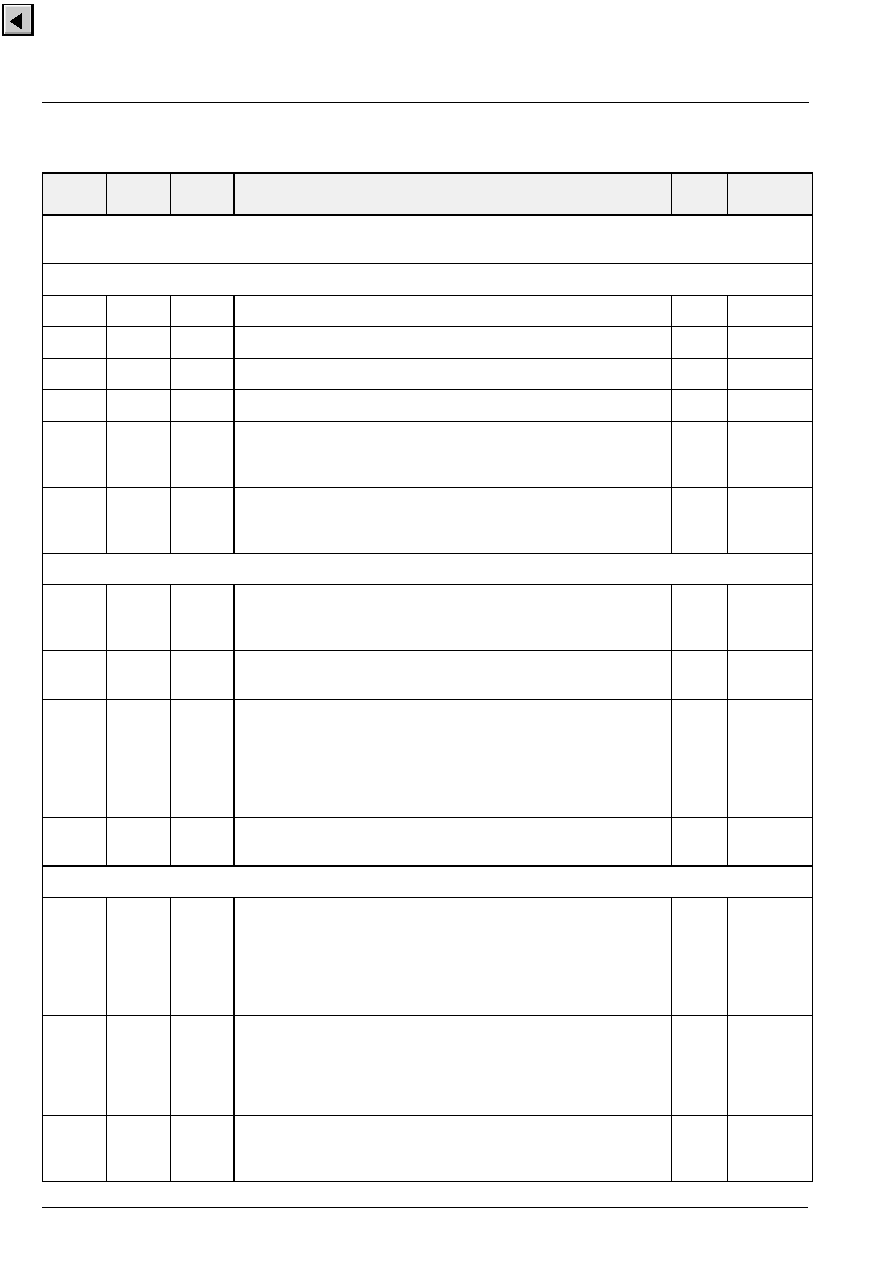
VCT 38xxA
ADVANCE INFORMATION
34
Micronas
Table 2�4: I
2
C control and status registers of the video back-end
I
2
C Sub
address
Number
of bits
Mode
Function
Default
Name
1)
priority mask register
If bit[x] is set to 1 then the function is active for the respective signal priority
Luminance Channel
h'61
9
w v
bit [5:0]
0..63/32
main picture contrast
32 CTM
h'65
9
w v
bit [5:0]
0..63/32
side picture contrast
32 CTS
h'51
9
w v
bit [8:0]
-
256..255
main picture brightness
0 BRM
h'55
9
w v
bit [8:0]
-
256..255
side picture brightness
0 BRS
h'75
9
w v
luma channel, priority mask register
bit [7:0]
0/1
select contrast, brightness, matrix
for main/side picture
0 PBCT
1)
h'71
9
w v
luma channel, priority mask register
bit [7:0]
0/1
select main (video) / external (via CLUT)
RGB
0
PBERGB
1)
Black-Level Expander
h'59
9
w v
black-level expander
bit [3:0]
0..15
tilt coefficient
bit [8:4]
0...31
amount
8
12
BLE1
BTLT
BAM
h'5d
9
w v
black-level expander, threshold:
bit [8:0]
0..511
disable expansion, threshold value
200
BLE2
BTHR
h'73
9
w v
black-level expander, measurement
bit[0]
0/1
50/60 Hz measurement windowlength
bit [8:1]
0..255
vstart/2
start line = vstart
stop line = 336/283
-
vstart
or vertical blanking
0
15
BLE3
BWL
BVST
h'7d
9
w v
black-level expander, priority mask register
bit [7:0]
0/1
enable/disable black-level expander
0 PBBLE
1)
Dynamic Peaking
h'69
9
w v
luma peaking filter, the gain at high frequencies and small signal
amplitudes is: 1 + (k1+k2)/8
bit [3:0]
0..15
k1: peaking level undershoot
bit [7:4]
0..15
k2: peaking level overshoot
bit [8]
0/1
peaking value normal/inverted
(peaking/softening)
4
4
0
PK1
PKUN
PKOV
PKINV
h'6d
9
w v
luma peaking filter, coring
bit [4:0]
0..31
coring level
bit [7:5]
reserved
bit [8]
0/1
peaking filter center frequency high/
low
3
0
PK2
COR
PFS
h'79
9
w v
luma peaking filter, priority mask register
bit [7:0]
0/1
disable/enable peaking transient
suppression when signal is switched
0 PBPK
1)

ADVANCE INFORMATION
VCT 38xxA
Micronas
35
Soft Limiter
h'41
9
w v
luma soft limiter, slope A and B
bit [3:0]
slope segment A
bit [7:4]
slope segment B
0
0
LSL1
LSLSA
LSLSB
h'45
9
w v
luma soft limiter, absolute limit
bit [7:0]
luma soft limiter absolute limit
(unsigned)
bit [8]
0/1
modulation off/on
255
1
LSL2
LSLAL
LSLM
h'49
9
w v
bit [8:0]
luma soft limiter segment B tilt point (unsigned)
300 LSLTB
h'4d
9
w v
bit [8:0]
luma soft limiter segment A tilt point (unsigned)
250 LSLTA
Chrominance Channel
h'14
8
w/r
luma/chroma matching
bit [2:0]
-
3...3
variable chroma delay
bit [7:3]
reserved, set to 0
0
LCM
CDEL
h'5e
9
w v
digital transient improvement
bit [3:0]
0..15
coring value
bit [7:4]
0..15
DTI gain
bit [8]
0/1
narrow/wide bandwidth mode
1
5
1
DTI
DTICO
DTIGA
DTIMO
Inverse Matrix
h'7c
h'74
9
9
w v
w v
main picture matrix coefficient R
-
Y = MR1M*C
B
+ MR2M*C
R
bit [8:0]
-
256/128 ... 255/128
bit [8:0]
-
256/128 ... 255/128
0
86
MR1M,
MR2M
h'6c
h'64
9
9
w v
w v
main picture matrix coefficient G
-
Y = MG1M*C
B
+ MG2M*C
R
bit [8:0]
-
256/128 ... 255/128
bit [8:0]
-
256/128 ... 255/128
-
22
-
44
MG1M,
MG2M
h'5c
h'54
9
9
w v
w v
main picture matrix coefficient B
-
Y = MB1M*C
B
+ MB2M*C
R
bit [8:0]
-
256/128 ... 255/128
bit [8:0]
-
256/128 ... 255/128
113
0
MB1M,
MB2M
h'78
h'70
9
9
w v
w v
side picture matrix coefficient R
-
Y = MR1S*C
B
+ MR2S*C
R
bit [8:0]
-
256/128 ... 255/128
bit [8:0]
-
256/128 ... 255/128
0
73
MR1S,
MR2S
h'68
h'60
9
9
w v
w v
side picture matrix coefficient G
-
Y = MG1S*C
B
+ MG2S*C
R
bit [8:0]
-
256/128 ... 255/128
bit [8:0]
-
256/128 ... 255/128
-
19
-
37
MG1S,
MG2S
h'58
h'50
9
9
w v
w v
side picture matrix coefficient B
-
Y = MB1S*C
B
+ MB2S*C
R
bit [8:0]
-
256/128 ... 255/128
bit [8:0]
-
256/128 ... 255/128
97
0
MB1S,
MB2S
I
2
C Sub
address
Number
of bits
Mode
Function
Default
Name

VCT 38xxA
ADVANCE INFORMATION
36
Micronas
Color Lookup Table
h'00
-
h'0f
16
w h
color look-up table : 16 entries, 12 bit wide,
The CLUT registers are initialized at power-up
bit [3:0]
0..15
blue amplitude
bit [7:4]
0..15
green amplitude
bit [11:8]
0..15
red amplitude
000h
f00h
0f0h
ff0h
00fh
f0fh
0ffh
fffh
7ffh
700h
070h
770h
007h
707h
077h
777h
CLUT0
CLUT15
h'4c
9
w v
digital OSD insertion contrast for R (amplitude range: 0 to 255)
bit [3:0]
0..13
R amplitude = CLUTn
(DRCT + 4)
14,15
invalid
picture frame insertion contrast for R (ampl. range: 0 to 255)
bit [7:4]
0..13
R amplitude = PFCR
(PFRCT + 4)
14,15
invalid
8
8
RCT
DRCT
PFRCT
h'48
9
w v
digital OSD insertion contrast for G (amplitude range: 0 to 255)
bit [3:0]
0..13
G amplitude = CLUTn
(DGCT + 4)
14,15
invalid
picture frame insertion contrast for G (ampl. range: 0 to 255)
bit [7:4]
0..13
G amplitude = PFCG
(PFGCT + 4)
14,15
invalid
8
8
GCT
DGCT
PFGCT
h'44
9
w v
digital OSD insertion contrast for B (amplitude range: 0 to 255)
bit [3:0]
0..13
B amplitude = CLUTn
(DBCT + 4)
14,15
invalid
picture frame insertion contrast for B (ampl. range: 0 to 255)
bit [7:4]
0..13
B amplitude = PFCB
(PFBCT + 4)
14,15
invalid
8
8
BCT
DBCT
PFBCT
Picture Frame Generator
h'11
16
w h
picture frame color
bit [3:0]
0..15
blue amplitude
bit [7:4]
0..15
green amplitude
bit [11:8]
0..15
red amplitude
0
0
0
PFC
PFCB
PFCG
PFCR
h'47
9
w v
bit [2:0]
picture frame generator priority id
bit [8]
enable prio id for picture frame generator
0 PFGID
PFGEN
h'4F
9
w v
bit [8:0] horizontal picture frame begin
code 0 = picture frame generator horizontally disabled
code 1FF = full frame
0 PFGHB
h'53
9
w v
bit [8:0] horizontal picture frame end
0 PFGHE
h'63
9
w v
bit [8:0] vertical picture frame begin
code 0 = picture frame generator vertically disabled
270 PFGVB
h'6f
9
w v
bit [8:0] vertical picture frame end
56 PFGVE
I
2
C Sub
address
Number
of bits
Mode
Function
Default
Name

ADVANCE INFORMATION
VCT 38xxA
Micronas
37
Scan Velocity Modulation
h'5a
9
w v
video mode coefficients
bit [5:0]
gain1
bit [8:6]
differentiator delay 1 (0= filter off, 1...6= delay)
60
4
SVM1
SVG1
SVD1
h'56
9
w v
text mode coefficients
bit [5:0]
gain 2
bit [8:6]
differentiator delay 2 (0= filter off, 1...6= delay)
60
4
SVM2
SVG2
SVD2
h'52
9
w v
limiter
bit [6:0]
limit value
bit [8:5]
not used, set to "0"
100
0
SVM3
SVLIM
h'4e
9
w v
delay and coring
bit [3:0]
adjustable delay, in 1/2 display clock steps,
(value 5 : delay of SVMOUT is the same as for
RGBOUT
bit [7:4]
coring value
bit [8]
not used, set to "0"
7
0
SVM4
SVDEL
SVCOR
Display Controls
h'4a
h'46
h'42
9
9
9
w v
w v
w v
cutoff Red
cutoff Green
cutoff Blue
0
0
0
CR
CG
CB
Tube- and Picture-Measurements
h'7b
9
w v
picture measurement start line
bit [8:0]
(TML+9)..511
first line of picture measurement
23
PMST
h'6b
9
w v
picture measurement stop line
bit [8:0]
(PMST+1)..511
last line of picture measurement
308
PMSO
h'7f
9
w v
tube measurement line
bit [8:0]
0..511
start line for tube measurement
15
TML
h'25
8
w/r
tube and picture measurement control
bit [0]
0/1
disable/enable tube measurement
bit [1]
0/1
80/40 kHz bandwidth for
picture measurement
bit [2]
0/1
disable/enable picture measurement
(writing a '1' starts one measurement
cycle)
bit [3]
0/1
large/small picture measurement window,
will be disabled from bit[3] in address h'32
bit [4]
0/1
measure / offset check for adc
bit [7:5]
reserved
0 TPM
TMEN
PMBW
PMEN
PMWIN
OFSEN
h'13
16
w/r
white drive measurement control
bit [9:0]
0..1023 RGB values for white drive beam current
measurement
bit [10]
reserved
bit [11]
0/1
RGB values for white drive beam current
measurement disabled/enabled
512
0
WDM
WDRV
EWDM
I
2
C Sub
address
Number
of bits
Mode
Function
Default
Name
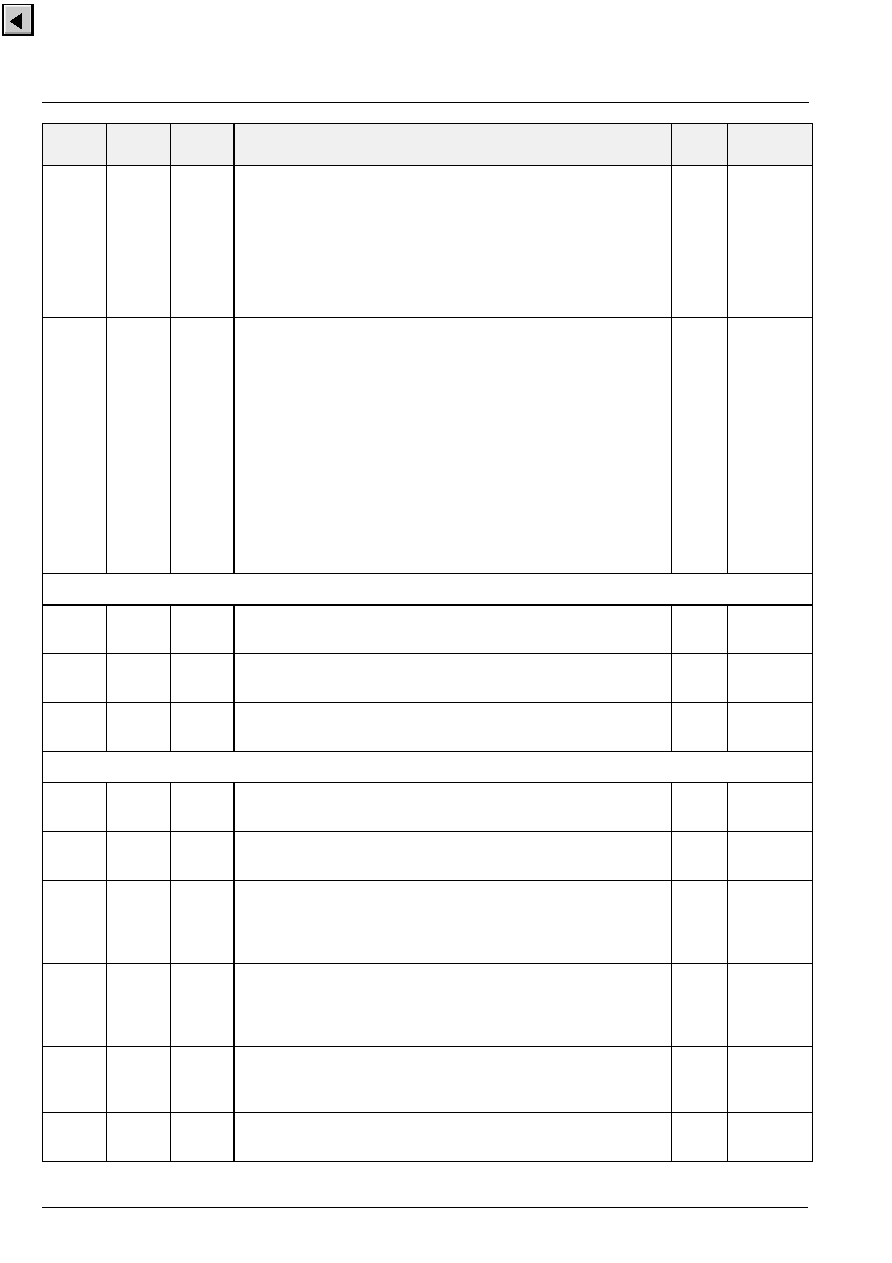
VCT 38xxA
ADVANCE INFORMATION
38
Micronas
h'18
h'19
h'1a
h'1d
h'1c
h'1b
8
r
measurement result registers
minimum in active picture
maximum in active picture
white drive
cutoff/leakage red
cutoff/leakage green
cutoff/leakage blue,
read pulse starts tube measurement
-
MRMIN
MRMAX
MRWDR
MRCR
MRCG
MRCB
h'1e
8
r
measurement adc status and Fast-Blank input status
measurement status register
bit [0]
0/1
tube measurement active / complete
bit [2:1]
white drive measurement cycle
00
red
01
green
10
blue
11
reserved
bit [3]
0/1
picture measurement active / complete
bit [4]
0/1
Fast-Blank input Low / High (static)
bit [5]
1
Fast-Blank input negative transition since
last read (bit reset at read)
bit [7:6]
reserved
-
PMS
Vertical Timing
h'67
9
w v
vertical blanking start
bit [8:0]
0..511
first line of vertical blanking
305
VBST
h'77
9
w v
vertical blanking stop
bit [8:0]
0..511
last line of vertical blanking
25
VBSO
h'5f
9
w v
vertical free run period
bit [8:0] free running field period = (value+4) lines
309
VPER
Horizontal Deflection and Timing
h'7a
9
w v
quadratic term of angle & bow correction
bit [8:0]
-
256..+255
(
�
500 ns)
0 BOW
h'76
9
w v
linear term of angle & bow correction
bit [8:0]
-
256..+255
(
�
500 ns)
0 ANGLE
h'6e
9
w v
adjustable delay of PLL2, clamping, and blanking (relative to
front sync)
adjust clamping pulse for analog RGB input
bit [8:0]
-
256..+255
(
�
8
�
s)
-
141 POFS2
h'72
9
w v
adjustable delay of flyback, main sync, csync and analog RGB
(relative to PLL2)
adjust horizontal drive or csync
bit [8:0]
-
256..+255
(
�
8
�
s)
0 POFS3
h'7e
9
w v
adjustable delay of main sync (relative to flyback)
adjust horizontal position for digital picture
bit [8:0]
20 steps
=
1
�
s
120 HPOS
h'5b
9
w v
start of horizontal blanking
bit [8:0]
0..511
1 HBST
I
2
C Sub
address
Number
of bits
Mode
Function
Default
Name

ADVANCE INFORMATION
VCT 38xxA
Micronas
39
h'57
9
w v
end of horizontal blanking
bit [8:0]
0..511
48 HBSO
h'62
h'66
h'6a
9
9
9
w v
w v
w v
PLL2/3 filter coefficients, 1of5 bit code (n
+
set bit number)
bit [5:0]
proportional coefficient PLL3, 2
-
n
-
1
bit [5:0]
proportional coefficient PLL2, 2
-
n
-
1
bit [5:0]
integral coefficient PLL2, 2
-
n
-
5
2
1
2
PKP3
PKP2
PKI2
h'15
16
w/r
horizontal drive and vertical signal control register
bit [5:0]
0..63
horizontal drive pulse duration in
�
s
(internally limited to 4..61)
bit [6]
0/1
disable/enable horizontal PLL2 and PLL3
bit [7]
0/1
1: disable horizontal drive pulse during
flyback
bit [8]
reserved, set to '0'
bit [9]
0/1
enable/disable ultra black blanking
bit [10]
0/1
0: all outputs blanked
1: normal mode
bit [11]
0/1
enable/disable clamping for analog RGB
input
bit [12]
0/1
disable/enable vertical free running mode
(FIELD is set to field2, no interlace)
bit [13]
0/1
enable/disable vertical protection
bit [14]
reserved, set to '0'
bit [15]
0/1
disable/enable phase shift of display clock
32
0
0
0
0
1
0
0
0
0
1
HVC
HDRV
EHPLL
EFLB
DUBL
EBL
DCRGB
SELFT
DVPR
DISKA
h'9d
8
w/r
sync output control
bit [0]
invert INTLC
bit [4:1]
reserved, set to '0'
bit [5]
force INTLC to polarity defined in `INTLCINV'
0 SYCTRL
INTLCINV
INTLCFO
Miscellaneous
h'32
8
w/r
Fast-Blank interface mode
bit [0]
0
internal Fast-Blank from FBLIN pin
1
force internal Fast-Blank signal to High
bit [1]
0/1
internal Fast-Blank active High/Low
bit [2]
0/1
disable/enable clamping reference for
RGB outputs
bit [3]
1
full line MADC measurement window,
disables bit [3] in address h'25
bit [4]
0/1
horizontal flyback input active High/Low
bit [6:5]
reserved (set to 0)
bit [7]
vertical output select
0
VERTQ output
1
INTLC output
0 FBMOD
FBFOH
FBPOL
CLMPR
FLMW
FLPOL
VOS
h'4b
9
w v
Fast-Blank input, priority mask register
bit [7:0]
0/1
disable/enable analog Fast-Blank input
0 PBFB
1)
I
2
C Sub
address
Number
of bits
Mode
Function
Default
Name
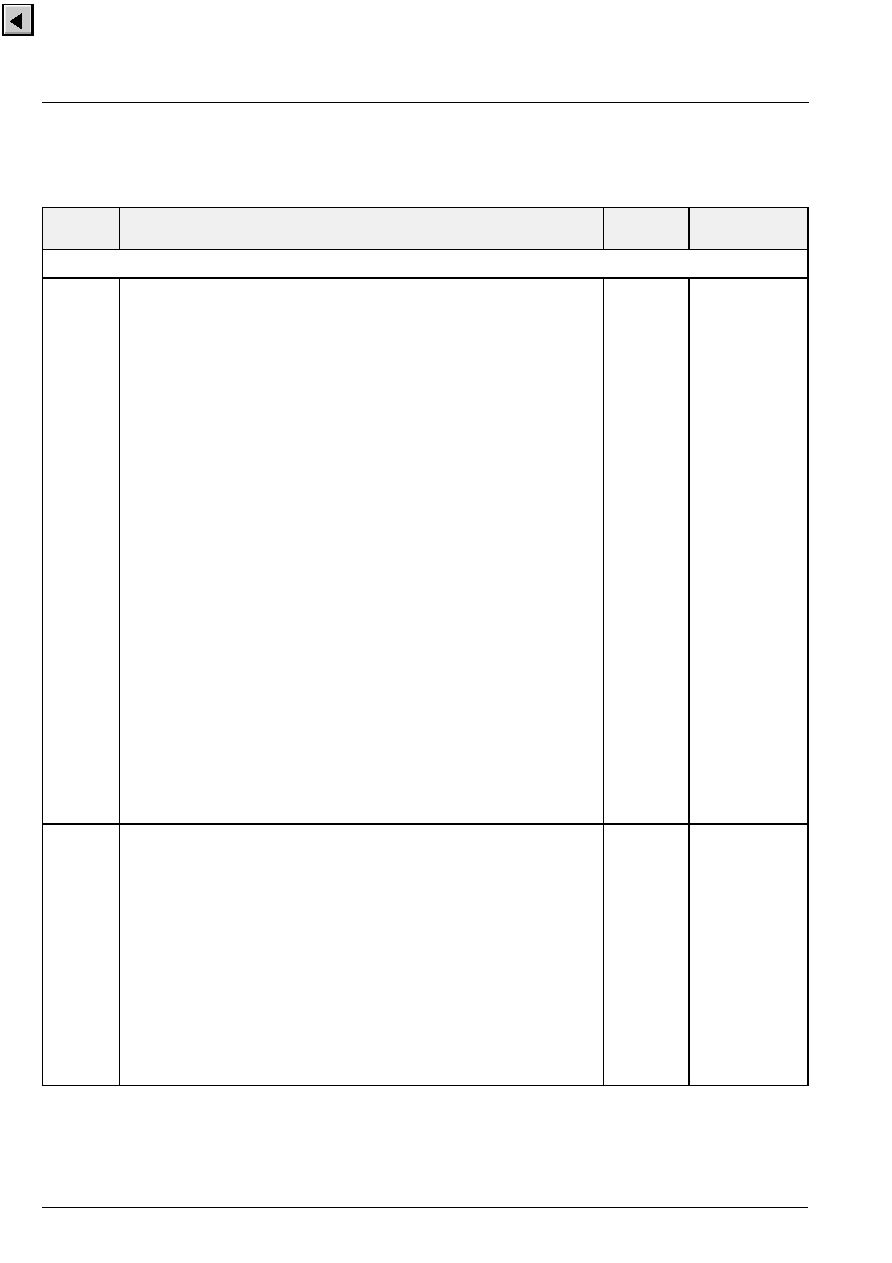
VCT 38xxA
ADVANCE INFORMATION
40
Micronas
Table 2�5: Control registers of the Fast Processor for control of the video front-end functions
-
default values are initializied at reset
FP Sub-
address
Function
Default
Name
Standard Selection
h'20
Standard select:
bit[2:0]
standard
0
PAL B,G,H,I (50 Hz)
4.433618
1
NTSC M
(60 Hz)
3.579545
2
SECAM (50
Hz)
4.286
3
NTSC44
(60 Hz)
4.433618
4
PAL M
(60 Hz)
3.575611
5
PAL N
(50 Hz)
3.582056
6
PAL 60
(60 Hz)
4.433618
7
NTSC COMB (60 Hz)
3.579545
bit[3]
0/1 standard
modifier
PAL modified to simple PAL
NTSC modified to compensated NTSC
SECAM modified to monochrome 625
NTSCC modified to monochrome 525
bit[4]
reserved (set to 0)
bit[5]
0/1
2-H comb filter off/on
bit[6]
0/1
S-VHS mode off/on (2-H comb is switched off)
Option bits allow to suppress parts of the initialization, this can be used
for color standard search:
bit[7]
no hpll setup
bit[8]
no vertical setup
bit[9]
no acc setup
bit[10]
2-H comb filter set-up only
bit[11]
status bit, normally write 0. After the FP has switched to a
new standard, this bit is set to 1 to indicate operation
complete. Standard is automatically initialized when the
insel register is written.
0
SDT
PAL
NTSC
SECAM
NTSC44
PALM
PALN
PAL60
NTSCC
SDTMOD
COMB
SVHS
SDTOPT
h'148
Enable automatic standard recognition (ASR)
bit[0]
0/1
PAL B,G,H,I
(50 Hz)
4.433618
bit[1]
0/1
NTSC M
(60 Hz)
3.579545
bit[2]
0/1
SECAM (50
Hz)
4.286
bit[3]
0/1
NTSC44
(60 Hz)
4.433618
bit[4]
0/1
PAL M
(60 Hz)
3.575611
bit[5]
0/1
PAL N
(50 Hz)
3.582056
bit[6]
0/1
PAL 60
(60 Hz)
4.433618
bit[10:7] reserved set to 0
bit[11]
1
reset status information `switch' in asr_status
(cleared automatically)
0: disable recognition; 1: enable recognition
Note: For correct operation don't change FP reg. 20h and 21h, while
ASR is enabled!
0
ASR_ENA
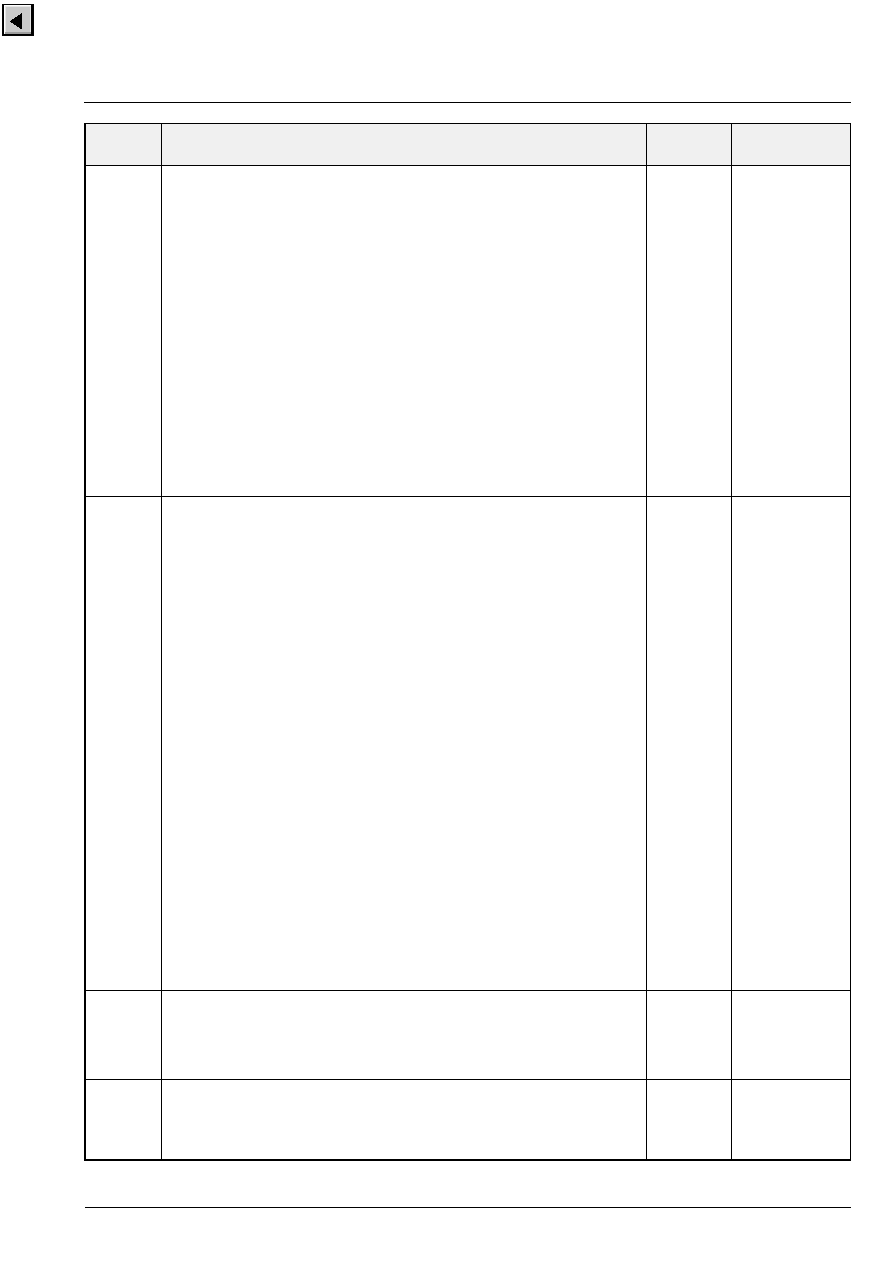
ADVANCE INFORMATION
VCT 38xxA
Micronas
41
h'14e
Status of automatic standard recognition
bit[0]
1
error of the vertical standard (neither 50 nor 60 Hz)
bit[1]
1
detected standard is disabled
bit[2]
1
search active
bit[3]
1
search terminated, but failed
bit[4]
1
no color found
bit[5]
1
standard has been switched (since last reset of this
flag with bit[11] of asr_enable)
bit[4:0]
00000
all ok
00001
search not started, because vwin error detected
(no input or SECAM L)
00010
search not started, because detected vert. standard
not enabled
0x1x0
search started and still active
01x00
search failed (found standard not correct)
01x10
search failed, (detected color standard not enabled)
10000
no color found (monochrome input or switch betw.
CVBS/SVHS necessary)
0
ASR_STATUS
VWINERR
DISABLED
BUSY
FAILED
NOCOLOR
SWITCH
h'21
Input select:
writing to this register will also initialize the standard
bit[1:0]
luma selector
00
VIN1
01
VIN2
10
VIN3
11
VIN4
bit[2]
chroma selector
0
CIN1
1
CIN2
bit[4:3]
IF compensation
00
off
01
6 dB/Okt
10
12 dB/Okt
11
10 dB/MHz only for SECAM
bit[6:5]
chroma bandwidth selector
00
narrow
01
normal
10
broad
11
wide
bit[7]
0/1
adaptive/fixed SECAM notch filter
bit[8]
0/1
enable luma lowpass filter
bit[10:9]
hpll speed
00
no change
01
terrestrial
10
vcr
11
mixed
bit[11]
status bit, write 0, this bit is set to 1 to indicate
operation complete.
00
0
00
01
INSEL
VIS
CIS
IFC
CBW
FNTCH
LOWP
HPLLMD
h'22
Available for versions with panorama scaler only!
picture start position, this register sets the start point of active video,
this can be used e.g. for panning. The setting is updated when 'sdt'
register is updated.
0
SFIF
h'23
luma/chroma delay adjust. The setting is updated when 'sdt' register is
updated.
bit[5:0]
reserved, set to zero
bit[11:6]
luma delay in clocks, allowed range is +1 ...
-
7
0
LDLY
FP Sub-
address
Function
Default
Name
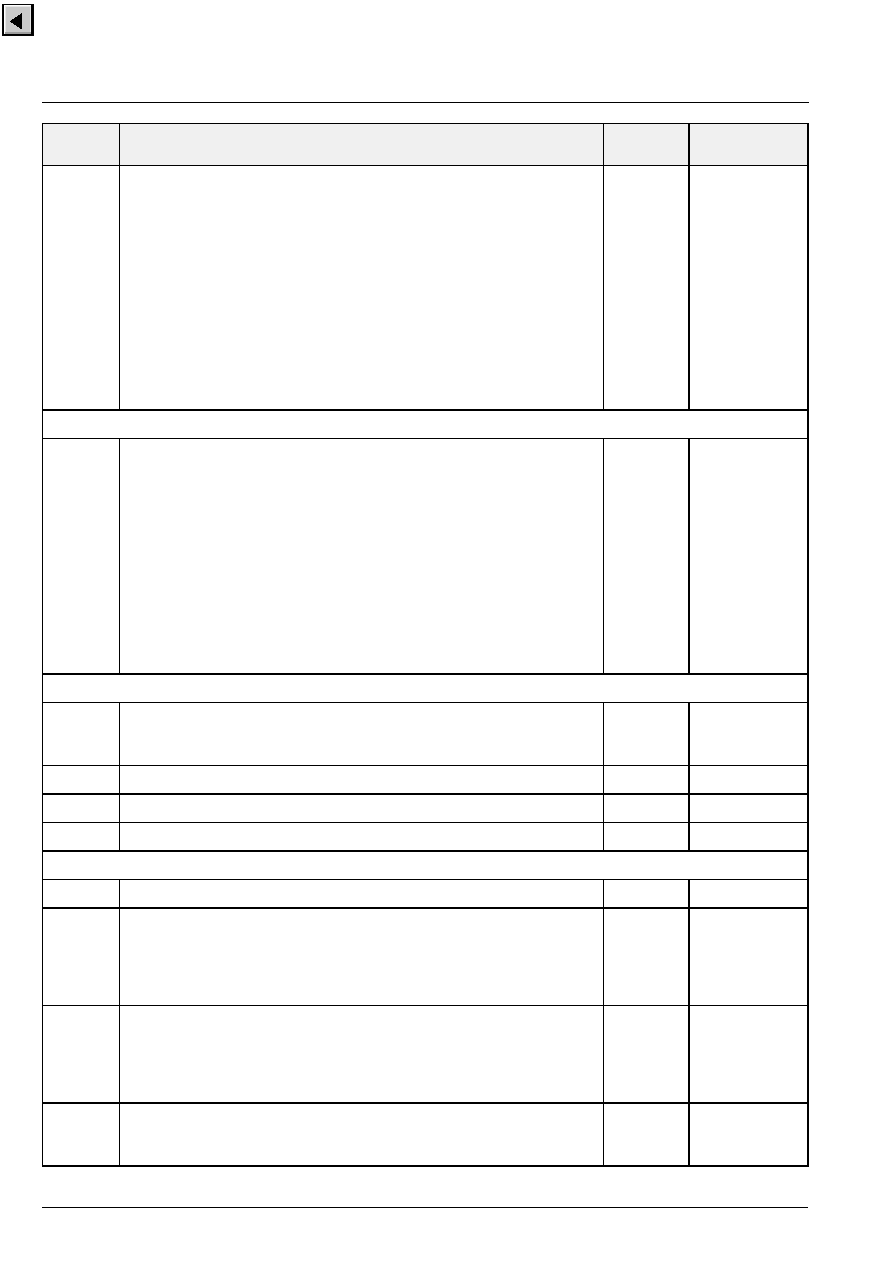
VCT 38xxA
ADVANCE INFORMATION
42
Micronas
h'2f
YC
r
C
b
mode control register
bit[6:0]
reserved (set to 0)
bit[7]
1
ADC over-/underflow
(has to be reset after read if used)
bit[8]
0
disable/enable YC
r
C
b
bit[9]
ADC range
0
nominal input amplitude (
�
350 mV)
1
extented input amplitude (
�
500 mV)
bit[11:10]
reserved (set to 0)
Note: Activate the YC
r
C
b
mode by
-
enabling YC
r
C
b
-
selecting simple PAL or NTSC M, svhs=1, comb=0 in the std register
-
setting cbw=2 in the insel register
0
YC
r
C
b
Comb Filter
h'27
comb filter control register
bit[0]
0
comb coefficients are calculated for luma/chroma
1
comb coefficients for luma are used for luma and
chroma
bit[1]
0
luma comb strength depends on signal amplitude
1
luma comb strength is independent of amplitude
bit[2]
0
reduced comb booster
1
max comb booster
bit[4:3]
0..3
comb strength for chroma signal
bit[6:5]
0..3
comb strength for luma signal
bit[11:7]
0..31 overall limitation of the calculated comb coefficients
0
no limitation
31
max limitation (1/2)
0
0
1
3
2
0
CMB_UC
CC
DAA
KB
KC
KY
CLIM
Color Processing
h'30
Saturation control
bit[11:0]
0...4094 (2070 corresponds to 100% saturation)
4095
disabled (test mode only)
2070
ACC_SAT
h'39
amplitude killer level (0:killer disabled)
25
KILVL
h'3a
amplitude killer hysteresis
5
KILHY
h'dc
NTSC tint angle,
�
512 =
�
/4
0
TINT
DVCO
h'f8
crystal oscillator center frequency adjust,
-
2048 ... 2047
-
720
DVCO
h'f9
crystal oscillator center frequency adjustment value for line-lock mode
True adjust value is DVCO
-
ADJUST. For factory crystal alignment,
using standard video signal: set DVCO = 0, set lock mode, read crystal
offset from ADJUST register and use negative value for initial center
frequency adjustment via DVCO.
read only
ADJUST
h'f7
crystal oscillator line-locked mode, lock command/status
write: 100
enable lock
0
disable lock
read: 0
unlocked
>2047
locked
0
XLCK
h'b5
crystal oscillator line-locked mode, autolock feature. If autolock is
enabled, crystal oscillator locking is started automatically.
bit[11:0]
threshold; 0: autolock off
400
AUTOLOCK
FP Sub-
address
Function
Default
Name
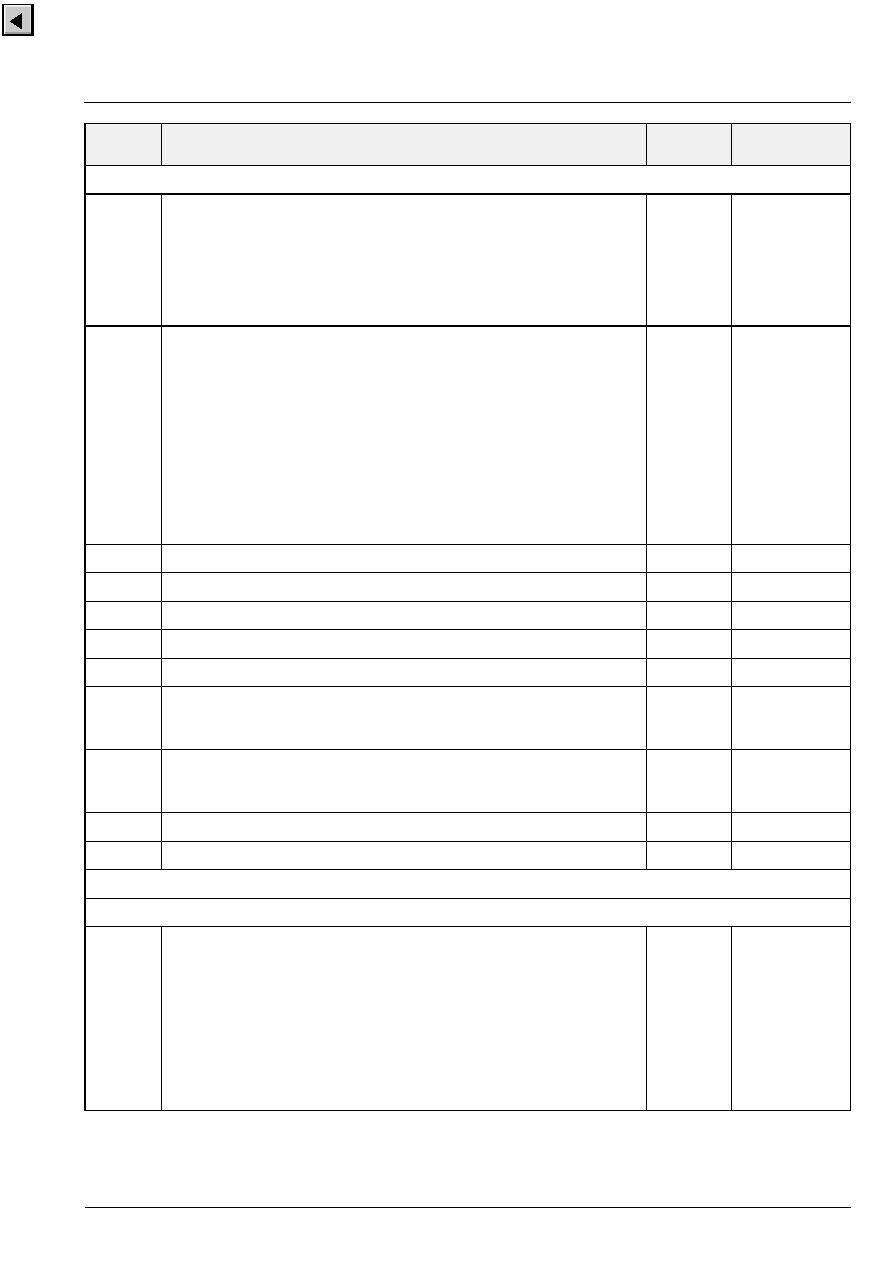
ADVANCE INFORMATION
VCT 38xxA
Micronas
43
FP Status
h'12
general purpose control bits
bit[2:0]
reserved, do not change
bit[3]
vertical standard force
bit[8:4]
reserved, do not change
bit[9]
disable flywheel interlace
bit[11:10]
reserved, do not change
to enable vertical free run mode set vfrc to 1 and dflw to 0
0
1
GPC
VFRC
DFLW
h'13
standard recognition status
bit[0]
1
vertical lock
bit[1]
1
horizontally locked
bit[2]
no signal detected
bit[3]
1
color amplitude killer active
bit[4]
1
disable amplitude killer
bit[5]
1
color ident killer active
bit[6]
1
disable ident killer
bit[7]
1
interlace detected
bit[8]
1
no vertical sync detection
bit[9]
1
spurious vertical sync detection
bit[11:10]
reserved
-
ASR
h'14
input noise level
read only
NOISE
h'cb
number of lines per field, P/S: 312, N: 262
read only
NLPF
h'15
vertical field counter, incremented per field
VCNT
h'74
measured sync amplitude value, nominal: 768 (PAL), 732 (NTSC)
read only
SAMPL
h'36
measured burst amplitude
read only
BAMPL
h'f0
firmware version number
bit[7:0]
internal revision number
bit[11:8]
firmware release
read only
SW_VERSION
h'170
status of macrovision detection
bit[0]
AGC pulse detected
bit[1]
pseudo sync detected
read only
MCV_STATUS
h'171
bit[11:0]
first line of macrovision detection window
6
MCV_START
h'172
bit[11:0]
last line of macrovision detection window
15
MCV_STOP
Horizontal Scaler
1)
these registers are updated when the scaler mode register is written
h'40
scaler mode register
bit[1:0]
scaler mode
0
linear scaling mode
1
nonlinear scaling mode, 'panorama'
2
nonlinear scaling mode, 'waterglass'
3
reserved
bit[10:2]
reserved, set to 0
bit[11]
scaler update
0
start scaler update command,
when the registers are updated the bit is set to 1
0
SCMODE
MODE
SCUP
FP Sub-
address
Function
Default
Name
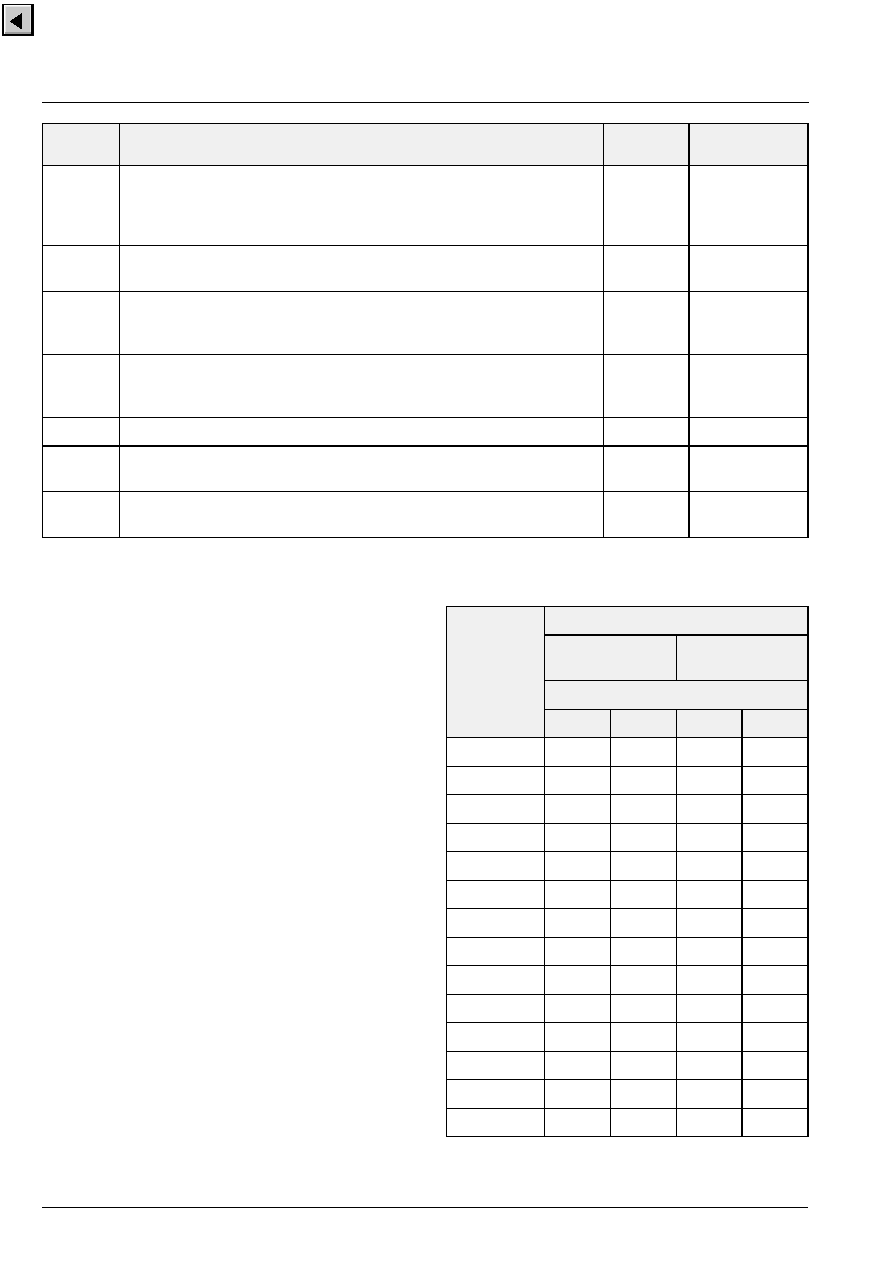
VCT 38xxA
ADVANCE INFORMATION
44
Micronas
2.15.1.1. Scaler Adjustment
In case of linear scaling, most of the scaler registers
need not be set. Only the scaler mode, active video
length, and the fixed scaler increments (scinc1/scinc2)
must be written.
The adjustment of the scaler for nonlinear scaling
modes should use the parameters given in Table 2�6.
h'41
luma offset register
1)
bit[6:0]
luma offset 0..127
ITU-R output format:
57
CVBS output format:
4
57
YOFFS
h'42
active video length for 1-h FIFO
1)
bit[11:0]
length in pixels
1080
FFLIM
h'43
scaler1 compression coefficient
1)
For compression by a factor c the value c*1024 is required.
bit[11:0]
allowed values from 1024..4095
1024
SCINC1
h'44
scaler2 expansion coefficient
1)
For expansion by a factor c the value 1/c*1024 is required.
bit[11:0]
allowed values from 256..1024
1024
SCINC2
h'45
scaler1/2 nonlinear scaling coefficient
1)
0
SCINC
h'47
-
h'4b
scaler1 window controls
1)
5 12-bit registers for control of the nonlinear scaling
0
SCW1_0
-
4
h'4c
-
h'50
scaler2 window controls
1)
5 12-bit registers for control of the nonlinear scaling
0
SCW2_0
-
4
FP Sub-
address
Function
Default
Name
Table 2�6: Set-up values for nonlinear scaler modes
Register
Scaler Modes
`waterglass'
border 35%
`panorama'
border 30%
center compression
3/4
5/6
4/3
6/5
scinc1
1643
1427
1024
1024
scinc2
1024
1024
376
611
scinc
90
56
85
56
fflim
945
985
921
983
scw1
-
0
110
115
83
94
scw1
-
1
156
166
147
153
scw1
-
2
317
327
314
339
scw1
-
3
363
378
378
398
scw1
-
4
473
493
461
492
scw2
-
0
110
115
122
118
scw2
-
1
156
166
186
177
scw2
-
2
384
374
354
363
scw2
-
3
430
425
418
422
scw2
-
4
540
540
540
540

ADVANCE INFORMATION
VCT 38xxA
Micronas
45
Table 2�7: Control Registers of the Fast Processor for control of the video backend functions
-
default values are initializied at reset
FP Sub-
address
Function
Default
Name
FP Display Control Register
h'130
White Drive Red
(0...1023)
700
WDR
1)
h'131
White Drive Green
(0...1023)
700
WDG
1)
h'132
White Drive Blue
(0...1023)
700
WDB
1)
h'139
Internal Brightness, Picture (0...511), the center value is 256, the range
allows for both increase and reduction of brightness.
256
IBR
h'13c
Internal Brightness, Measurement (0...511), the center value is 256, the
brightness for measurement can be set to measure at higher cutoff cur-
rent. The measurement brightness is independent of the drive values.
256
IBRM
h'13a
Analog Brightness for external RGB (0...511), the center value is 256, the
range allows for both increase and reduction of brightness.
256
ABR
h'13b
Analog Contrast for external RGB (0...511)
350
ACT
1)
The white drive values will become active only after writing the blue value WDB, latching of new values is indi-
cated by setting the MSB of WDB.
FP Display Control Register, BCL
h'144
BCL threshold current, 0...2047 (max ADC output ~1152)
1000
BCLTHR
h'142
BCL time constant 0...15
13 ... 1700 msec
15
BCLTM
h'143
BCL loop gain. 0..15
0
BCLG
h'145
BCL minimum contrast 0...1023
307
BCLMIN
h'105
Test register for BCL/EHT comp. function, register value:
0
normal operation
1
stop ADC offset compensation
x>1
use x in place of input from Measurement ADC
0
BCLTST
FP Display Control Register, Deflection
h'103
interlace offset,
-
2048..2047
This value is added to the SAWTOOTH output during one field.
0
INTLC
h'102
discharge sample count for deflection retrace,
SAWTOOTH DAC output impedance is reduced for DSCC lines after ver-
tical retrace.
7
DSCC
h'11f
vertical discharge value,
SAWTOOTH output value during discharge operation, typically same as
A0 init value for sawtooth.
-
1365
DSCV
h'10b
EHT compensation vertical gain coefficient, 0...511
0
EHTV
h'10a
EHT compensation time constant, 0...15 --> 3.2..410 msec
15
EHTTM
h'10f
EHT compensation east/west gain coefficient,
-
1024...1023
15
EHTEW

VCT 38xxA
ADVANCE INFORMATION
46
Micronas
2.15.1.2. Calculation of Vertical and East-West
Deflection Coefficients
In Table 2�8 the formula for the calculation of the
deflection initialization parameters from the polynomi-
nal coefficients a,b,c,d,e is given for the vertical and
East-West deflection. Let the polynomial be:
The initialization values for the accumulators a0..a3 for
vertical deflection and a0..a4 for East-West deflection
are 12-bit values. The coefficients that should be used
to calculate the initialization values for different field
frequencies are given below, the values must be
scaled by 128, i.e. the value for a0 of the 50 Hz vertical
deflection is:
FP Display Control Register, Vertical Sawtooth
h'110
DC offset of SAWTOOTH output
This offset is independent of EHT compensation.
0
OFS
h'11b
accu0 init value
-
1365
A0
h'11c
accu1 init value
900
A1
h'11d
accu2 init value
0
A2
h'11e
accu3 init value
0
A3
FP Display Control Register, East-West Parabola
h'12b
accu0 init value
-
1121
A0
h'12c
accu1 init value
219
A1
h'12d
accu2 init value
479
A2
h'12e
accu3 init value
-
1416
A3
h'12f
accu4 init value
1052
A4
Table 2�8: Calculation of Initialization values for
Vertical Sawtooth and East-West Parabola
Vertical Deflection 50 Hz
a
b
c
d
a0
128
�1365.3
+682.7
�682.7
a1
899.6
�904.3
+1363.4
a2
296.4
�898.4
a3
585.9
P = a + b(x � 0.5) + c(x � 0.5)
2
+ d(x � 0.5)
3
+ e(x � 0.5)
4
a0 = (a � 128 � b � 1365.3 + c � 682.7 � d � 682.7) / 128
Vertical Deflection 60 Hz
a
b
c
d
a0
128
�1365.3
+682.7
�682.7
a1
1083.5
�1090.2
+1645.5
a2
429.9
�1305.8
a3
1023.5
East-West Deflection 50 Hz
a
b
c
d
e
a0
128
�341.3
1365.3
�85.3
341.3
a1
111.9
�899.6
84.8
�454.5
a2
586.8
�111.1
898.3
a3
72.1
�1171.7
a4
756.5
East-West Deflection 60 Hz
a
b
c
d
e
a0
128
�341.3
1365.3
�85.3
341.3
a1
134.6
�1083.5
102.2
�548.4
a2
849.3
�161.2
1305.5
a3
125.6
�2046.6
a4
1584.8
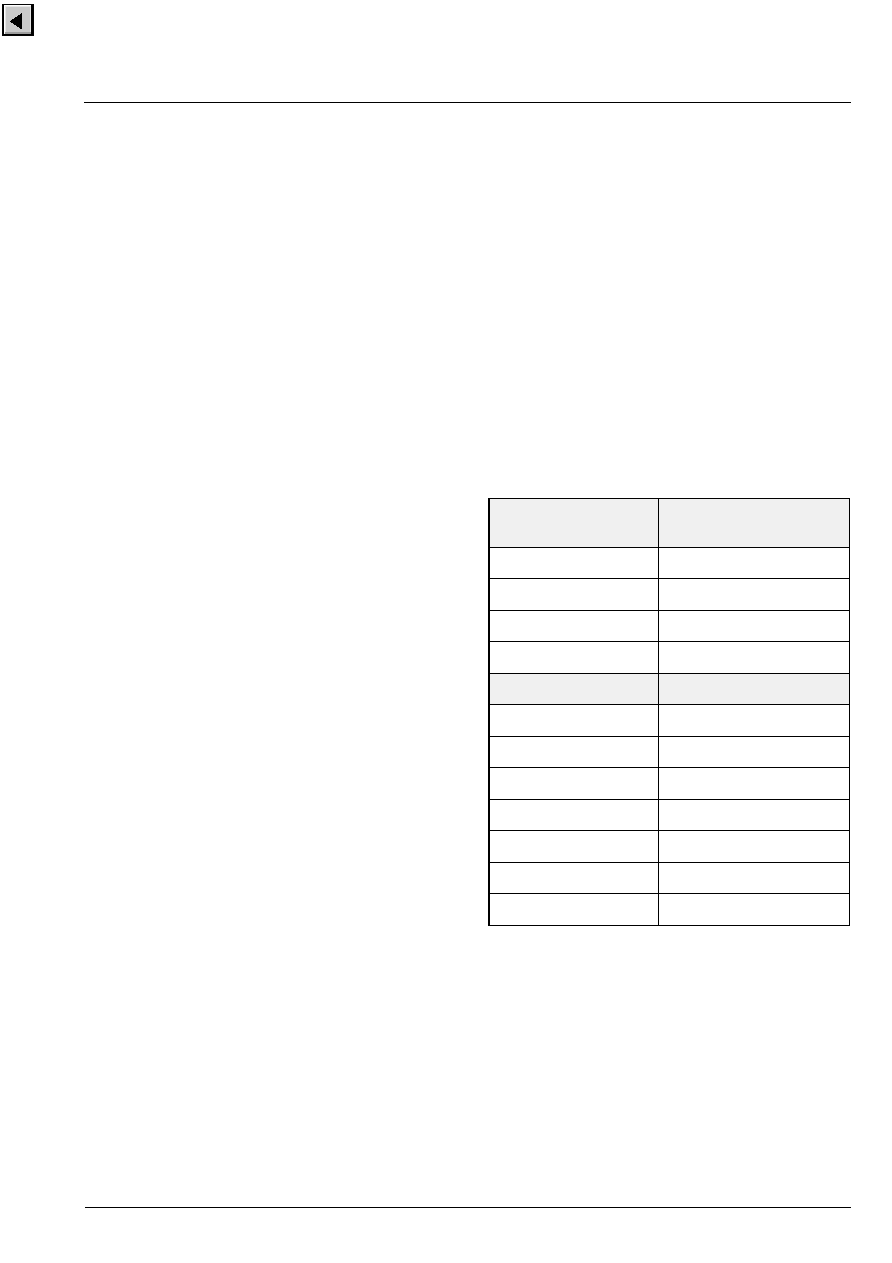
ADVANCE INFORMATION
VCT 38xxA
Micronas
47
3. Text and OSD Processing
3.1. Introduction
The VCT 38xxA includes a World System Teletext
(WST) decoder, whose display capabilities are also
used for OSD generation. In the following sections the
text and OSD processing part of the VCT 38xxA will be
named TPU for short.
With integrated CPU, RAM and ROM, an adaptive data
slicer, a display controller, and a number of interfaces,
the TPU offers acquisition and display of various tele-
text and data services such as WST, PDC, VPS, and
WSS. Fig. 3�1 shows the functional block diagram of
the TPU.
The TPU operates independently from the TV control-
ler and can be controlled by software via I
2
C bus inter-
face (see Section 3.14. on page 82). The TV controller
is not burdened with the task of teletext decoding and
communicates with the TPU via a high-level command
language.
The TPU performs the following tasks:
� teletext data acquisition
(hardware)
� teletext data decoding
(software)
� page generation
(software)
� page memory management
(software)
� page display
(hardware)
� user interface
(software)
3.2. SRAM Interface
The SRAM interface connects a standard SRAM to the
internal bus structure. The address bus is 19 bit wide,
addressing SRAMs up to 4 Mbit. Smaller SRAMs can
also be connected.
The SRAM interface has to handle 3 asynchronous
data streams. The CPU needs access to every mem-
ory location of the SRAM. During VBI the slicer writes
up to 22 teletext lines of 43 Bytes into the acquisition
scratch memory. During text display the display con-
troller copies teletext rows from display memory into its
internal row buffer.
On VCT 38xxA the SRAM interface of the TPU is con-
nected to the memory bus of the TV controller. This is
done to save pins and to give the TV controller faster
access to the display memory. Refer to DMA Interface
(chapter 5.9. on page 96) for more details.
After reset the TPU will not use the SRAM interface
until receiving the I
2
C command "DRAM_MODE" (see
Section 3.12. on page 68).
3.3. Text Controller
The TPU operates with its own 65C02 core running at
10.125 MHz. The core can address up to 64 kBytes of
memory.
The CPU memory contains 640 Bytes RAM, 12 kBytes
program ROM and 12 kBytes character ROM. The
character ROM holds the font data and is separated
from the program ROM to save CPU time. The CPU
can still access the character ROM via a DMA inter-
face including wait cycles. The display controller can
also access the CPU memory via the same DMA inter-
face. By this means it is possible to locate part of the
character font in program ROM or part of the program
code in character ROM.
Table 3�1: Memory map of text controller
Interrupt Vector
Absolute Address
(High Byte, Low Byte)
IRQ
FFFF, FFFE
Reset
FFFD, FFFC
NMI
FFFB, FFFA
Control Word
FFF9
Memory Segment
Absolute Address
Zero Page
0000
-
00FF
Stack Page
0100
-
01FF
OSD Buffer
0100
-
019F
I/O Page
0200
-
02FF
Extra Page
0300
-
037F
Character ROM
5000
-
7FFF
Program ROM
D000
-
FFFF

VCT 38xxA
ADVANCE INFORMATION
48
Micronas
Fig. 3�1: Block diagram of the TPU
TPU
WST
Layer
65C02
DMA
Interface
Character
ROM
Program
ROM
Program
RAM
ADC
Clamping
AGC
I
2
C Bus
Interface
Timer
Interrupt
Watchdog
Slicer
OSD
Layer
Sync
Interface
Color &
Prio
Interface
SRAM
Interface

ADVANCE INFORMATION
VCT 38xxA
Micronas
49
Fig. 3�2: Memory environment of text controller
3.4. Teletext Acquisition
The only task of the slicer circuit is to extract teletext
lines from the incoming composite video signal and to
store them into the acquisition scratch buffer of the
internal/external SRAM. No page selection is done at
this hardware level.
Four analog sources can be connected, thus it is pos-
sible to receive text from one channel while watching
another on the screen. After clamping and AGC ampli-
fier the analog video signal is converted into binary
data. Sync separation is done by a sync slicer and a
horizontal PLL, which generate the horizontal and ver-
tical timing. By these means, no external sync signals
are needed and any available signal source can be
used for teletext reception.
The teletext information itself is acquired using adap-
tive slicers on bit and byte level with soft error detec-
tion to decrease the bit error rate under bad reception
conditions. The slicer can be programmed to different
bit rates for reception of PAL, NTSC or MAC world sys-
tem teletext as well as VPS, WSS, or CAPTION sig-
nals.
3.5. Teletext Page Management
As a state-of-the-art teletext decoder, the TPU is able
to store and manage a sufficient number of teletext
pages to absorb the annoying transmission cycle
times. The number of available pages is only limited by
the memory size. With an intelligent software and a
4-Mbit SRAM it is possible to store and to control more
than 500 teletext pages.
The management of such a data base is a typical soft-
ware task and is therefore performed by the 65C02.
Using a fixed length page table with one entry for every
possible page, the software distributes the content of
the acquisition scratch buffer among the page memory.
The page size is fixed to 1 kByte, only ghost rows are
chained in 128-Byte segments to avoid unused mem-
ory space.
A stored teletext page cannot be displayed directly,
because of the row-adaptive transmission and the
level 2 enhancements (row 26
-
29). Therefore, the
CPU has to transfer the selected teletext page into a
display page buffer, adding extra data such as charac-
ter set extension and non-spacing attributes.
3.5.1. Memory Manager
The Memory manager is the core of the internal TPU
firmware. Most of the acquisition and display related
functions are controlled by this management.
Fig. 3�3: Memory Manager
DMA
Interface
12K
Program ROM
12K
Character ROM
Zero Page
Stack Page
I/O Page
ADR
DATA
BE
RDY
65C02
BUSREQ
Display
DATA
ADR
Extra Page
8000
1000
0000
D000
Display
Memory
Memory
Manager
Display
Controller
Page
Memory
Page
Table
Scratch
Memory
Acquisition
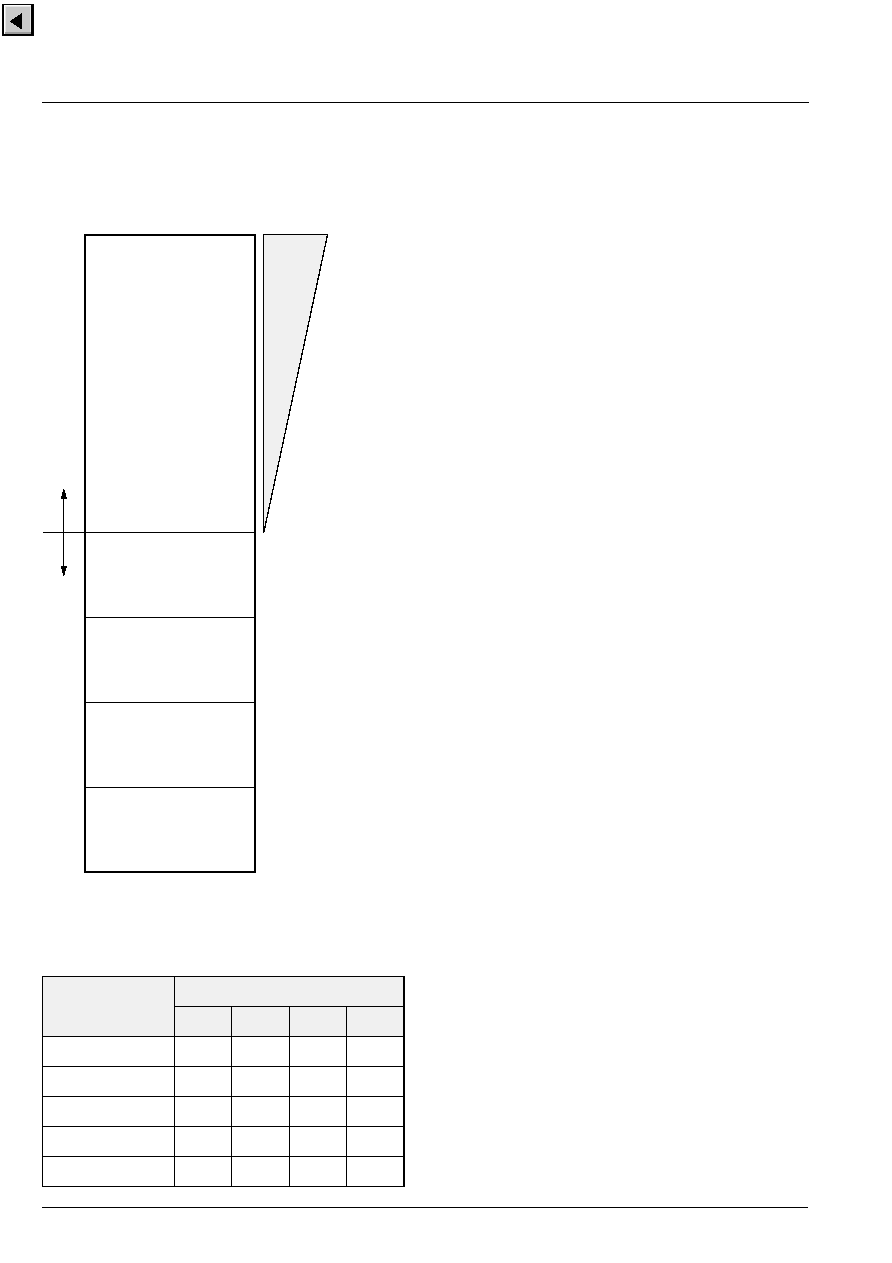
VCT 38xxA
ADVANCE INFORMATION
50
Micronas
3.5.2. Memory Organization
The upper end of the memory is defined by the SRAM
size, the lower end can be defined with the
PAGE_MEMORY command. Default memory organi-
zation is shown in Fig. 3�4.
Fig. 3�4: Memory organization
The memory organization depends on available SRAM
size. If external SRAM is not available, there is only
one display bank for OSD and teletext and the page
memory starts at a different location (see Table 3�1).
3.5.3. Page Table
The memory management is based on a fixed size
page table, which has entries for every hexadecimal
page number from 100 to 8FF. The page table starts
with page 800 and contains a 2-Byte page pointer for
every page.
The page table can be read with the command
READ_PAGE_INFO sending the page number and
reading the 2-Byte page pointer containing:
� SRAM pointer
� cycle flag
� memory flag
� subpage flag
� update flag
� protection flag
The SRAM pointer gives the location where the page
is stored in memory. The page size is fixed to 1 kByte,
only ghost rows are allocated dynamically.
The cycle flag will be set as soon as this page is
detected in the transmission cycle even if it cannot be
stored in memory. Only if the page is really stored in
memory, the memory flag will be set. The subpage flag
will be set for every page in cycle if the page subcode
is different from 0000H or 3F7FH. The update flag is
set every time a page is stored and will be reset only
for the display page after updating the display memory.
A page with protection flag set will never be removed
from memory.
The memory manager uses page priorities to decide
which pages should be stored or removed from mem-
ory. If no more memory is available, pages with lowest
priority are removed automatically and the higher prior-
ity pages are stored at their place. By setting the page
priority the programmer has control over the memory
management.
The page table is fully controlled by the memory man-
ager and should never be written by external software.
To change the page table flags the command
CHANGE_PAGE_INFO can be used.
Table 3�1: Memory Organisation
Memory
Segment
Address
SRAM Size
128k
19k
16k
3k
Display Bank
h'3000
h'4000
h'3000
h'0000
TTX Bank
h'2000
h'4000
h'3000
h'0000
Page Table
h'0000
h'0000
h'0000
no
Acquisition Scratch
h'1000
h'1000
h'1000
no
Page Memory
h'4000
h'1800
h'1800
no
08 00 00 = 4Mbit
02 00 00 = 1Mbit
00 80 00 = 256Kbit
00 40 00
00 30 00
00 20 00
00 10 00
00 00 00
4 kBytes
TTX Display Bank
n x 1 kByte
Page Memory
SRAM
4 kBytes
Display Bank
4 kBytes
Page Table
4 kBytes
Acquisition
Scratch

ADVANCE INFORMATION
VCT 38xxA
Micronas
51
Fig. 3�5: Page format
Table 3�2: Page Table Format
Index
2-Byte Page Pointer
000
start magazine 8
001
...
100
Cycle
Flag
Memory
Flag
Subpage
Flag
11-bit SRAM Pointer
Update
Flag
Protect
Flag
...
1F0
hexadecimal pages (e.g. TOP)
...
7FE
7FF
end magazine 7
status
language
12
-
14
control
4
-
11
subcode in
subcode req
priority
subcode
high
subcode
low
index
page
mag
1 kByte page data
row flag
0
-
7
row flag
8
-
15
row flag
16
-
23
row flag
24
-
31
ghost row pointer subpage pointer
8 Byte
8 Byte
packet x/01
packet x/24
packet x/00
24 Byte
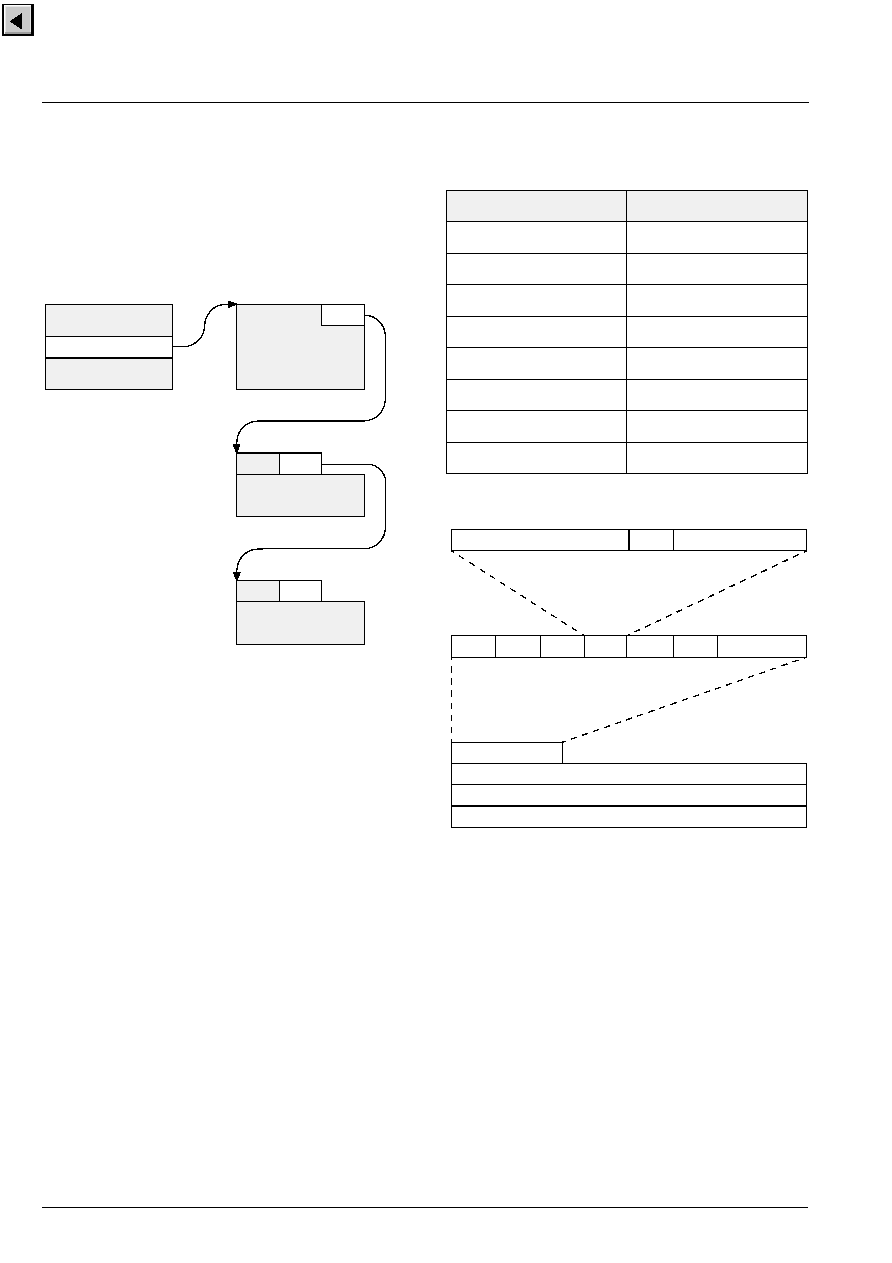
VCT 38xxA
ADVANCE INFORMATION
52
Micronas
3.5.4. Ghost Row Organization
Page-related ghost rows are stored in blocks of
128 Bytes. These ghost blocks are linked together
using 2-Byte ghost row pointers. The first pointer can
be found in the basic page, all following pointers are
part of the block header. A zero pointer indicates the
end of the chain.
Fig. 3�6: Ghost row organization
Every ghost block contains 3 ghost rows which can be
identified by 3 row identification bytes in the block
header. The row identification contains designation
code and row number. The row number is reduced to a
3-bit tag. All ghost rows in one block belong to the
same page. If the memory manager removes a page
from memory, the linked ghost blocks will also be
removed.
Fig. 3�7: Ghost block structure
3.5.5. Subpage Manager
Any page in cycle can have a number of subpages,
identified by subcode. In normal mode the subpage
manager will acquire only one subpage of every
requested page. This subpage can be any if subcode
FFFF is requested or it will be selected according to
the requested subcode.
After a PAGE_REQUEST command with subcode
F0xx, the subpage manager will acquire all subpages
of the requested page. The subpages will be chained
in the same order as they are transmitted, i.e. every
new subcode will be added at the end of chain. The
page table entry points to the subpage which was
transmitted first after the page request. The
READ_PAGE_INFO command will reply the page
table pointer and the actual number of subpages in
chain.
After a PAGE_REQUEST command with subcode
F1xx, the subpage manager will acquire all subpages
of the requested page but will allocate only a limited
amount of memory to store these subpages. The
parameter "page subcode low" will define the length (in
number of subpages) of a ring buffer in page memory
which will hold the recently received subpages. In this
case, the READ_PAGE_INFO command will return an
index pointing to the most recently updated subpage in
chain, together with the subcode of this page.
ghost
pointer
Page Table
page 100
page pointer
ghost
pointer
ghost block
0000
ghost block
Table 3�3: Ghost Row Identification
Row Number Tag
Row
000
empty
001
row 25
010
row 26
011
row 27
100
row 28
101
row 29
110
row 30
111
row 31
3-bit row number
4-bit designation code
`aa'
`aa'
`aa'
row 2
row 1
row 3
ghost row pointer
40 Byte row 1 data
40 Byte row 2 data
40 Byte row 3 data
8 Byte block header

ADVANCE INFORMATION
VCT 38xxA
Micronas
53
The DISPLAY_PAGE_REQUEST command searches
and displays a page according to the requested dis-
play subcode. The search starts from page table and
continues through the subpage chain if there is any. A
rolling header will be displayed if the requested sub-
page cannot be found in memory.
A requested display subcode FFFF (don't care sub-
code) will only search and display the first subpage in
chain, thus there is no rolling subpage anymore. A
DISPLAY_PAGE_REQUEST command with subcode
F0xx (follow subcode) will search and display the last
received subpage in chain, thus it is possible to
request all subpages in background while still showing
rolling subpages in display.
Fig. 3�8: Subpage organization
3.6. WST Display Controller
The display controller reads data from a display page
buffer in the internal/external SRAM. The display page
buffer is organized in rows which are separated into
level 1 data such as character codes and spacing
attributes and into level 2 data, such as character set
extension and non-spacing attributes. To limit the
memory amount for level 2 data, a slightly modified
stack model is used, in which one pointer bit for every
character location indicates the presence of additional
parallel attributes. Fig. 3�9 shows the organization of
the stack row buffer. In this stack model the number of
non-spacing attributes per row is limited to 40, which
agrees with the WST and CEPT specification.
Fig. 3�9: Stack Row Buffer
The display controller includes two row buffers. The
first row buffer holds a copy of a teletext row from the
display page buffer. This decreases the data rate
through the SRAM interface by a factor of 10 or 8,
because new teletext row data is needed only after
10 lines in PAL or 8 lines in NTSC mode. The second
row buffer stores all display attributes in parallel, to
allow level 2 display without additional decoding.
page 100
subcode 0002
0000
page 100
subcode 0001
subpage
pointer
page 100
subcode 0003
subpage
pointer
page pointer
Page Table
Level 2 Buffer
1
1
1
1
1
1
1
1
0
0
0
0
0
0
0
0
0
0
0
0
1
1
1
1
0
0
0
0
0
0
Pointer
Char 36 Attr.
Char 38
Char 40
Char 39
Char 36
Char 37
Level 1 Buffer
Char 10 Attr.
Char 1
Char 2
Char 3
Char 4
Char 5
Char 6
Char 7
Char 8
Char 9
Char 10
Char 3 Attr.
Char 3 Attr.
Char 3 Attr.
Char 3 Attr.
Char 6Attr.
Char 6 Attr.
Char 6 Attr.
Char 10 Attr.
Char 10 Attr.

VCT 38xxA
ADVANCE INFORMATION
54
Micronas
To present a WST level 2 display, the teletext display
controller has to evaluate the following attributes in
parallel, that is for every character location:
� 10-bit character code
� 5-bit foreground color
� 5-bit background color
� 2-bit size
� 5-bit flash
� 1-bit invert
� 1-bit separated
� 1-bit conceal
� 1-bit underline
� 1-bit boxing/window
Additional attributes are defined to improve the display
of CAPTION and OSD text:
� 1-bit italics
� 1-bit shadow
� 1-bit color mode
The display controller delivers 5-bit digital color infor-
mation, a shadow signal for contrast reduction, and a
fast blank signal. The color bus is used to address the
color-lookup-table (CLUT) in the video processor. By
this means, the full level 2 color spectrum can be dis-
played.

ADVANCE INFORMATION
VCT 38xxA
Micronas
55
3.7. Display Memory
The TPU supports a variable number of display memo-
ries, each 4 kBytes large. One bank is used to store
the display information of the selected teletext page.
The bank location can be defined with the command
DISPLAY_TTX_POINTER. Other banks can be used
to store any kind of display data in level 1 or level 2 for-
mat. Switching between these banks is fast and can be
programmed with the command DISPLAY_POINTER.
Bank switching allows generation of OSD menus with-
out affecting the teletext display.
Fig. 3�10: Display memory organization (level 2)
Display Bank
40 Byte level 1
40 Byte level 2
full row attr.
40-bit pointer
40 Byte level 1
40 Byte level 2
full row attr.
40-bit pointer
40 Byte level 1
40 Byte level 2
full row attr.
40-bit pointer
40 Byte level 1
40 Byte level 2
full row attr.
40-bit pointer
40 Byte level 1
40 Byte level 2
full row attr.
40-bit pointer
40 Byte level 1
40 Byte level 2
full row attr.
40-bit pointer
TTX Display Bank
Row 0
Row 0
Row 1
Row 1
Row 46
Row 25
SRAM
autoincrement
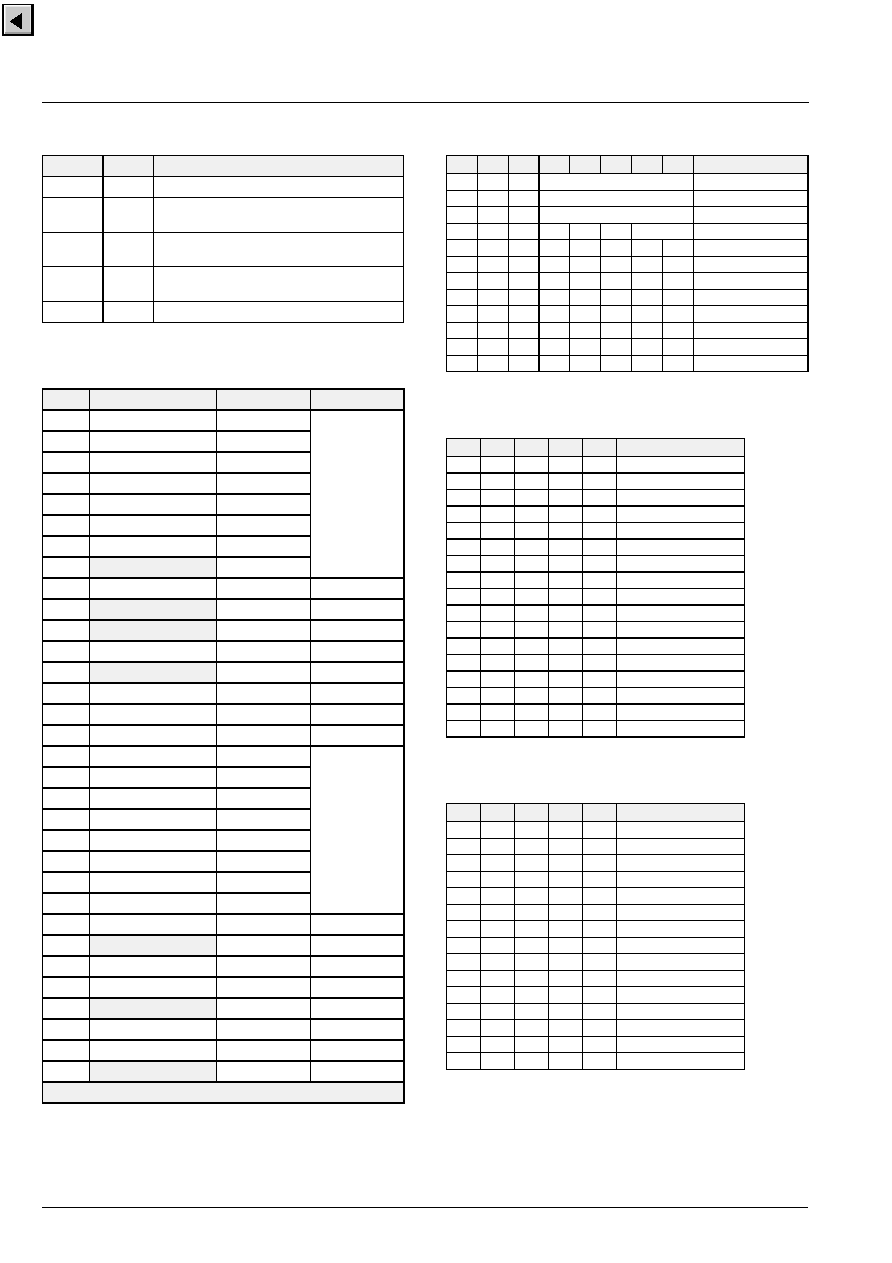
VCT 38xxA
ADVANCE INFORMATION
56
Micronas
Table 3�5: Full row attribute
+ 55H
R/W
Full Row Attribute
Bit
Reset
Function
7
-
1 = row is displayed blank
0 = row is displayed using row data
6
-
1 = row is displayed in double height
0 = row is displayed in normal height
5
-
1 = row is displayed in level 2 mode
0 = row is displayed in level 1 mode
4 to 0
-
5-bit value defining full row background color
Table 3�6: Level 1 spacing attributes
Code
Function
Action
Notes
00
Alpha Black
set alpha
mode and
foreground
color of
following alpha
characters
select
character set 0
01
Alpha Red
02
Alpha Green
03
Alpha Yellow
04
Alpha Blue
05
Alpha Magenta
06
Alpha Cyan
07
Alpha White
08
Flash Normal
09
Flash Off
set at
0A
Boxing Off
set at double
0B
Boxing On
set at double
0C
Size Normal
set at
0D
Size Double Height
0E
Size Double Width
0F
Size Double
10
Mosaic Black
set mosaic
mode and
foreground
color of
following
mosaic
characters
select
character set 1
11
Mosaic Red
12
Mosaic Green
13
Mosaic Yellow
14
Mosaic Blue
15
Mosaic Magenta
16
Mosaic Cyan
17
Mosaic White
18
Conceal
set at
19
Contiguous Mosaic
set at
1A
Separated Mosaic
set at
1B
ESC
1C
Black Background
set at
1D
New Background
set at
1E
Hold Mosaic
set at
1F
Release Mosaic
Shaded attributes are default at start of each display row.
Table 3�7: Level 2 parallel attributes
7
6
5
4
3
2
1
0
Function
P
0
0
Color
Foreground Color
P
0
1
Color
Background Color
P
1
0
Flash
Flash Mode
P
1
1
0
0
L
Set
Character Set
P
1
1
0
1
0
DH
DW
Size
P
1
1
0
1
1
0
U
Underline/Separated
P
1
1
0
1
1
1
I
Inverted
P
1
1
1
0
0
0
C
Conceal
P
1
1
1
0
0
1
W
Window/Boxing
P
1
1
1
0
1
0
S
Shadow
P
1
1
1
0
1
1
IT
Italic
P
1
1
1
1
0
0
CM
Color Mode
Table 3�8: Color look-up table
4
3
2
1
0
Display Color
0
0
0
0
0
Black
0
0
0
0
1
Red
0
0
0
1
0
Green
0
0
0
1
1
Yellow
0
0
1
0
0
Blue
0
0
1
0
1
Magenta
0
0
1
1
0
Cyan
0
0
1
1
1
White
0
1
0
0
0
Transparent
0
1
0
0
1
Reduced Red
0
1
0
1
0
Reduced Green
0
1
0
1
1
Reduced Yellow
0
1
1
0
0
Reduced Blue
0
1
1
0
1
Reduced Magenta
0
1
1
1
0
Reduced Cyan
0
1
1
1
1
Reduced White
1
x
x
x
x
Programmable
Table 3�4: Flash modes
4
3
2
1
0
Function
0
0
0
0
0
Off
0
0
0
0
1
Normal
0
0
1
0
1
Normal Fast Phase 1
0
1
0
0
1
Normal Fast Phase 2
0
1
1
0
1
Normal Fast Phase 3
0
0
0
1
0
Inverted
0
0
1
1
0
Inverted Fast Phase 1
0
1
0
1
0
Inverted Fast Phase 2
0
1
1
1
0
Inverted Fast Phase 3
0
0
0
1
1
Color Table
0
0
1
1
1
Color Table Phase 1
0
1
0
1
1
Color Table Phase 2
0
1
1
1
1
Color Table Phase 3
1
0
0
x
x
Incremental
1
0
1
x
x
Decremental
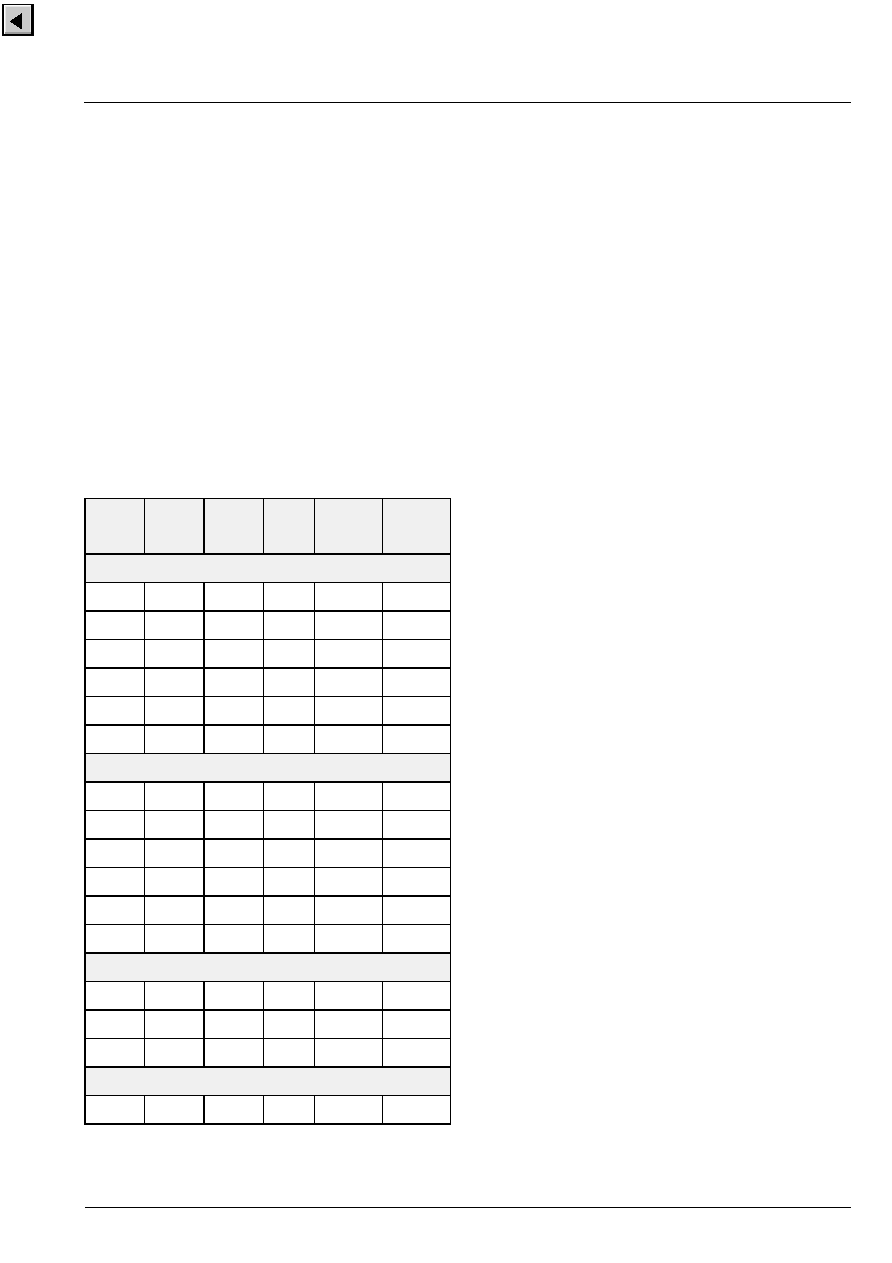
ADVANCE INFORMATION
VCT 38xxA
Micronas
57
3.8. Character Generator
Characters are addressed using a 10-bit character
code. The 2 MSBs of the character code define 1 of 4
character sets. Character set selection is done using
level 2 parallel attributes (see Table 3�7 on page 56).
Each character set contains 224 characters. The first
32 characters in each character set are reserved for
control codes (see Table 3�6 on page 56). On a single
screen, 896 different characters can be displayed.
Characters can be displayed in several pixel resolu-
tions provided that the according font is available. The
character generator supports horizontal resolution of
8 or 10 pixel/char and vertical resolution of 8, 10, or
13 lines/char. Characters can be combined without
separating borders to create more complex character
definitions (e.g. kanji or icons).
The pixel clock can be either 10.125 MHz or
20.25 MHz. To get 10-bit pixel information from the
character font, two memory cycles are needed. The
character font is part of the mask-programmable ROM,
but supplied with its own bus structure (see Fig. 3�2 on
page 49). By this means the data transfer between
character ROM and teletext display controller does not
stop the CPU.
Both bus structures are connected via a memory inter-
face which allows cross-connections using DMA or
wait cycles. If the character font size exceeds
12 kBytes, part of the character font can be shifted into
the program ROM which causes DMA cycles. There-
fore only less frequently used characters should be
placed into the program ROM. Vice versa seldom used
CPU code can be put into the character ROM.
The WST specification defines a number of 7-bit code
tables, which are filled with 96 characters only (the
MSB is used for parity check). In the G0 code table
some characters have several language dependent
variations. Additionally characters from the G0 code
table can be combined with diacritical marks from the
G2 code table (row 26). Furthermore different code
tables are defined for languages like cyrillic, greek or
arabic. Thus it is not possible to simply transform the
code tables into a continuous character font ROM with-
out getting unused ROM space and multiple defined
character fonts.
This problem is solved by implementing a character
code mapping (see Fig. 3�11 on page 58). The
5 MSBs of each character code are mapped into
another 5-bit code which is then used to address the
character font ROM. By this means the whole charac-
ter font is subdivided into 32 blocks of 32 characters
which can freely be distributed over the 4 character
sets.
The character code mapping is implemented as RAM
and can be programmed by software. After reset the
TPU initializes the mapping RAM for standard WST
latin code tables.
The TV controller can select predefined mappings for
latin, cyrillic and arabic teletext via the command
DISPLAY_MODE (see Table 3�16 on page 70). The
same command allows selection of a user defined
mapping which has to programmed in advance using
command USER_MAPPING.
Table 3�9: Character resolutions
matrix
(h x v)
char/sc
reen
(PAL)
char/sc
reen
(NTSC)
osd
width
# char in
12k font
# char in
20k font
single character
8 x 8
40 x 32
40 x 28
32
�
s
1600
2560
10 x 8
40 x 32
40 x 28
40
�
s
1280
2048
8 x 10
40 x 26
40 x 22
32
�
s
1280
2048
10 x 10
40 x 26
40 x 22
40
�
s
1024
1638
8 x 13
40 x 20
40 x 17
32
�
s
800
1280
10 x 13
40 x 20
40 x 17
40
�
s
640
1024
combined character (2 x 2)
16 x 16
20 x 16
20 x 14
32
�
s
400
640
20 x 16
20 x 16
20 x 14
40
�
s
320
512
16 x 20
20 x 13
20 x 11
32
�
s
320
512
20 x 20
20 x 13
20 x 11
40
�
s
256
409
16 x 26
20 x 10
20 x 8.5
32
�
s
200
320
20 x 26
20 x 10
20 x 8.5
40
�
s
160
256
combined character (2 x 1)
16 x 10
20 x 26
20 x 22
32
�
s
640
1024
16 x 13
20 x 20
20 x 17
32
�
s
400
640
20 x 13
20 x 20
20 x 17
40
�
s
320
512
combined character (1x 2)
10 x 16
40 x 16
40 x 14
40
�
s
640
1024

VCT 38xxA
ADVANCE INFORMATION
58
Micronas
3.8.1. Character Code Mapping
Fig. 3�11: Character code mapping
Character Set 0
G2
National
National
National
National
National
National
National
National
10-bit Character Code = 2-bit Character Set (level 2) + 8-bit Character Value (level 1)
000H
080H
100H
180H
200H
280H
300H
G3
G3
G3
User
User
User
User
380H
Mapping RAM
32 x 5 bit
G2
G2
G2
User
User
User
User
G1
G0
G1
User
User
User
G3
G3
12800 Byte
Character ROM
G2
G2
User
G1
National
G1
National
National
G0
G0
G0
National
G0
G0
G0
block of 32 char
G3
Greek
Greek
Cyrillic
Cyrillic
Cyrillic
Hebrew
Arabic
Arabic
Arabic
00
01
02
03
04
05
06
07
08
09
10
11
12
13
14
15
16
17
18
19
20
21
22
23
24
25
26
27
28
29
30
31
Character Set 1
Character Set 2
Character Set 3
08
09
10
11
12
13
14
15
00
01
02
03
04
05
06
07
16
17
18
19
20
21
22
23
24
25
26
27
28
29
30
31
Font Pointer
Farsi

ADVANCE INFORMATION
VCT 38xxA
Micronas
59
3.8.2. Character Font ROM
The character font ROM is mask-programmable.
Design of customer specific characters (user font) is
supported by a WindowsTM based PC tool named
MOFA (Micronas OSD and Font Assembler). In combi-
nation with the VCT 38xxA emulator board it is possi-
ble to download character fonts and verify them on the
TV screen.
Fig. 3�12: Character font ROM

VCT 38xxA
ADVANCE INFORMATION
60
Micronas
3.8.3. Latin Font Mapping
Fig. 3�13: Latin font mapping
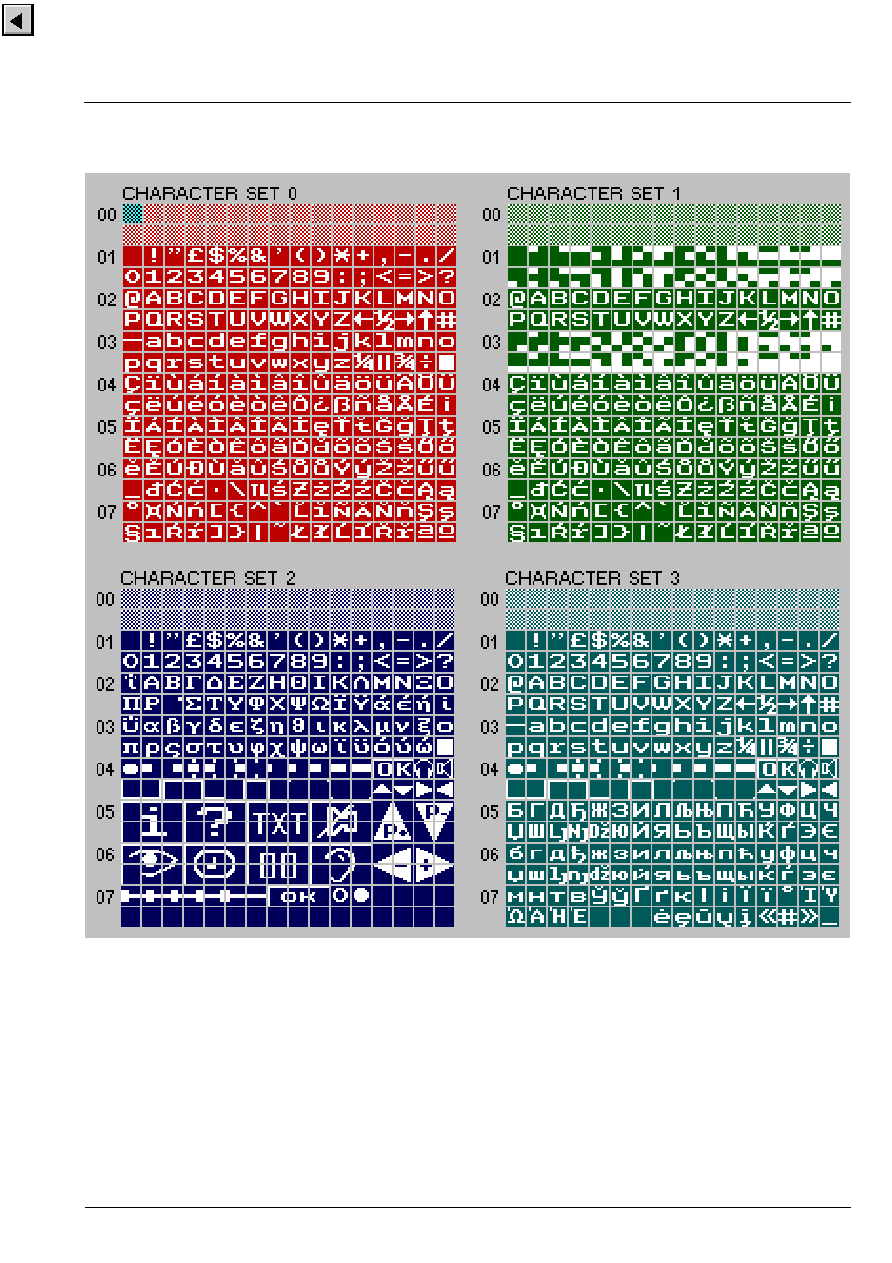
ADVANCE INFORMATION
VCT 38xxA
Micronas
61
3.8.4. Cyrillic Font Mapping
Fig. 3�14: Cyrillic font mapping
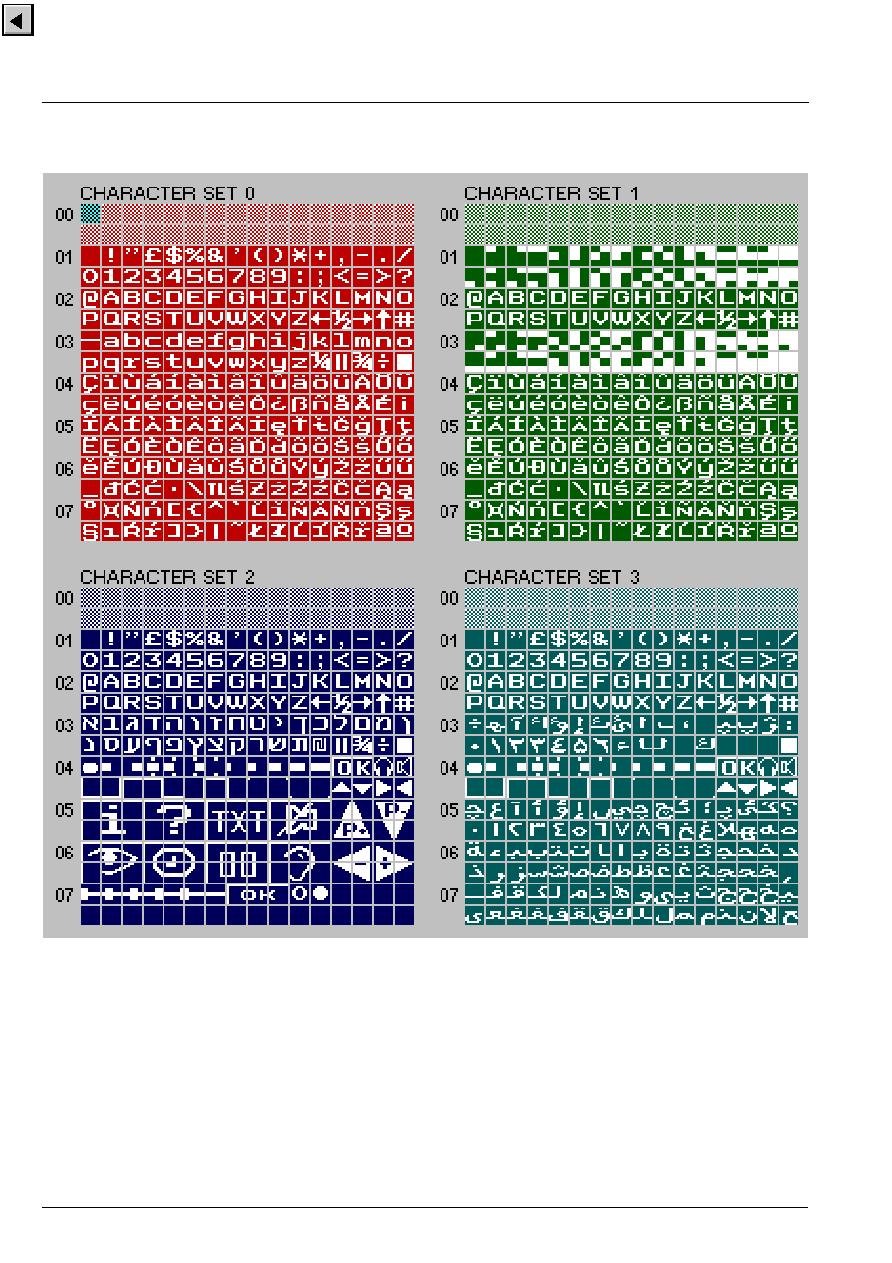
VCT 38xxA
ADVANCE INFORMATION
62
Micronas
3.8.5. Arabic Font Mapping
Fig. 3�15: Arabic font mapping
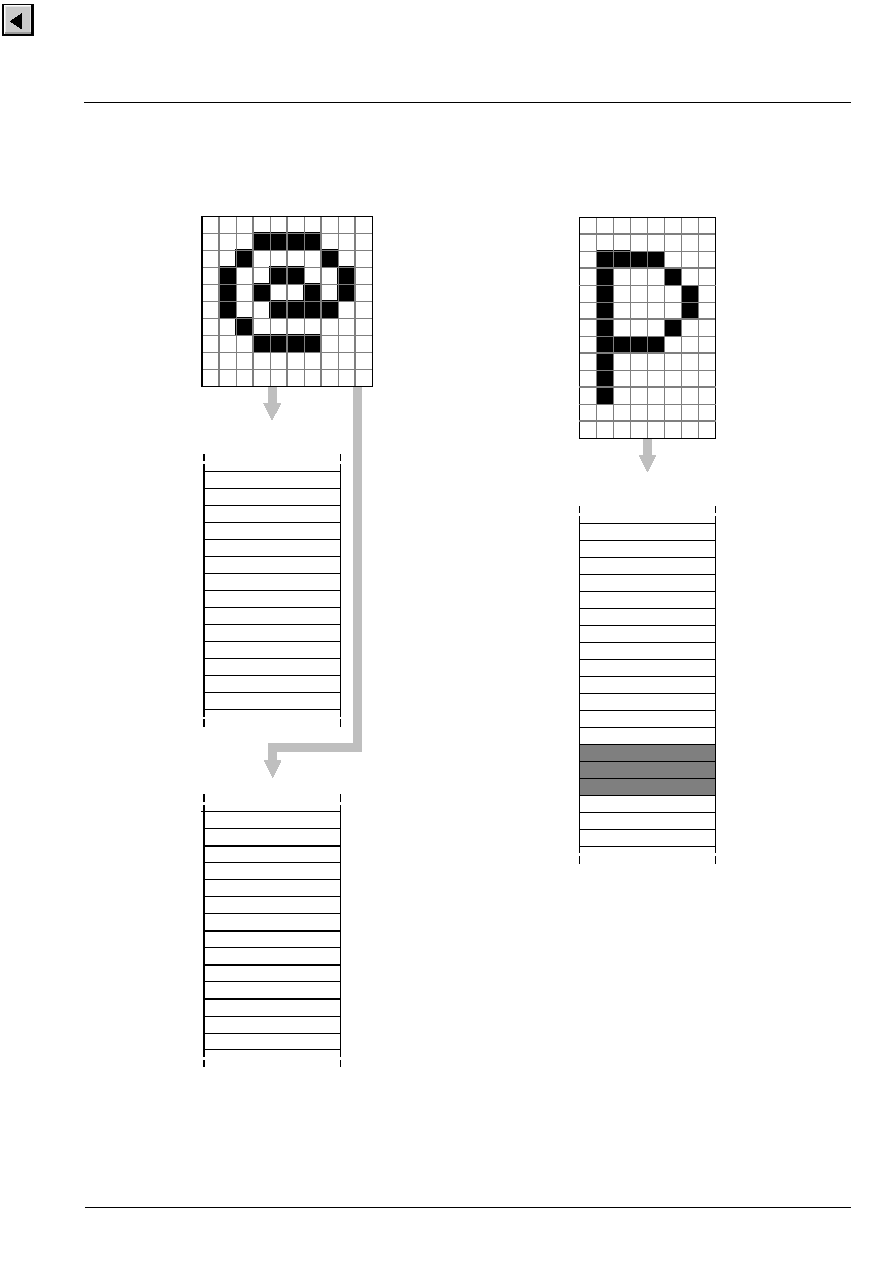
ADVANCE INFORMATION
VCT 38xxA
Micronas
63
3.8.6. Character Font Structure
Fig. 3�16: Font Structure 10 x 10
Fig. 3�17: Font structure 8 x 13
Line 1
Line 2
Line 3
Line 4
Line 5
Line 6
Line 7
Line 8
Line 9
Line 10
Line 1
Line 2
Line 3
Line 4
Line 5
Line 6
Line 7
Line 8
Line 9
Line 10
Line 1
Line 2
Line 3
Line 4
`@`
`@`
`@`
`@`
`@`
`@`
`@`
`@`
`@`
`@`
`A`
`A`
`A`
`A`
Character Font
`A`
`A`
`A`
`A`
`A`
`A`
`A`
`A`
`A`
`A`
`E`
`E`
`E`
`E`
`B`
`B`
`B`
`B`
`B`
`B`
`B`
`B`
`B`
`B`
`F`
`F`
`F`
`F`
`@`
`@`
`@`
`@`
`@`
`@`
`@`
`@`
`@`
`@`
`D`
`D`
`D`
`D`
`C`
`C`
`C`
`C`
`C`
`C`
`C`
`C`
`C`
`C`
`G`
`G`
`G`
`G`
Extension Font
Line 1
Line 2
Line 3
Line 4
Line 5
Line 6
Line 7
Line 8
Line 9
Line 10
Line 1
Line 2
Line 3
Line 4
LSB
MSB
0
9
Line 1
Line 2
Line 3
Line 4
Line 5
Line 6
Line 7
Line 8
Line 9
Line 10
Line 1
Line 2
Line 3
Line 4
Line 5
Line 6
Line 7
Line 8
Line 9
Line 10
Line 11
Line 12
Line 13
Line 14
`P`
`P`
`P`
`P`
`P`
`P`
`P`
`P`
`P`
`P`
`Q`
`Q`
`Q`
Character Font
LSB
MSB
0
7
Line 11
Line 12
Line 13
Line 15
Line 16
Line 1
Line 2
Line 3
`P`
`P`
`P`
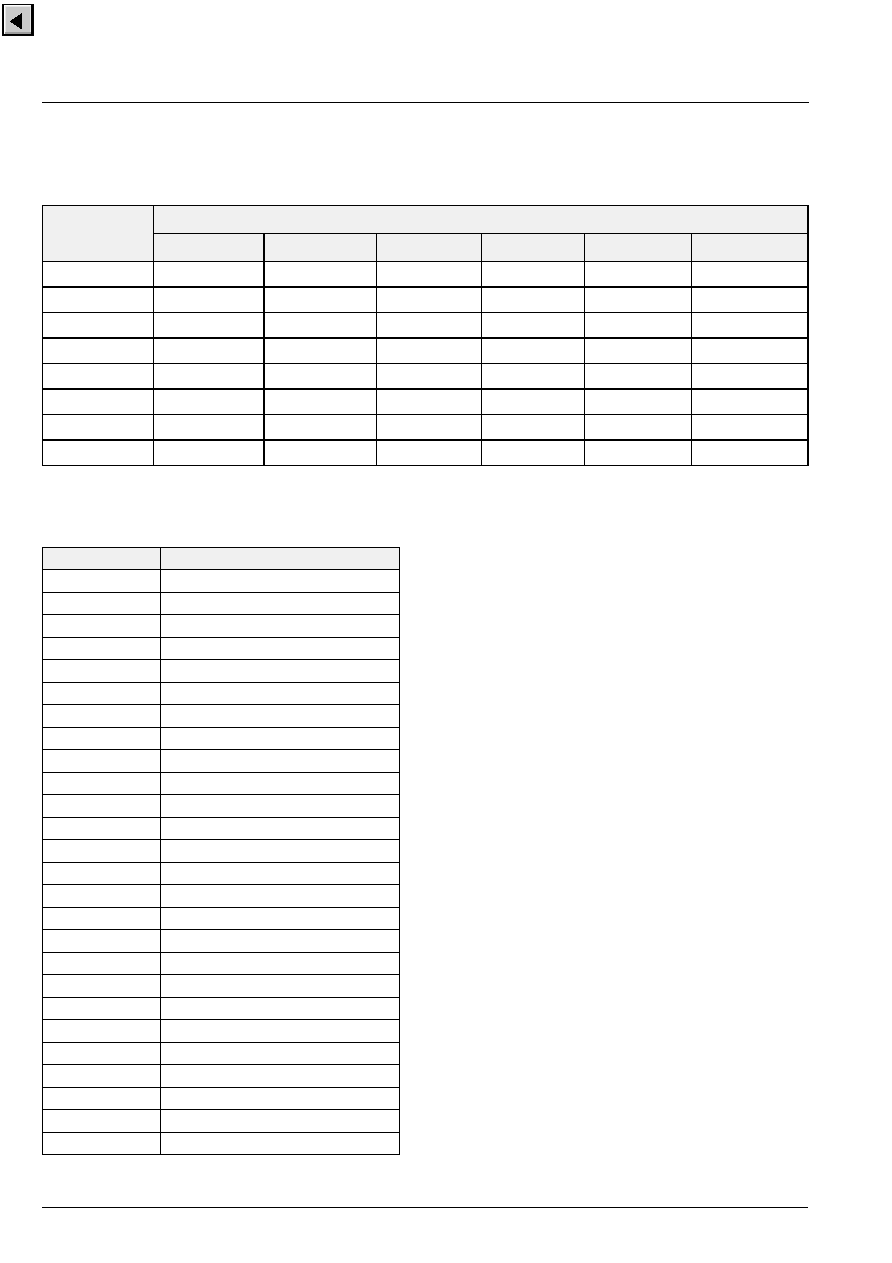
VCT 38xxA
ADVANCE INFORMATION
64
Micronas
3.9. National Character Mapping
Table 3�10: Character set options
Option Bits
C14,C13,C12
Character Set
6
38
40
55
70
128
000
English
Polish
English (US)
English
English (US)
programmable
001
French
French
French
French
Slovakian
programmable
010
Swedish
Swedish
Swedish
Swedish
Hungarian
programmable
011
Czech
Czech
Czech
Turkish
Serbian
programmable
100
German
German
German
German
Albanian
programmable
101
Spanish
Serbian
Spanish
Spanish
Polish
programmable
110
Italian
Italian
Italian
Italian
Turkish
programmable
111
Estonian
Estonian
Estonian
Estonian
Rumanian
programmable
Table 3�11: Language codes
Code
Language
0
English
1
French
2
Swedish, Finnish
3
Czech
4
German
5
Spanish
6
Italian
7
Estonian, Finnish
8
English (US)
9
Slovakian
10
Hungarian
11
Serbian, Croatian, Slovene
12
Albanian
13
Polish
14
Turkish
15
Rumanian
16
Cyrillic (Russian, Bulgarian)
17
Greek
18
Cyrillic (Serbian, Montenegro)
19
YU Latin
20
Arabic
21
Hebrew
22
Farsi
23
Lettish, Lithuanian
24
Cyrillic (Ukrainian)
25
-
255
not defined
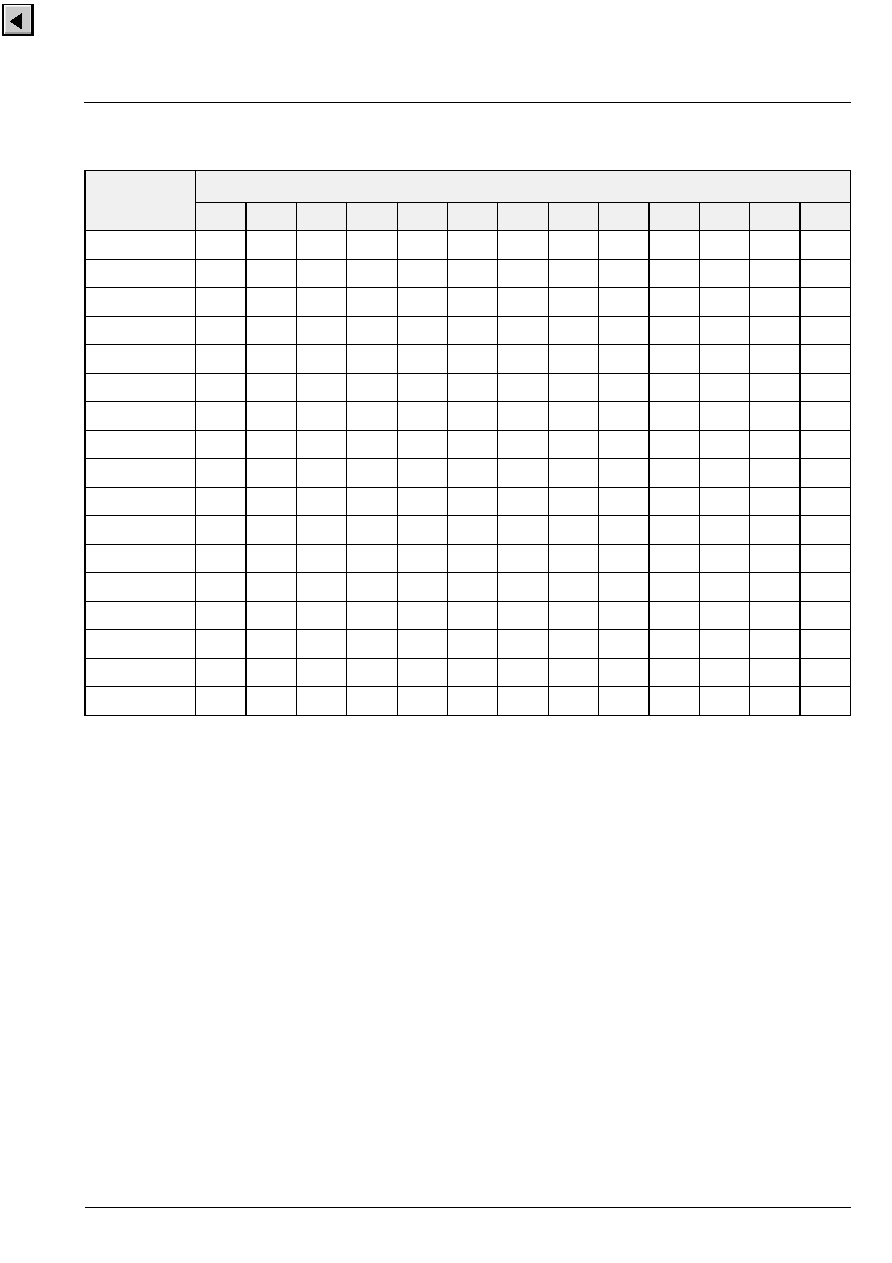
ADVANCE INFORMATION
VCT 38xxA
Micronas
65
Table 3�12: National option mapping
Language
G0/G1 Table Position
2/3
2/4
4/0
5/11
5/12
5/13
5/14
5/15
6/0
7/11
7/12
7/13
7/14
Albanian
5/15
2/4
13/12
13/2
12/12
12/3
11/12
9/1
13/13
13/3
12/13
13/1
11/13
Czech
5/15
12/9
13/13
10/11
12/13
12/11
8/4
15/13
9/3
8/3
12/0
9/2
11/13
English
2/3
2/4
4/0
5/11
5/12
5/13
5/14
5/15
6/0
7/11
7/12
7/13
7/14
English (US)
5/15
2/4
4/0
14/4
13/5
15/4
14/6
13/0
14/7
14/5
15/6
15/5
15/7
Estonian, Finnish
5/15
11/11
11/12
8/13
8/14
12/12
8/15
11/10
11/13
8/10
8/11
12/13
8/12
French
9/3
8/1
8/5
9/1
9/7
8/2
8/8
5/15
9/5
8/7
9/8
8/9
9/0
German
5/15
2/4
15/0
8/13
8/14
8/15
14/6
13/0
14/0
8/10
8/11
8/12
9/10
Hungarian
5/15
9/2
9/14
8/4
8/14
10/1
12/15
11/15
9/3
9/4
8/11
8/3
8/12
Italian
2/3
2/4
9/3
14/0
9/0
5/13
5/14
5/15
8/2
8/5
9/6
9/5
8/6
Polish
5/15
14/3
13/15
13/8
12/7
15/8
13/3
9/4
10/9
13/9
13/7
15/9
13/11
Rumanian
5/15
14/1
10/14
10/5
14/14
14/11
10/6
15/1
10/15
8/7
14/15
12/5
8/8
Serbian, Croatian
5/15
2/4
13/12
13/2
12/12
12/3
11/12
13/0
13/13
13/3
12/13
13/1
11/13
Slovakian
5/15
12/9
13/13
10/11
12/13
12/11
8/4
15/13
9/3
8/3
12/0
9/2
11/13
Spanish
9/0
2/4
9/15
8/3
9/3
8/4
9/4
9/2
9/9
8/12
9/11
9/5
8/5
Swedish, Finnish
5/15
14/1
9/14
8/13
8/14
9/13
8/15
13/0
9/3
8/10
8/11
9/12
8/12
Turkish
13/6
10/13
10/8
14/14
8/14
8/0
8/15
10/12
15/1
14/15
8/11
9/0
8/12
YU Latin
5/15
2/4
13/12
13/2
12/12
12/3
11/12
13/0
13/13
13/3
12/13
13/1
11/13
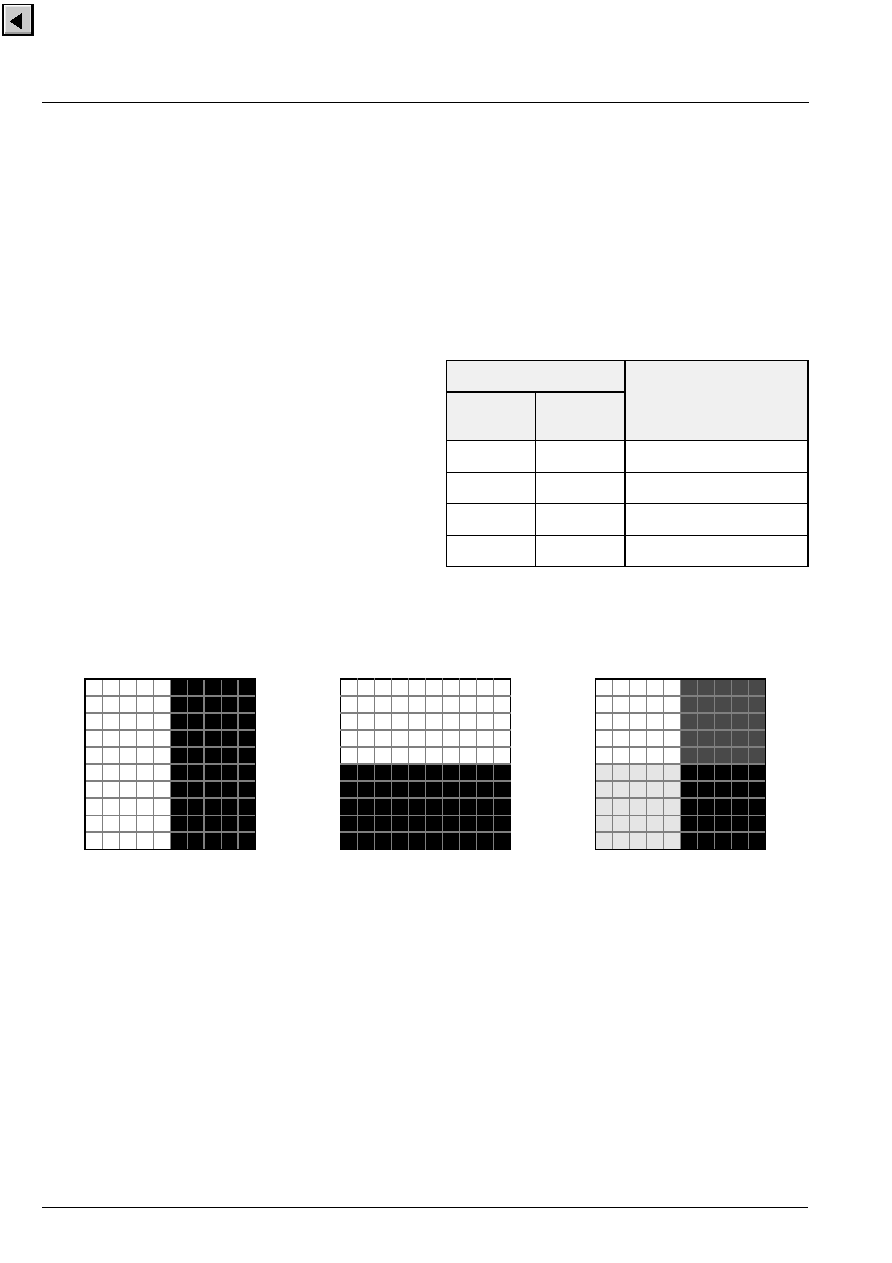
VCT 38xxA
ADVANCE INFORMATION
66
Micronas
3.10.Four-Color Mode
In "Four-Color Mode" the color depth of single or multi-
ple characters can be increased to 4 colors (e.g. to dis-
play icons or 3-D effects). A special font organization is
required because two consecutive characters will be
combined. The number of 4-colored characters is only
limited by font size.
The "Four-Color Mode" is controlled via the level 2 par-
allel attribute "Color Mode". Setting the bit CM to 1
activates the "Four-Color Mode" until the end of row or
until the bit CM is set to 0 again. At the start of each
display row the "Four-Color Mode" is disabled.
A character with active "Four-Color Mode" attribute will
be combined with its font neighbor to define a 2
bit/pixel character matrix. The 2 additional colors are
derived from the active foreground and background
colors by inverting bit 3 of the color code. Using the
programmable part of the CLUT it is possible to display
characters in 4 out of 4096 colors.
If the "Four-Color Mode" attribute is set for a character
with even character code n, this character is combined
with its font neighbor addressed by code n + 1. If the
"Four-Color Mode" attribute is set for a character with
odd character code, this character is combined with
itself.
The neighbor character does not change the definition
of foreground and background pixel which is used to
control flash and mix mode.
Fig. 3�18: Four-color mode
Table 3�13: Color Allocation
Pixel Definition
Color Allocation
Character
n
Character
n+1
0
0
background
1
0
foreground
0
1
background .xor. 8
1
1
foreground .xor. 8
Matrix of Character n
Matrix of Character n+1
4 Color Display
+
=
00
10
01
11
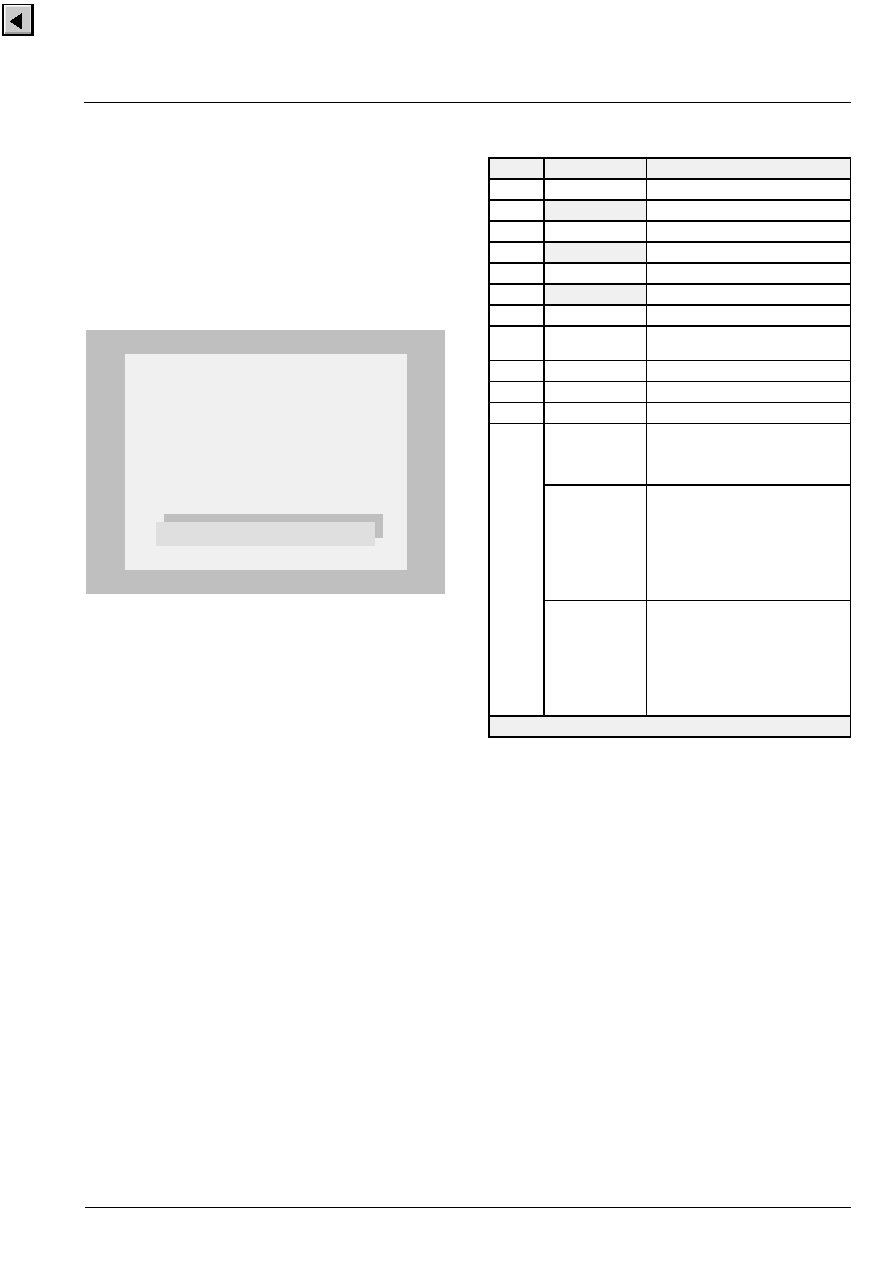
ADVANCE INFORMATION
VCT 38xxA
Micronas
67
3.11.OSD Layer
Apart from the WST layer, there is an additional OSD
layer on chip. The OSD layer accesses the CPU mem-
ory via DMA to read text, display attributes, and char-
acter font information. The color outputs of the OSD
layer can have higher priority than the WST layer out-
puts. Thus, it is possible to overlay the teletext display
with an additional layer for user guidance (see Fig. 3�
19).
Fig. 3�19: Display layer
The OSD layer reads text strings addressed by a pro-
grammable text pointer. Codes smaller than 80h will
address the character font, codes greater or equal 80h
are interpreted as control codes to change color or
character set (see Table 3�14). After reading a control
code the OSD layer will do an additional read to get the
next character code.
OSD Layer
WST Layer
Full Screen Layer
Code
Function
Notes
01
Underline On
only for 13 scanlines/character
02
Underline Off
03
Flash On
04
Flash Off
05
Italics On
06
Italics Off
07
Transparent
layer becomes transparent
08
Shadow
layer becomes transparent and
contrast is reduced to 66%
0C
END
end of layer
0D
CR
end of text line
0E
-
7F
ASCII Character
using font 1 or font 2
80
-
FF
Control Code
Only one control code per character
is allowed. Depending on OSD
Mode, the control code defines
either color or character set.
Color
bit 0 = foreground color blue
bit 1 = foreground color green
bit 2 = foreground color red
bit 3 = background color blue
bit 4 = background color green
bit 5 = background color red
bit 6 = replace white by transparent
bit 7 = 1
Character Set
bit 0 = bit 7 of character code
bit 1 = bit 8 of character code
bit 2 = bit 9 of character code
bit 3 =
bit 4 =
bit 5 =
bit 6 = latching shift to character set
bit 7 = 1
Shaded attributes are default at start of each text line.

VCT 38xxA
ADVANCE INFORMATION
68
Micronas
3.12.Command Language
The TPU supports a command language, allowing the
TV controller to start complex processing inside the
TPU with simple commands. The TV controller is not
burdened with time consuming tasks like page search-
ing or data shuffling.
Table 3�15 lists all available commands. For a more
detailed description of the command language see
Table 3�16.
The application software has to send commands to the
TPU via I
2
C bus using the command subaddresse
SUB4 (see Section 3.14.1.3. on page 83).
Table 3�15: Command language cross reference
Code Dec.
Code Hex.
Command Name
No. Write
Parameter
No. Read
Parameter
Status Register
0
00
Dummy
0
0
x000 0000
1
01
Reset
0
0
x000 0000
2
02
Escape
0
0
x000 0000
3
03
Version
0
2
x000 0000
4
04
Test
0
0
x000 0000
5
05
Test
0
0
x000 0000
6
06
DRAM Mode
3
0
x000 0000
7
07
Acquisition Mode
5
2
x000 0000
8
08
Display Mode
4
0
x000 0000
9
09
Display TTX Pointer
2
0
x000 0000
10
0a
Display Pointer
3
0
x000 0000
11
0b
Display Clear
2
0
x000 0000
12
0c
Page Request
8
3
x0x0 0000
13
0d
Display Time Pointer
2
0
x000 0000
14
0e
Read DRAM Size
0
3
x000 0000
15
0f
Read VPS
0
15
x0x0 0000
16
10
Read Quality
0
4
x000 0000
17
11
Read Display Mode
0
4
x000 0000
18
12
Read Reset Source
0
1
x000 0000
19
13
Read Rolling Header
0
24
x000 0000
20
14
Read Page Info
2
7
x000 0000
21
15
Read Page Row
5
40
x0x0 0000
22
16
Change Page Info
3
0
x000 0000
23
17
Search MPET
0
1 + (n*4)
x0x0 0000
24
18
Read Display Page
0
4
x000 0000
25
19
Page Memory
2
0
x000 0000
26
1a
Display Page Request
5
0
x000 0000
27
1b
Page Table Reset
0
0
x000 0000
28
1c
Search Next Page
3
6
x0x0 0000
29
1d
Read Page Cycle
0
9
x000 0000
30
1e
Read TOP Code
2
2
x000 0000
31
1f
Read Rolling Time
0
8
x000 0000
32
20
Copy Page Row
8
0
x0x0 0000
33
21
Copy Data
7
0
x000 0000
34
22
Search Next TOP Code
3
4
x0x0 0000
35
23
Read Ghost Row
6
40
x0x0 0000

ADVANCE INFORMATION
VCT 38xxA
Micronas
69
36
24
Read 8/30 Row
1
40
x0x0 0000
37
25
Read Priority
0
5
x000 0000
38
26
Page Priority
2
0
x000 0000
39
27
Search AIT
0
1 + (n*4)
x0x0 0000
40
28
Read TOP Status
0
2
x000 0000
41
29
Search AIT Title
2
17
x0x0 0000
42
2a
Reset Ghost Row Status
0
0
x000 0000
43
2b
Search MPT
0
1 + (n*4)
x0x0 0000
44
2c
Copy AIT Title
5
17
x0x0 0000
45
2d
Search Direct Choice
1
1 + (n*2)
x0x0 0000
46
2e
Read Hamming
1
1
x000 0000
47
2f
Read Hamming 2
3
3
x000 0000
48
30
Display Column
3+length
0
x000 0000
49
31
Display Fill
4
0
x000 0000
50
32
Read BTTL
0
9
x0x0 0000
51
33
Read Next Page
2
2
x000 0000
52
34
Change BTT magazine
1
0
x000 0000
53
35
Read WSS
0
15
x0x0 0000
54
36
Read CAPTION 1
0
7
x0x0 0000
55
37
Read CAPTION 2
0
7
x0x0 0000
56
38
OSD Font Pointer
5
0
x000 0000
57
39
Display Read Column
3
length
x000 0000
58
3a
User Character Set
8
0
x000 0000
59
3b
User ESC Character Set
8
0
x000 0000
60
3c
Full Row Attribute
3
0
x000 0000
61
3d
User Mapping
32
0
x000 0000
Table 3�15: Command language cross reference
Code Dec.
Code Hex.
Command Name
No. Write
Parameter
No. Read
Parameter
Status Register
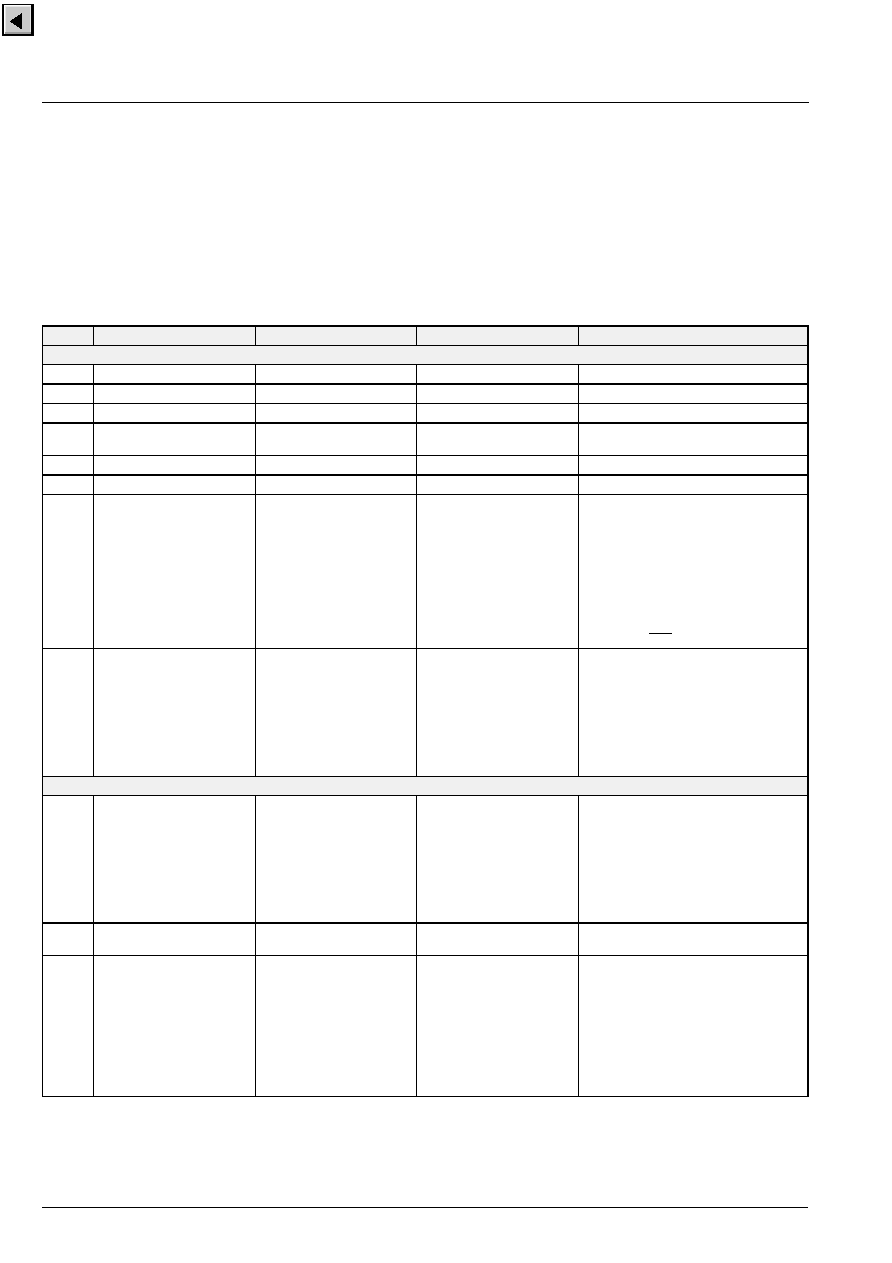
VCT 38xxA
ADVANCE INFORMATION
70
Micronas
Note:
If not otherwise designated, all parameters in the following table are specified as single bytes. As write
parameter magazine numbers 8 and 0 have the same meaning, as read parameter the magazine number is a
true 4-bit number (e.g. magazine 8= 00001000). For write parameters the values in parentheses indicate
default values after reset (in hex notation). For compatibility reasons every undefined bit in a write parame-
ter should be set to `0'. Undefined bits in a read parameter should be treated as "don't care".
Table 3�16: Command language
Code
Function
Write Parameter
Read Parameter
Notes
Operational & Test Commands
00
Dummy
no action
01
Reset
software reset of 65C02
02
Escape
escape to other codes
03
Version
CPU pointer high
CPU pointer low
show version in OSD layer
CPU pointer to text in ROM
04
Test
reserved for testing
05
Test
reserved for testing
06
DRAM Mode
dram mode
(06)
flash inc
(05)
control enable
(FF)
dram mode = I/O page register 028EH
flash freq = flash inc / (256 * 0.00324)
control enable:
bit0 = C4 erase page
bit1 = C5 news flash
bit2 = C6 subtitle
bit3 = C7 suppress header
bit4 = C8 update indicator
bit5 = C9 interrupted sequence
bit6 = C10 inhibit display
bit7 = C11 magazine parallel
07
Acquisition Mode
acquisition mode
(00)
init subcode high
(FF)
init subcode low
(FF)
gain max
(1F)
filter max
(1F)
gain
filter
acquisition mode:
bit0 = no slicer adaption
bit1 = no bit error in framing code
bit2 = limit slicer adaption
init subcode:
automatic subcode request after
page table reset
gain max:
only used if bit2 = 1
filter max:
only used if bit2 = 1
Memory Management Commands
14
Read DRAM Size
dram size high
dram size low
dram mode
dram size:
000CH = 3kByte SRAM
004CH = 19kByte SRAM
0200H = 128kByte SRAM
0240H = 144kByte SRAM
0400H = 256kByte SRAM
0800H = 512kByte SRAM
dram mode:
see I/O page register 028EH
25
Page Memory
dram bank
(00)
dram high
(40)
start of page memory
execute page table reset
27
Page Table Reset
reset page table
reset ghost row status
reset data service status
reset cycle count
reset memory count
reset ghost count
reset priorities
clear rolling header
clear VPS data
clear WSS data
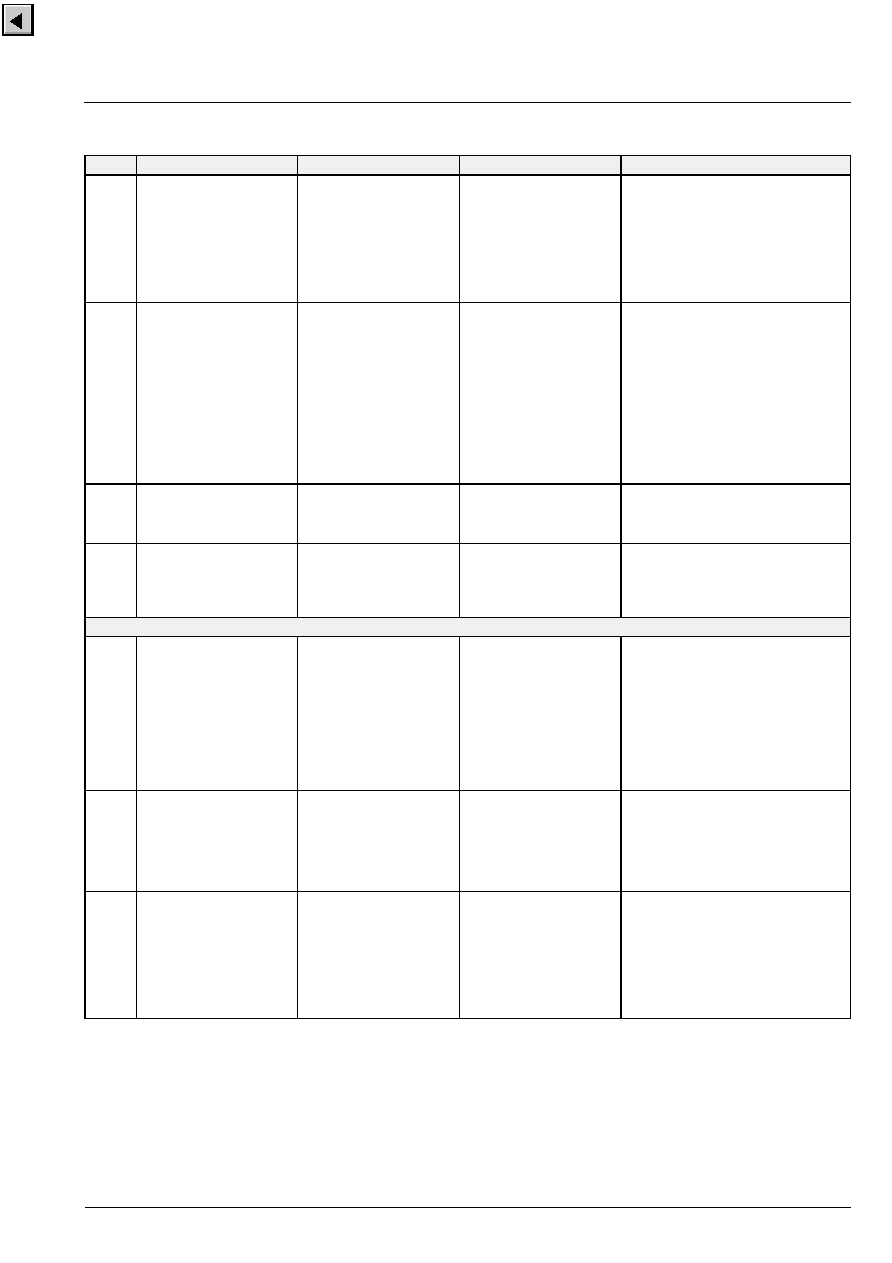
ADVANCE INFORMATION
VCT 38xxA
Micronas
71
42
Reset Ghost Row Status
ghost row status:
bit0 = row 24 in cycle
bit1 = row 25 in cycle
bit2 = row 26 in cycle
bit3 = row 27 in cycle
bit4 = row 28 in cycle
bit5 = row 29 in cycle
bit6 = row 30 in cycle
bit7 = row 31 in cycle
29
Read Page Cycle
ghost row status
2 Byte cycle count
2 Byte memory count
2 Byte ghost count
data service status
memory status
= number of pages in cycle
= number of pages in memory
= number of ghost blocks in memory
data service status:
bit0 = 8/30 format 1 updated
bit1 = 8/30 format 2 updated
bit2 = VPS updated
bit3 = WSS updated
bit4 = CAPTION 1st field updated
bit5 = CAPTION 2nd field updated
memory status:
bit0 = memory full
38
Page Priority
enable
(00)
border
(FF)
enable:
bit0 = enable priority manager
border:
min/max border for page priorities
37
Read Priority
highest priority
lowest priority
border priority
magazine number
page number
= max priority in page memory
= min priority in page memory
= min/max border for page priorities
= page with lowest priority
Page Related Commands
12
Page Request
magazine number
page number
page subcode high
page subcode low
priority
quantity
start magazine number
start page number
number of open requests
removed magazine
number
removed page number
remove pages from memory beginning
at start page if page priority is disabled,
ignores start page if page priority is
enabled
magazine number:
bit0
-
3 = magazine number
bit4
= not used
bit5
= hex request
bit6
= backward request
bit7
= forced request
= ignore cycle flag
20
Read Page Info
magazine number
page number
page pointer high
page pointer low
subpage count
ghost row count
ring buffer index
page subcode high
page subcode low
= pointer from page table
= number of subpages in chain
= number of ghost rows in chain
if page request with subcode F1xx
22
Change Page Info
magazine number
page number
page table flags
page table flags:
bit0 = protection
bit1 = update
bit2 = not used
bit3 = not used
bit4 = not used
bit5 = subpage
bit6 = memory
bit7 = cycle
Table 3�16: Command language, continued
Code
Function
Write Parameter
Read Parameter
Notes
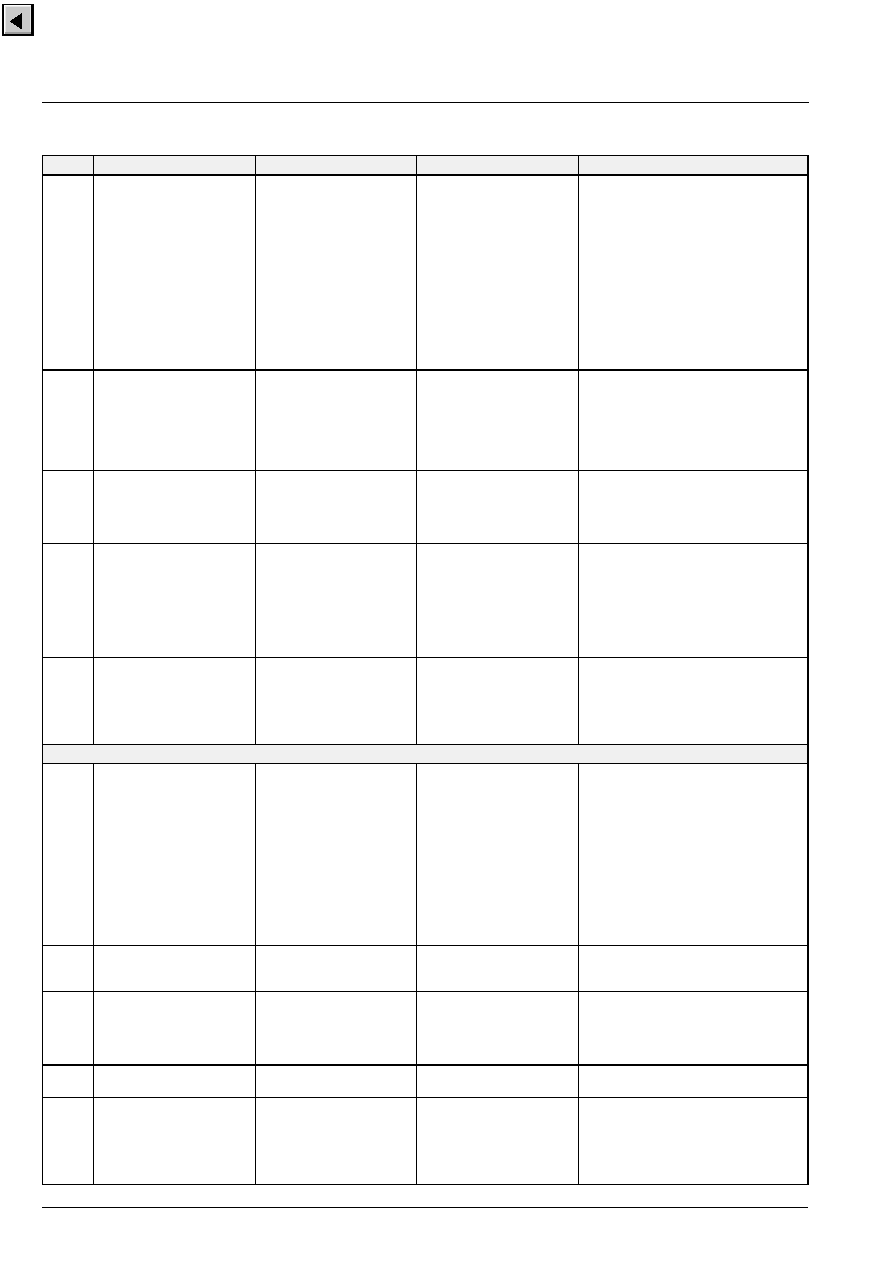
VCT 38xxA
ADVANCE INFORMATION
72
Micronas
28
Search Next Page
magazine number
page number
search code
magazine number
page number
page pointer high
page pointer low
subpage count
ghost row count
search in page table for cycle flag
magazine number:
bit0
-
3 = magazine number
bit4
= take search code
bit5
= hex search
bit6
= backward search
bit7
= include start page
search code:
bit0
= search protection flag
bit1
= search update flag
bit2
-
4 = not used
bit5
= search subpage flag
bit6
= search memory flag
bit7
= search cycle flag
51
Read Next Page
magazine number
page number
magazine number
page number
calculate next page number
magazine number:
bit0
-
3 = magazine number
bit4
= not used
bit5
= hex calculation
bit6
= backward calculation
bit7
= not used
21
Read Page Row
magazine number
page number
subpage number high
subpage number low
row number
40 Byte row data
row 0
-
24
32
Copy Page Row
magazine number
page number
subpage number high
subpage number low
row number
destination dram bank
destination dram high
destination dram low
copy 40Byte text row from page
memory into DRAM
35
Read Ghost Row
magazine number
page number
subpage number high
subpage number low
row number
designation code
40 Byte row data
row 25
-
28
TOP Commands
40
Read TOP Status
TOP status 1
TOP status 2
TOP status 1:
bit0 = not used
bit1 = MPT link in PLT
bit2 = MPET link in PLT
bit3 = AIT link in PLT
bit4 = BTT in memory
bit5 = MPT in memory
bit6 = MPET in memory
bit7 = AIT in memory
TOP status 2:
bit0
-
5 = not used
bit6
= all MPET in memory
bit7
= all AIT in memory
30
Read TOP Code
magazine number
page number
BTT code
MPT code
code:
bit0
-
3 = data
bit6
= hamming error
50
Read BTTL
BTTL error
8 Byte BTTL data
BTTL error:
bit6
= hamming error in BTTL
BTTL data:
bit0
-
3 = data
bit6
= hamming error
52
Change BTT magazine
magazine number
(01)
all TOP commands then refer to this
magazine
43
Search MPT
number of MPTs
magazine number
page number
subpage number high
subpage number low
...
search in PLT
Table 3�16: Command language, continued
Code
Function
Write Parameter
Read Parameter
Notes
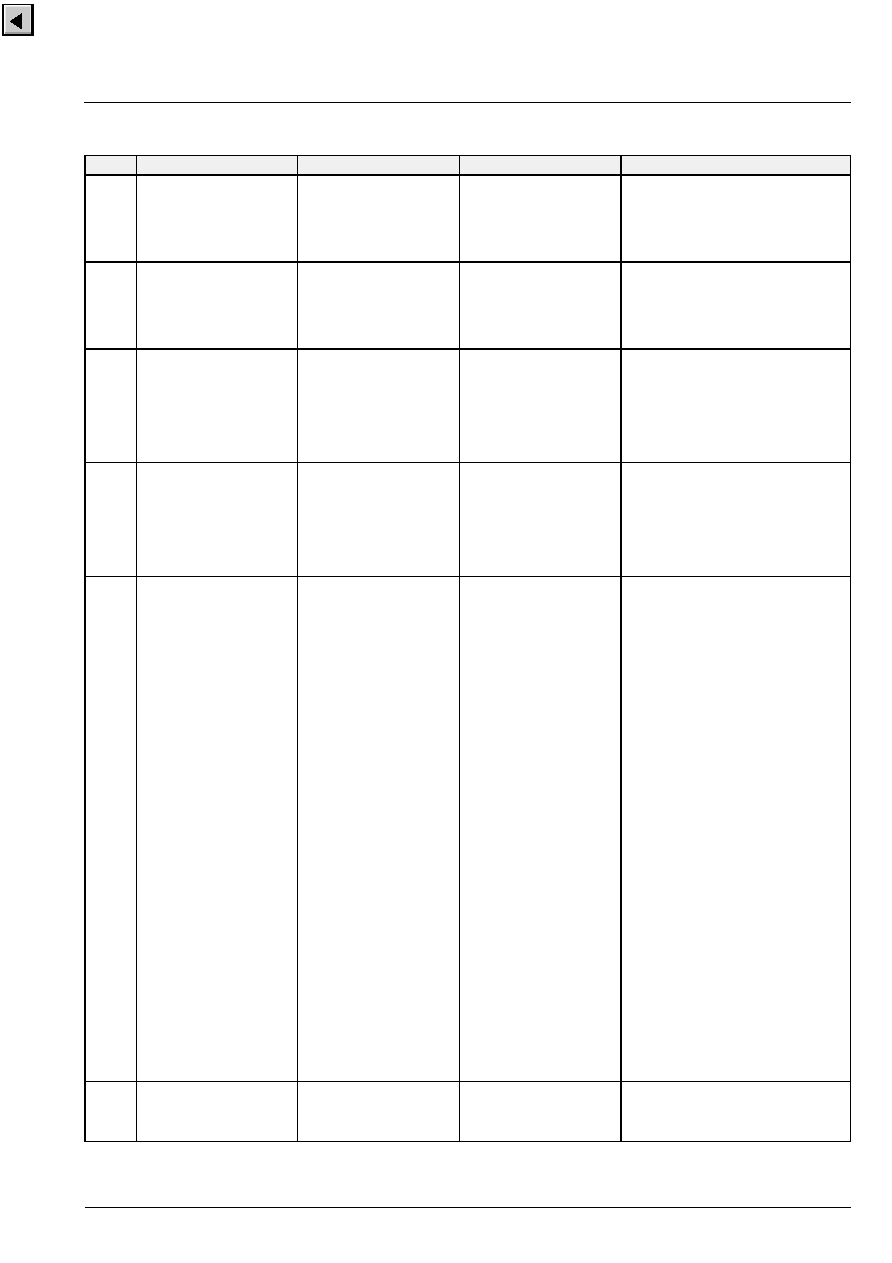
ADVANCE INFORMATION
VCT 38xxA
Micronas
73
23
Search MPET
number of MPETs
magazine number
page number
subpage number high
subpage number low
...
search in PLT
39
Search AIT
number of AITs
magazine number
page number
subpage number high
subpage number low
...
search in PLT
41
Search AIT Title
magazine number
page number
5 Byte data
12 Byte title
search in AIT
magazine number:
bit0
-
3 = magazine number (0#8)
bit4
-
6 = not used
bit7
= ignore title language
data:
bit0
-
3 = data
bit6
= hamming error
44
Copy AIT Title
magazine number
page number
destination dram bank
destination dram high
destination dram low
5 Byte data
12 Byte title
search in AIT and copy title into dram
magazine number:
bit0
-
3 = magazine number (0#8)
bit4
-
6 = not used
bit7
= ignore title language
data:
bit0
-
3 = data
bit6
= hamming error
34
Search Next TOP Code
magazine number
page number
code condition
magazine number
page number
code
code flag
search in BTT
magazine number:
bit0
-
3 = magazine number
bit4
-
5 = not used
bit6
= backward search
bit7
= include start page
code condition:
low nibble = BTT code
high nibble = search condition
0
= BTT code in low nibble
1
= BTT code # 0
2
= block page
3
= group page
4
= normal page
5
= subtitle page
6
= TV page
7
= block/TV page
8
= group/block/TV page
9
= subpage
a
= block/TV subpage
b
= group/block/TV subpage
c
= title page
d
= future page
e
= future page
f
= future page
code:
bit0
-
3 = BTT code
bit6
= hamming error
code flag:
bit0
= subtitle page found
bit1
= TV page found
bit2
= block page found
bit3
= group page found
bit4
= normal page found
bit5
= future page found
bit6
= title page found
bit7
= subpage found
45
Search Direct Choice
direct choice code
number of AIT entries
magazine number
page number
...
search in AIT
Table 3�16: Command language, continued
Code
Function
Write Parameter
Read Parameter
Notes
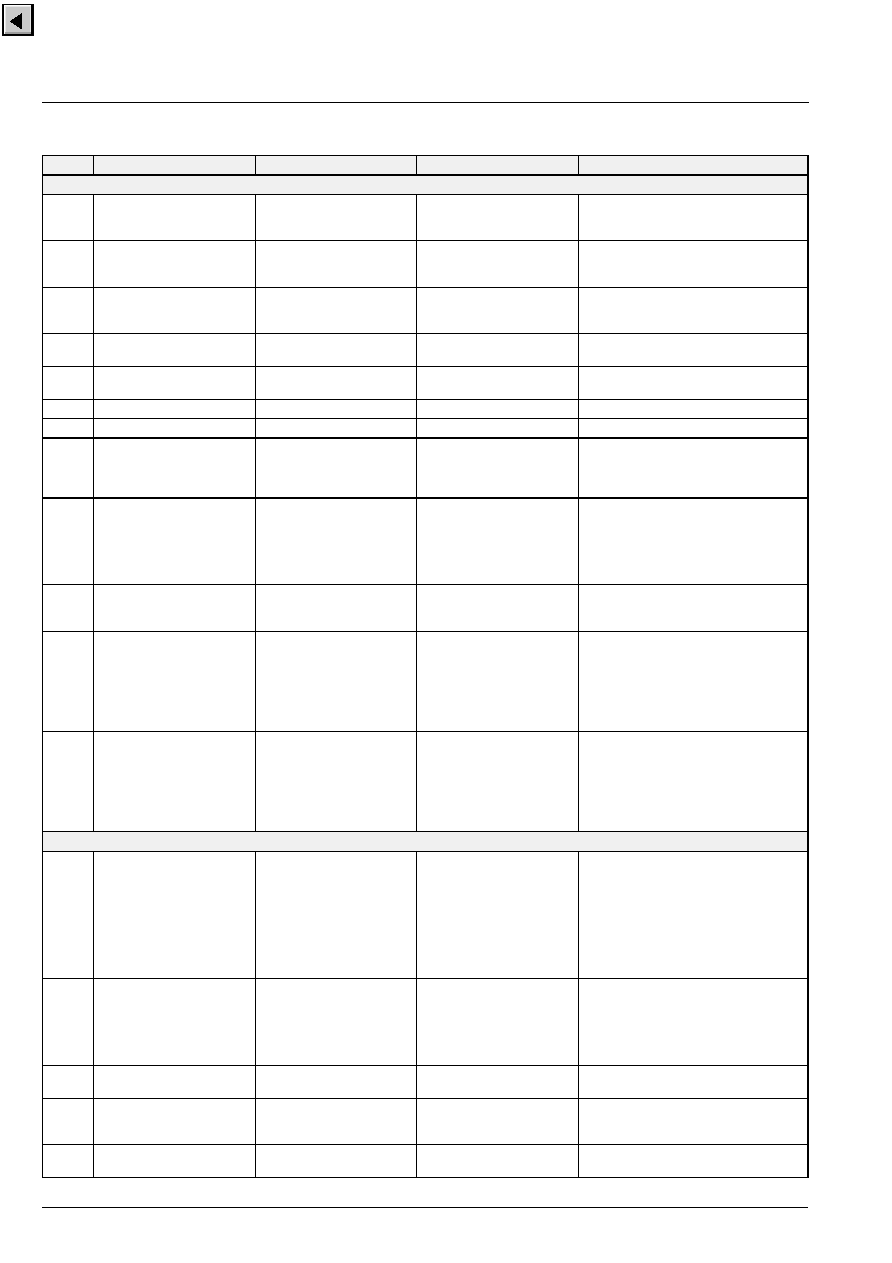
VCT 38xxA
ADVANCE INFORMATION
74
Micronas
Miscellaneous Data Commands
36
Read 8/30 Row
designation code
40 Byte row data
only format 1 and 2 are supported
1st byte of row data is already hamming
decoded
15
Read VPS
framing code
counter
13 Byte VPS data
= 51H
= incremented every VPS reception
= biphase decoded VPS bytes 3
-
15
53
Read WSS
framing code
counter
13 Byte WSS data
= 78H
= incremented every WSS reception
= 102 WSS elements from group 1 on
54
Read CAPTION 1
counter
6 Byte CAPTION data
= incremented every reception in field 1
= 3x oversampling
55
Read CAPTION 2
counter
6 Byte CAPTION data
= incremented every reception in field 2
= 3x oversampling
19
Read Rolling Header
24 Byte rolling header
every row 0 in cycle
31
Read Rolling Time
8 Byte rolling time
using time pointer
16
Read Quality
text lines
hamming errors
parity errors
soft errors
updated every VBI
18
Read Reset Source
reset source
reset source:
bit0 = clock supervision
bit1 = voltage supervision
bit2 = watchdog
all bits in reset source are reset after
read
46
Read Hamming
hamming (8,4) Byte
data
hamming Byte:
bit0
-
3 = data
bit6
= hamming error
47
Read Hamming 2
hamming (24,18) 1st Byte
hamming (24,18) 2nd Byte
hamming (24,18) 3rd Byte
address
mode
data
address:
bit0
-
5 = address
bit7
= hamming error
mode:
bit0
-
4 = mode
data:
bit0
-
6 = data
33
Copy Data
source dram bank
source dram high
source dram low
length
destination dram bank
destination dram high
destination dram low
copy data from DRAM to DRAM
Display Commands
17
Read Display Mode
display mode
character set
font mapping
display mode:
bit0 = forced boxing
bit1 = reveal
bit2 = box
bit3 = time hold
bit4 = page hold
bit5 = row 24 hold
bit6 = row 25 hold
bit7 = row 26 hold
08
Display Mode
display mode
(18)
character set
(06)
font mapping
(00)
display mode:
see above
character set:
6,38,40,55,70,128
font mapping:
0=latin
1=cyrillic/greek
2=arabic/farsi/hebrew
128=user defined
09
Display TTX Pointer
dram high
(20)
dram low
(00)
page memory is copied to TTX pointer
10
Display Pointer
dram high
(20)
dram low
(00)
scroll counter
(00)
display starts at pointer using scroll
counter as line offset
11
Display Clear
dram high
dram low
clear display bank beginning at pointer
(26 rows * 86 Bytes)
Table 3�16: Command language, continued
Code
Function
Write Parameter
Read Parameter
Notes

ADVANCE INFORMATION
VCT 38xxA
Micronas
75
13
Display Time Pointer
dram high
(20)
dram low
(20)
8 Byte time string from packet x/00 is
copied to time pointer
26
Display Page Request
magazine number
page number
subpage number high
subpage number low
display delay
(1E)
magazine number:
bit0
-
3 = magazine number
bit4
= change display delay
bit5
= display clear (on update)
bit6
-
7 = not used
subpage number:
F0xx for rolling subpages
display delay:
delay after row 0 reception in steps
of 3.24ms (255 = no update)
only used if bit4 = 1
24
Read Display Page
magazine number
page number
subpage number high
subpage number low
current page in display
48
Display Column
dram high
dram low
length
Byte list
...
write to dram with increment of 86 Bytes
= number of bytes in list
49
Display Fill
dram high
dram low
length
character
repeated write of 1 character to dram
= number of repeated writes
56
OSD Font Pointer
font mode
(00)
font pointer high
font pointer low
extension font pointer high
extension font pointer low
font mode:
bit0 = 0 = reset OSD font 2 pointer
bit0 = 1 = load OSD font 2 pointer
with following parameters
57
Display Read Column
dram high
dram low
length
Byte list
...
read from dram with increment of
86 Bytes
= number of Bytes to read
58
User Character Set
language 000
(00)
language 001
(01)
language 010
(02)
language 011
(03)
language 100
(04)
language 101
(05)
language 110
(06)
language 111
(07)
If character set 128 is selected via
command 08 "Display Mode", these 8
languages will be selected by option bits
C14,C13,C12 when ESC code is
inactive.
59
User ESC Character Set
esc language 000
(00)
esc language 001
(00)
esc language 010
(00)
esc language 011
(00)
esc language 100
(00)
esc language 101
(00)
esc language 110
(00)
esc language 111
(00)
If character set 128 is selected via
command 08 "Display Mode", these 8
languages will be selected by option bits
C14,C13,C12 when ESC code is active.
60
Full Row Attribute
full row attribute
number of rows
start row
set full row attribute of specified rows
without changing level 2 bit
61
User Mapping
32 Byte mapping data
32 Bytes are copied into mapping ram
via I/O page register 0276H
Table 3�16: Command language, continued
Code
Function
Write Parameter
Read Parameter
Notes

VCT 38xxA
ADVANCE INFORMATION
76
Micronas
3.13.I/O Register
Most hardware-related functions of the TPU are con-
trolled by memory mapped I/O of the 65C02. The
application software has access to the I/O registers via
I
2
C bus using the CPU subaddresses SUB1 and SUB2
(see Section 3.14.1.1. on page 82).
Most of the I/O registers can only be written and will
not return useful data when read by application soft-
ware. Reset values are written by TPU during initializa-
tion.
Note:
For compatibility reasons, every undefined bit of a
write register should be set to `0'. Undefined bits of
a read register should be treated as "don't care".
0200 H
R/W
CONTROL REGISTER
Bit
Reset
Write Function
Read Function
all
00 H
During reset the control register is loaded with the contents of the address FFF9H, but it can be read and
written via software.
7
0
1 = CPU disable
0 = CPU enable
6
0
1 = program RAM disable
0 = program RAM enable
5
0
1 = program ROM disable
0 = program ROM enable
4
0
1 = character ROM disable
0 = character ROM enable
3
0
1 = DMA interface disable
0 = DMA interface enable
2
0
1 = I/O page disable
0 = I/O page enable
1
0
1 = test mode on
0 = test mode off
0
0
1 = burnin test mode (only if test pin high)
0 = normal test mode
1 = burnin test mode
0 = normal test mode
0202 H
Write
STANDBY
Bit
Reset
Function
2
0
1 = digital circuitry power off(CPU still active with slow clock)
0 = digital circuitry power on
1
0
1 = analog front-end power off
0 = analog front-end power on
0213 H
Write
INTERFACE MODE
Bit
Reset
Function
1
0
1 = standby enable
(if bit 2 of register 0202H = 1)
0 = standby disable
0251 H
Write
BLANKING STOP
Bit
Reset
Function
all
07 H
horizontal stop of blanking pulse in character increments
correct blanking pulse cannot be guaranteed if blanking start = blanking stop
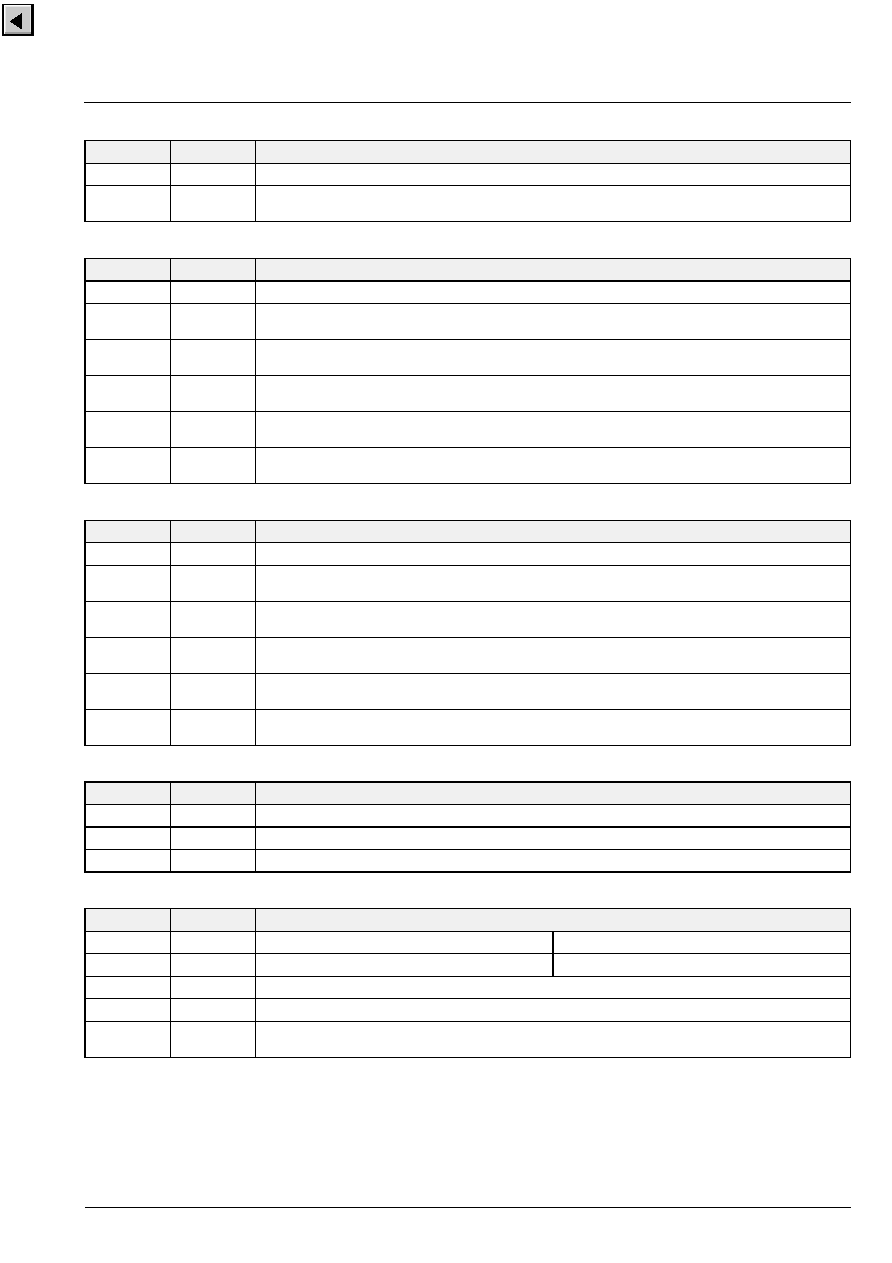
ADVANCE INFORMATION
VCT 38xxA
Micronas
77
0252 H
Write
BLANKING START
Bit
Reset
Function
all
00 H
horizontal start of blanking pulse or self-timed HSYNC in character increments
correct blanking pulse cannot be guaranteed if blanking start = blanking stop
0254 H
Write
DISPLAY MODE 1
Bit
Reset
Function
7
0
1 = OSD layer always uses FONT 1
0 = OSD layer changes from FONT 1 to FONT 2 if ASCII
20H
6
1
1 = enable OSD layer
0 = disable OSD layer
5
1
1 = active flash phase of OSD layer
0 = inactive flash phase of OSD layer
4
0
1 = 13 scanlines/character
0 = 8 scanlines/character
3 to 0
0
With this scan line the OSD layer starts display of the first text line. By slow incrementing of this value soft
scroll begins.
0255 H
Write
DISPLAY MODE 2
Bit
Reset
Function
7
0
1 = OSD layer control code defines character set
0 = OSD layer control code defines color
3
1
1 = 10.125MHz display clock
0 = 20.25MHz display clock
2
1
1 = font pointer offset 10 scanlines/character
0 = font pointer offset 8 or 16 scanlines/character (depending on bit 1)
1
0
1 = font pointer offset 16 scanlines/character
0 = font pointer offset 8 scanlines/character
0
1
1 = 10 scanlines/character
0 = 8 or 13 scanlines/character (depending on bit 4 in register 0254 H)
025A H
Write
PRIO MODE
Bit
Reset
Function
5 to 3
110
prio code for shadow pixel
2 to 0
101
prio code for normal pixel
025B H
R/W
FB Mode
Bit
Reset
Write Function
Read Function
all
00 H
every read resets status
7
0
color bit 4(color output of OSD layer)
6
0
color bit 3(color output of OSD layer)
4
0
1 = inverted color output
0 = normal color output

VCT 38xxA
ADVANCE INFORMATION
78
Micronas
0260 H
Write
OSD LAYER VERTICAL START
Bit
Reset
Function
all
00 H
60 H
9-bit value defining vertical position (in scanline)
1st write:
bit 0 = MSB
2nd write:
bit 7 to 0 = 8 LSBs
0261 H
Write
OSD LAYER VERTICAL STOP
Bit
Reset
Function
all
01 H
28 H
9-bit value defining vertical position (in scanline)
1st write:
bit 0 = MSB
2nd write:
bit 7 to 0 = 8 LSBs
0262 H
Write
OSD LAYER HORIZONTAL START
Bit
Reset
Function
all
16 H
8-bit value defining horizontal start position (in character)
0264 H
Write
OSD LAYER TEXTPOINTER
Bit
Reset
Function
all
-
16-bit value defining memory address of text
1st write:
bit 7 to 0 = 8 MSBs
2nd write:
bit 7 to 0 = 8 LSBs
0265 H
Write
OSD LAYER 2nd COLOR START
Bit
Reset
Function
all
01 H
38 H
9-bit value defining vertical start for 2nd color (in scanline)
1st write:
bit 0 = MSB
2nd write:
bit 7 to 0 = 8 LSBs
0266 H
Write
OSD LAYER 2nd COLOR
Bit
Reset
Function
6 to 0
0C H
7-bit value defining 2nd color
2nd color is used during 1 text row (8, 10 or 13 scanlines) after 2nd color start
0267 H
Write
WST LAYER VERTICAL START
Bit
Reset
Function
all
00 H
24 H
9-bit value defining vertical position (in scanline)
1st write:
bit 0 = MSB
2nd write:
bit 7 to 0 = 8 LSBs
0268 H
Write
WST LAYER HORIZONTAL START
Bit
Reset
Function
all
0F H
8-bit value defining horizontal start position (in character)
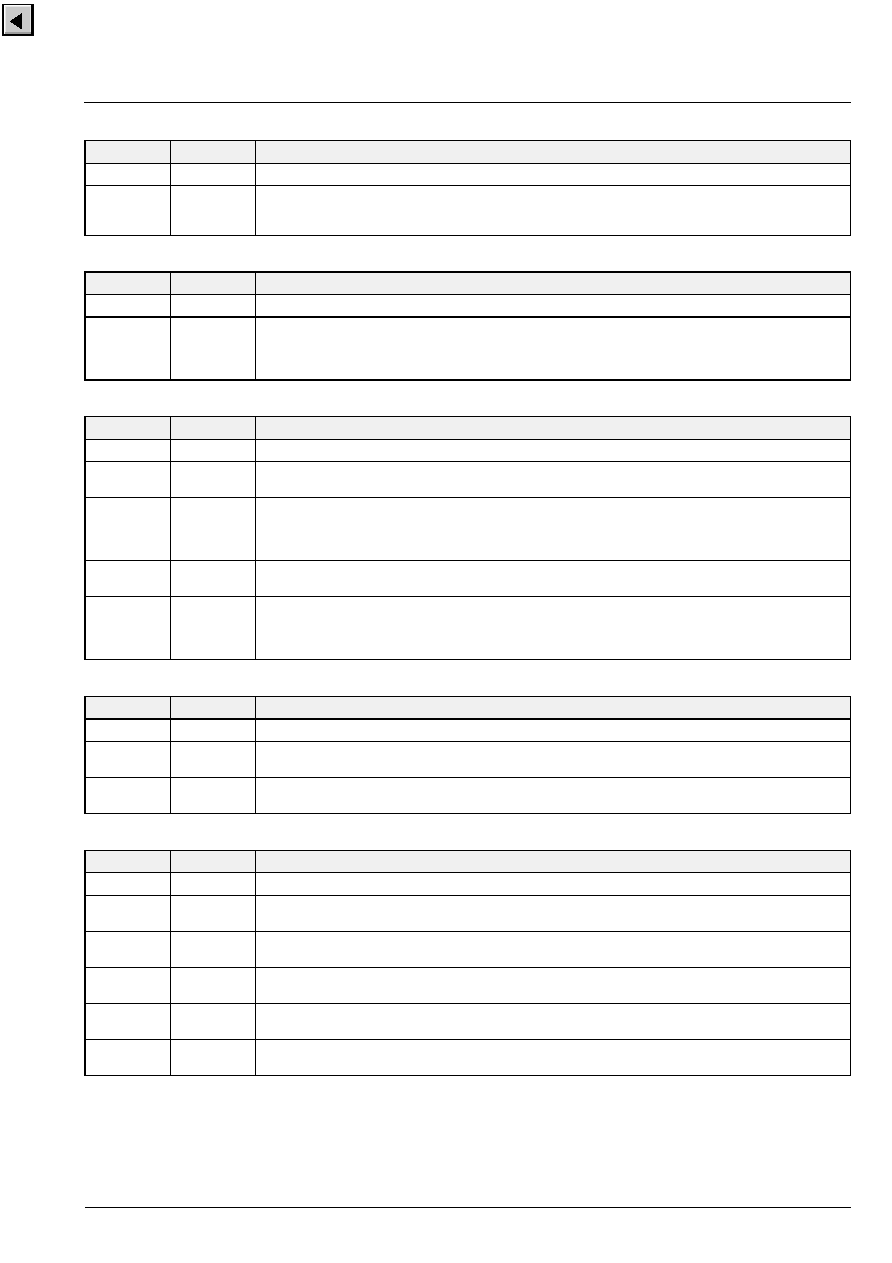
ADVANCE INFORMATION
VCT 38xxA
Micronas
79
026A H
Write
WST LAYER VERTICAL STOP
Bit
Reset
Function
all
01 H
28 H
9-bit value defining vertical position (in scanline)
1st write:
bit 0 = MSB
2nd write:
bit 7 to 0 = 8 LSBs
026B H
Write
WST LAYER LAST ROW
Bit
Reset
Function
all
01 H
1E H
9-bit value defining last scanline of the last row to display level 1 double height
after this scanline the level 1 double height attribute will not be decoded anymore
1st write:
bit 0 = MSB
2nd write:
bit 7 to 0 = 8 LSBs
026C H
Write
RGB MODE
Bit
Reset
Function
5
0
1 = WST layer mixed mode
0 = WST layer normal mode
4 to 3
0
11 = WST layer top
10 = WST layer opaque bottom
01 = WST layer transparent bottom
00 = WST layer disable
2
0
1 = OSD layer mixed mode
0 = OSD layer normal mode
1 to 0
0
11 = OSD layer top
10 = OSD layer opaque bottom
01 = OSD layer transparent bottom
00 = OSD layer disable
026D H
Write
SYNC MODE
Bit
Reset
Function
5
0
1 = double scan enable
0 = double scan disable
4
0
1 = blanking disable
0 = blanking enable
026F H
Write
DISPLAY MODE 3
Bit
Reset
Function
7
1
1 = 10 pixel/character
0 = 8 pixel/character
6
0
1 = double dot size in vertical direction(OSD layer only)
0 = normal dot size in vertical direction
5
0
1 = double dot size in horizontal direction(OSD layer only)
0 = normal dot size in horizontal direction
4
0
1 = black colors replaced by transparent & shadow(OSD layer only)
0 = black colors displayed black
3 to 0
F H
4-bit value defining delay of horizontal start for both layers (in pixel)
delay = mod
16
(character_width
-
2
-
value)(leftmost position should not be used!)

VCT 38xxA
ADVANCE INFORMATION
80
Micronas
0270 H
Write
DISPLAY MODE 4
Bit
Reset
Function
4
0
1 = new mosaic mode (single switch to character set 1)
0 = old mosaic mode (static switch to character set 1)
3
0
1 = level 1 display mode (read 40 Byte from display bank)
0 = level 2 display mode (read 86 Byte from display bank)
2
0
1 = boxing enable
0 = boxing disable
1
0
1 = reveal enable
0 = reveal disable
0
0
This bit is taken as flash clock for the WST layer, the frequency should be around 6 Hz.
0273 H
Write
DISPLAY MODE 5
Bit
Reset
Function
4
0
WST layer scan line counter preset (LSB for zoom mode)
3 to 0
0
WST layer scan line counter preset
028E H
Write
DRAM MODE
Bit
Reset
Function
4
0
1 = next CPU write without WEQ but with address increment
0 = normal CPU write mode
3
0
1 = reset address pointer and switch off refresh during standbyt
0 = keep address pointer and refresh during standby
2
1
1 = display channel enable
0 = display channel disable
1
1
1 = slicer channel enable
0 = slicer channel disable
029C H
Read
ACQ SOFT ERROR COUNTER
Bit
Reset
Function
5 to 0
-
6-bit soft error counter
counts number of soft error corrected bytes
counter stops at 63
reset after read
029E H
Read
ACQ SYNC STATUS
Bit
Reset
Function
7
-
1 = field 1
set at line 624 (PAL) or line 524 (NTSC)
0 = field 2
reset at line 313 (PAL) or line 263 (NTSC)
6
-
1 = vertical retrace
set at line 628 (PAL) or line 528 (NTSC)
0 = vertical window
reset at line 624 (PAL) or line 524 (NTSC)

ADVANCE INFORMATION
VCT 38xxA
Micronas
81
029F H
Write
ACQ STANDARD
Bit
Reset
Function
7
0
1 = CAPTION enable in field 2
0 = CAPTION disable in field 2
6
0
1 = CAPTION enable in field 1
0 = CAPTION disable in field 1
5
0
1 = VPS enable
0 = VPS disable
7 to 5
0
VPS and CAPTION cannot be used at the same time, therefore these combinations are used to enable
WSS reception on a PAL+ signal
0 =
1 = VPS
2 = CAPTION field 1
3 = WSS & VPS
4 = CAPTION field 2
5 = WSS & VPS
6 = CAPTION field 1&2
7 = WSS
4
1
1 = acquisition enable
0 = acquisition disable
1 to 0
0
00 = PAL mode
10 = NTSC mode
11 = Caption full field mode
02A3 H
Write
ACQ VIDEO INPUT
Bit
Reset
Function
1 to 0
0
00 = VIN1
01 = VIN2
10 = VIN3
11 = VIN4
02A4 H
Read
ACQ HSYNC COUNTER
Bit
Reset
Function
7 to 0
0
number of detected horizontal sync pulses per frame divided by 4
sync pulse is detected if within horizontal window of HPLL
counter is latched with vertical sync, the register can be read at any time

VCT 38xxA
ADVANCE INFORMATION
82
Micronas
3.14.I
2
C-Bus Slave Interface
Communication between the TPU and the TV control-
ler is done via I
2
C bus. For detailed information on the
I
2
C bus please refer to the Philips manual `I
2
C bus
Specification'.
The TPU acts as a slave transmitter/receiver and uses
clock synchronization to slow down the data transfer if
necessary. General call address will not be acknowl-
edged.
Different memories and functions of TPU can be
accessed by subaddressing. The byte following the
slave address byte is defined as the subaddress byte.
Maximum length of an I
2
C telegram is 256 Bytes fol-
lowing slave address and subaddress byte. The inter-
face supports data transfer with autoincrement.
The I
2
C bus interface is interrupt-driven and uses an
internal 48-Byte buffer to collect I
2
C data in real-time
without disturbing internal processes. This is done to
avoid clock synchronization as far as possible. When
the TPU has to process the I
2
C buffer and the I
2
C tele-
gram has not yet been stopped, the I
2
C clock line will
be held down.
The time required to process the I
2
C buffer depends
on other processes running inside the TPU firmware.
Thus the following I
2
C telegram addressing the TPU
can be held after the slave address byte until the old
telegram is completely processed.
3.14.1.Subaddressing
Access to all memory locations and to the command
interface is achieved by subaddressing. Both the exter-
nal DRAM and the internal CPU memory can be
addressed completely. The TPU acknowledges 6 dif-
ferent subaddresses following the slave address (see
Table 3�17 on page 82).
The following symbols are used to describe the I
2
C
example telegrams:
<
start condition
>
stop condition
ab
address bank byte
ah
address high byte
al
address low byte
cc
command byte
dd
data byte
ss
status byte
..
0
-
n continuation bytes
3.14.1.1. CPU Subaddressing
There are 2 CPU subaddresses to access CPU mem-
ory: either with static memory address or with autoin-
crementing memory address. The main purpose of
CPU subaddressing is to write text into the OSD buffer
and to access the I/O page (see Section 3.13. on
page 76). The static CPU subaddress can be used to
write more than 1 Byte into the same I/O page register.
The CPU subaddress has to be followed by 2 address
bytes defining the CPU memory address. The follow-
ing data byte is written into this address. In the case of
autoincrement the continuation bytes are written into
incrementing memory addresses.
Table 3�17: I
2
C bus subaddresses
Name
Binary Value
Hex Value
Mode
Function
TPU
0010 001x
22, 23
W, R
TPU slave address
Sub 1
0111 1000
78
W
subaddressing CPU (static)
Sub 2
0111 1001
79
W
subaddressing CPU (autoincrement)
Sub 3
0111 1010
7A
W
subaddressing DRAM (autoincrement)
Sub 4
0111 1011
7B
W
subaddressing command language
Data
0111 1100
7C
R/W
subaddressing data register
Status
0111 1101
7D
R
status register
bit 7 = command wait
bit 6 = command invalid
bit 5 = command found no data
bit 4 = not used
bit 3 = not used
bit 2 = not used
bit 1 = 0
bit 0 = 0
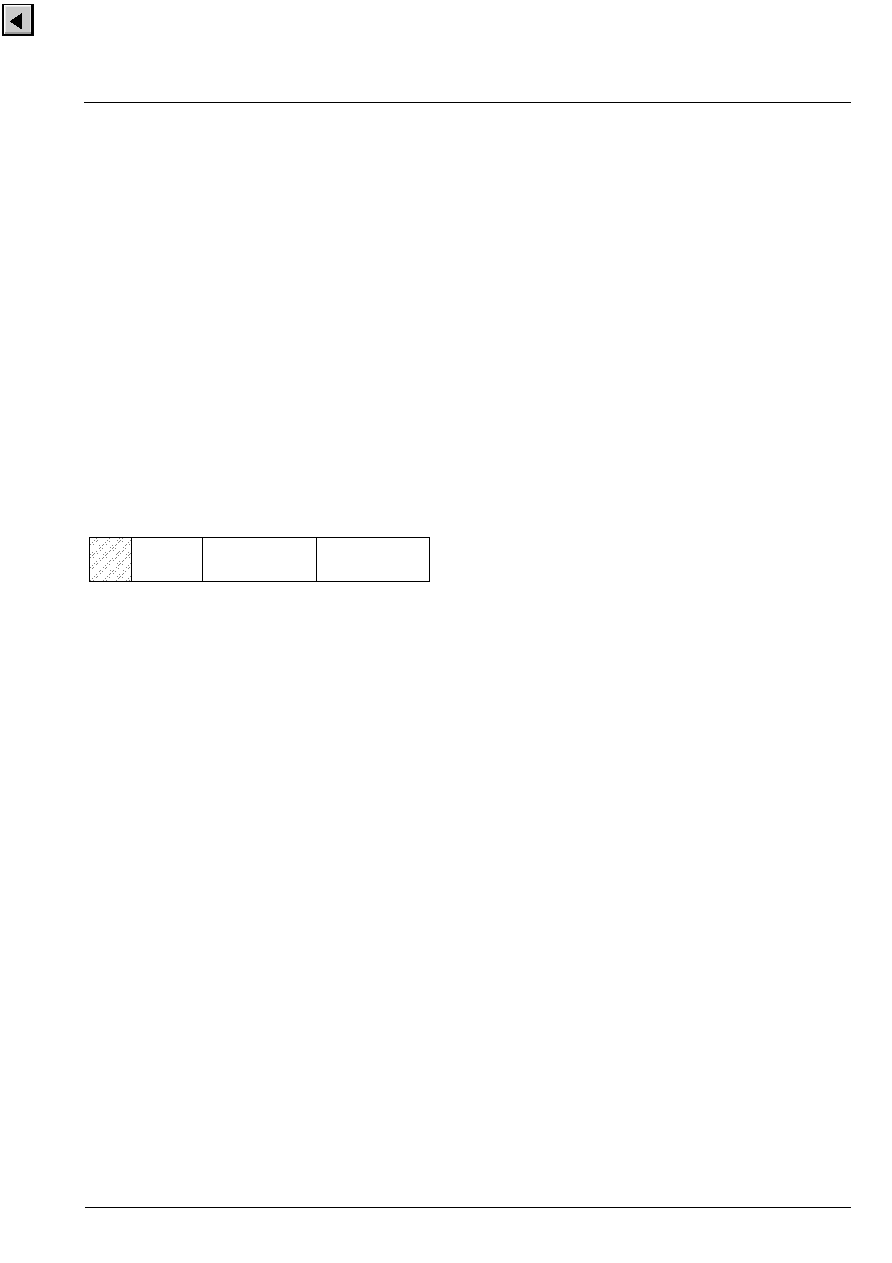
ADVANCE INFORMATION
VCT 38xxA
Micronas
83
The CPU telegram can be stopped after the 2 memory
address bytes. The following I
2
C telegram subaddress-
ing the data register will continue data transfer to or
from the CPU memory. The data transfer will always
start at the CPU memory address (autoincrement is
not saved).
< 22 78 ah al dd .. >
< 22 79 ah al dd .. >
< 22 79 ah al > < 22 7C dd .. >
Data is directly written into CPU memory without using
the I
2
C buffer of TPU and without waiting for a stop
condition.
3.14.1.2. DRAM Subaddressing
DRAM access is necessary to generate level 2 dis-
plays. The external DRAM can be addressed on byte
level. The maximum DRAM size of 16 Mbit requires a
21-bit memory address pointer. The format of the
DRAM address pointer is shown in Fig. 3�20.
Fig. 3�20: DRAM address pointer
The DRAM subaddress has to be followed by
3 address bytes defining the DRAM address pointer.
The following data byte is written into this address.
DRAM subaddressing always uses autoincrement.
Separate read and write DRAM address pointers are
saved for autoincrement.
The DRAM telegram can be stopped after the 3 ad-
dress pointer bytes. The following I
2
C telegram subad-
dressing the data register will continue data transfer to
or from the DRAM.
When reading the DRAM, the first data byte the TPU
returns is a dummy byte, which has to be ignored.
< 22 7A ab ah al dd .. >
< 22 7A ab ah al > < 22 7C dd .. >
< 22 7A ab ah al > < 22 7C < 23 dd ..>
Data written to the DRAM subaddress is collected first
in the I
2
C buffer of TPU and is copied to DRAM when
the buffer is full (48 Bytes) or after stop condition. Dur-
ing the time the buffer is copied to DRAM the TPU will
hold the I
2
C clock line down.
Reading data from the DRAM subaddress is also buff-
ered internally. Reading the first byte will only empty the
I
2
C buffer. Every time the buffer is empty, the TPU will
copy 48 Bytes from DRAM into the I
2
C buffer. During
this time the TPU will hold the I
2
C clock line down.
3.14.1.3. Command Subaddressing
TPU supports a command language, allowing the host
controller to start complex processing inside the TPU
with simple commands (see Section 3.12. on
page 68). Commands have to be sent to the command
subaddress.
The command subaddress has to be followed by the
command code. The following data bytes are taken as
command parameters.
The execution time for commands depends on other
processes running inside the TPU firmware, therefore
the host controller has to read the status register to get
information about the running command before read-
ing command parameter or starting other commands.
The status register returns information about the com-
mand interface. The `command wait' bit is set during
execution of a command and is reset when a com-
mand is executed completely and read parameters are
available. If a non-existing command is sent to the
TPU, the `command invalid' bit is set. If a command
could not be executed successfully, the `command
found no data' bit is set. In this case the read parame-
ters of this command are not valid.
Reading status from TPU is done by subaddressing
the status register followed by repeated start condition
and slave read address (see Fig. 3�21).
< 22 7B cc dd .. >
< 22 7D < 23 ss .. >
< 22 7C < 23 dd .. >
Telegrams subaddressing the command interface are
buffered and processed after receiving the stop condi-
tion. Therefore the command code and all necessary
command parameters have to be included in a single
telegram.
3.14.1.4. Data Subaddressing
Writing data to TPU memory is possible by subad-
dressing the data register directly. The data is then
written into memory addressed by the foregoing tele-
gram.
< 22 7C dd .. >
Reading data from TPU is done by subaddressing the
data register followed by a repeated start condition and
slave read address (see Fig. 3�21). The returned data
depend on the subaddress selected in the preceding
TPU telegram.
< 22 7C < 23 dd .. >
5-bit Bank
8-bit High
8-bit Low

VCT 38xxA
ADVANCE INFORMATION
84
Micronas
Fig. 3�21: I
2
C bus protocol
3.14.1.5. Hardware Identification
A separate I
2
C bus slave register is reserved to read
out the hardware version of VCT 38xxA. This register
is active in standby mode.
P
S
1
0
SDA
SCL
W
R
Ack
Nak
S
P
=
=
=
=
=
=
0
1
0
1
Start
Stop
=
=
Interrupt
Data from TPU
S
Ack
W
Ack
S
S
Ack
W
Ack
S
S
Ack
W
Ack
S
Ack
W
Ack
S
Ack
W
Ack
S
Ack
W
Ack
Ack
Ack
R
R
Ack
P
Ack
P
Ack
P
Ack
P
Ack
0010001
0010001
0010001
0010001
0010001
0010001
0111 1000
0111 1001
0111 1011
0111 1010
0111 1100
0111 1101
n Byte Sub 2
n Byte Sub 3
n Byte Sub 4
n Byte Data
n Byte Sub 1
0111 1100
0010001
0010001
Ack
Nak
Nak
P
P
n
-
1 Byte Data
last Byte Data
Status
Status
S
Ack
W
Ack
Ack
P
0010001
I
2
C Sub
address
Number
of bits
Mode
Function
Default
Name
h'9F
16
r
Hardware version number
bit[7:0]
hardware id (A3=h'13, B1=h'21 a.s.o.)
bit[15:8]
product code VCT38xy (VCT3832=h'32)
read
only
HWID
TC
PROD
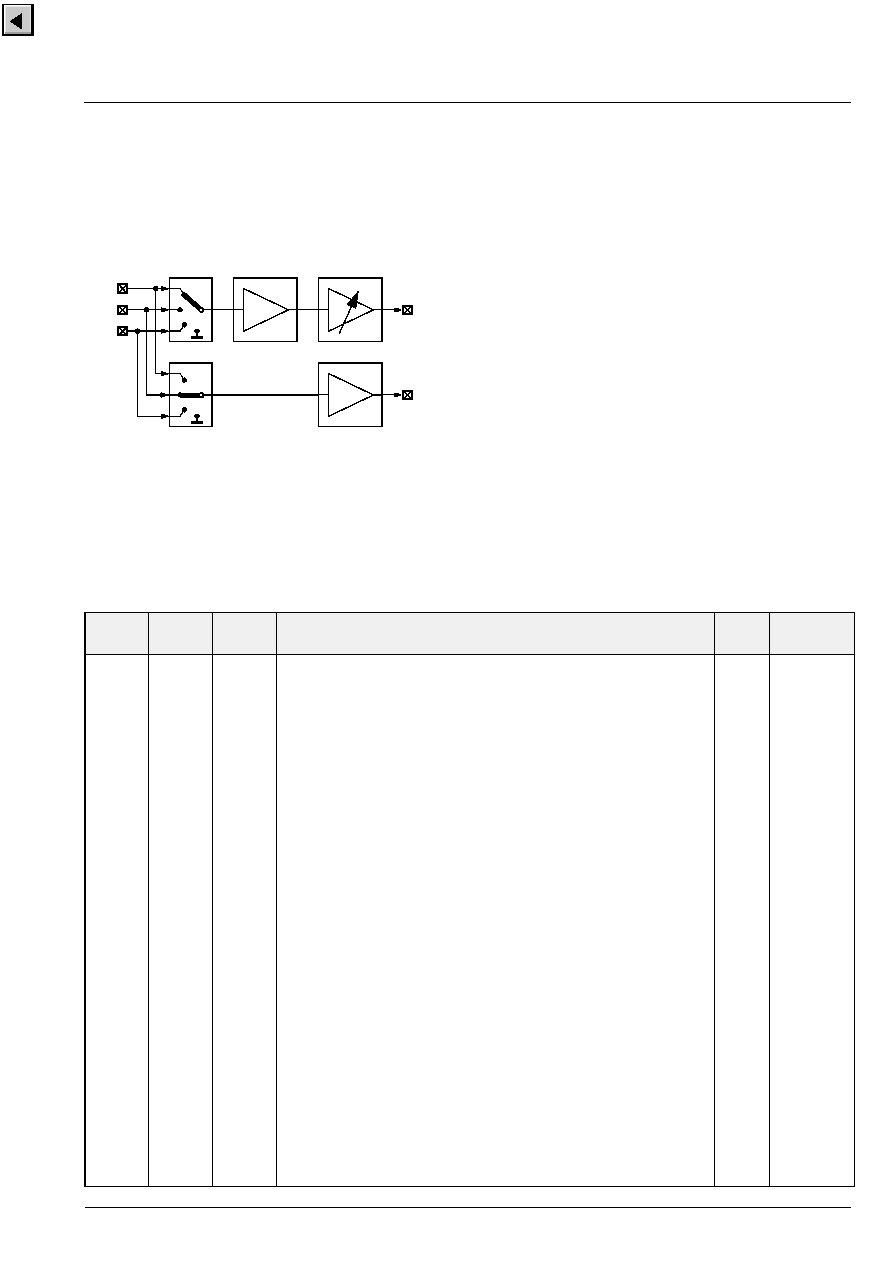
ADVANCE INFORMATION
VCT 38xxA
Micronas
85
4. Audio Processing
4.1. Introduction
The audio processing allows input selection and vol-
ume control for mono audio sources either from tuner
or from SCART input.
Fig. 4�1: Audio processing
4.2. Input Select
Both audio output channels can be switched to any of
the three audio input channels. Only the audio output
channel AOUT1 can be volume controlled.
4.3. Volume Control
The analog volume control covers a range from
+18 dB and
-
75 dB. The lowest step is the mute posi-
tion. Step size is split into a 3-dB and a 1.5-dB range.
-
75 dB...
-
54 dB :
3 dB step size
-
54 dB...+18 dB : 1.5 dB step size
4.4. I
2
C-Bus Slave Interface
The input selection and analog volume is controlled via
the audio control register ACON. This I
2
C register is
activated by the chip address of the video back-end
processing (see Table 2�2 on page 32).
AOUT1
AIN3
AIN1
AIN2
AOUT2
Table 4�1: Audio control register
I
2
C Sub
address
Number
of bits
Mode
Function
Default
Name
h'34
16
w
Audio Control
bit [5:0]
volume control
000000
mute
000001
-
75db
...
000111
-
57.0dB
001000
-
54.0dB
...
101011
-
1.5dB
101100
0.0dB
101101
+1.5dB
...
110110
+15.0dB
110111
+16.5dB
111000
+18.0dB
bit [7:6]
reserved
bit [9:8]
audio input select 1
00
mute
01
AIN1
10
AIN2
11
AIN3
bit [11:10]
audio input select 2
00
mute
01
AIN1
10
AIN2
11
AIN3
bit[12]
low power mode
0
disable low power mode
1
enable low power mode
bit[15:13]
reserved
0 ACON
AVOL
ASEL1
ASEL2
ALPM

VCT 38xxA
ADVANCE INFORMATION
86
Micronas
5. TV Controller
5.1. Introduction
The TV controller basically consists of the CPU, RAM,
ROM, and a number of peripheral modules.
For instance:
� a memory banking module is included to allow
access to more than 64 kB memory.
� a bootloader software is included to allow in-system-
downloading of external code to Flash memory via
the I
2
C interface.
The TV controller runs the complete software neces-
sary to control a TV set. The software includes control
of the audio, video, OSD, and text processors on chip,
as well, as control of external devices like tuner or ste-
reo decoder.
Communication between the TV controller and exter-
nal devices is done either via I
2
C bus interface or via
programmable port pins.
The TV Controller is clocked with f
OSC
= f
XTAL
/2.
5.2. CPU
The CPU is fully compatible to WDC's W65C02 micro-
processor. The processor has 8-bit registers/accumu-
lator, an 8-bit data bus, and a 16-bit address bus. For
further information about the CPU core, please refer to
the WDC W65C02 data sheet.
5.2.1. CPU Slow Mode
To reduce power consumption considerably, the user
can reduce the internal CPU clock frequency to 1/256
of the normal f
CPU
value. In this CPU Slow mode, pro-
gram execution is reduced to 1/256 of the normal
speed, but clocking of most other modules remains
unaffected. The modules that are affected by CPU
Slow mode are:
1. CPU and Interrupt Controller with all internal and
external interrupts
2. RAM, ROM and DMA
3. Watchdog
Some modules must not be operated during CPU Slow
mode. Refer to module sections for details.
After reset the CPU is in Fast mode (f
CPU
= f
OSC
).
CPU Slow mode is enabled by clearing flag CPUFST
in standby register SR1. The CPU clock frequency
reduction to f
OSC
/256 will take effect after a maximum
delay of 256 f
OSC
periods.
Returning CPU to Fast mode is done by setting flag
CPUFST to High. The CPU clock frequency will imme-
diately change to its normal f
OSC
value.
Fig. 5�1 shows the memory access signals during
CPU fast and slow mode.
Fig. 5�1: Memory access signals
f
OSC
PH2
RW
WE
OE
fast mode
slow mode
CCUPH2
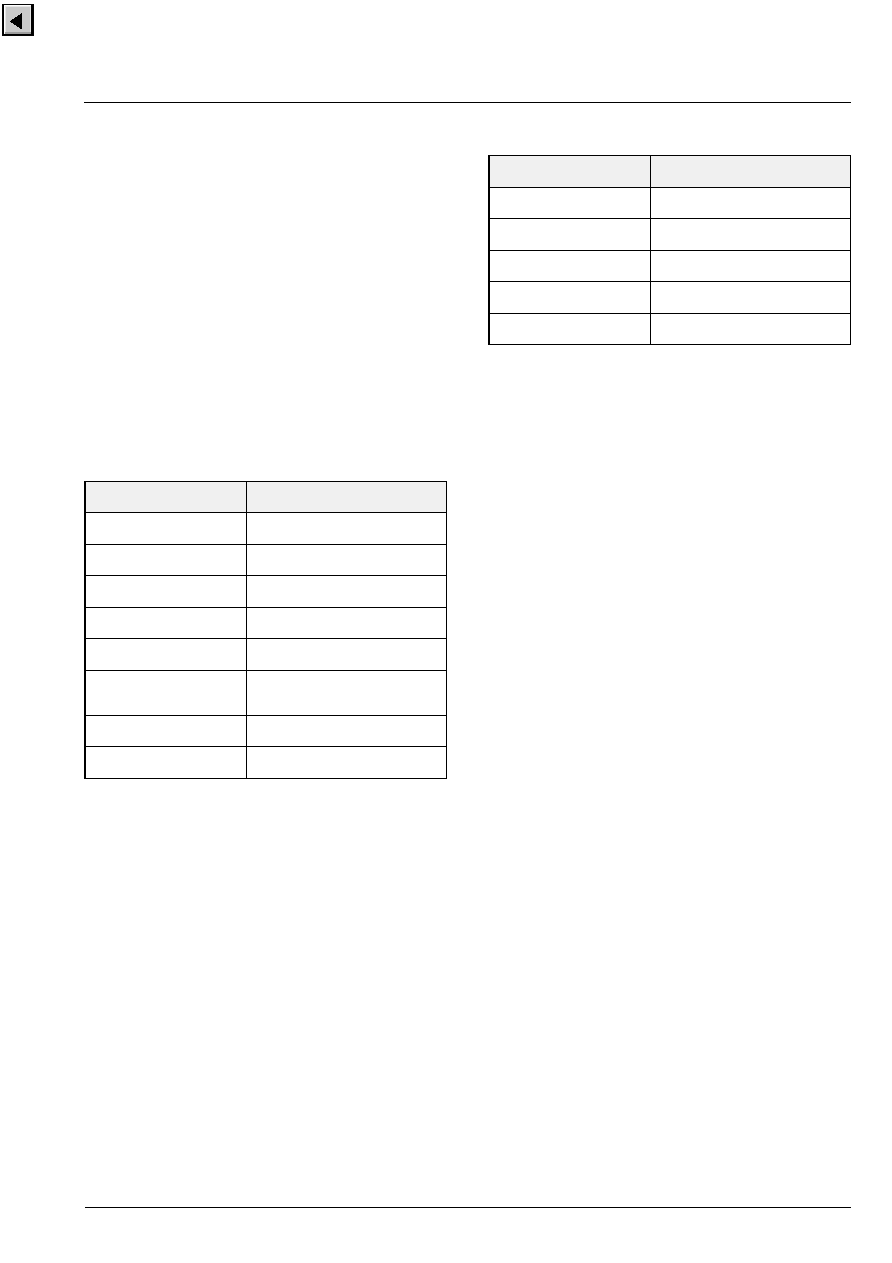
ADVANCE INFORMATION
VCT 38xxA
Micronas
87
5.3. RAM and ROM
On-chip RAM is composed of static RAM cells. The
RAM will hold all information during reset, as long as
the specified operating voltages are available.
The 64PSDIP Multi Chip Module contains a 128-KByte
Flash EEPROM of the ST M29W010B type. These
devices exhibit electrical Byte program and block erase
functions. Refer to the ST M29W010B data sheet for
details.
5.3.1. Address Map
The following ROM addresses are reserved and can-
not be used to store program code.
A 16-Byte address space is reserved as "Manufacturer
ROM ID". This area contains a unique ROM ID number
which has to be agreed between Micronas and the
customer. Especially the first 6 digits identify customer
and version. As an example a Micronas demo software
is identified like "MI1108 240700 TV".
Table 5�2 shows the internal memory segmentation.
Internal program RAM and ROM can be disabled via
the Control Register (chapter 5.4. on page 87). The
internal text RAM can be disabled via Standby Regis-
ter 0 (see page 89).
All memory locations not available internally will be
addressed as external memory. It is possible to oper-
ate with internal and external memory in parallel, but
overlapping memory segments will always be
addressed internally.
During internal memory access, the pins DB0-DB7,
WExQ and OExQ are tristate. For emulation and test
purposes it is possible to change this behavior via the
5.3.2. Bootloader
A segment of the internal ROM is reserved for boot-
loader code. Via this bootloader code it is possible to
download additional code into the internal RAM and
execute this code. The downloaded code can be used
to program the external Flash EEPROM.
After reset the bootloader checks the I
2
C bus pins SDA
and SCL for a special identification sequence. If no
identification sequence is detected, the bootloader
starts the application program code.
The bootloader checks the address FFD6/FFD7 of the
external memory if there is a predefined pattern
(A55Ah). If so, it starts the external application soft-
ware else it starts the internal application software.
5.4. Control Register
The Control Register CR serves to configure the ways,
by which certain system resources are accessed dur-
ing operation. The main purpose is to obtain a variable
system configuration during IC test.
Upon each High transition on the RESQ pin internal
hardware reads data from address location 00FFF9h
and stores it to the CR. The state of the TEST pin at
this timepoint specifies which program storage source
is accessed for this read:
� With the TEST pin Low, the control byte is read from
internal program storage (mask ROM). With location
00FFF9h set to FFh, this is the setting for stand-
alone operation.
� With the TEST pin High, the control byte is read
from external memory via the test bus (for test pur-
poses only).The system will thus start up according
to the configuration defined in address location
00FFF9h and automatically copied to register CR.
Table 5�1: Reserved (physical) addresses
Addresses
Usage
00FFC6
-
00FFD5
Manufacturer ROM ID
00FFD6
-
00FFD7
reserved for bootloader
00FFD8
-
00FFF7
Interrupt Vectors
00FFF8
reserved
00FFF9
Control Word (during reset)
00FFFA
-
00FFFB
NMI Vector (expanded by
Interrupt Controller)
00FFFC
-
00FFFD
Reset Vector
0xFFFE
-
0xFFFF
IRQ/BRK Vector
Table 5�2: Internal Memory Locations
Addresses
Internal Memory
000000
-
000FFF
4k Program RAM
001E00
-
001FFF
I/O
Register
002000
-
0023FF
1k Bootloader ROM
002400
-
019FFF
95k Program ROM
0A0000
-
0A3FFF
16k Text RAM

VCT 38xxA
ADVANCE INFORMATION
88
Micronas
RESLNG
Reset Pulse Length
r/w1:
Pulse length is 4095/f
OSC
.
r/w0:
Pulse length is 16/f
OSC
.
This bit specifies the length of the reset pulse which is
output at pin RESQ following an internal reset. If pin
TEST is 1 the first reset after power on is short. The
following resets are as programmed by RESLNG. If pin
TEST is 0 all resets are long.
TSTTOG
TEST Pin Toggle
r/w1:
Pin TEST can toggle the Multi Function
pins.
r/w0:
Pin TEST can't toggle the Multi Function
pins.
This bit is used for test purposes only. If TSTTOG is
true in IC active mode, pin TEST can toggle the Multi
Function pins between Bus mode and normal mode.
DISEXT
Disable External Memory Access
r/w1:
DB0
-
DB7, WExQ and OExQ output pins
are tristate during internal memory
access (see Fig. 5�2 on page 89).
r/w0:
DB0
-
DB7, WExQ and OExQ output pins
are active during internal memory access.
MFM
Multi Function pin Mode
r/w1:
Enable normal mode.
r/w0:
Enable Test Bus mode.
TSTROM
Test ROM (mask ROM parts only)
r/w1:
Disable internal Test ROM.
r/w0:
Enable internal Test ROM (@ IROM=1).
IROM
Internal ROM
r/w1:
Enable internal CPU ROM.
r/w0:
Disable internal CPU ROM.
IRAM
Internal RAM
r/w1:
Enable internal CPU RAM.
r/w0:
Disable internal CPU RAM.
ICPU
Internal CPU
r/w1:
Enable internal CPU.
r/w0:
Disable internal CPU.
1:
1F01
2:
CR
3:
Control Register
bit
7
6
5
4
3
2
1
0
r/w
RESLNG TSTTOG DISEXT
MFM
TSTROM
IROM
IRAM
ICPU
reset
Value of 00FFF9h
Table 5�5: Some commonly used settings for address
location 00FFF9h.
Code
TEST
Pin
Operation Mode
FFh
0
Stand-alone with internal ROM
or Flash
DFh
0
Emulator mode (CPGA257
package)
ABh
1
External program storage con-
nected to Multi Function pins in
Bus mode
Table 5�3: TSTROM and IROM usage in mask ROM
parts
TSTROM
IROM
selected program storage
1
1
internal CPU ROM
0
1
internal Test ROM
x
0
external on Multi Function
pins in Bus mode
Table 5�4: TSTTOG and MFM usage
TSTTOG
MFM
TEST pin
Multi
Function
Pins
x
1
x
normal mode
1
0
1
normal mode
1
0
0
Bus mode
0
0
x
Bus mode

ADVANCE INFORMATION
VCT 38xxA
Micronas
89
Fig. 5�2: Internal/external memory access
5.5. Standby Registers
The Standby registers allow the user to switch on/off
power or clock supply of single modules. With these
flags it is possible to greatly influence power consump-
tion and its related electromagnetic interference.
For details about enabling and disabling procedures
and the standby state refer to the specific module
descriptions.
The minimum IC current consumption is obtained with
all standby registers set to 00h.
PWM1
Pulse Width Modulator 1
r/w1:
Module active.
r/w0:
Module off.
PWM0
Pulse Width Modulator 0
r/w1:
Module active.
r/w0:
Module off.
TRAM
Text RAM
r/w1:
Module active
r/w0:
Module off
CCC
Capture Compare Counter
r/w1:
Module active.
r/w0:
Module off.
TVPWM
Tuning Voltage Pulse Width Modulator
r/w1:
Module active.
r/w0:
Module off.
CPUFST
CPU Fast Mode
r/w1:
Fast mode: f
CPU
= f
XTAL
/ 2
r/w0:
Slow mode: f
CPU
= f
XTAL
/ 512
ADC
ADC Module
r/w1:
Module active.
r/w0:
Module off.
TIM1
Timer 1
r/w1:
Module active.
r/w0:
Module off.
TIM0
Timer 0
r/w1:
Module active.
r/w0:
Module off.
PH2
RW
ADB
DB
OE
WE
DB
OE
WE
extern
extern
intern
intern
internal signal
Controlword
DISEXT= 1
Controlword
DISEXT= 0
internal signal
4:
1F08
5:
SR0
6:
Standby Register 0
bit
7
6
5
4
3
2
1
0
r/w
PWM1
PWM0
TRAM
CCC
TVPWM
reset
0
0
0
0
0
0
0
0
7:
1F09
8:
SR1
9:
Standby Register 1
bit
7
6
5
4
3
2
1
0
r/w
CPUFST
ADC
TIM1
TIM0
reset
0
1
0
0
0
0
0
0

VCT 38xxA
ADVANCE INFORMATION
90
Micronas
PWM3
Pulse Width Modulator 3
r/w1:
Module active.
r/w0:
Module off.
PWM2
Pulse Width Modulator 2
r/w1:
Module active.
r/w0:
Module off.
I2C
I
2
C-Bus Master Interface
r/w1:
Module active.
r/w0:
Module off.
MB
Memory Banking
r/w1:
Module active.
r/w0:
Module off.
5.6. Test Registers
Test registers are for manufacturing test only. They
must not be written by the user with values other than
their reset values (00h). They are valid independent of
the TEST input state.
In all applications where a hardware reset may not
occur over long times, it is good practice to force a
software reset on these registers within appropriate
intervals.
5.7. Reset Logic
5.7.1. Alarm Function
An alarm comparator on the pin RESQ allows the
detection of a threshold higher than the reset thresh-
old. An alarm interrupt can be triggered with the output
of this comparator.
The interrupt source output of this module is routed to
the Interrupt Controller logic. But this does not neces-
sarily select it as input to the Interrupt Controller.
Check section "Interrupt Controller" for the actually
selectable sources and how to select them.
The intended use of this function is made, when a sys-
tem uses a 3.3V regulator with an unregulated input. In
this case, the unregulated input, scaled down by a
resistive divider, is fed to the RESQ pin. With falling
regulator input voltage this alarm interrupt is triggered
first. Then the reset threshold is reached and
VCT 38xxA is reset before the regulator drops out.
The time interval between the occurrence of the alarm
interrupt and the reset may be used to save process
data to nonvolatile memory. In addition, power saving
steps like turning off other devices may be taken to
increase the time interval until reset. The alarm inter-
rupt is a level triggered interrupt. The interrupt is active
as long as the voltage on pin RESQ remains between
the two thresholds of alarm and reset (see Fig. 5�3 on
page 92).
5.7.2. Software Reset
The TV controller software can generate a reset via
the Reset Control Register (see page 94). To prevent
the TV controller from carrying out a reset in this case,
the internal CPU reset can be disconnected from the
RESQ pin.
10:
1F0A
11:
SR2
12:
Standby Register 2
bit
7
6
5
4
3
2
1
0
r/w
PWM3
PWM2
I2C
MB
reset
0
0
0
0
0
0
0
0
13:
1FFE
14:
TST1
15:
Test Register 1
bit
7
6
5
4
3
2
1
0
w
For testing purposes only
reset
0
0
0
0
0
0
0
0
16:
1FFF
17:
TST2
18:
Test Register 2
bit
7
6
5
4
3
2
1
0
w
For testing purposes only
reset
0
0
0
0
0
0
0
0
19:
1FFD
20:
TST3
21:
Test Register 3
bit
7
6
5
4
3
2
1
0
w
For testing purposes only
reset
0
0
0
0
0
0
0
0
22:
1FFC
23:
TST4
24:
Test Register 4
bit
7
6
5
4
3
2
1
0
w
For testing purposes only
reset
0
0
0
0
0
0
0
0
25:
1FFB
26:
TST5
27:
Test Register 5
bit
7
6
5
4
3
2
1
0
r
For testing purposes only
reset
0
0
0
0
0
0
0
0

ADVANCE INFORMATION
VCT 38xxA
Micronas
91
5.7.2.1. From Standby into Normal Mode
To switch the whole TV application from standby oper-
ation into normal mode the controller has to perform
the following sequence:
� RC.RESDIS = 1, RC.DCOCLP = 1
� RC.RESOUT =1
� switch on power supply
� wait for stable power supply
� RC.SELCLK = 1, RC.I2CEN = 1
� RC.DCOCLP = 0, RC.RESOUT = 0
� wait for RC.ALI = 0 (ext. capacitor!)
� RC.RESDIS = 0
� init DMA interface
� init TPU, VDP and Audio
� init external devices
5.7.2.2. From Normal into Standby Mode
To switch the whole TV application from normal mode
into standby operation the controller has to perform the
following sequence:
� RC.DCOCLP = 1, RC.I2CEN = 0
� wait 1ms for stable 20.25MHz DCO
� RC.SELCLK = 0
� turn off power supply
� set TPU into standby mode
� SR0 = 2, SR1 = 8, SR2 = 0
5.7.3. Internal Reset Sources
The VCT 38xxA contains three internal circuits that are
able to generate a system reset: watchdog, supply
supervision, and clock supervision.
All internal resets are directed to the open drain output
of pin RESQ. Thus a "wired or" combination with exter-
nal reset sources is possible. The RESQ pin is current
limited and therefore large external capacitances may
be connected.
All internal reset sources initially set a reset request
flag. This flag activates the pull-down transistor on the
RESQ pin. An internal reset prolongation counter
starts, as soon as no internal reset source is active any
more. It counts 4096 f
CPU
periods (for alternative set-
tings refer to register CR) and then resets the reset
request flag, thus releasing the RESQ pin.

VCT 38xxA
ADVANCE INFORMATION
92
Micronas
Fig. 5�3: Block diagram of reset logic
5.7.3.1. Supply Supervision
An internal bandgap reference voltage is compared to
VSUP
S
. A VSUP
S
level below the Supply Supervision
threshold VREFPOR will permanently pull the pin
RESQ low and thus hold the VCT 38xxA in reset state
(see Fig. 5�3 on page 92). This reset source is active
after reset and can be enabled/disabled by flag CSA in
register CSW0.
5.7.3.2. Clock Supervision
The Clock Supervision monitors the CPU clock fre-
quency f
CPU
. A frequency level below the clock super-
vision threshold of approx. 200 kHz will permanently
pull the pin RESQ low and thus hold the IC in reset
(see Fig. 5�3 on page 92). This reset source is active
after reset and can be enabled/disabled by flag CSA in
register CSW0.
A frequency exceeding the specified clock frequency is
not detected.
Voltage
Supervision
&
>1
+
-
S Q
R
Clock
Supervision
Reset extension
16 or 4096
oscillator pulses
Watchdog
+
-
VSUP
S
V
REFPOR
Bandgap
V
REFA
V
REFR
V
REFPOR
V
REFA
V
REFR
RESQ
>1
&
CSW0.CSA
>1
+
-
>1
RESET
Interrupt
Source
RC.RESOUT
>1
CPU Reset
RC.RESDIS
VSUP
D
>1
TPU
Watchdog
RC
Reset
Control
reset
internal Reset to DMA, TPU, VDP
RC.VSI
RC.TPUI
RC.ALI
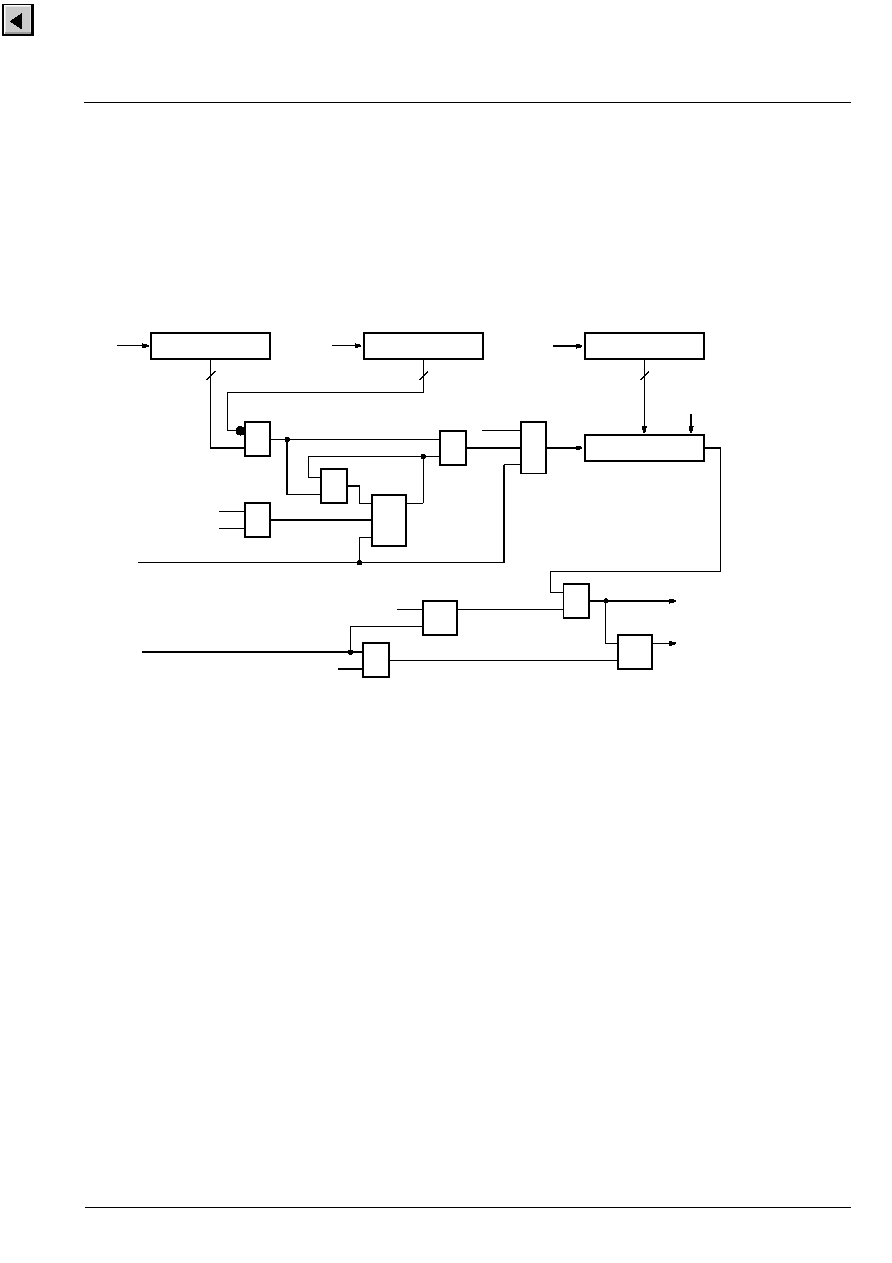
ADVANCE INFORMATION
VCT 38xxA
Micronas
93
5.7.3.3. Watchdog
The Watchdog module serves to monitor undisturbed
program execution. A failure of the program to retrigger
the Watchdog within a preselectable time will pull the
RESQ pin low and thus reset the VCT 38xxA (see Fig.
5�3 and Fig. 5�4). The Watchdog reset source is only
enabled after the first write access to register CSW1
(see Section 5.7.3.2. on page 92).
Once the Watchdog is enabled, it cannot be dis-
abled anymore, neither by software nor by pulling
down the external RESQ pin. Only after power up
the watchdog is disabled.
Fig. 5�4: Block diagram of watchdog
The Watchdog contains a down-counter that gener-
ates a reset when it wraps from zero to FFh. It is
reloaded with the content of the watchdog timer regis-
ter, when, on a write access to register CSW1, watch-
dog trigger registers 1 and 2 contain bit complemented
values. Resetting the VCT 38xxA initializes the watch-
dog timer register to FFh, thus forcing the Watchdog to
create a maximum reset interval.
The Watchdog is controlled by register CSW1. The
first write access to it loads the timer register value set-
ting the Watchdog's unretriggered reset interval. The
desired interval can be programmed by setting the
CSW1 value to:
The resolution of the Watchdog is 8192/f
CPU
. In CPU
Slow mode (see Section 5.2.1. on page 86), the watch-
dog is clocked with the reduced CPU clock.
The second and all following even numbered write
accesses load watchdog trigger register 1, the third
and all following odd numbered write accesses load
watchdog trigger register 2.
In all future, the CPU has to write alternatingly to regis-
ter CSW1 value and bit complement value, thus retrig-
gering the up-counter. Failure to retrigger will result in
an overflow of the up-counter generating a Watchdog
reset.
It is not allowed to change a chosen value. Writing a
wrong value to CSW1 immediately sets the flag
CSW1.WDRES and prohibits further retriggering of the
watchdog counter.
CSW1.WDRES is true after a Watchdog reset. Only a
Supply Supervision reset or a write access to register
CSW1 clears it.
Trigger Reg1
Timer Register
Trigger Reg2
8-Bit-Counter
2.write 3.write
1. write
8
1
8
8
zero
reset out
load
reset in
write CSW1
power on
S Q
R
CSW1.WDRES
CSW1
& even
& odd
CSW1
CSW1
&
S Q
R
&
=
1. write
1
clk = f
CPU
/8192
1. write
C
Q
S
1
&
D
2.write & even
3.write & odd
Value
Interval
f
CPU
�
8192
------------------------------------
1
�
=

VCT 38xxA
ADVANCE INFORMATION
94
Micronas
5.7.4. External Reset Sources
As long as the reset input comparator on the pin
RESQ detects the Low level, the VCT 38xxA is in reset
state. On this pin, external reset sources may be wire-
ored with the internal reset sources, leading to a sys-
tem-wide reset signal combining all system reset
sources.
5.7.5. Summary of Module Reset States
After reset, the controller modules are set to the follow-
ing reset states:
5.7.6. Reset Registers
This register controls the reset logic and clock genera-
tion.
ALI
Alarm Interrupt
r1:
Alarm was interrupt source
r0:
no pending alarm interrupt
w1:
reset alarm interrupt
VSI
VSUP
D
Voltage Supervision Interrupt
r1:
VSUP
D
supervision was interrupt source
r0:
no pending VSUP
D
supervision interrupt
w1:
reset VSUP
D
supervision interrupt
TPUI
TPU Watchdog Interrupt
r1:
TPU watchdog was interrupt source
r0:
no pending TPU watchdog interrupt
w1:
reset TPU interrupt flag
If the source of one of these interrupts is still active,
resetting the interrupt flag will not work and no further
interrupt will be generated.
I2CEN
I2C Enable
r/w1:
Enable I2C output from FE/BE.
r/w0:
Disable I2C output.
DCOCLP
DCO clamping
r/w1:
DCO input clamped to 0.
r/w0:
DCO input controlled by front-end.
SELCLK
Select clock source
r/w1:
From PLL.
r/w0:
From DCO.
RESDIS
Reset Disable
r/w1:
Disable internal CPU reset.
r/w0:
Enable internal CPU reset.
RESOUT
RESQ Output
w1:
RESQ output active.
w0:
RESQ output inactive.
This register controls the Supply and Clock Supervi-
sion modules.
CSA
Clock and Supply Supervision Active
w1:
Both Enabled.
w0:
Both Disabled.
This register controls the Watchdog module. Only val-
ues between 1 and 255 are allowed.
WDRES
Watchdog Reset Source
r1:
Watchdog was reset source.
w:
Any write access to CSW1 resets this
flag.
First write the desired watchdog time value to this reg-
ister. On further writes, to retrigger the Watchdog,
alternatingly write a value (not necessarily the former
time value) and its bit complemented value. Never
change the latter value.
Table 5�6: Status after reset
Module
Status
CPU
CPU Fast mode.
Interrupt
Controller
Interrupts are disabled. Priority reg-
isters, request flip-flops and stack
are cleared.
Ports
Normal mode. Output is tristate.
Watchdog
Switched off. SW activation is pos-
sible.
Clock
monitor
EMU IC: Active. SW may toggle.
normal IC: Permanently active.
28:
1F07
29:
RC
30:
Reset Control Register
bit
7
6
5
4
3
2
1
0
w
ALI
VSI
TPUI
I2CEN
DCOCLP SELCLK RESDIS RESOUT
r
ALI
VSI
TPUI
I2CEN
DCOCLP SELCLK RESDIS
0
reset
0
0
0
0
1
0
0
0
31:
1F00
32:
CSW0
33:
Clock, Supply & Watchdog Regis-
ter 0
bit
7
6
5
4
3
2
1
0
w
x
x
x
x
x
x
x
CSA
reset
x
x
x
x
x
x
x
1
34:
1F60
35:
CSW1
36:
Clock, Supply & Watchdog Regis-
ter 1
bit
7
6
5
4
3
2
1
0
r
x
x
x
x
x
x
x
WDRES
w
Watchdog Time and Trigger Value
reset
1
1
1
1
1
1
1
1

ADVANCE INFORMATION
VCT 38xxA
Micronas
95
5.8. Memory Banking
Fig. 5�5: Block diagram of Memory Banking
The 8-bit processor W65C02 only allows access to
64 kByte of memory space. To allow access to the
expanded memory range above 64 kByte, a specific
banking hardware is implemented. The physical
address range above 32 kBytes (A15 = 1) is separated
into several banks of which only one at a time is
enabled and selected by the Banking register (BR),
which is programmable as any other standard periph-
eral register by writing the desired value into its spe-
cific address. The content of the BR is also readable,
so the software may check the current bank at any
time. The applied software is responsible to program
the BR with the correct bank number at the right time.
Since the upper 32 kBytes range is switched immedi-
ately after programming the BR, correct function is not
guaranteed if it is changed by a program sequence
running in a switched bank. BR settings need to be
done in the lower 32 kBytes (A15 = 0), which is the
non-switchable master bank (bank 0).
Setting BN = 0 should be avoided because it will mirror
the non-switchable master bank (bank 0) into the
upper 32-kByte area (A15 = 1). RAM, I/O pages and
reserved addresses may be manipulated unintention-
ally.
RESET initializes BN = 1 to read control byte and reset
vector from bank 1. Also, interrupt vectors have to
reside in bank 1, because the Interrupt Controller gen-
erates the appropriate address of bank 1, but it does
not change the contents of the BR. Interrupt functions
have to reside in the non-switchable master bank
(bank 0). Otherwise,they need to be in each used
bank, because after getting the vector the unchanged
contents of the BR determine the current bank which is
valid if A15 is "1".
5.8.1. Banking Register
BN
Bank Number
r/w:
number of 32 kByte memory bank
A0 ... A14
Banking
Register
A15 ... A19
65C02
*A0 ... A14
*A15
*D0 ... D7
Interrupt
Controller,
A0 ... A14
A15 ... A19
Address
Decoder,
Memory,
I/O
*Processor internal Bus
DMA
Logic
37:
1F0F
38:
BR
39:
Banking Register
bit
7
6
5
4
3
2
1
0
r/w
BN
reset
0
0
0
0
0
0
0
1
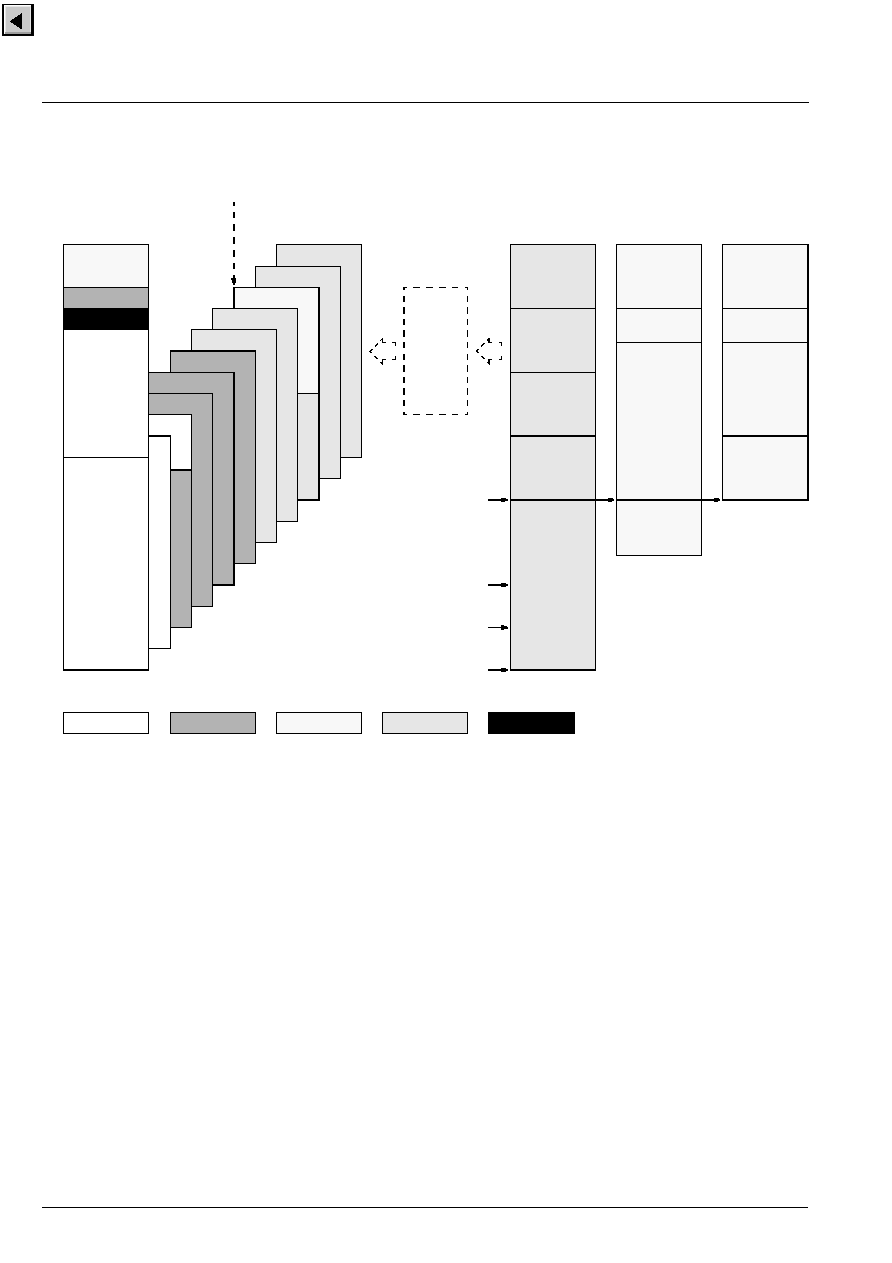
VCT 38xxA
ADVANCE INFORMATION
96
Micronas
Fig. 5�6: Memory Banking shown with the maximal size of addressable memory
5.9. DMA Interface
The DMA interface connects the TPU SRAM interface
to the CPU memory bus (see Fig. 5�7). This is done to
avoid extra pins for external TPU page memory.
The DMA interface must not be operated during CPU
Slow mode. The DMA interface can be disabled via
DMAIM.DMAEN.
As long as the DMA interface is disabled, the TPU can-
not access the CPU address bus and therefore should
not transfer data to/from the internal/external SRAM.
To ensure this, the controller should reset the TPU
before disabling the DMA interface. After reset the
TPU will not access the memory until receiving the I
2
C
command "DRAM_MODE" (see Section 3.12. on
page 68).
B
ank
31
Ba
nk
21-
30
Ba
nk
20
Ban
k
17-
19
Ban
k
16
080000H
084000H
087FFFH
0A8000H
0F8000H
0A0000H
088000H
CPU RAM/ROM
Text RAM
TPU Address Space
Page
Table
Page
Memory
OSD
Bank
Scratch
int. ROM
TTX
Bank
DMA
ext. RAM
int. RAM
ext. ROM
B
ank
0
Ba
nk 1
Ba
nk
2
Ba
nk
3
Ba
nk
4
Ba
nk
5-
14
000000H
004000H
003000H
002000H
001000H
07FFFFH
000000H
000FFFH
001E00H
008000H
00FFFFH
002000H
I/O-Reg
078000H
B
a
nk
15
Page
Table
000000H
Scratch
001000H
Page
Memory
001800H
OSD&TTX
Bank
004000H
020000H
128kbyte
256kbyte
512kbyte
040000H
16kbyte
reserved
19k Text RAM
128k Text RAM
Page
Table
000000H
Scratch
001000H
Page
Memory
001800H
16k Text RAM
003000H
OSD&TTX
Bank

ADVANCE INFORMATION
VCT 38xxA
Micronas
97
Fig. 5�7: Block diagram of DMA interface
In general, all TPU addresses are mapped into bank
16 to 31 of the CPU address space by forcing the MSB
of the address bus to "1" (see Fig. 5�8). Additionally
4 memory segments can be mapped into any address
area by programming a set of DMA registers (see
Fig. 5�9).
Special care should be taken when mapping TPU
addresses into the RAM area of bank 0. Any over-
lap between TPU memory (e.g. OSD Bank) and
controller memory (e.g. non zero page variables)
must be avoided.
Fig. 5�8: DMA address mapping
DMA Interface
TPU
SRAM
Interface
CPU
A[18:0]
D[7:0]
RWQ
PH2
RDY
BE
RWQ
ADB[19:0]
DB[7:0]
RWQ
Address
Mapping
Mux 1:5
Decoder
ADB[19:8]
A19 = "1"
3
12
match4
match3
match2
match1
12
12
12
12
12
map
1
map
2
map
3
map
4
A[18:8]
TPU Address Bus
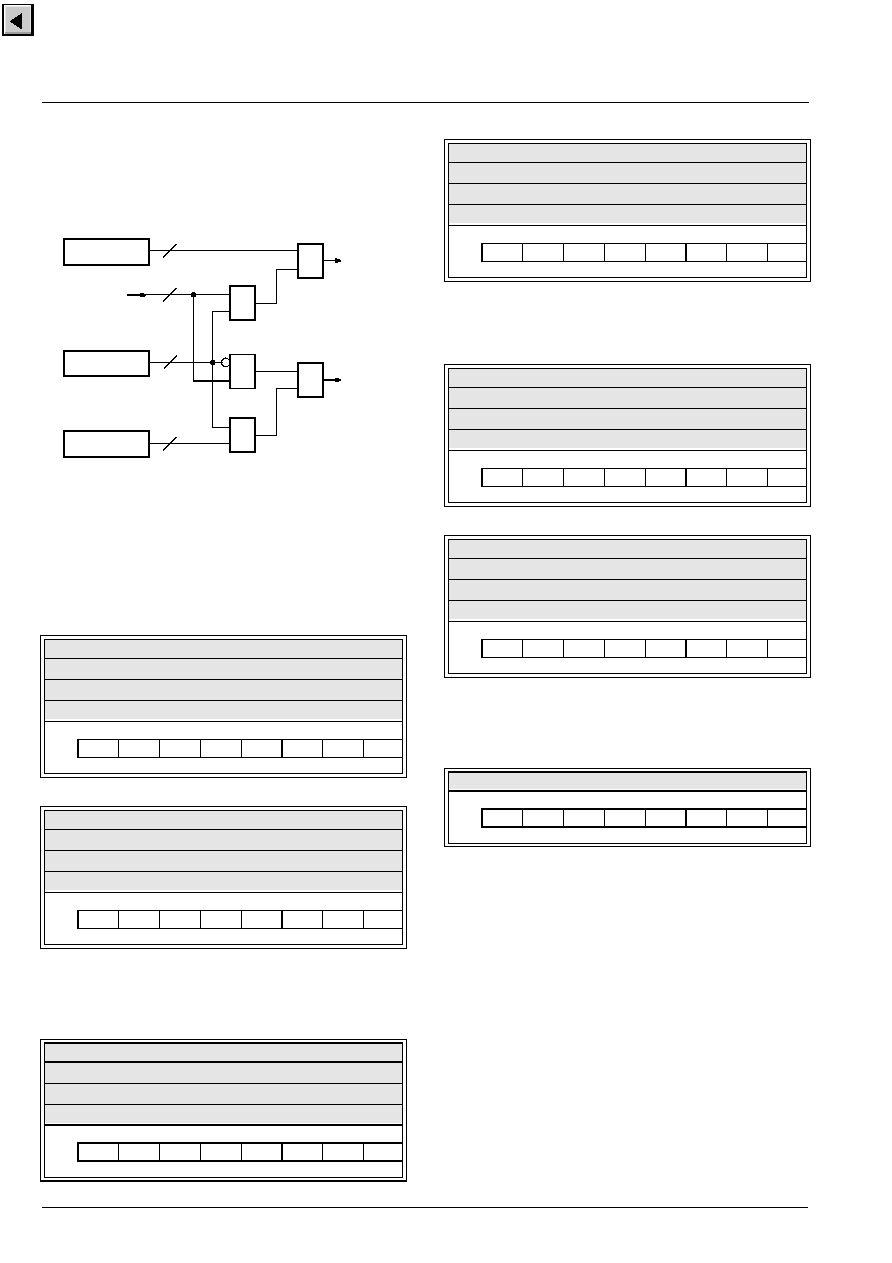
VCT 38xxA
ADVANCE INFORMATION
98
Micronas
If the mapping logic does not find any address match,
the TPU address is directly put on the CPU address
bus with A19 set to "1". In case of multiple matches,
the priority is map1 > map2 > map3 > map4.
Fig. 5�9: DMA mapping logic
5.9.1. DMA Registers
MA19 to 8
Mask Address
TPU address is masked with this value.
CA19 to 8
Compare Address
Masked TPU address is compared with this value.
MPA19 to 8 Map Address
Matching TPU address is replaced with this value.
DMAEN
DMA Enable
w1:
Enable DMA Interface
w0:
Disable DMA Interface
MAPxE
Mapping Logic x Enable
w1:
Enable mapping logic x
w0:
Disable mapping logic x
40:
1E00
41:
MASK1L
42:
Mask 1 Low Byte
43:
1E01
44:
MASK2L
45:
Mask 2 Low Byte
46:
1E02
47:
MASK3L
48:
Mask 3 Low Byte
49:
1E03
50:
MASK4L
51:
Mask 4 Low Byte
bit
7
6
5
4
3
2
1
0
w
MA15
MA14
MA13
MA12
MA11
MA10
MA9
MA8
reset
1
1
1
1
1
1
1
1
52:
1E04
53:
MASK1H
54:
Mask 1 High Byte
55:
1E05
56:
MASK2H
57:
Mask 2 High Byte
58:
1E06
59:
MASK3H
60:
Mask 3 High Byte
61:
1E07
62:
MASK4H
63:
Mask 4 High Byte
bit
7
6
5
4
3
2
1
0
w
MA19
MA18
MA17
MA16
reset
1
1
1
1
64:
1E08
65:
CMP1L
66:
Compare 1 Low Byte
67:
1E09
68:
CMP2L
69:
Compare 2 Low Byte
70:
1E0A
71:
CMP3L
72:
Compare 3 Low Byte
73:
1E0B
74:
CMP4L
75:
Compare 4 Low Byte
bit
7
6
5
4
3
2
1
0
w
CA15
CA14
CA13
CA12
CA11
CA10
CA9
CA8
reset
1
1
1
1
1
1
1
1
&
=
1
MASK n
CMP n
MAP n
match
&
&
A[19:8]
A[19:8]
n: mapping logic 1 to 4
12
12
12
12
76:
1E0C
77:
CMP1H
78:
Compare 1 High Byte
79:
1E0D
80:
CMP2H
81:
Compare 2 High Byte
82:
1E0E
83:
CMP3H
84:
Compare 3 High Byte
85:
1E0F
86:
CMP4H
87:
Compare 4 High Byte
bit
7
6
5
4
3
2
1
0
w
CA19
CA18
CA17
CA16
reset
1
1
1
1
88:
1E10
89:
MAP1L
90:
Map 1 Low Byte
91:
1E11
92:
MAP2L
93:
Map 2 Low Byte
94:
1E12
95:
MAP3L
96:
Map 3 Low Byte
97:
1E13
98:
MAP4L
99:
Map 4 Low Byte
bit
7
6
5
4
3
2
1
0
w
MPA15
MPA14
MPA13
MPA12
MPA11
MPA10
MPA9
MPA8
reset
1
1
1
1
1
1
1
1
100:
1E14
101:
MAP1H
102:
Map 1 High Byte
103:
1E15
104:
MAP2H
105:
Map 2 High Byte
106:
1E16
107:
MAP3H
108:
Map 3 High Byte
109:
1E17
110:
MAP4H
111:
Map 4 High Byte
bit
7
6
5
4
3
2
1
0
w
MPA19
MPA18
MPA17
MPA16
reset
1
1
1
1
112:
1E18
113:
DMAIM
114:
DMA Interface Mode
bit
7
6
5
4
3
2
1
0
w
DMAEN
MAP4E
MAP3E
MAP2E
MAP1E
reset
0
0
0
0
0

ADVANCE INFORMATION
VCT 38xxA
Micronas
99
5.10.Interrupt Controller
The Interrupt Controller has 16 input channels (see
Fig. 5�10 on page 100). Each input has its own inter-
rupt vector pointing to an interrupt service routine
(ISR). One of 15 priority levels can be assigned to
each input or the input can be disabled. The Interrupt
Controller is connected to the NMI input of the CPU.
But despite of the non-maskable interrupt input, it is
possible to disable all interrupt sources in total in the
Interrupt Controller.
5.10.1.Features
� 16 interrupt inputs.
� 16 interrupt vectors.
� 15 individual priority levels.
� Global/individual disable of interrupts.
� Single interrupt service mode.
5.10.2.General
Interrupt requests are served in the order of their pro-
grammed priority level. Interrupt requests of the same
priority level are served in descending order of inter-
rupt input number.
Each of the 16 interrupt inputs clears a flag in the inter-
rupt pending register (IRRET and IRP), which can be
read by the user. A pending interrupt enables the out-
put of the corresponding priority register (IRPRI10 to
IRPRIFE) which is connected to a parallel priority
decoder together with the other priority registers. The
decoder outputs the highest priority and its input num-
ber to a latch. The latched priority is compared with the
top entry of the priority stack. The top entry of the pri-
ority stack contains the priority of the actual served
interrupt. Lower entries contain interrupts with lower
priority whose interrupt service routines were started
but interrupted by the higher priority interrupts above. If
the latched priority is lower or equal than the top of
stack priority, nothing happens. If the latched priority is
higher than the top of stack priority, a NMI is sent to the
CPU and the latched priority is pushed on the stack.
The Interrupt Controller signals an interrupt by NMI
input to the CPU. After the current instruction is fin-
ished the CPU starts an interrupt sequence. First it
puts the program bank register, the program counter
High byte, the program counter Low byte and the pro-
gram status register to the stack. Then the CPU writes
the vector address Low byte (00FFFAh) to the bus.
The Interrupt Controller recognizes this address and
stops the CPU by the RDY signal. Now the Interrupt
Controller writes the vector address Low and High byte
of the corresponding interrupt number to the bus and
releases the CPU by releasing RDY. The CPU now
operates with the new vector of the interrupt service
routine.
When the Interrupt Controller writes the new vector to
the address bus, the interrupt pending flag of this vec-
tor is set, indicating that no interrupt is pending.
The software must pull the top entry from the priority
stack at the end of an interrupt service routine. This
happens with the write access to the interrupt return
register IRRET. Then the next entry (with lower prior-
ity) is visible at top of stack and is compared with the
priority latch.
The Interrupt Controller and related circuitry is clocked
by the CPU clock and participates in CPU Fast and
Slow mode.
5.10.3.Initialization
After reset, all internal registers are cleared but the
Interrupt Controller is active. When an interrupt
request arrives, it will be stored in the respective pend-
ing register IRP/IRRET. But it will not trigger an inter-
rupt as long as its interrupt priority register IRPRIxy is
set to zero.
Proper SW configuration of the interrupt sources in
peripheral modules has to be made prior to operation.
Before enabling individual inputs, make sure that no
previously received signal on that input has cleared its
pending flag which may trigger the Interrupt Controller.
Clear all pending interrupts with the flag IRC.CLEAR to
avoid such an effect.
5.10.4.Operation
Activation of an interrupt input is done by writing a pri-
ority value ranging from 1h to Fh to the respective
IRPRIxy register. Upon an interrupt request, pending
or fresh, the Interrupt Controller will immediately gen-
erate an interrupt.
During operation, changes in the priority register set-
ting may be made to obtain varying interrupt servicing
strategies. Flags IRC.DAINT, IRC.DINT and
IRC.A1INT allow some variation in the Interrupt Con-
troller response behavior.
5.10.5.Inactivation
There are two possibilities to disable an interrupt within
the Interrupt Controller. Changing the priority of an
interrupt input to zero disables this interrupt locally.
Interrupts are globally disabled by writing a zero to flag
IRC.DINT of register IRC.

VCT
38xxA
A
D
V
A
NCE
INFORM
A
T
ION
10
0
M
i
c
r
onas
Pending
Register
Priority
Registers
IRPRI10
IRPRI32
IRPRIFE
Fig. 5�10: Block diagram of interrupt logic
R
S
Q
Int-Input 1
Int-Input 2
Int-Input 3
Int-Input 4
Int-Input 15
Int-Input 16
4
4
4
4
4
4
16
Parallel
Priority
Decoder
A>B
A
B
Interrupt
Vector
Table
16
Ctrl
Priority
Stack
15 x 4
RDY
A0...A23
NMI
clke
Priority
Latch
enable
00FFFA
clke
push
IRRET write
pull
Clear Request
input #
prio
4
priority
4
4
A=B
A
B
clke
&
clke
DMAE
Ph2
DMAE
R
S
Q
R
S
Q
R
S
Q
R
S
Q
R
S
Q
&
CCUNMIDIS
CCUNMI
PATCH
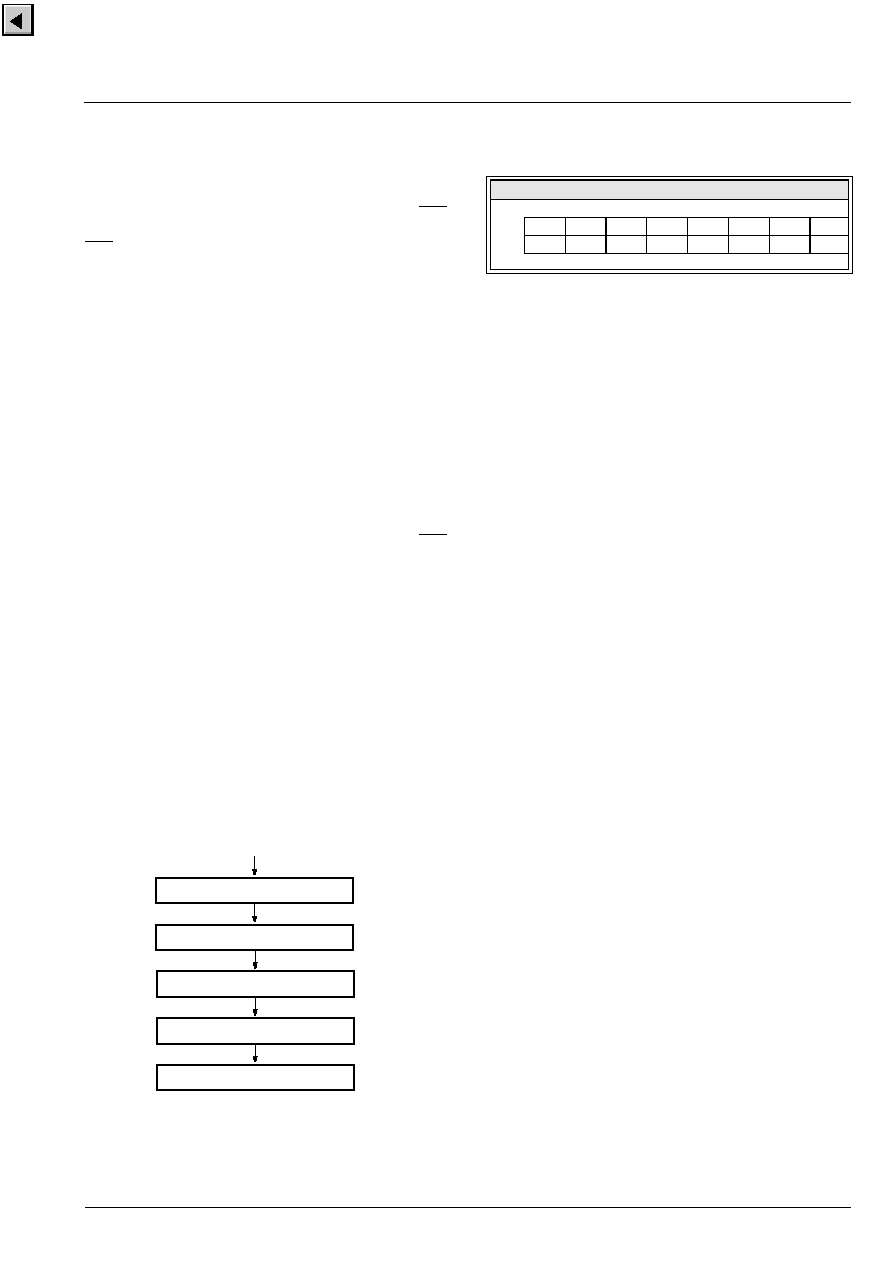
ADVANCE INFORMATION
VCT 38xxA
Micronas
101
Within the evaluation period (see Section 5.10.10. on
page 106) it's not possible to suppress an interrupt by
changing priority.
A zero in the flag IRC.DINT of register IRC prevents
the Interrupt Controller from pulling the signal NMI
Low. However, if this flag is set after the falling edge of
NMI, the corresponding interrupt cannot be cancelled.
5.10.6.Precautions
The write access to the IRRET must be performed just
before the RTI command at the end of the interrupt
service routine. After a write access to this location it is
guaranteed that the next command (should be RTI) will
be processed completely before a new interrupt
request is signaled to the CPU. If the RTI command
does not immediately follow the write to IRRET, an
interrupt with the same priority may be detected before
the corresponding RTI is processed. A stack underflow
may occur because this may happen several times.
If an opcode fetch of a disable interrupt instruction (DI)
happens one clock cycle after the falling edge of NMI
(see Section 5.10.10. on page 106), it is possible, that
an interrupt service routine (ISR) is active, though the
corresponding interrupt is disabled. That is why after
disabling an interrupt, and before accessing critical
data, at least one uncritical instruction is necessary.
This guarantees that the ISR is finished before critical
data access and no further ISR can interrupt it.
Because it is now possible that an ISR can lengthen
the time between DI and enable interrupt (EI) indefi-
nitely, it is necessary that an ISR first saves registers
and enables interrupt flags, and then enables inter-
rupts. After interrupt execution, enable flags and regis-
ters must be restored. This guarantees, that other
interrupts are not locked out during interrupt execution.
Fig. 5�11: Interrupt service routine
5.10.7.Interrupt Registers
RESET Reset
w1:
No action.
w0:
Momentary reset of the Interrupt Control-
ler, all internal registers are cleared.
The reset of the Interrupt Controller happens with writ-
ing zero to this flag. It is not necessary to write a one to
finish the reset.
The standard interrupt controller function is performed
by setting all flags to one. A hardware reset of the
Interrupt Controller is performed by setting the RESET
flag to Low and the other flags to High.
DAINT
Disable after interrupt
r1:
Don't disable after interrupt.
r0:
Disable Interrupt Controller after interrupt.
w1:
Cancel this feature.
w0:
Disable Interrupt Controller after interrupt.
This is the enable flag for the flag A1INT function.
DINT Disable
interrupt
r1:
Interrupts are enabled.
r0:
All interrupts are disabled.
w1:
Enable interrupts according to priority set-
ting.
w0:
Disable all interrupts.
A1INT
Allow one interrupt
w1:
No action.
w0:
Serve one interrupt.
This is a momentary signal. With DAINT = 0, only one
interrupt (with the highest priority) will be served.
The Flags DAINT and A1INT must be considered in
common. They provide the possibility to serve inter-
rupts one by one, only when the main program has
enough time.
CLEAR
Clear all requests
w1:
No action.
w0:
Momentarily clears all interrupt requests.
Save Registers
Execute Interrupt
Restore Registers
Write to IRRET
RTI
115:
1F20
116:
IRC
117:
Interrupt Control Register
bit
7
6
5
4
3
2
1
0
r
x
x
x
x
DAINT
DINT
x
x
w
x
x
x
RESET
DAINT
DINT
A1INT
CLEAR
reset
x
1
1
x
x
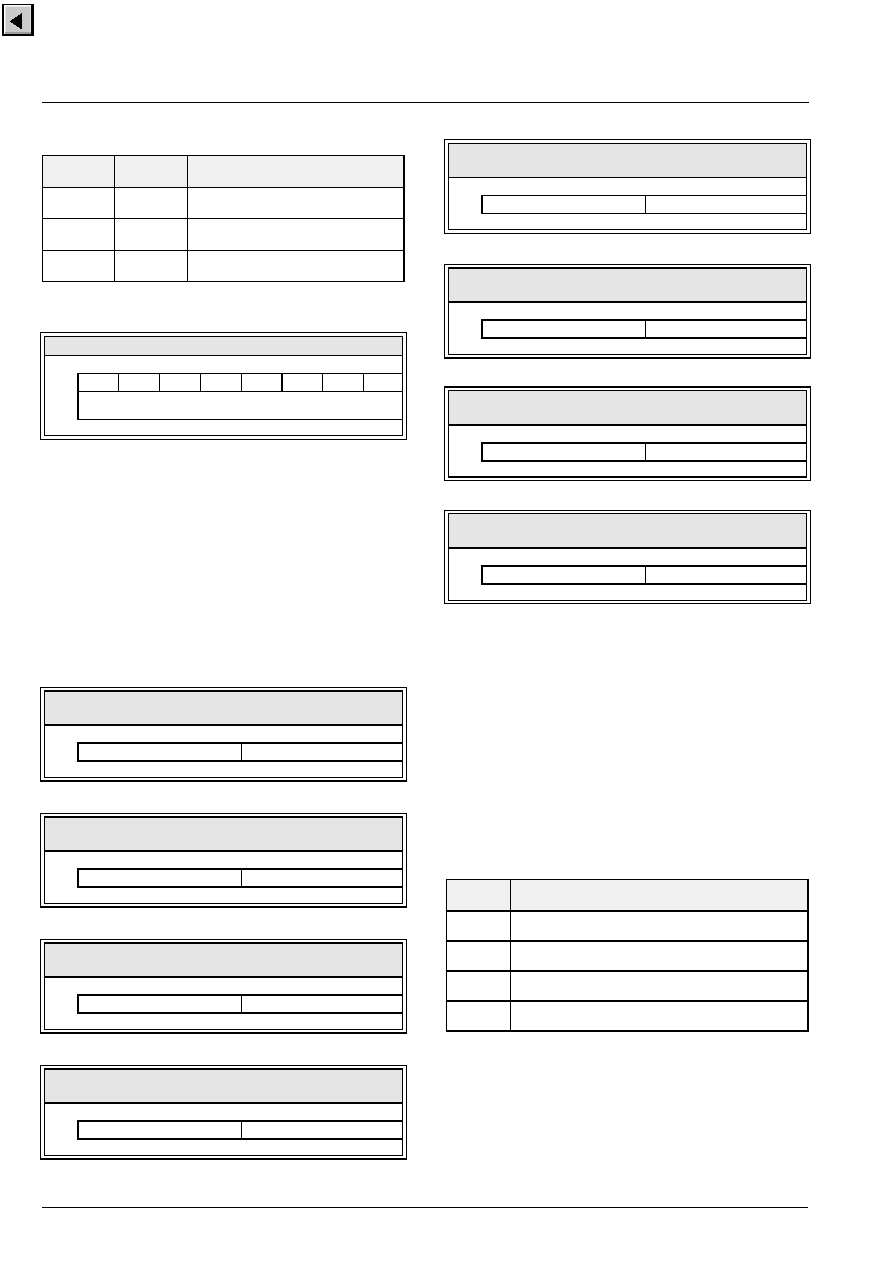
VCT 38xxA
ADVANCE INFORMATION
102
Micronas
IPF0 to 7
Interrupt Pending Flag of Input 0 to 7
r1:
No interrupt is pending.
r0:
Interrupt is pending.
w:
Current request is finished.
For interrupt pending flags 8 to 15 refer to description
of register IRP.
A write access to this memory location signals to the
Interrupt Controller that the current request has been
served.
PRIOn
Priority of interrupt input n
r:
Priority of the corresponding interrupt
input.
w:
Priority of the corresponding interrupt
input.
Priority zero prevents the Interrupt Controller from
being triggered but the pending register is not affected.
All incoming requests are stored in the pending regis-
ters. With two inputs having the same PRIO setting,
the higher numbered input has priority.
Table 5�7: Single interrupt service
DAINT
A1INT
Resulting Function
0
1
Disable after current interrupt.
0
0
Serve one interrupt request.
1
x
Normal interrupt mode.
118:
1F21
119:
IRRET
120:
Interrupt Return Register
bit
7
6
5
4
3
2
1
0
r
IPF7
IPF6
IPF5
IPF4
IPF3
IPF2
IPF1
IPF0
w
A write access signals the Interrupt Controller that the current request has
been served.
reset
0
0
0
0
0
0
0
0
121:
1F22
122:
IRPRI10
123:
Interrupt Priority Register, Input 0
and 1
bit
7
6
5
4
3
2
1
0
r/w
PRIO1
PRIO0
reset
0
0
0
0
0
0
0
0
124:
1F23
125:
IRPRI32
126:
Interrupt Priority Register, Input 2
and 3
bit
7
6
5
4
3
2
1
0
r/w
PRIO3
PRIO2
reset
0
0
0
0
0
0
0
0
127:
1F24
128:
IRPRI54
129:
Interrupt Priority Register, Input 4
and 5
bit
7
6
5
4
3
2
1
0
r/w
PRIO5
PRIO4
reset
0
0
0
0
0
0
0
0
130:
1F25
131:
IRPRI76
132:
Interrupt Priority Register, Input 6
and 7
bit
7
6
5
4
3
2
1
0
r/w
PRIO7
PRIO6
reset
0
0
0
0
0
0
0
0
133:
1F26
134:
IRPRI98
135:
Interrupt Priority Register, Input 8
and 9
bit
7
6
5
4
3
2
1
0
r/w
PRIO9
PRIO8
reset
0
0
0
0
0
0
0
0
136:
1F27
137:
IRPRIBA
138:
Interrupt Priority Register, Input
10 and 11
bit
7
6
5
4
3
2
1
0
r/w
PRIO11
PRIO10
reset
0
0
0
0
0
0
0
0
139:
1F28
140:
IRPRIDC
141:
Interrupt Priority Register, Input
12 and 13
bit
7
6
5
4
3
2
1
0
r/w
PRIO13
PRIO12
reset
0
0
0
0
0
0
0
0
142:
1F29
143:
IRPRIFE
144:
Interrupt Priority Register, Input
14 and 15
bit
7
6
5
4
3
2
1
0
r/w
PRIO15
PRIO14
reset
0
0
0
0
0
0
0
0
Table 5�8: PRIOn usage
PRIOn
Resulting Function
0h
Interrupt input is disabled
1h
Interrupt input is enabled with lowest priority
:
:
Fh
Interrupt input is enabled with highest priority

ADVANCE INFORMATION
VCT 38xxA
Micronas
103
IPF8 to 15
Interrupt Pending Flag of Input 8 to 15
r1:
No interrupt is pending.
r0:
Interrupt is pending.
For interrupt pending flags 0 to 7 refer to description of
register IRRET.
5.10.8.Interrupt Assignment
While most interrupt assignments are hard-wired,
some can be configured by software (see Fig. 5�12 on
page 104).
5.10.8.1. Interrupt Multiplexer
Interrupt inputs 0
-
11 are directly connected to the
respective module's interrupt output. Four interrupt
inputs 12 to 15 allow source selection via multiplexers.
The source can be any of the 15 special input ports
(see Section 5.18.1. on page 126). The multiplexers
are configured by registers IRPMUX0 and IRPMUX1.
145:
1F2A
146:
IRP
147:
Interrupt Pending Register
bit
7
6
5
4
3
2
1
0
r
IPF15
IPF14
IPF13
IPF12
IPF11
IPF10
IPF9
IPF8
reset
0
0
0
0
0
0
0
0
Table 5�9: Interrupt assignment
Interrupt
Input
Interrupt
Vector Address
Interrupt
Source
0
00FFF6
-
F7
I2C
1
00FFF4
-
F5
T0
2
00FFF2
-
F3
T1
3
00FFF0
-
F1
CCCOFL
4
00FFEE
-
EF
CC0OR
5
00FFEC
-
ED
CC0COMP
6
00FFEA
-
EB
CC1OR
7
00FFE8
-
E9
CC1COMP
8
00FFE6
-
E7
TVPWM
9
00FFE4
-
E5
VSYNC
10
00FFE2
-
E3
RESET
11
00FFE0
-
E1
CMPO
12
00FFDE
-
DF
PINT0
13
00FFDC
-
DD
PINT1
14
00FFDA
-
DB
PINT2
15
00FFD8
-
D9
PINT3
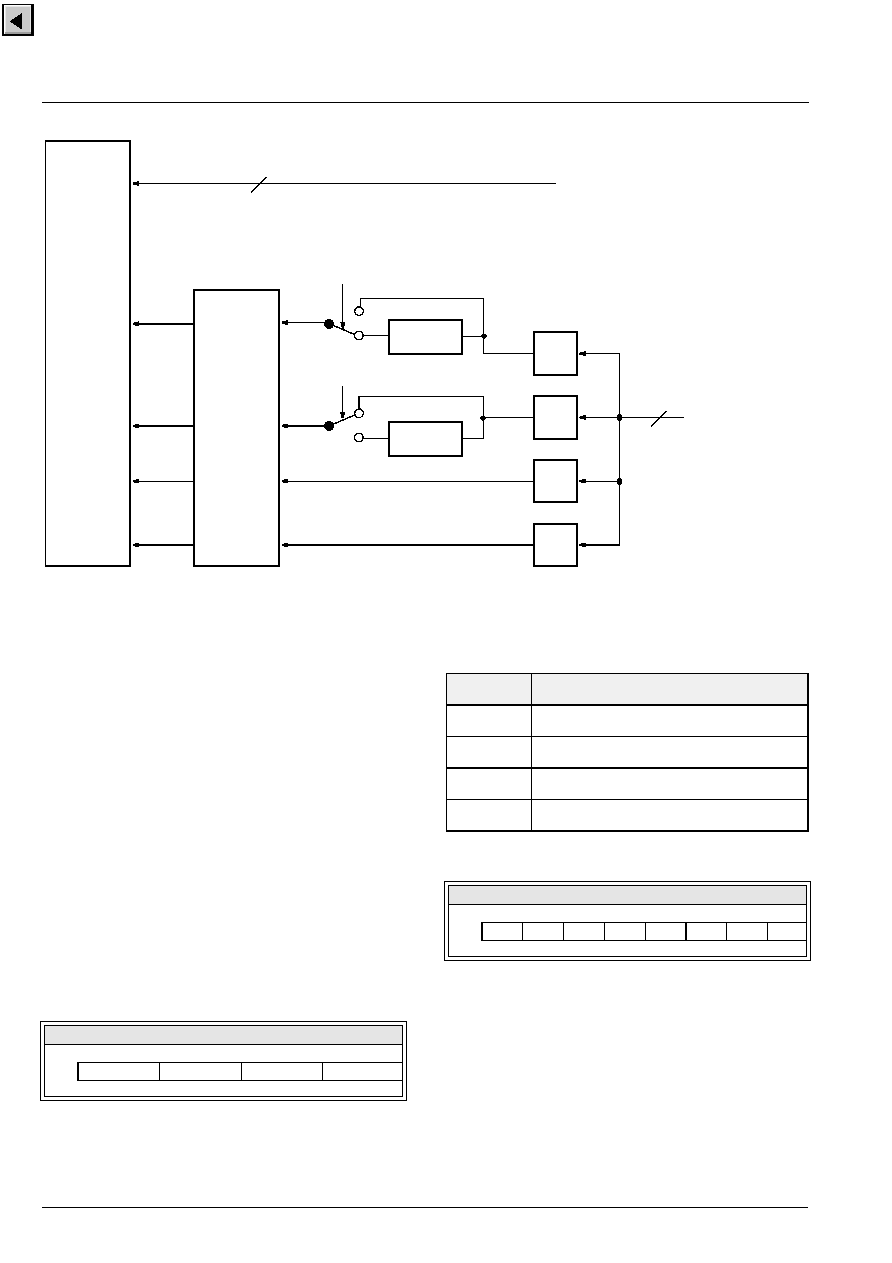
VCT 38xxA
ADVANCE INFORMATION
104
Micronas
Fig. 5�12: Interrupt assignment and multiplexer
5.10.9.Port Interrupt Module
Port interrupts are the interface of the Interrupt Con-
troller to the external world. Four port pins are con-
nected to the module via their special input lines. Port
interrupt 0 and 1 can scale down the interrupt load by
prescalers. Port interrupt 2 and 3 are directly con-
nected to the special input multiplexer.
The user can define the trigger mode for each port
interrupt by the interrupt port mode register. The Port
interrupt prescaler can be switched by the interrupt
port prescaler register. The pulse duty factor of the
prescaler output is 50 %.
The Trigger mode defines on which edge of the inter-
rupt source signal the Interrupt Controller is triggered.
The triggering of the Interrupt Controller is shown in
Fig. 5�13 and Fig. 5�14 for port prescaler active
(P1INT32 or P0INT4 = 1).
PITn
Port interrupt trigger n
This field defines the trigger behavior of the associated
port interrupt.
P1INT32
Port 1 interrupt prescaler
w1:
Indirect mode, 1:32 prescaler
w0:
Direct mode, bypass prescaler
P0INT4
Port 0 interrupt prescaler
w1:
Indirect mode, 1:4 prescaler
w0:
Direct mode, bypass prescaler
Mux 0
Mux 1
Mux 2
Mux 3
Interrupt
Controller
Special
Input
Ports
15
Interrupt sources
of peripheral
modules
Trigger
Mode
IRPM0
0
1
1/4
IRPP.P0INT4
0
1
IRPP.P1INT32
1/32
12
PINT0
PINT1
PINT2
PINT3
148:
1F2B
149:
IRPM0
150:
Interrupt Port Mode
bit
7
6
5
4
3
2
1
0
w
PIT3
PIT2
PIT1
PIT0
reset
0
0
0
0
0
0
0
0
Table 5�10: PITn usage
PITn
Trigger Mode
0h
Interrupt source is disabled
1h
Rising edge
2h
Falling edge
3h
Rising and falling edges
151:
1F2C
152:
IRPP
153:
Interrupt Port Prescaler
bit
7
6
5
4
3
2
1
0
w
x
x
x
x
x
x
P1INT32 P0INT4
reset
0
0
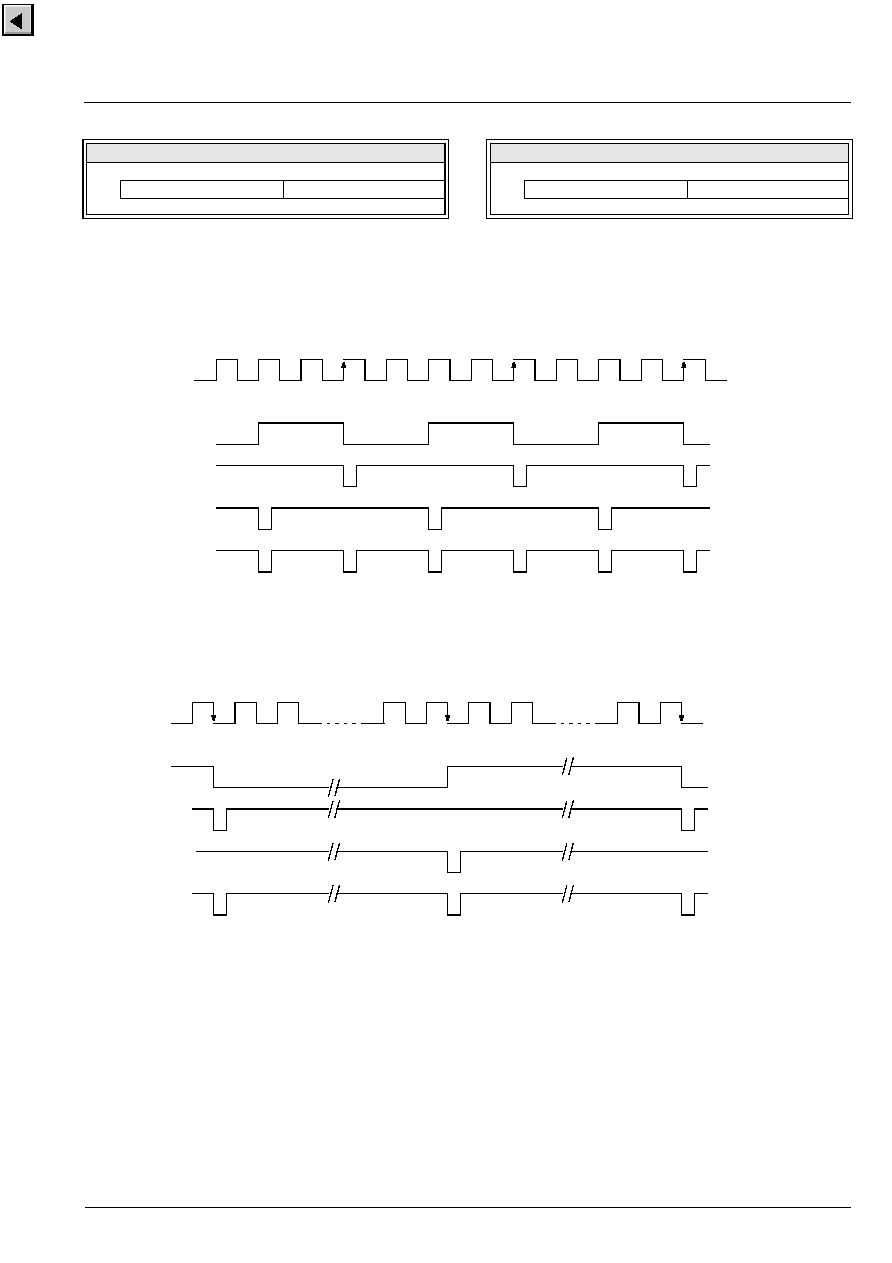
ADVANCE INFORMATION
VCT 38xxA
Micronas
105
PISIPn
Port interrupt special input port n
This field defines the special input port connected to
the associated port interrupt (see Table on page 126).
Fig. 5�13: Interrupt timing (1/4 Prescaler On)
Fig. 5�14: Interrupt timing (1/32 Prescaler On)
154:
1E71
155:
IRPMUX0
156:
Interrupt Port Multiplex 0
bit
7
6
5
4
3
2
1
0
w
PISIP1
PISIP0
reset
0
0
0
0
0
0
0
0
157:
1E72
158:
IRPMUX1
159:
Interrupt Port Multiplex 1
bit
7
6
5
4
3
2
1
0
w
PISIP3
PISIP2
reset
0
0
0
0
0
0
0
0
1
2
3
4
1
2
3
4
1
2
3
4
Port Px.y
Falling edge
Falling and rising
Independent
Interrupt
(low active)
Interrupt
(low active)
1/4 prescaler output
of trigger mode
edge trigger mode
Rising edge
Interrupt
(low active)
32
1
2
15
16
31
32
Port Px.y
Falling edge trigger
Falling and rising
Independent
Interrupt
(low active)
Interrupt
(low active)
1/32
of trigger mode
edge trigger mode
prescaler output
17
18
Rising edge trigger
Interrupt
(low active)

VCT 38xxA
ADVANCE INFORMATION
106
Micronas
5.10.10.Interrupt Timing
The interrupt response time is calculated from the
interrupt event up to the first interrupt vector on the
address bus (see Fig. 5�15 on page 106).
After an interrupt event, the Interrupt Controller starts
evaluation with the first falling edge of PH2.
Evaluation needs one clock cycle until the Interrupt
Controller pulls the signal NMI Low.
After the falling edge of NMI the CPU finishes the
actual command. If the falling edge of NMI happens
one clock cycle before an opcode fetch, the following
command will be finished too. Then PC and status will
be saved on stack before the Low byte of the interrupt
vector is written to the address bus.
Fig. 5�15: Interrupt timing diagram
Interrupt
Request
NMI
RDY
Clear
Request
PH2
DMAE
Interrupts
Finish actual command and save status.
(Save status = 5 clocks).
enabled
A0...23
Interrupt
00FFFA
Vector 2nd Byte
Vector 1st Byte
DMA
Opcode ISR

ADVANCE INFORMATION
VCT 38xxA
Micronas
107
5.11.Memory Patch Module
The Memory Patch Module allows the user to modify
up to ten hard-wired ROM locations by external
means. This function is useful if faulty parts of software
or data are detected after the ROM code has been
cast into mask ROM.
Software loads addresses and the corrected code e.g.
from external non-volatile memory into respective
registers of the module. The module then will replace
faulty code upon address match.
Single ROM locations are directly replaced. Longer
faulty sequences may be repaired by introducing a
jump to a new subroutine in RAM (e.g. opcode JSR
requires 3 consecutive bytes to be patched). The RAM
subroutine then may consist of any number of instruc-
tions, ending with a return to the next correct instruc-
tion in ROM. In such a way it is possible to include also
complex software modules.
5.11.1.Features
� patching of read data from up to 10 different ROM
locations (24 bit physical address)
� automatic insertion of 1 CPU wait state for each
patched access
Fig. 5�16: Block diagram of patch module
5.11.2.General
The logic contains ten patch cells (see Fig. 5�16 on
page 107), each consisting of a 24-bit compare regis-
ter (Patch Address register, PARn), a 24-bit address
comparator, a Patch Enable register (PERn) bit and an
8-bit Patch Data register (PDR).
The current address information for a ROM access is
fed to a bank of ten patch cells. In case of a match in
one patch cell, and provided that the corresponding
Patch Enable register bit is set, a wait cycle for CPU is
included by pulling down the RDY input of CPU for one
cycle (see Fig. on page 108). In the meantime the
module's logic disables the ROM data bus drivers and
instead places the data information from the corre-
sponding Patch Data register on the data bus.
5.11.3.Initialization
After reset, as bit PER0.PMEN is reset to 0, all patch
cell registers are in Write mode and patch operation is
disabled.
To initialize a patch cell, first set the corresponding
PSEL bit in register PER0 or PER1 as a pointer. Then
enter the 24bit address to registers PAR2 (High byte),
PAR1 (middle byte) and PAR0 (Low byte) and the
desired patch code to register PDR.
If desired, repeat the above sequence for other patch
cells. Only set one PSEL pointer bit in registers PER0
and PER1 at a time.
PA[23:16]
PA[7:0]
ADB[23:0]
DB[7:0]
1
PA[15:8]
Patch Address Register
P
a
t
c
h Enab
le
R
egi
s
t
er
Output Enable
Patch Data
Patch Cell 0
Patch Cells 1...9
Register
Enable
Write/Compare
Sequencer
P
S
E
L
9...0
PM
EN
DBP[7:0]
RDY
ROMEN
RWQ
ROMACC
PH2
PATOE
&

VCT 38xxA
ADVANCE INFORMATION
108
Micronas
5.11.4.Patch Operation
To activate a number of properly initialized patch cells
for ROM code patching, set all the corresponding
PSEL bits in registers PER1, then PER0, setting bit
PER0.PMEN to 1.
The Memory Patch Module will immediately start com-
paring the current address to the setting of the enabled
patch cells. In case of a match, the ROM data will be
replaced by the corresponding patch cell data register
setting.
To reconfigure the Memory Patch Module, first set
PER0.PMEN to 0. The module will immediately termi-
nate patch operation.
.
Fig. 5�17: Patch timing
5.11.5.Patch Registers
PA23 to 0
Patch Address
Upon occurrence of this address the patch cell
replaces ROM data with data from PDR.
PD7 to 0
Patch Data
Data to replace false ROM data at certain address.
PSEL0 to 9 Select Patch Cell
w1:
select cell for write or enable for patch
w0:
disable patch cell
Before writing compare address or replace data of a
patch cell, only one cell must be selected. In compare
mode one or more patch cells can be selected.
PMEN
Patch Mode Enable
w1:
enable patch mode of all cells
w0:
enable write mode of all cells
ADB[23:0]
RDY
PATOE
DB[7:0]
ROMEN
PH2
A2
A2
A3
A1
A3
D2
D1
PD1
D3
PD2
160:
1E64
161:
PAR0
162:
Patch Address Register 0
bit
7
6
5
4
3
2
1
0
w
PA7
PA6
PA5
PA4
PA3
PA2
PA1
PA0
reset
1
1
1
1
1
1
1
1
163:
1E65
164:
PAR1
165:
Patch Address Register 1
bit
7
6
5
4
3
2
1
0
w
PA15
PA14
PA13
PA12
PA11
PA10
PA9
PA8
reset
1
1
1
1
1
1
1
1
166:
1E66
167:
PAR2
168:
Patch Address Register 2
bit
7
6
5
4
3
2
1
0
w
PA23
PA22
PA21
PA20
PA19
PA18
PA17
PA16
reset
1
1
1
1
1
1
1
1
169:
1E67
170:
PDR
171:
Patch Data Register
bit
7
6
5
4
3
2
1
0
w
PD7
PD6
PD5
PD4
PD3
PD2
PD1
PD0
reset
0
0
0
0
0
0
0
0
172:
1E68
173:
PER0
174:
Patch Enable Register 0
bit
7
6
5
4
3
2
1
0
w
PSEL6
PSEL5
PSEL4
PSEL3
PSEL2
PSEL1
PSEL0
PMEN
reset
0
0
0
0
0
0
0
0
175:
1E69
176:
PER1
177:
Patch Enable Register 1
bit
7
6
5
4
3
2
1
0
w
x
x
x
x
x
PSEL9
PSEL8
PSEL7
reset
x
x
x
x
x
0
0
0

ADVANCE INFORMATION
VCT 38xxA
Micronas
109
5.12.I
2
C-Bus Master Interface
The I
2
C bus interface is a pure Master system, Multi-
master busses are not realizable. The clock and data
terminal pins have open-drain outputs.
The I
2
C bus master interface can operate on two termi-
nals. Terminal 1 is connected to the pins SDA/SCL,
terminal 2 can be connected either to the pins
P36/P37 or to the pins P22/P23. Please refer to chap-
ter 5.18. on page 126 how to set up the corresponding
port pins.
The I
2
C bus master interface is not affected by CPU
Slow mode.
The bit rate is programmable using a clock prescaler.
A complete telegram is assembled by the software out
of individual sections. Each section contains an 8-bit
data. This data is written into one of the six possible
Write registers. Depending on the chosen address, a
certain part of an I
2
C bus cycle is generated. By
means of corresponding calling sequences it is there-
fore possible to join even very long telegrams (e.g.
long data files for auto increment addressing of I
2
C
slaves).
The software interface contains a 5 word deep Write-
FIFO for the control data registers, as well, as a 3 word
deep Read FIFO for the received data. Thus most of
the I
2
C telegrams can be transmitted to the hardware
without the software having to wait for empty space in
the FIFO.
An interrupt is generated on two conditions:
� The Write-FIFO was filled and reaches the `half full'
state.
� The Write-FIFO is empty and stop condition is com-
pleted.
All address and data fields appearing on the bus are
constantly monitored and written into the Read-FIFO.
The software can then check these data in comparison
with the scheduled data. If a read instruction is han-
dled, the interface must set the data word FFH, so that
the responding slave can insert its data. In this case
the Read-FIFO contains the read-in data.
If telegrams longer than 3 bytes (1 address, 2 data
bytes) are received, the software must check the filling
condition of the Write-FIFO and, if necessary, fill it up
(or read out the Read-FIFO). A variety of status flags is
available for this purpose:
� The `half full' flag I2CRS.WFH is set if the Write-
FIFO is filled with three bytes.
� The `empty' flag I2CRS.RFE is set if there is no
more data available in the Read-FIFO.
� The `busy' flag I2CRS.BUSY is activated by writing
any byte to any one of the Write registers. It stays
active until the I
2
C bus activities are stopped after
the stop condition generation.
Moreover, the ACK-bit is recorded separately on the
bus lines for the address and the data fields. However,
the interface itself can set the address ACK=0. In any
case the two ACK flags show the actual bus condition.
These flags remain until the next I
2
C start condition is
generated.
For example, the software has to work off the following
sequence (ACK
=
1) to read a 16-bit word from an I
2
C
device address 10H (on condition that the bus is not
active):
� write 021H to
I2CWS0
� write 0FFH to
I2CWD0
� write 0FFH to
I2CWP0
� read RFE bit from
I2CRS
� read dev. address from I2CRD
� read RFE bit from
I2CRS
� read 1st data byte from I2CRD
� read RFE bit from
I2CRS
� read 2nd data byte from I2CRD
The value 21H in the first step results from the device
address in the 7 MSBs and the R/W-bit (read=1) in the
LSB. If the telegrams are longer, the software has to
ensure that neither the Write-FIFO nor the Read-FIFO
can overflow.
� To write data to this device:
� write 20H to
I2CWS0
� write 1st databyte to
I2CWD0
� write 2nd databyte to
I2CWP0
The bus activity starts immediately after the first write
to the Write-FIFO. The transmission can be synchro-
nized by an artificial extension of the Low phase of the
clock line. Transmission is not continued until the state
of the clock line is High once again. Thus, an I
2
C slave
device can adjust the transmission rate to its own abili-
ties.
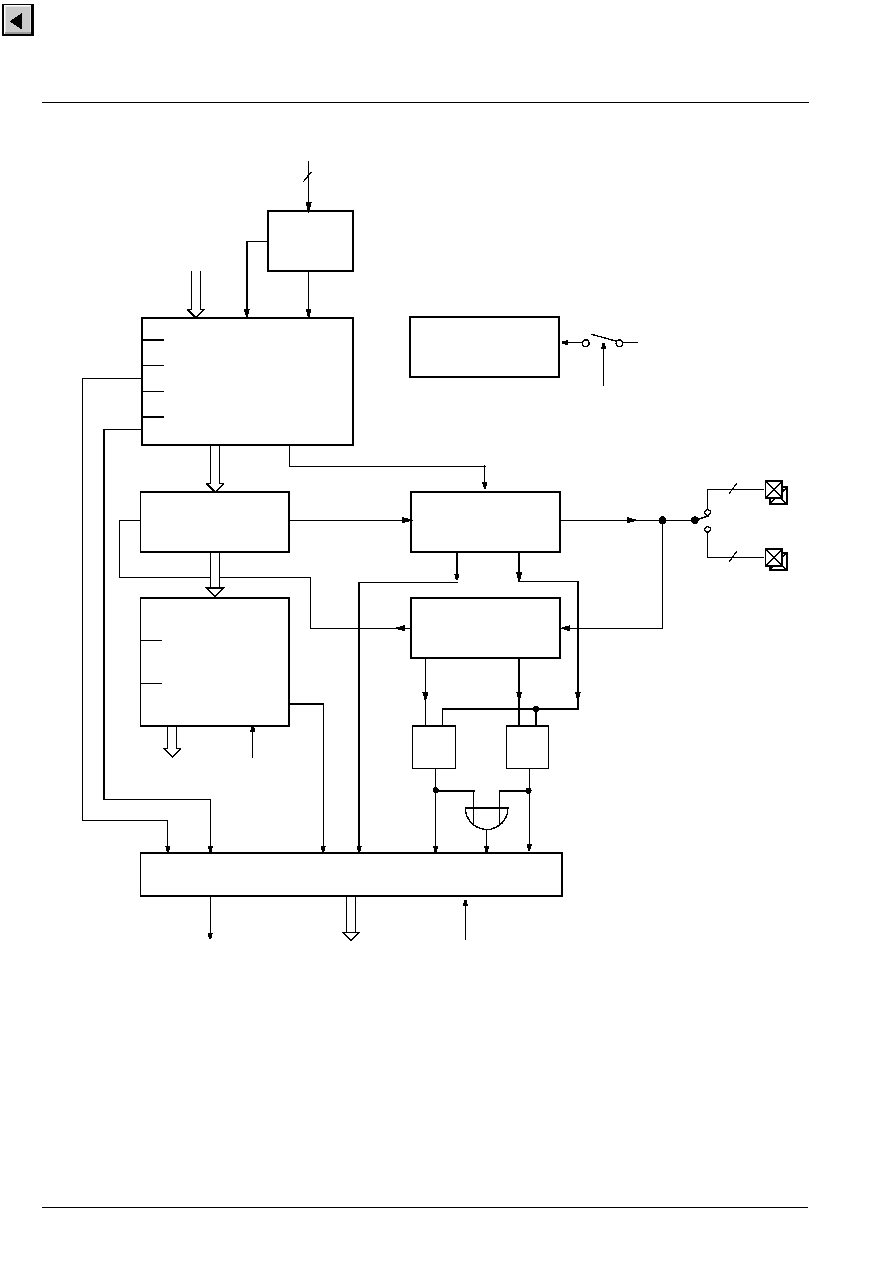
VCT 38xxA
ADVANCE INFORMATION
110
Micronas
Fig. 5�18: Block diagram of I
2
C bus master interface
Address
Decoder
WR_Data (subaddress
=
control info)
SR
in
out
Write
FIFO
5 x 11
WR
D
0
to D
7
control
Read
FIFO
3 x 8
D
0
to D
7
Read Logic
half full
S R
Q
S R
Q
busy
Write Logic
empty
Start Condition
resets ACK flags
2
2
Terminal 1
SDA/SCL
Terminal 2
P22/P23
P36/P37
D
0
to D
7
RD_Status
DA
T_
A
C
K
A
DR_
A
C
K
I2C
Interrupt
Source
RD_Data
empty
Status Register
clk = f
OSC
Clock Prescaler
SR2.I2C
0
1

ADVANCE INFORMATION
VCT 38xxA
Micronas
111
Fig. 5�19: Start condition I
2
C bus
Fig. 5�20: Single bit on I
2
C bus
Fig. 5�21: Stop condition I
2
C bus
5.12.1.I
2
C Bus Master Interface Registers
Writing this register moves I2C start condition, I2C
Address and ACK=1 into the Write FIFO.
Writing this register moves I2C start condition, I2C
Address and ACK=0 into the Write FIFO.
Writing this register moves I2C Data and ACK=1 into
the Write FIFO.
Writing this register moves I2C Data and ACK=0 into
the Write FIFO.
Writing this register moves I2C Data, ACK=1 and I2C
stop condition into the Write FIFO.
Writing this register moves I2C Data, ACK=0 and I2C
stop condition into the Write FIFO.
1T
1T
1/2T
SDA
SCL
1/4T
repeated
8 times
SDA
SCL
1/2T
1/4T
1/4T
1T
SDA
SCL
3/4T
1/4T
178:
1FD0
179:
I2CWS0
180:
I2C Write Start Register 0
bit
7
6
5
4
3
2
1
0
w
I2C Address
reset
0
0
0
0
0
0
0
0
181:
1FD1
182:
I2CWS1
183:
I2C Write Start Register 1
bit
7
6
5
4
3
2
1
0
w
I2C Address
reset
0
0
0
0
0
0
0
0
184:
1FD2
185:
I2CWD0
186:
I2C Write Data Register 0
bit
7
6
5
4
3
2
1
0
w
I2C Data
reset
0
0
0
0
0
0
0
0
187:
1FD3
188:
I2CWD1
189:
I2C Write Data Register 1
bit
7
6
5
4
3
2
1
0
w
I2C Data
reset
0
0
0
0
0
0
0
0
190:
1FD4
191:
I2CWP0
192:
I2C Write Stop Register 0
bit
7
6
5
4
3
2
1
0
w
I2C Data
reset
0
0
0
0
0
0
0
0
193:
1FD5
194:
I2CWP1
195:
I2C Write Stop Register 1
bit
7
6
5
4
3
2
1
0
w
I2C Data
reset
0
0
0
0
0
0
0
0

VCT 38xxA
ADVANCE INFORMATION
112
Micronas
Reading this register returns the content of the Read
FIFO.
OACK
"OR"ed Acknowledge
r:
AACK || DACK
AACK
Address Acknowledge
r:
Acknowledge state of address field
DACK
Data Acknowledge
r:
Acknowledge state of data field
BUSY
Busy
r1:
I
2
C Master Interface is busy
r0:
I
2
C Master Interface is not busy
WFH
Write-FIFO Half Full
r1:
Write-FIFO is filled with 3 Bytes
r0:
Write-FIFO is not half full
RFE
Read-FIFO Empty
r1:
Read-FIFO is empty
r0:
Read-FIFO is not empty
TERM
Terminal Select
w1:
Terminal 1
w0:
Terminal 2
SPEED
Speed Select
w:
I
2
C Bit Rate = f
OSC
/ (4 * SPEED)
SIPS
Special Input Port Select
w1:
use port pair P36, P37 for terminal 2
w0:
use port pair P22, P23 for terminal 2
196:
1FD6
197:
I2CRD
198:
I2C Read Data Register
bit
7
6
5
4
3
2
1
0
r
I2C Data
reset
0
0
0
0
0
0
0
0
199:
1FD7
200:
I2CRS
201:
I2C Read Status Register
bit
7
6
5
4
3
2
1
0
r
x
OACK
AACK
DACK
BUSY
WFH
RFE
x
reset
0
0
0
0
0
0
0
0
202:
1FDB
203:
I2CM
204:
I2C Mode Register
bit
7
6
5
4
3
2
1
0
w
TERM
SPEED
reset
1
0
0
0
0
0
1
0
205:
1E73
206:
I2CPS
207:
I2C Port Select Register
bit
7
6
5
4
3
2
1
0
w
SIPS
reset
0
0
0
0
0
0
0
0
Table 5�11: I
2
C Bit Rates
SPEED
Bit Rate
0
19.776 Kbit/s
1
2.531 Mbit/s
2
1.266 Mbit/s
3
844 Kbit/s
4
633 Kbit/s
...
...
127
19.931 Kbit/s

ADVANCE INFORMATION
VCT 38xxA
Micronas
113
5.13.Timer T0 and T1
Timer T0 and T1 are 16-bit auto reload down counters.
They serve to deliver a timing reference signal, to out-
put a frequency signal or to produce time stamps.
5.13.1.Features
� 16-bit auto reload counter
� Time value readable
� Interrupt source output
� Frequency output
Fig. 5�22: Block diagram of timer T0 and T1
5.13.2.Operation
The timer's 16-bit down-counter is clocked by the input
clock and counts down to zero. Reaching zero, it gen-
erates an output pulse, reloads with the content of the
TIMx reload register and restarts its travel.
T0 and T1 are not affected by CPU Slow mode.
The clock input frequency can be selected from three
possible values by programming the timer mode regis-
ter TIMxM.CSF. After reset, both timers are in standby
mode (inactive).
Prior to entering active mode, proper SW initialization
of the Ports assigned to function as Tx-OUT outputs
has to be made. The ports have to be configured Spe-
cial Out (see Section 5.18. on page 126).
To initialize a timer, Reload register TIMx has to set to
the desired time value, still in standby mode. For enter-
ing active mode, set the corresponding enable bit in
the Standby register. The timer will immediately start
counting down from the time value present in register
TIMx.
During active mode, a new time value is loaded by writ-
ing to the 16-bit register TIMx, High byte first. Upon
writing the Low byte, the reload register is set to the
new 16-bit value, the counter is reset, and immediately
starts down-counting with the new value.
On reaching zero, the counter generates a reload sig-
nal, which can be used to trigger an interrupt. The
same signal is connected to a divide by two scaler to
generate the output signal Tx-OUT with a pulse duty
factor of 50 %.
The interrupt source output of this module is routed to
the Interrupt Controller logic (see Section 5.10. on
page 99).
The state of the down-counter is readable by reading
the 16-bit register TIMx, Low byte first. Upon reading
the Low byte, the High byte is saved to a temporary
latch, which is then accessed during the subsequent
High byte read.
Thus, for time stamp applications, read consistency
between Low and High byte is guaranteed.
Returning a timer to standby mode by resetting the
corresponding Enable bit will halt its counter and will
set its output to Low. The register TIMx remains
unchanged.
1/2
16
zero
16 bit Auto-reload
Down counter
Reload-reg.
TIM x
w
r
TIM x
Tx
Interrupt
Source
clk
Tx-OUT
3:1
MUX
f
OSC
/2
1
f
OSC
/2
9
f
OSC
/2
17
2
TIMxM.CSF
SR1.TIMx
0
1
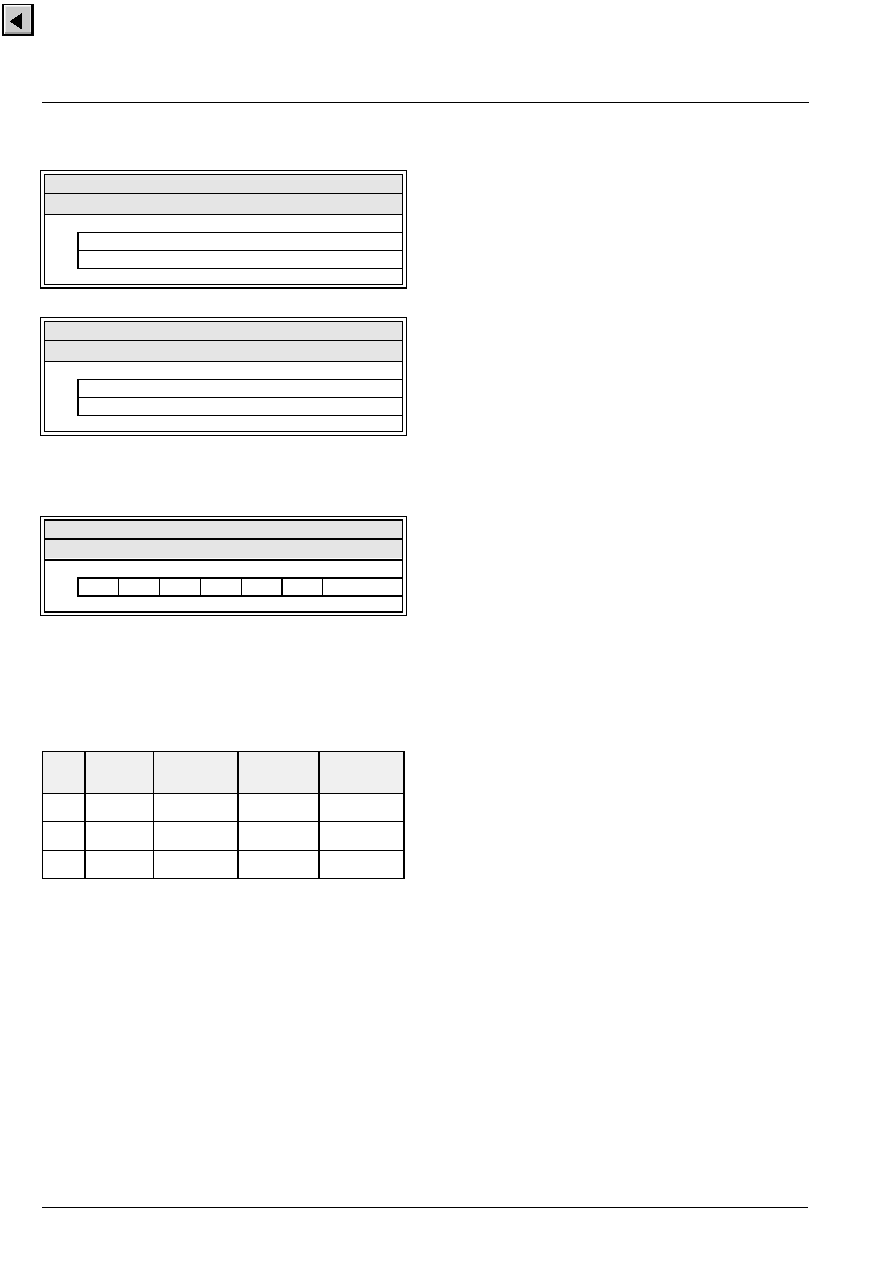
VCT 38xxA
ADVANCE INFORMATION
114
Micronas
5.13.3.Timer Registers
TIMx have to be read Low byte first and written High
byte first.
CSF
Clock Selection Field
r/w:
Source of timer clock (see Table 5�12)
208:
1F4E
209:
TIM0L
210:
Timer 0 Low Byte
211:
1F4C
212:
TIM1L
213:
Timer 1 Low Byte
bit
7
6
5
4
3
2
1
0
r
Read Low Byte of down-counter and latch High Byte.
w
Write Low Byte of reload value and reload down-counter.
reset
1
1
1
1
1
1
1
1
214:
1F4F
215:
TIM0H
216:
Timer 0 High Byte
217:
1F4D
218:
TIM1H
219:
Timer 1 High Byte
bit
7
6
5
4
3
2
1
0
r
Read latched High Byte of down-counter.
w
Write High Byte of reload value.
reset
1
1
1
1
1
1
1
1
220:
1F11
221:
TIM0M
222:
Timer 0 Mode
223:
1F13
224:
TIM1M
225:
Timer 1 Mode
bit
7
6
5
4
3
2
1
0
r/w
CSF
reset
0
0
0
0
0
0
0
0
Table 5�12: CSF usage
CSF
Clock
Divider
Timer
Clock
Timer
Increment
Timer
Period
00
f
OSC
/2
1
5.0625 MHz
197.53 ns
12.945 ms
01
f
OSC
/2
9
19.775 KHz
50.568
�
s
3.3140 s
1x
f
OSC
/2
17
77.248 Hz
12.945 ms
848.39 s
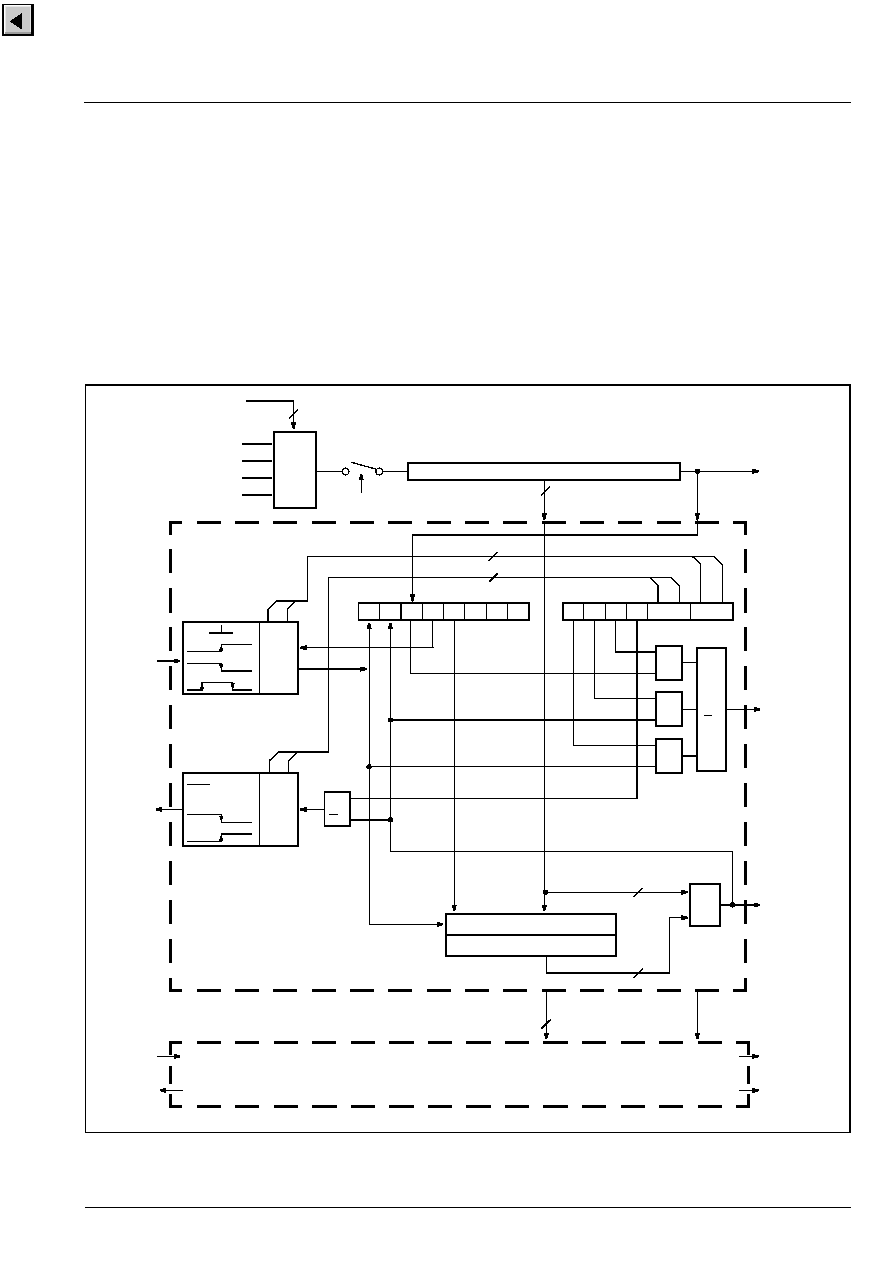
ADVANCE INFORMATION
VCT 38xxA
Micronas
115
5.14.Capture Compare Module (CAPCOM)
The Capture Compare Module (CAPCOM) is a com-
plex relative timer. It comprises a free running 16-bit
Capture Compare Counter (CCC) and 2 Capture Com-
pare Subunits (SU). The CCC provides an interrupt on
overflow and the timervalue can be read by software.
A SU is able to capture the relative time of an external
event input and to generate an output signal when the
CCC passes a predefined timer value. Three types of
interrupts enable interaction with SW. Special function-
ality provides an interface to the asynchronous exter-
nal world.
5.14.1.Features
� 16-bit free running counter with read out.
� 16-bit capture register.
� 16-bit compare register.
� Input trigger on rising, falling or both edges.
� Output action: toggle, Low or High level.
� Three different interrupt sources: overflow, input,
compare
� Designed for interfacing to asynchronous external
events
Fig. 5�23: Block diagram of CAPCOM module
A
B
=
&
>1
0
0
1
1
0
1
0
1
0
0
1
1
0
1
0
1
TOGGLE
Low
7
6
5
4
3
2
1
0
7
6
5
4
3
2
1
0
2
MSK MSK MSK FOL
CAP CMP OFL LAC RCR
X
X
X
16-Bit Compare-Register
16-Bit Capture-Register
r
w
16
16
3
2
0
1
2
ofl
CC0M
CC0I
CC0
>1
load
CC0COMP
CC0OR
IAM
OAM
&
&
reset
Output Action Logic
Input Action Logic
Interrupt
Source
Interrupt
Source
16
Subunit 0
CCC
clk
CC0-IN
CC0-OUT
16
Timer Value
Subunit 1
CC1-IN
CC1-OUT
SR0.CCC
ofl
Timer Value
CCCOFL
Interrupt
Source
CC1OR
Interrupt
Source
CC1COMP
Interrupt
Source
2
CCCS.CSF
4:1
Mux
f
OSC
/2
0
f
OSC
/2
4
f
OSC
/2
8
f
OSC
/2
12
0
1

VCT 38xxA
ADVANCE INFORMATION
116
Micronas
5.14.2.Initialization
After system reset the CCC and all SUs are in standby
mode (inactive).
In standby mode, the CCC is reset to value 0000h.
Capture and compare registers CCx are reset. No
information processing will take place, e.g. update of
interrupt flags. However, the values of registers CCxI
and CCxM are only reset by system reset, not by
standby mode. Thus, it is possible to program all mode
bits in standby mode and a predetermined start-up out
of standby mode is guaranteed.
Prior to entering active mode, proper SW configuration
of the Ports assigned to function as Input Capture
inputs and Output Action outputs has to be made. The
Output Action ports have to be configured as Special
Out and the Input Capture ports as special in (see
Section 5.18. on page 126).
Please note, that the compare register CCx is reset in
standby mode. It can only be programmed in active
mode.
5.14.3.Operation of CCC
For entering active mode of the entire CAPCOM mod-
ule set, the enable bit in the standby register.
The CCC will immediately start up-counting with the
selected clock frequency and will deliver this 16-bit
value to the SUs.
The state of the counter is readable by reading the 16-
bit register CCC, Low byte first. Upon reading the Low
byte, the High byte is saved to a temporary latch,
which is then accessed during the subsequent High
byte read. Thus, for time stamp applications, read con-
sistency between Low and High byte is guaranteed.
The CCC is free running and will overflow from time to
time. This will cause generation of an overflow inter-
rupt event. The interrupt (CCCOFL) is directly fed to
the Interrupt Controller and also to all SUs where fur-
ther processing takes place.
5.14.3.1. Operation of Subunit
F
or a proper setup the SW has to program the follow-
ing SU control bits in registers CCxI and CCxM: Inter-
rupt Mask (MSK), Force Output Logic (FOL, 0 recom-
mended), Output Action mode (OAM), Input Action
mode (IAM), Reset Capture register (RCR, 0 recom-
mended), and Lock After Capture (LAC). Refer to sec-
tion 5.14.5. for details.
Each SU is able to capture the CCC value at a point of
time given by an external input event processed by an
Input Action Logic.
A SU can also change an output line level via an Out-
put Action Logic at a point of time given by the CCC
value.
Thus, a SU contains a 16-bit capture register CCx to
store the input event CCC value, a 16-bit compare reg-
ister CCx to program the Output Action CCC value, an
8-bit interrupt register CCxI and an 8-bit mode register
CCxM. Two types of interrupts per SU enable interac-
tion with SW.
For limitations on operating the CAPCOM module in
CPU Slow mode, see section 5.14.3.1.15. on
page 117.
5.14.3.1.13. Compare and Output Action
To activate a SUs compare logic the respective 16-bit
compare register CCx has to be programmed, Low
byte first. The compare action will be locked until the
High byte write is completed. As soon as CCx setting
and CCC value match, the following actions are trig-
gered:
� The flag CMP in the CCxI register is set.
� The CCxCOMP interrupt source is triggered.
� The CCxOR interrupt source is triggered when acti-
vated.
� The Output Action logic is triggered.
Four different reactions are selectable for the Output
Action signal: according to field CCxM.OAM (Table
5�17) the equal state will lead to a High or Low
level, or toggling or inactivity on this output.
Another means to control the Output Action is bit
CCxM.FOL. E.g. rise-mode and force will set the
output pin to High level, fall-mode and force to Low
level. This forcing is static, i.e. it will be permanently
active and may override compare events. Thus, it is
recommended to set and reset shortly after that, i.e.
to pulse the bit with SW. Toggle mode of the Output
Action logic and forcing leads to a burst with clock-
frequency and is not recommended.

ADVANCE INFORMATION
VCT 38xxA
Micronas
117
5.14.3.1.14. Capture and Input Action
The Input Action logic operates independently of the
Output Action logic and is triggered by an external
input in a way defined by field CCxM.IAM. Following
Table 5�18 it can completely ignore events, trigger on
rising or falling edge or on both edges. When trig-
gered, the following actions take place:
� Flag CCxI.CAP is set.
� The CCxOR interrupt source is triggered when acti-
vated.
� The 16-bit capture register CCx stores the current
CCC value, i.e. the "time" of the external event.
Read CCx Low byte first. Further compare action
will be locked until the subsequent High byte read is
completed. Thus a coherent result is ensured, no
matter how much time has elapsed between the two
reads.
Some applications suffer from fast input bursts and a
lot of capture events and interrupts in consequence. If
the SW cannot handle such a rate of interrupts, this
could evoke stack overflow and system crash. To pre-
vent such fatal situations the Lock After Capture (LAC)
mode is implemented. If bit CCxI.LAC is set, only one
capture event will pass. After this event has triggered a
capture, the Input Action logic will lock until it is
unlocked again by writing an arbitrary value to register
CCxM. Make sure that this write only restores the
desired setting of this register.
Programming the Input Action logic while an input tran-
sition occurs may result in an unexpected triggering.
This may overwrite the capture register, lock the Input
Action logic if in LAC mode and generate an interrupt.
Make sure that SW is prepared to handle such a situa-
tion.
For testing purposes, a permanent reset (FFFFh) may
be forced on capture register CCx by setting bit
CCxI.RCR. Make sure that the reset is only temporary.
5.14.3.1.15. Interrupts
Each SU supplies two internal interrupt events:
1. Input Capture event and
2. Comparator equal state.
As previously explained, interrupt events will set the
corresponding flags in register CCxI. In addition to the
above mentioned two, the CCC Overflow interrupt
event sets flag CCxI.OFL in each SU. Thus, three
interrupt events are available in each SU. The corre-
sponding flags are masked with their mask bits in reg-
ister CCxM and passed to a logical or. The result
(CCxOR) is fed to the Interrupt Controller as a first
interrupt source. In addition, the Comparator equal
(CCxCOMP) interrupt is directly passed to the Inter-
rupt Controller as second interrupt source. Thus a SU
offers four types of interrupts: CCC overflow (maskable
ored), input capture event (maskable ored) and com-
parator equal state (maskable ored and non-maskable
direct).
All interrupt sources act independently, parallel inter-
rupts are possible. The interrupt flags enable SW to
determine the interrupt source and to take the appro-
priate action. Before returning from the interrupt rou-
tine the corresponding interrupt flag should thus be
cleared by writing a 1 to the corresponding bit location
in register CCxI.
The interrupts generated by internal logic (CCC Over-
flow and Comparator equal) will trigger in a predeter-
mined and known way. But as explained in 5.14.3.1.14.
erroneous input signals may cause some difficulties
concerning the Input Capture input, as well, as inter-
rupt handling. To overcome possible problems the
Input Capture Interrupt flag CCxI.CAP is double buff-
ered. If a second or even more input capture interrupt
events occur before the interrupt flag is cleared (i.e.
SW was not able to keep track), the flag goes to a third
state. Two consecutive writes to this bit in register CCxI
are then necessary to clear the flag. This enables SW
to detect such a multiple interrupt situation and eventu-
ally to discard the capture register value which always
relates to the latest input capture event and interrupt.
The internal CAPCOM module control logic always
runs on the oscillator frequency, regardless of CPU
Slow mode. Avoid write accesses to the CCxI register
in CPU Slow mode, since the logic would interpret one
CPU access as many consecutive accesses. This may
yield unexpected results concerning the functionality of
the interrupt flags. The following procedure should be
followed to handle the capture interrupt flag CAP:
1. SW responds to a CAPCOM interrupt, switching to
CPU Fast mode if necessary and determining that
the source is a capture interrupt (CAP flag =1).
2. The interrupt service routine is processed.
3. Just before returning to main program, the service
routine acknowledges the interrupt by writing a 1 to
flag CAP.
4. The service routine reads CAP again. If it is reset,
the routine can return to main program as usual. If it
is still set an external capture event overrun has
happened. Appropriate actions may be taken (i.e.
discarding the capture register value etc.).
5. go to 3.
5.14.4.Inactivation
The CAPCOM module is inactivated and returned to
standby mode (power down mode) by setting the
Enable bit to 0. Section 5.14.2. applies. CCxI and
CCxM are only reset by system reset, not by standby
mode.

VCT 38xxA
ADVANCE INFORMATION
118
Micronas
5.14.5.CAPCOM Registers
The CAPCOM module counter has to be read Low
byte first to avoid inconsistencies.
CSF
Clock Selection Field
w:
Source of CCC clock (see Table 5�16)
Table 5�16: CSF usage
MSK Mask
Flag
w1:
Enable.
w0:
Disable.
These mask flags refer to the corresponding event
flags in CAPCOM interrupt register.
FOL
Force Output Action Logic
r/w1:
Force Output Action logic.
r/w0:
Release Output Action logic.
This flag is static. As long as FOL is true neither com-
parator can trigger nor SW can force, by writing
another "one", the Output Action logic. After forcing it is
recommended to clear FOL unless Output Action logic
should not be locked.
OAM
Output Action Mode
r/w:
Defines behavior of Output Action logic.
IAM Input
Action
Mode
r/w:
Defines behavior of Input Action logic.
Table 5�17:
OAM usage
Table 5�18:
IAM usag
e
226:
1F7C
227:
CCCL
228:
CAPCOM Counter Low Byte
bit
7
6
5
4
3
2
1
0
r
Read Low Byte and lock CCC.
reset
0
0
0
0
0
0
0
0
229:
1F7D
230:
CCCH
231:
CAPCOM Counter High Byte
bit
7
6
5
4
3
2
1
0
r
Read High Byte and unlock CCC.
reset
0
0
0
0
0
0
0
0
232:
1F14
233:
CCCS
234:
CAPCOM Clock Select
bit
7
6
5
4
3
2
1
0
w
CSF
reset
0
0
0
0
0
0
0
0
CSF
Clock
Divider
Timer
Clock
Timer
Increment
Timer
Period
00
f
OSC
/2
0
10.125 MHz
98.765 ns
6.4727 ms
01
f
OSC
/2
4
632.81 KHz
1.5802
�
s
103.56 ms
10
f
OSC
/2
8
39.551 KHz
25.284
�
s
1.6570 s
11
f
OSC
/2
12
2.4719 KHz
404.54
�
s
26.512 s
235:
1F6C
236:
CC0M
237:
CAPCOM 0 Mode Register
238:
1F70
239:
CC1M
240:
CAPCOM 1 Mode Register
bit
7
6
5
4
3
2
1
0
r
MSK
MSK
MSK
FOL
OAM
IAM
reset
0
0
0
0
0
0
0
0
OAM
Output Action Logic Modes
0 0
Disabled, ignore trigger, output Low level.
0 1
Toggle output.
1 0
Output Low level.
1 1
Output High level.
IAM
Input Action Logic Modes
0 0
Disabled, don't trigger.
0 1
Trigger on rising edge.
1 0
Trigger on falling edge.
1 1
Trigger on rising and falling edge.

ADVANCE INFORMATION
VCT 38xxA
Micronas
119
CAP Capture
Event
r1:
Event.
r0:
No Event.
w1:
Clear flag.
CMP Compare
Event
r1:
Event.
r0:
No Event.
w1:
Clear flag.
OVL Overflow
Event
r1:
Event.
r0:
No Event.
w1:
Clear flag.
LAC Lock
After
Capture
r/w1:
Enable.
r/w0:
Disable.
RCR Reset
Capture
Register
r/w1:
Reset capture register to FFFFh.
r/w0:
Release capture register.
CCSIPn
CAPCOM Special Input Port n
This field defines the special input port connected to
the associated SU (see Table on page 126).
241:
1F6D
242:
CC0I
243:
CAPCOM 0 Interrupt Register
244:
1F71
245:
CC1I
246:
CAPCOM 1 Interrupt Register
bit
7
6
5
4
3
2
1
0
r/w
CAP
CMP
OFL
LAC
RCR
x
x
x
reset
0
0
0
0
0
0
0
0
247:
1F6E
248:
CC0L
249:
CAPCOM 0 Capture/Compare Low
Byte
250:
1F72
251:
CC1L
252:
CAPCOM 1 Capture/Compare Low
Byte
bit
7
6
5
4
3
2
1
0
r
Read Low Byte of capture register and lock it.
w
Write Low Byte of compare register and lock it.
reset
1
1
1
1
1
1
1
1
253:
1F6F
254:
CC0H
255:
CAPCOM 0 Capture/Compare High
Byte
256:
1F73
257:
CC1H
258:
CAPCOM 1 Capture/Compare High
Byte
bit
7
6
5
4
3
2
1
0
r
Read High Byte of capture register and unlock it.
w
Write High Byte of compare register and unlock it.
reset
1
1
1
1
1
1
1
1
259:
1E70
260:
CCIMUX
261:
CAPCOM Input Multiplex Register
bit
7
6
5
4
3
2
1
0
w
CCSIP1
CCSIP0
reset
0
0
0
0
0
0
0
0

VCT 38xxA
ADVANCE INFORMATION
120
Micronas
5.15.Pulse Width Modulator
Each of the 4 available PWMs is an 8-bit reload down-
counter with fixed reload interval. It serves to generate
a frequency signal with variable pulse width or, with an
external low-pass filter, as a digital to analog converter.
5.15.1.Features
� 8-bit resolution
� standby mode
Fig. 5�1: Block diagram of 8-bit PWM
5.15.2.General
A PWM's 8-bit down-counter is clocked by its input
clock and counts down to zero. Reaching zero, it stops
and sets the output to Low. A load pulse reloads the
counter with the content of the PWM register, restarts
it and sets the output to High. The repetition rate is
19.775 KHz, the reload period is 50.57
�
s.
The PWMs are not affected by CPU Slow mode. It is
recommended that the CPU should not write the PWM
registers during Slow mode.
5.15.3.Initialization
Prior to entering active mode, proper SW initialization
of the Ports assigned to function as PWMx outputs has
to be made. The ports have to be configured Special
Out (see Section 5.18. on page 126).
5.15.4.Operation
After reset, all PWMs are in standby mode (inactive)
and the output signal PWMx is Low.
For entering active mode, the enable bit in the corre-
sponding standby register has to be set (see Section
5.5. on page 89). The desired pulse width value is then
written into register PWMx. Each PWM will start pro-
ducing its output signal immediately after the next sub-
sequent load pulse.
During active mode, a new pulse width value is set by
simply writing to the register PWMx. Upon the next
subsequent load pulse the PWM will start producing
an output signal with the new pulse width value, start-
ing with a High level.
Returning a PWM to standby mode by resetting its
respective enable flag will immediately set its output
Low.
The state of the down-counters is not readable.
5.15.5.PWM Registers
x: PWM number 0 to 3
y: Standby Register 0 or 2
8
zero
Pulse Width Register
PWMx
w
clk
S
Q
R
1
0
load
8 bit down counter
1
0
SRy.PWMx
PWMx
1
0
f
OSC
/2
1
f
OSC
/2
9
262:
1F50
263:
PWM0
264:
PWM 0 Register
265:
1F51
266:
PWM1
267:
PWM 1 Register
268:
1F52
269:
PWM2
270:
PWM 2 Register
271:
1F53
272:
PWM3
273:
PWM 3 Register
bit
7
6
5
4
3
2
1
0
w
Pulse width value
reset
0
0
0
0
0
0
0
0
Table 5�19: Pulse Width Programming
Pulse width value
Pulse duty factor
00h
0% (Output is static Low)
01h
1/256
02h
2/256
:
:
FEh
254/256
FFh
100% (Output is static High)
1
)
1
) Pulse duty factor 255/256 is not selectable.

ADVANCE INFORMATION
VCT 38xxA
Micronas
121
5.16.Tuning Voltage Pulse Width Modulator
The Tuning Voltage Pulse Width Modulator (TVPWM),
in combination with an external low pass filter, serves
as a digital to analog converter to control voltage syn-
thesis tuning. It can also be operated as a normal 8-bit
PWM.
5.16.1.Features
� 14bit resolution
� standby mode
Fig. 5�2: Block Diagram of 14bit Tuning Voltage PWM
5.16.2.General
The TVPWM is based on an 8-bit PWM built by a
counter and a programmable comparator (see Fig. 5�
2). The overflow of the counter reloads the comparator
with the content of the TVPWMH register and sets the
TVPWM output to High. Matching the counter value,
the comparator sets the TVPWM output to Low. The
counter is continually running, producing PWM cycles
with a length of 256 T.
Depending on the content of the TVPWML register, the
6-bit pulse extension logic will add additional single
clock pulses distributed over a frame of 64 reload
cycles (see Fig. 5�3). This gives 14-bit resolution
when integrating over a complete frame. The frame
rate is 309 Hz, the frame period is 3.24 ms.
Fig. 5�3: TVPWM Timing
An interrupt is generated after completion of a frame of
64 reload cycles. The interrupt source output of this
module is routed to the Interrupt Controller logic (see
Section 5.10. on page 99).
The TVPWM is not affected by CPU Slow mode. It is
recommended that the CPU should not write the
TVPWM registers during Slow mode.
TVPWML Register
8
TVPWMH Register
w
clk
1
0
8 bit PWM Counter
SR0.TVPWM
TVPWM
f
OSC
/2
1
6
1
TVPWM
Interrupt
Source
6 bit Frame Counter
load
Comparator
Extension Logic
pwm
pulse
8
6
cycle n
cycle n+1
256 T
256 T
1 T
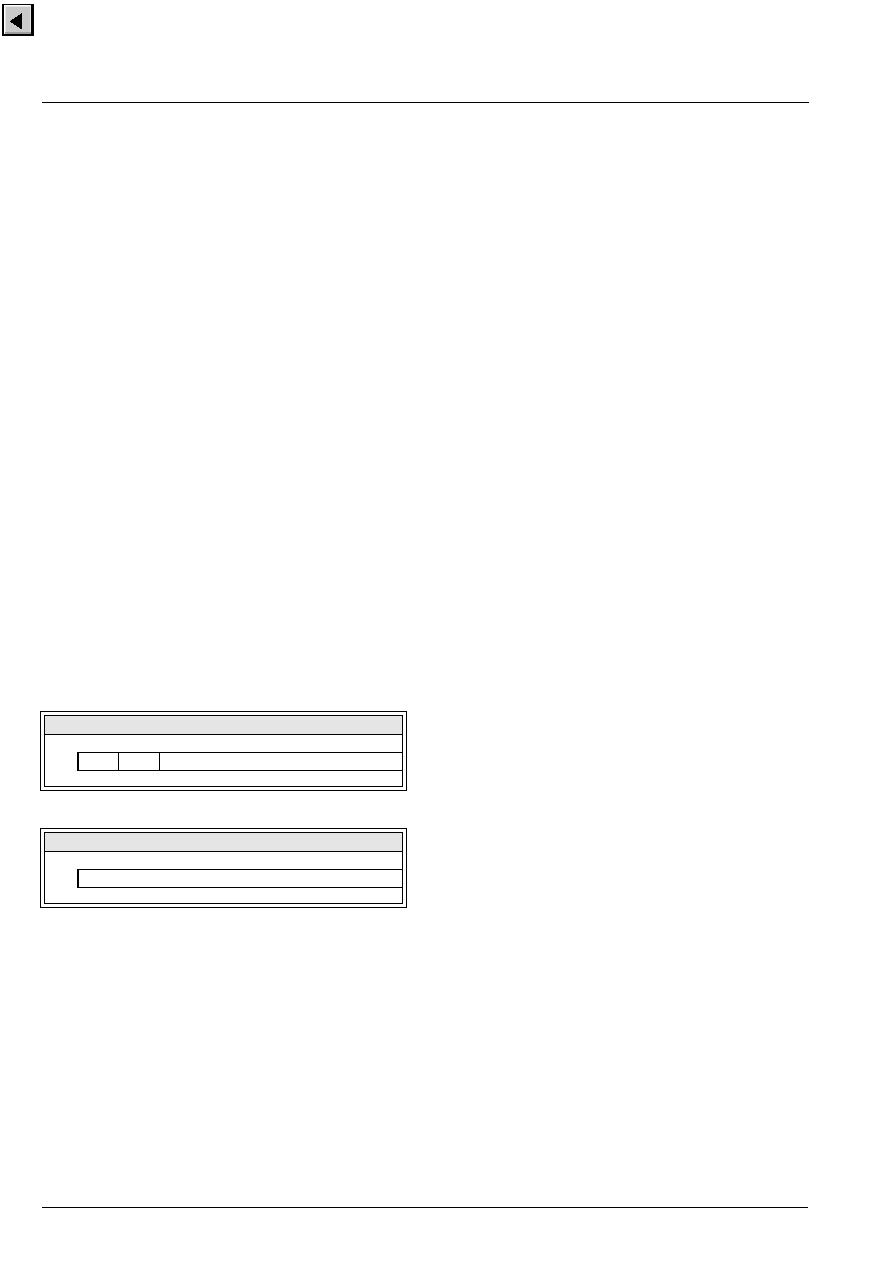
VCT 38xxA
ADVANCE INFORMATION
122
Micronas
5.16.3.Initialization
Prior to entering active mode, proper SW initialization
of the Ports assigned to function as TVPWM output
has to be made. The ports have to be configured Spe-
cial Out (see Section 5.18. on page 126).
5.16.4.Operation
After reset, the TVPWM is in standby mode (inactive)
and the output signal TVPWM is Low.
For entering active mode, the enable bit in the corre-
sponding standby register has to be set (see Section
5.5. on page 89). The desired pulse width value is then
written into the registers TVPWML and TVPWMH. The
TVPWM will start producing its output signal immedi-
ately after the next subsequent load pulse.
During active mode, a new pulse width value is set by
simply writing to the register TVPWML and TVPWMH.
Writing TVPWMH will update the comparator and the
extension logic with the new register values. Upon the
next subsequent load pulse the TVPWM will start pro-
ducing an output signal with the new pulse width value,
starting with a High level.
Returning the TVPWM to standby mode by resetting
its respective enable flag will not reset its output signal.
The state of the counters and the extension logic is not
readable.
5.16.5.TVPWM Registers
TVPWM has to be written Low byte first.
274:
1F4A
275:
TVPWML
276:
TV PWM Low Byte
bit
7
6
5
4
3
2
1
0
w
Pulse width value Low
reset
0
0
0
0
0
0
277:
1F4B
278:
TVPWMH
279:
TV PWM High Byte
bit
7
6
5
4
3
2
1
0
w
Pulse width value High
reset
0
0
0
0
0
0
0
0

ADVANCE INFORMATION
VCT 38xxA
Micronas
123
5.17.A/D Converter (ADC)
This 10-bit analog to digital converter allows the con-
version of an analog voltage in the range of 0 to U
Ref
into a digital value. A multiplexer connects the ADC to
one of 15 analog input ports. A sample-and-hold circuit
holds the analog voltage during conversion. The dura-
tion of the sampling time is programmable. The A/D
conversion is done by a charge balance A/D converter
using successive approximation.
5.17.1.Features
� A/D converter with 10-bit resolution.
� Successive approximation, charge balance type.
� Input multiplexer with 15 analog channels.
� Sample and hold circuit.
� 4/8/16/32
�
s conversion selectable for optimum
throughput/accuracy balance.
� Zero standby current, 300
�
A active current.
Fig. 5�4: Block Diagram of the ADC
5.17.2.Operation
After reset, the module is off (zero standby current).
The module is enabled by the flag SR1.ADC. The user
must ensure that the flag End of Conversion (EOC) in
register AD0 is true, before he starts to operate the
module.
A write access to register AD0 indicating sample time
and channel number starts the conversion. The flag
EOC signalizes the end of conversion. The 10-bit
result is stored in the registers AD1 (8 MSB) and AD0.
The conversion rate depends on the software, the
oscillator frequency and the programmed sample time.
The ADC module is not affected by CPU Slow mode.
P10-17
A
D
S&H
x
x
x
x
TSAMP
CHANNEL
AD0
AD1
0
1
2
3
4
5
6
7
0
1
2
3
4
5
6
7
9
8
7
4
3
2
1
0
VSUPS
0
1
GNDS
4
SR1.ADC
EOC
CMPO
CMPO
2
10
r
w
r
5
6
Interrupt
Source
MUX
15
P20-26

VCT 38xxA
ADVANCE INFORMATION
124
Micronas
5.17.3.Measurement Errors
The result of the conversion mirrors the voltage poten-
tial of the sampling capacitance (typically 15 pF) at the
end of the sampling time. This capacitance has to be
charged by the source through the source impedance
within the sampling time period. To avoid measure-
ment errors, system design has to make sure that at
the end of the sampling period, the potential error on
the sampling capacitance is less than
�
0.1 LSB.
Measurement errors may occur, when the voltage of
high-impedance sources has to be measured:
� To reduce these errors, the sampling time may be
increased by programming the field TSAMP in regis-
ter AD1.
� In cases where high-impedance sources are only
rarely sampled, a 100-nF capacitor from the input to
GNDS is a sufficient measure to ensure that the
potential on the sampling capacitance reaches the
full source potential, even with the shortest sampling
time.
� In some high-impedance applications a charge
pumping effect may influence the measurement
result when two sources are measured alternatingly.
5.17.4.Comparator
In addition to the A/D converter the module contains a
comparator. The level at the A/D converter input is
compared to VSUPS/2. The state of the comparator
output can be read at flag CMPO in register AD0.
The interrupt source output of this module is routed to
the Interrupt Controller logic. The CMPO interrupt
source is gated with an internal clock. This is the rea-
son why interrupts are generated as long as the level
at the comparator is lower than the internal reference.

ADVANCE INFORMATION
VCT 38xxA
Micronas
125
5.17.5.ADC Registers
A write access to register AD0 starts the A/D conver-
sion of the written channel number and sampling dura-
tion. The flag EOC signals the end of conversion. The
result is stored in register AD1 (bit 9 to 2) and in regis-
ter AD0 (bit 1 and 0).
EOC
End of Conversion
r1:
End of conversion
r0:
Busy
EOC is reset by a write access to the register AD0.
EOC must be true before starting the first conversion
after enabling the module by setting SR1.ADC.
CMPO Comparator
Output
r1:
Input is lower than reference voltage.
r0:
Input is higher than reference voltage.
TSAMP Sampling
Time
TSAMP adjusts the sample time and the conversion
time. The total conversion time is 20 clock cycles
longer than the sample time. Sampling starts one clock
cycle after completion of the write access to AD0.
CHANNEL Channel of Input Multiplexer
CHANNEL selects from which port pin the conversion
is done. The MSB of CHANNEL is bit 3. No port pin is
connected to the ADC if the channel 0 is selected. In
this case the input of the A/D converter is connected to
ground. After reset, CHANNEL is set to zero.
AN 9 to 0
Analog Value Bit 9 to 0
The 10 bit analog value is in the range of 0 to 1023.
The 8 MSB can be read from register AD1. The two
LSB can be read from register AD0. The result is avail-
able until a new conversion is started.
280:
1FA8
281:
AD0
282:
ADC Register 0
bit
7
6
5
4
3
2
1
0
r
EOC
CMPO
x
x
x
x
AN1
AN0
w
TSAMP
CHANNEL
reset
0
0
0
0
0
0
0
0
283:
1FA9
284:
AD1
285:
ADC Register 1
bit
7
6
5
4
3
2
1
0
r
AN9
AN8
AN7
AN6
AN5
AN4
AN3
AN2
reset
Table 5�20: Sampling time adjustment
TSAMP
t
Sample
t
Conversion
0H
20 T
OSC
40 T
OSC
1H
60 T
OSC
80 T
OSC
2H
140 T
OSC
160 T
OSC
3H
300 T
OSC
320 T
OSC
Table 5�21: ADC input multiplexer
CHANNEL
Port Pin
0
none
1
P10
2
P11
3
P12
4
P13
5
P14
6
P15
7
P16
8
P17
9
P20
10
P21
11
P22
12
P23
13
P24
14
P25
15
P26

VCT 38xxA
ADVANCE INFORMATION
126
Micronas
5.18.Ports
There exist different kinds of ports. The universal
ports, P1 to P3, serve as digital I/O and have addi-
tional special input and output functions. A subset of
the universal ports (P10-P17, P20-P26) serves as
input for the analog-to-digital converter. The I
2
C ports
SDA, SCL can alternatively be used as digital I/O
ports. The analog audio ports AIN1
-
3, AOUT1
-
2 can
alternatively be used as digital input ports. The
20.25 MHz system clock output CLK20 can alterna-
tively be used as digital output port.
5.18.1.Port Assignment
Table 5�23 shows the assignment of port pins to Spe-
cial Input and Output functions.
Every Special Output function is connected to 2 port
pins in parallel and can be activated via the MOD flag
in the corresponding port register.
The ADC input multiplexer can be connected to 1 of 15
port pins. The output driver of the selected port pin is
then forced to open-drain mode. Additionally it can be
disabled using the EN flag in the corresponding port
register.
Every special input function can be connected to 1 of
15 input ports (see Table 5�22). If port number 0 is
selected the special input function is connected to
ground. Changing the input port may produce tempo-
rary glitch signals. Therefore, the corresponding spe-
cial input function should be disabled before the input
port is changed.
Table 5�22: Special input configuration
Special
Input
Number
Special
Input
Function
Special
Input
Port
1
CC0
-
IN
0
-
15
2
CC1
-
IN
0
-
15
3
PINT0
0
-
15
4
PINT1
0
-
15
5
PINT2
0
-
15
6
PINT3
0
-
15
Table 5�23: Port pin configuration
Port
Name
ADC
Input
Special
Output
Special
Input Port
P10
1
Timer 0
1
P11
2
Timer 1
2
P12
3
CC0
-
OUT
3
P13
4
CC1
-
OUT
4
P14
5
TVPWM
5
P15
6
PWM 0
6
P16
7
PWM 1
7
P17
8
PWM 2
8
P20
9
PWM 3
9
P21
10
CLK20
10
P22
11
SDA 2
11
P23
12
SCL 2
12
P24
13
Timer 0
P25
14
Timer 1
P26
15
CC0
-
OUT
P27
CC1
-
OUT
P30
TVPWM
P31
PWM 0
P32
PWM 1
P33
PWM 2
P34
PWM 3
P35
CLK20
P36
SDA 2
P37
SCL 2
P40
SDA
P41
SCL
P42
AOUT1
P43
AOUT2
13
P44
AIN1
P45
AIN2
14
P46
AIN3
15
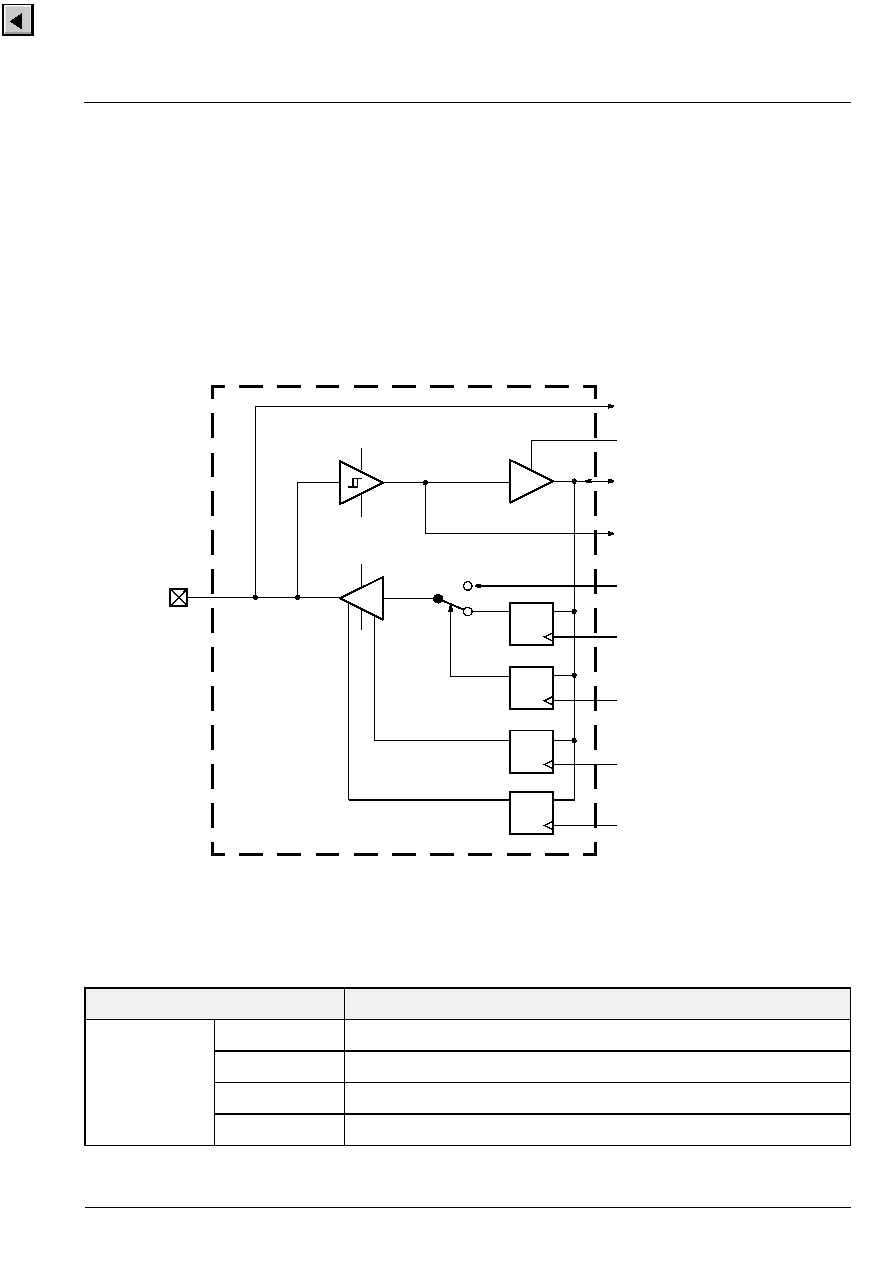
ADVANCE INFORMATION
VCT 38xxA
Micronas
127
5.18.2.Universal Ports P1 to P3
There are 24 universal port pins. The universal ports
P1 to P3 are each 8 bits wide. In the 64-pin PSDIP
package only 12 universal port pins are available
(P10
-
P17, P20
-
P23).
5.18.2.1. Features
� digital I/O port
� special input and output function
� analog input function
� Schmitt trigger input buffer
� tristate output
� push-pull or open-drain output
� 10-mA output current
� output supply either 3.3 V or 5.0 V
Fig. 5�5: Universal port circuit
Universal ports can be operated in different modes:
After reset, all Universal Ports are in normal mode, tristate condition.
D
Q
D
Q
D
Q
0
1
Px.y
DBy
Special In x.y
Special Out x.y
PxE
PxM
PxD write
PxD read
x: Port number 1 to 3
y: Port pin number 0 to 7
ADC In x.y
V
DD
V
SS
PxV
DD
PxV
SS
D
Q
PxO
Table 5�24: Universal ports operating modes
Modes
Function
Port Mode
Normal Input
The SW uses the ports as digital input.
Special Input
The port input is additionally connected to specific hardware modules.
Normal Output
The SW uses the ports as latched digital tristate output.
Special Output
The port output is directly driven by specific hardware modules.
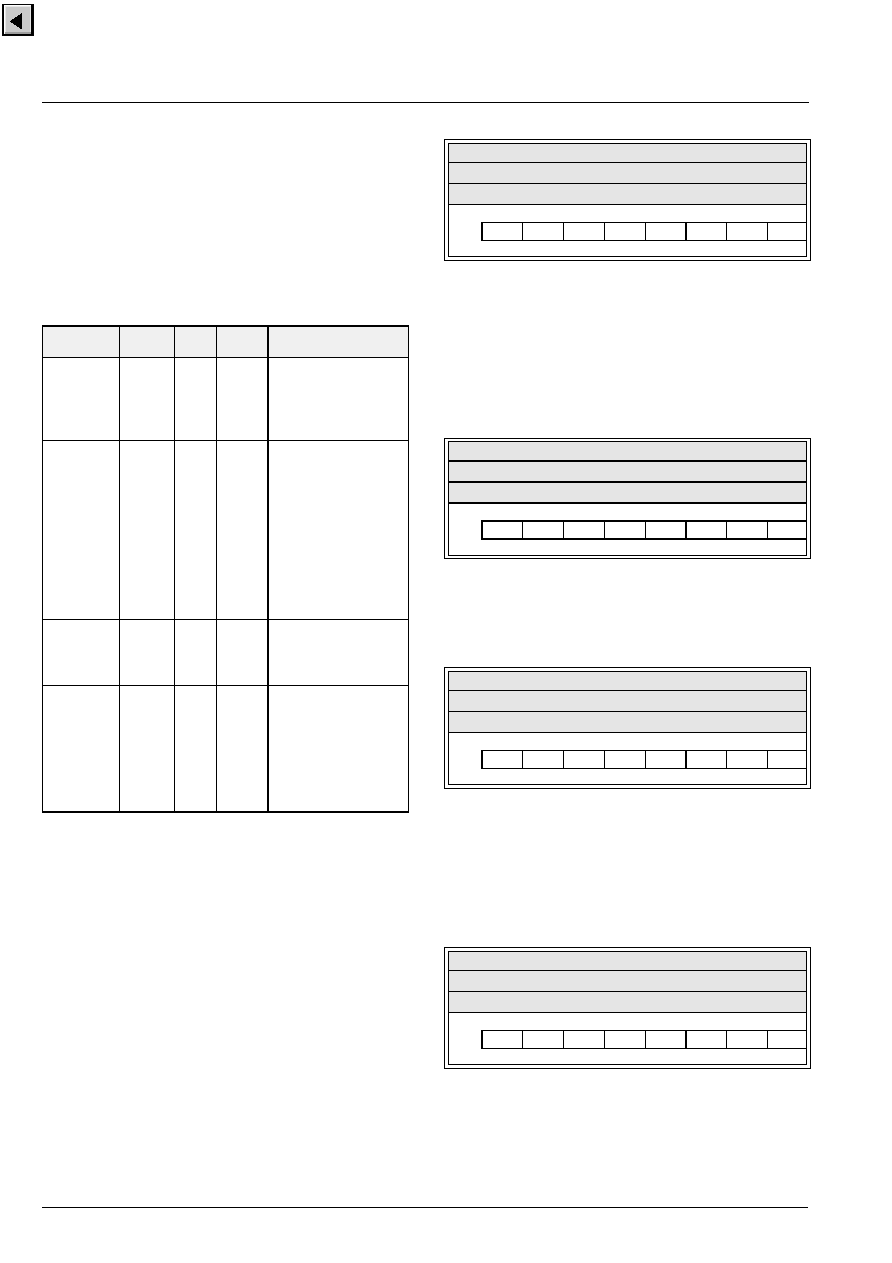
VCT 38xxA
ADVANCE INFORMATION
128
Micronas
5.18.2.2. Universal Port Mode
Each port bit can be individually configured to several
port modes. The output driver of each pin has to be
enabled by setting the EN flag. Using the OUT flag the
output stage can be configured to either open drain or
push pull output. The MOD flag selects the source of
the output value.
The Special Input mode is always active. This allows
manipulating the input signal to the special hardware
through Normal Output operations by software.
As the Special Output mode allows reading the pin lev-
els, the output state of the special hardware may be
read by the CPU.
5.18.3.Universal Port Registers
Universal Port Data registers PxD contain input/output
data of the corresponding port. The "x" in PxD means
the number of the port. Thus PxD stands for P1D to
P3D.
D0
-
7
Universal Port Data Input/Output
r:
Read pin level resp. data latch.
w:
Write data to data latch.
To use a port pin as software output, the appropriate
driver must be activated by setting the EN flag and the
MOD flag must be programmed to Normal mode.
OUT0
-
7
Output Flag
w1:
Output driver is open drain
w0:
Output driver is push pull
MOD0
-
7
Normal/Special Mode Flag
w1:
Special Output Mode
w0:
Normal Output Mode
The MOD flag defines from which source the pin is
driven if the EN flag is true.
EN0
-
7
Enable Flag
w1:
Output driver is enabled
w0:
Output driver is disabled
Table 5�25: Port mode register settings
Mode
MOD
EN
D
Function
Normal
Input
x
0
x
READ of register
PxD returns port
pin input levels to
data bus.
Normal
Output
0
1
Data
WRITE to register
PxD changes level
of port pin output
drivers.
READ of register
PxD returns the
PxD register set-
ting to the data
bus.
Special
Input
x
x
x
Port pin input level
is presented to
special hardware.
Special
Output
1
1
x
Special hardware
drives port pin.
READ of register
PxD returns port
pin input levels to
data bus.
286:
1F90
287:
P1D
288:
Port 1 Data Register
289:
1F94
290:
P2D
291:
Port 2 Data Register
292:
1F98
293:
P3D
294:
Port 3 Data Register
bit
7
6
5
4
3
2
1
0
r/w
D7
D6
D5
D4
D3
D2
D1
D0
reset
0
0
0
0
0
0
0
0
295:
1F91
296:
P1O
297:
Port 1 Output Register
298:
1F95
299:
P2O
300:
Port 2 Output Register
301:
1F99
302:
P3O
303:
Port 3 Output Register
bit
7
6
5
4
3
2
1
0
w
OUT7
OUT6
OUT5
OUT4
OUT3
OUT2
OUT1
OUT0
reset
0
0
0
0
0
0
0
0
304:
1F92
305:
P1M
306:
Port 1 Mode Register
307:
1F96
308:
P2M
309:
Port 2 Mode Register
310:
1F9A
311:
P3M
312:
Port 3 Mode Register
bit
7
6
5
4
3
2
1
0
w
MOD7
MOD6
MOD5
MOD4
MOD3
MOD2
MOD1
MOD0
reset
0
0
0
0
0
0
0
0
313:
1F93
314:
P1E
315:
Port 1 Enable Register
316:
1F97
317:
P2E
318:
Port 2 Enable Register
319:
1F9B
320:
P3E
321:
Port 3 Enable Register
bit
7
6
5
4
3
2
1
0
w
EN7
EN6
EN5
EN4
EN3
EN2
EN1
EN0
reset
0
0
0
0
0
0
0
0
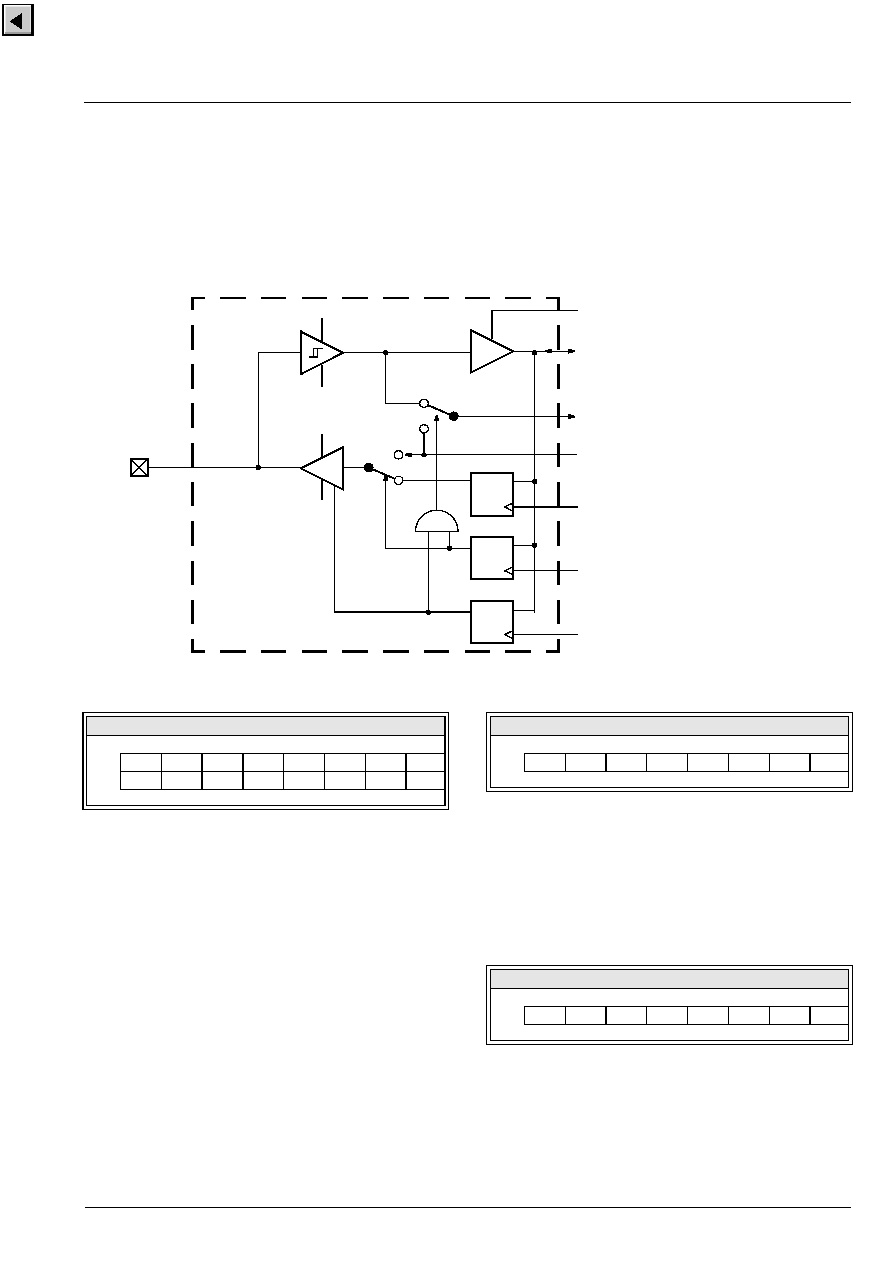
ADVANCE INFORMATION
VCT 38xxA
Micronas
129
5.18.4.I
2
C Ports P40 and P41
The I
2
C ports SDA and SCL can alternatively be used
as digital I/O ports. To activate the I
2
C function of the
port pin the corresponding MOD flag has to be set to
special mode. In normal mode the port pin serves as
digital I/O. The output stage is open-drain only. After
reset, the I
2
C ports are in special mode.
5.18.4.1. Features
� digital I/O port
� I
2
C input and output function
� Schmitt trigger input buffer
� open-drain output
� connected to standby supply
Fig. 5�6: I
2
C port circuit
SCLD
SCL Data Input/Output
r:
Read pin level resp. data latch.
w:
Write data to data latch.
SDAD
SDA Data Input/Output
r:
Read pin level resp. data latch.
w:
Write data to data latch.
To use the I
2
C ports as software output, the appropri-
ate drivers must be activated by setting the SCLEN
and SDAEN flag and resetting the SCLM and SDAM
flags.
.
SCLM
SCL Normal/Special Mode Flag
w1:
Special I2C Output Mode
w0:
Normal Output Mode
SDAM
SDA Normal/Special Mode Flag
w1:
Special I2C Output Mode
w0:
Normal Output Mode
SCLEN
SCL Enable Flag
w1:
Output driver is enabled
w0:
Output driver is disabled
SDAEN
SDA Enable Flag
w1:
Output driver is enabled
w0:
Output driver is disabled
D
Q
D
Q
D
Q
0
1
P40
DB0/DB1
SDA/SCL In
SDA/SCL Out
P4E
P4M
P4D write
P4D read
V
DD
V
SS
V
DD
V
SS
P41
0
1
322:
1F9C
323:
P4D
324:
Port 4 Data Register
bit
7
6
5
4
3
2
1
0
r
AIN3D
AIN2D
AIN1D
AOUT2D AOUT1D
SCLD
SDAD
w
SCLD
SDAD
reset
0
0
0
0
0
0
0
325:
1F9E
326:
P4M
327:
Port 4 Mode Register
bit
7
6
5
4
3
2
1
0
w
AIN3M
AIN2M
AIN1M AOUT2M AOUT1M
SCLM
SDAM
reset
1
1
1
0
0
1
1
328:
1F9F
329:
P4E
330:
Port 4 Enable Register
bit
7
6
5
4
3
2
1
0
w
SCLEN
SDAEN
reset
1
1
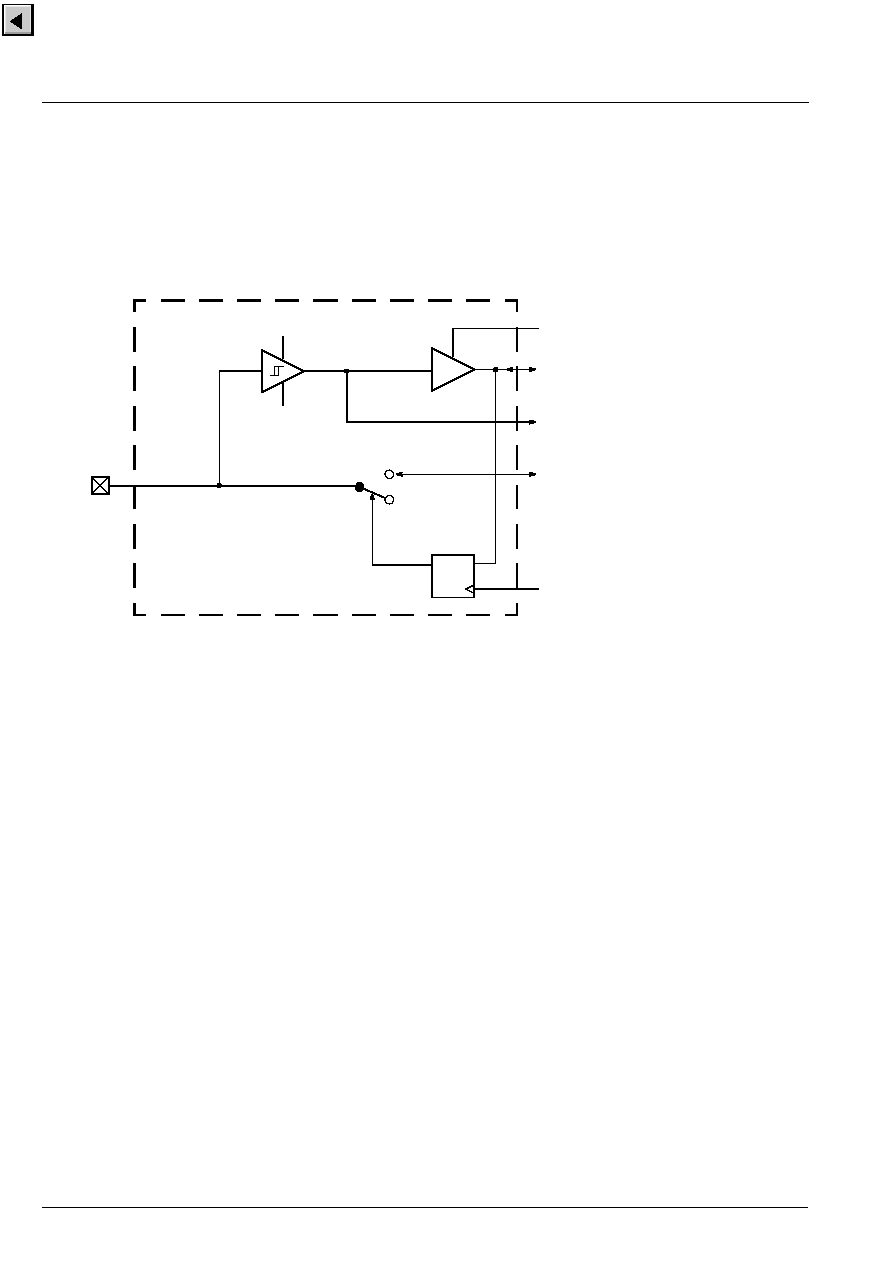
VCT 38xxA
ADVANCE INFORMATION
130
Micronas
5.18.5.Audio Ports P42 to P46
The analog audio ports AIN1
-
3, AOUT1
-
2 can alter-
natively be used as digital input ports. To activate the
audio function of the port pin, the corresponding MOD
flag has to be set to Special mode. In Normal mode the
port pin serves as digital input. After reset the audio
ports are in Normal mode.
5.18.5.1. Features
� analog audio input or output
� digital input port
� Schmitt trigger input buffer
� special input function
Fig. 5�7: Audio port circuit
AINxD
AINx Data Input
r:
Read pin level resp. data latch.
AOUTxD
AOUTx Data Input
r:
Read pin level resp. data latch.
To use the Audio ports as software input, the corre-
sponding flags must be programmed to Normal Input
mode.
AINxM
AINx Normal/Special Mode Flag
w1:
Special Audio Input Mode
w0:
Normal Input Mode
AOUTxM
AOUTx Normal/Special Mode Flag
w1:
Special Audio Output Mode
w0:
Normal Input Mode
D
Q
0
1
P4.y
DBy
Special In 4.y
P4M
P4D read
y: Port pin number 2 to 6
Audio
V
DD
V
SS

ADVANCE INFORMATION
VCT 38xxA
Micronas
131
5.18.6.CLK20 Output Port
The CLK20 pin delivers the internal 20.25-MHz clock.
The output stage is push-pull with programmable
driver strength (C20M.DSTR). The CLK20 pin can
alternatively be used as digital output port. It is possi-
ble to force the CLK20 output either to High or Low
(C20M.FSO) or to switch it into tristate mode
(C20M.DOD). After reset, the CLK20 port is enabled.
5.18.6.1. Features
� programmable driver strength
� tristate mode
� digital output port
Fig. 5�8: CLK20 Port Circuit
DSTR
Driver Strength
w000:
Output driver strong
w111:
Output driver weak
DOD
Disable Output Driver
w1:
Output driver is high-impedance
w0:
Output driver is enabled
FSO
Force Static Output
w10:
Output driver is forced to 1
w11:
Output driver is forced to 0
CLK20
C20M
V
DD
V
SS
CLK20
DB
6
331:
1F9D
332:
C20M
333:
CLK20 Mode Register
bit
7
6
5
4
3
2
1
0
w
FSO
DOD
DSTR
reset
0
0
0
0
0
0
0

VCT 38xxA
ADVANCE INFORMATION
132
Micronas
5.19.I/O Register Cross Reference
Table 5�26: I/O Register Map
Addr.
Mnemonic
Name
Mode
Reset
Section
1E00
MASK1L
Mask 1 Low Byte
w
FF
DMA Interface (chapter
5.9. on page 96)
1E01
MASK2L
Mask 2 Low Byte
w
FF
1E02
MASK3L
Mask 3 Low Byte
w
FF
1E03
MASK4L
Mask 4 Low Byte
w
FF
1E04
MASK1H
Mask 1 High Byte
w
FF
1E05
MASK2H
Mask 2 High Byte
w
FF
1E06
MASK3H
Mask 3 High Byte
w
FF
1E07
MASK4H
Mask 4 High Byte
w
FF
1E08
CMP1L
Compare 1 Low Byte
w
FF
1E09
CMP2L
Compare 2 Low Byte
w
FF
1E0A
CMP3L
Compare 3 Low Byte
w
FF
1E0B
CMP4L
Compare 4 Low Byte
w
FF
1E0C
CMP1H
Compare 1 High Byte
w
FF
1E0D
CMP2H
Compare 2 High Byte
w
FF
1E0E
CMP3H
Compare 3 High Byte
w
FF
1E0F
CMP4H
Compare 4 High Byte
w
FF
1E10
MAP1L
Map 1 Low Byte
w
FF
1E11
MAP2L
Map 2 Low Byte
w
FF
1E12
MAP3L
Map 3 Low Byte
w
FF
1E13
MAP4L
Map 4 Low Byte
w
FF
1E14
MAP1H
Map 1 High Byte
w
FF
1E15
MAP2H
Map 2 High Byte
w
FF
1E16
MAP3H
Map 3 High Byte
w
FF
1E17
MAP4H
Map 4 High Byte
w
FF
1E18
DMAIM
DMA Interface Mode
w
00
1E64
PAR0
Patch Address Register 0
w
FF
Memory Patch Module
(chapter 5.11. on
page 107)
1E65
PAR1
Patch Address Register 1
w
FF
1E66
PAR2
Patch Address Register 2
w
FF
1E67
PDR
Patch Data Register
w
00
1E68
PER0
Patch Enable Register 0
w
00
1E69
PER1
Patch Enable Register 1
w
00
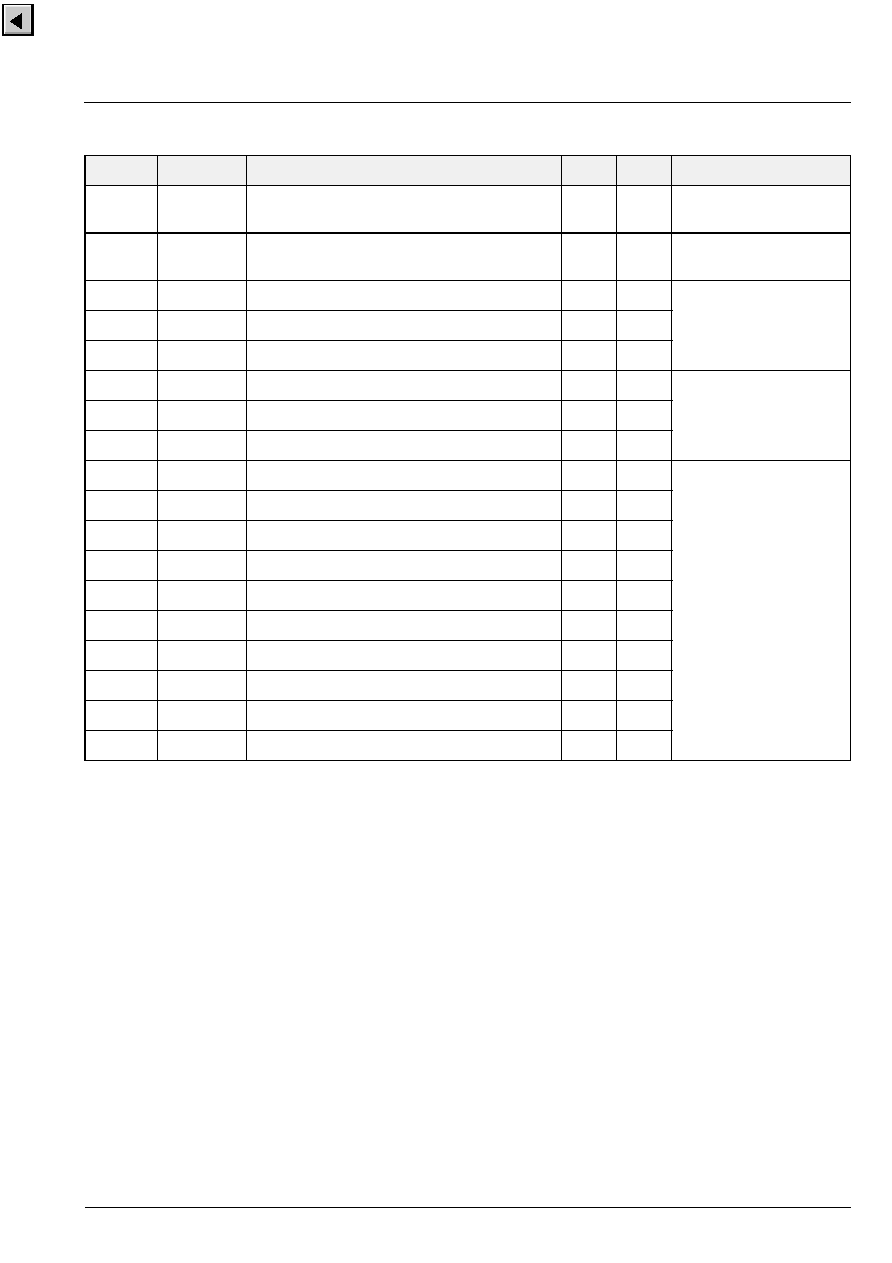
ADVANCE INFORMATION
VCT 38xxA
Micronas
133
1F01
CR
Control Register
r/w
-
Control Register (chap-
ter 5.4. on page 87)
1F0F
BR
Banking Register
r/w
01
Memory Banking (chap-
ter 5.8. on page 95)
1F00
CSW0
Clock, Supply & Watchdog Register 0
w
01
Reset Logic (chapter
5.7. on page 90)
1F60
CSW1
Clock, Supply & Watchdog Register 1
r/w
FF
1F07
RC
Reset Control Register
r/w
00
1F08
SR0
Standby Register 0
r/w
00
Standby Registers
(chapter 5.5. on
page 89)
1F09
SR1
Standby Register 1
r/w
40
1F0A
SR2
Standby Register 2
r/w
00
1FD0
I2CWS0
I2C Write Start Register 0
w
00
I2C-Bus Master Inter-
face (chapter 5.12. on
page 109)
1FD1
I2CWS1
I2C Write Start Register 1
w
00
1FD2
I2CWD0
I2C Write Data Register 0
w
00
1FD3
I2CWD1
I2C Write Data Register 1
w
00
1FD4
I2CWP0
I2C Write Stop Register 0
w
00
1FD5
I2CWP1
I2C Write Stop Register 1
w
00
1FD6
I2CRD
I2C Read Data Register
r
00
1FD7
I2CRS
I2C Read Status Register
r
00
1FDB
I2CM
I2C Mode Register
w
02
1E73
I2CPS
I2C Port Select Register
w
00
Table 5�26: I/O Register Map
Addr.
Mnemonic
Name
Mode
Reset
Section

VCT 38xxA
ADVANCE INFORMATION
134
Micronas
1F20
IRC
Interrupt Control Register
r/w
0C
Interrupt Controller
(chapter 5.10. on
page 99)
1F21
IRRET
Interrupt Return Register
r/w
00
1F22
IRPRI10
Interrupt Priority Register, Input 0 and 1
r/w
00
1F23
IRPRI32
Interrupt Priority Register, Input 2 and 3
r/w
00
1F24
IRPRI54
Interrupt Priority Register, Input 4 and 5
r/w
00
1F25
IRPRI76
Interrupt Priority Register, Input 6 and 7
r/w
00
1F26
IRPRI98
Interrupt Priority Register, Input 8 and 9
r/w
00
1F27
IRPRIBA
Interrupt Priority Register, Input 10 and 11
r/w
00
1F28
IRPRIDC
Interrupt Priority Register, Input 12 and 13
r/w
00
1F29
IRPRIFE
Interrupt Priority Register, Input 14 and 15
r/w
00
1F2A
IRP
Interrupt Pending Register
r
00
1F2B
IRPM0
Interrupt Port Mode
w
00
1F2C
IRPP
Interrupt Port Prescaler
w
00
1E71
IRPMUX0
Interrupt Port Multiplex 0
w
00
1E72
IRPMUX1
Interrupt Port Multiplex 1
w
00
1FA8
AD0
ADC Register 0
r/w
00
A/D Converter (ADC)
(chapter 5.17. on
page 123)
1FA9
AD1
ADC Register 1
r
00
1F4E
TIM0L
Timer 0 Low Byte
r/w
FF
Timer T0 and T1 (chap-
ter 5.13. on page 113)
1F4F
TIM0H
Timer 0 High Byte
r/w
FF
1F11
TIM0M
Timer 0 Mode
w
00
1F4C
TIM1L
Timer 1 Low Byte
r/w
FF
1F4D
TIM1H
Timer 1 High Byte
r/w
FF
1F13
TIM1M
Timer 1 Mode
w
00
1F4A
TVPWML
TV PWM Low Byte
w
00
Pulse Width Modulator
(chapter 5.15. on
page 120)
1F4B
TVPWMH
TV PWM High Byte
w
00
1F50
PWM0
PWM 0 Register
w
00
1F51
PWM1
PWM 1 Register
w
00
1F52
PWM2
PWM 2 Register
w
00
1F53
PWM3
PWM 3 Register
w
00
Table 5�26: I/O Register Map
Addr.
Mnemonic
Name
Mode
Reset
Section
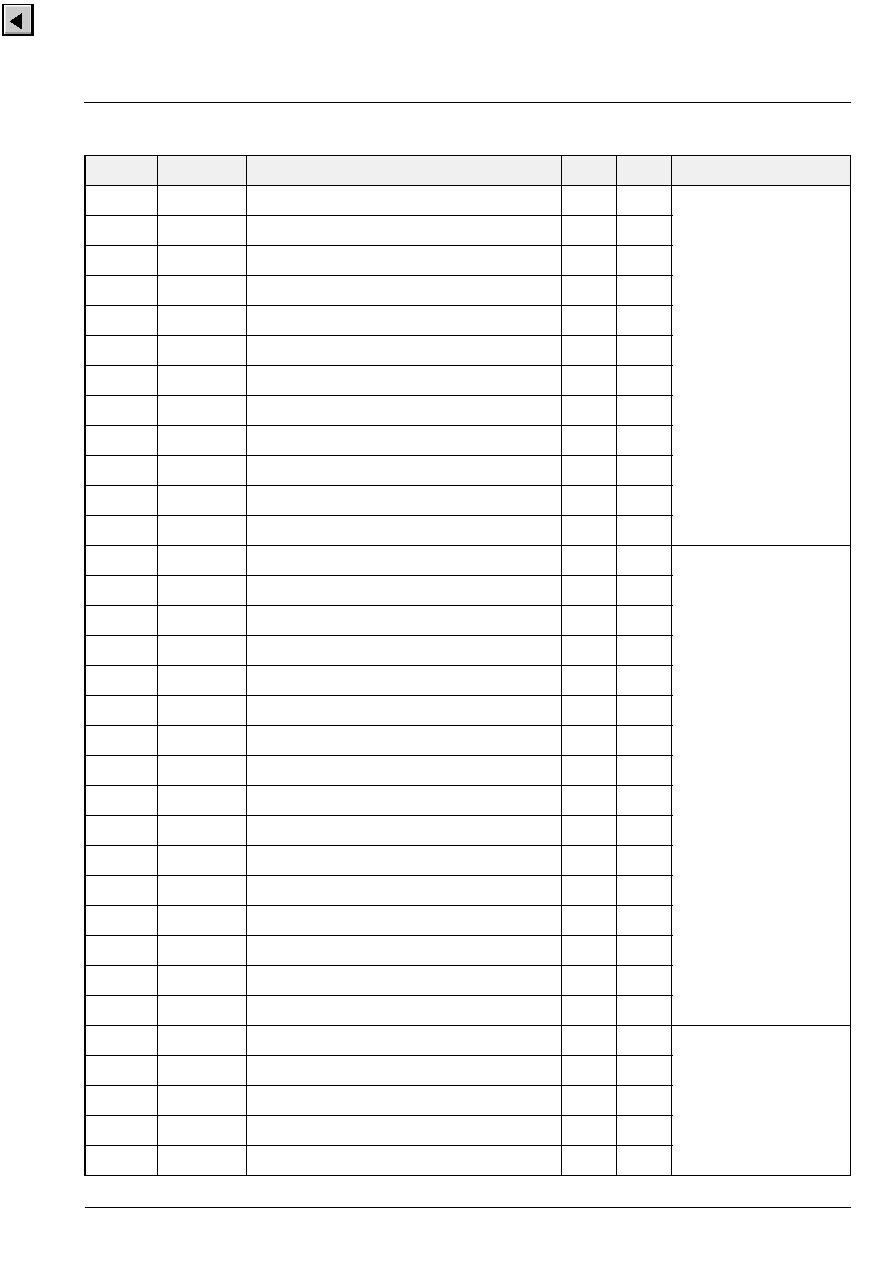
ADVANCE INFORMATION
VCT 38xxA
Micronas
135
1F6C
CC0M
CAPCOM 0 Mode Register
r/w
00
Capture Compare Mod-
ule (CAPCOM) (chapter
5.14. on page 115)
1F6D
CC0I
CAPCOM 0 Interrupt Register
r/w
00
1F6E
CC0L
CAPCOM 0 Capture/Compare Low Byte
r/w
FF
1F6F
CC0H
CAPCOM 0 Capture/Compare High Byte
r/w
FF
1F70
CC1M
CAPCOM 1 Mode Register
r/w
00
1F71
CC1I
CAPCOM 1 Interrupt Register
r/w
00
1F72
CC1L
CAPCOM 1 Capture/Compare Low Byte
r/w
FF
1F73
CC1H
CAPCOM 1 Capture/Compare High Byte
r/w
FF
1F7C
CCCL
CAPCOM Counter Low Byte
r
00
1F7D
CCCH
CAPCOM Counter High Byte
r
00
1F14
CCCS
CAPCOM Clock Select
w
00
1E70
CCIMUX
CAPCOM Input Multiplex Register
w
00
1F90
P1D
Port 1 Data Register
r/w
00
Ports (chapter 5.18. on
page 126)
1F91
P1O
Port 1 Output Register
w
00
1F92
P1M
Port 1 Mode Register
w
00
1F93
P1E
Port 1 Enable Register
w
00
1F94
P2D
Port 2 Data Register
r/w
00
1F95
P2O
Port 2 Output Register
w
00
1F96
P2M
Port 2 Mode Register
w
00
1F97
P2E
Port 2 Enable Register
w
00
1F98
P3D
Port 3 Data Register
r/w
00
1F99
P3O
Port 3 Output Register
w
00
1F9A
P3M
Port 3 Mode Register
w
00
1F9B
P3E
Port 3 Enable Register
w
00
1F9C
P4D
Port 4 Data Register
r/w
00
1F9E
P4M
Port 4 Mode Register
w
73
1F9F
P4E
Port 4 Enable Register
w
03
1F9D
C20M
CLK20 Mode Register
w
00
1FFB
TST5
Test Register 5
r
00
Test Registers (chapter
5.6. on page 90)
1FFC
TST4
Test Register 4
w
00
1FFD
TST3
Test Register 3
w
00
1FFE
TST1
Test Register 1
w
00
1FFF
TST2
Test Register 2
w
00
Table 5�26: I/O Register Map
Addr.
Mnemonic
Name
Mode
Reset
Section
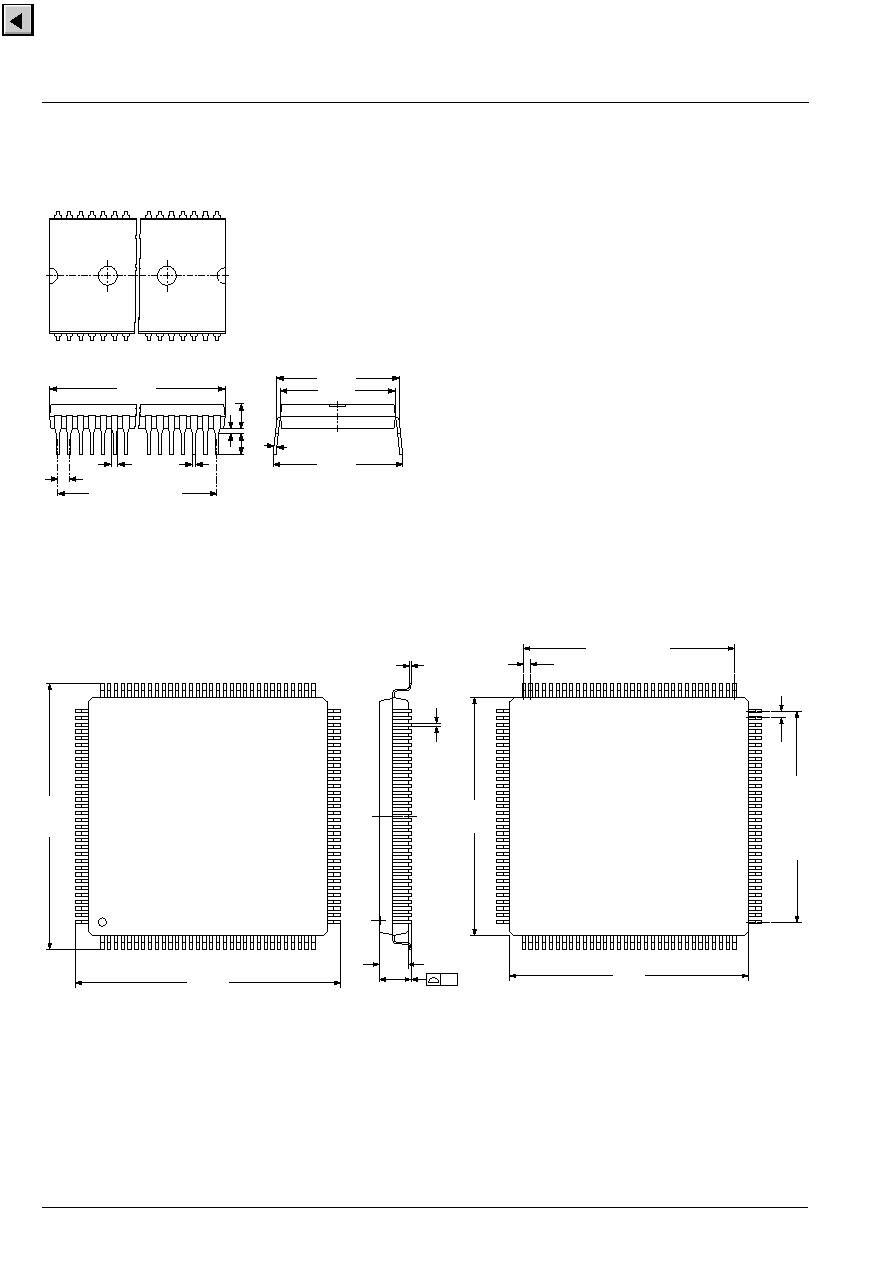
VCT 38xxA
ADVANCE INFORMATION
136
Micronas
6. Specifications
6.1. Outline Dimensions
Fig. 6�1: 64-Pin Plastic Shrink Dual-Inline Package
(PSDIP64)
Weight approximately 9.0 g
Dimensions in mm
Fig. 6�2: 128-Pin Plastic Metric Quad Flat Package
(PMQFP128)
Weight approximately 5.4 g
Dimensions in mm
1
32
33
64
57.7
�
0.1
0.8
�
0.2
3.8
�
0.1
3.2
�
0.2
1.778
1
�
0.05
31 x 1.778 = 55.1
�
0.1
0.48
�
0.06
20.3
�
0.5
0.28
�
0.06
18
�
0.05
19.3
�
0.1
SPGS703000-1(P64)/1E
0.8
97
128
32
33
96
1
64
65
0.8
0.1
SPGS706000-5(P128)/1E
31.2
0.1
�
31.2
0.1
�
0.17
0.06
�
3.775
0.325
�
0.34
0.05
�
3.4
0.2
�
28
0.1
�
28
0.1
�
31 x 0.8 = 24.8
0.1
�
31 x 0.8 = 24.8
0.1
�

ADVANCE INFORMATION
VCT 38xxA
Micronas
137
Fig. 6�3: 257-Pin Ceramic Pin Grid Array
(CPGA257)
Weight approximately 32 g
Dimensions in mm
2.540
0.15
�
1
2
3
4
5
6
7
9
10
1
1
12
13
14
15
R
P
N
M
L
K
J
G
F
E
D
C
B
A
2.540 x 19 = 48.26
0.2
�
2.540
0.15
�
2.540 x 19 = 48.26
0.2
�
0.4
0.1
�
2.1
0.20
�
0.8
1
0.1
�
0.46
0.05
�
0.2
0.2
4.80
0.20
�
1
0.1
�
EXTRA
PIN
8
H
T
U
V
W
Y
16
17
18
19
20
D0029/1E
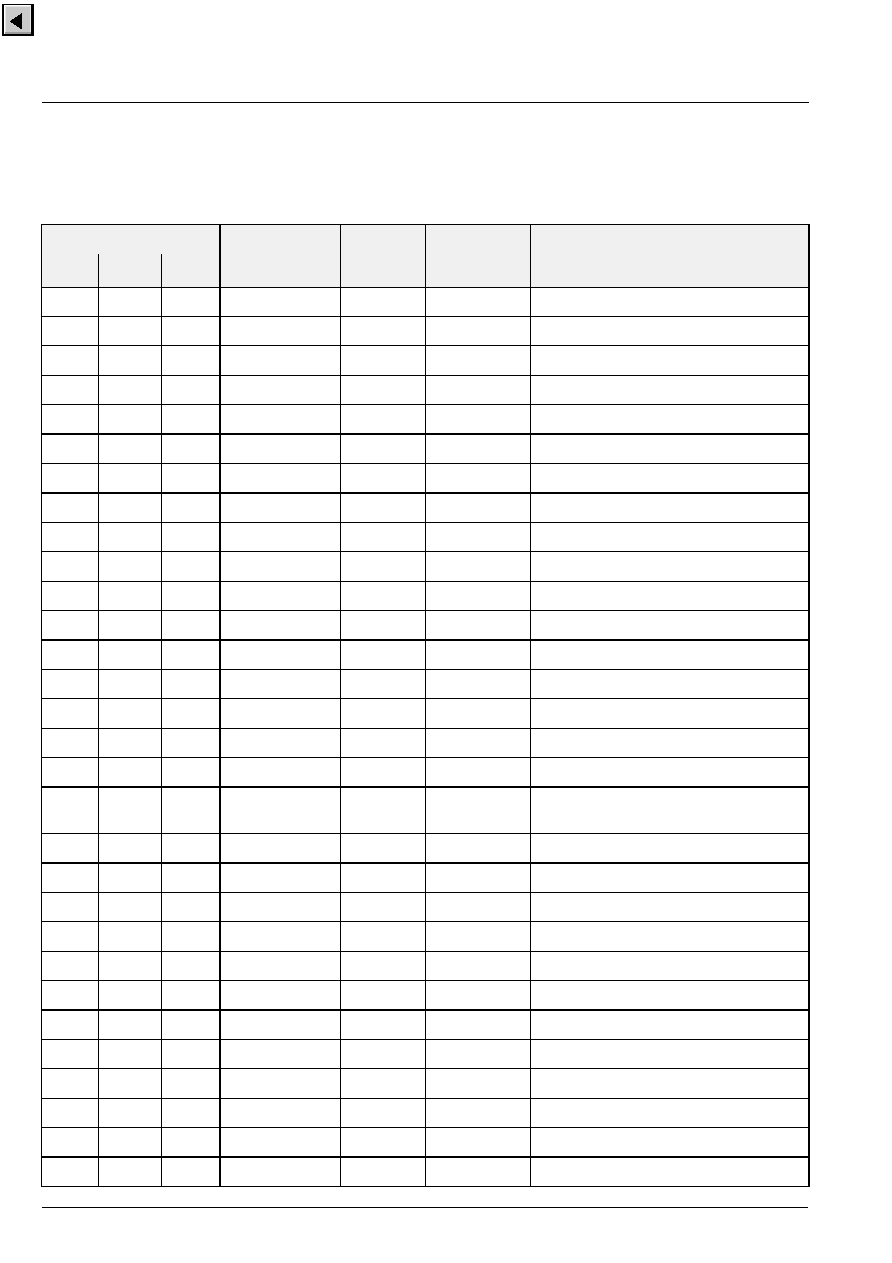
VCT 38xxA
ADVANCE INFORMATION
138
Micronas
6.2. Pin Connections and Short Descriptions
NC = not connected
LV = if not used, leave vacant
X = obligatory; connect as described in circuit diagram
IN = Input
OUT = Output
SUPPLY = Supply Pin
Pin No.
Pin Name
Type
Connection
Short Description
PSDIP
64-pin
PMQFP
128-pin
CPGA
257-pin
(If not used)
1
33
A-1
P17
IN/OUT
LV
Port 1, Bit 7
2
34
C-2
P16
IN/OUT
LV
Port 1, Bit 6
3
37
C-1
VSUP
P1
SUPPLY
X
Supply Voltage, Port 1
4
38
E-2
GND
P1
SUPPLY
X
Ground, Port 1
5
35
B-1
P15
IN/OUT
LV
Port 1, Bit 5
6
36
D-2
P14
IN/OUT
LV
Port 1, Bit 4
7
39
D-1
P13
IN/OUT
LV
Port 1, Bit 3
8
40
F-2
P12
IN/OUT
LV
Port 1, Bit 2
9
41
E-1
P11
IN/OUT
LV
Port 1, Bit 1
10
42
G-2
P10
IN/OUT
LV
Port 1, Bit 0
11
43
F-1
VOUT
OUT
LV
Analog Video Output
12
44
H-2
VRT
IN
X
Reference Voltage Top, Video ADC
13
45
G-1
SGND
IN
GND
AF
Signal Ground for Analog Input
14
46
H-1
GND
AF
SUPPLY
X
Ground, Analog Front-end
15
47
J-1
VSUP
AF
SUPPLY
X
Supply Voltage, Analog Front-end
16
48
K-1
CBIN
IN
VRT
Analog Component Cb Input
17
49
L-1
CIN1
IN
VRT
Analog Chroma 1 Input
18
50
M-1
CIN2/ CRIN
IN
VRT
Analog Chroma 2 Input /
Analog Component Cr Input
19
51
N-1
VIN1
IN
VRT
Analog Video 1 Input
20
52
N-2
VIN2
IN
VRT
Analog Video 2 Input
21
53
P-1
VIN3
IN
VRT
Analog Video 3 Input
22
54
P-2
VIN4
IN
VRT
Analog Video 4 Input
23
89
Y-16
TEST
IN
GND
S
Test Pin, reserved for Test
24
76
W-8
HOUT
OUT
X
Horizontal Drive Output
25
77
Y-7
VSUP
D
SUPPLY
X
Supply Voltage, Digital Circuitry
26
78
Y-8
GND
D
SUPPLY
X
Ground, Digital Circuitry
27
90
W-16
FBLIN
IN
GND
AB
Fast Blank Input
28
91
Y-17
RIN
IN
GND
AB
Analog Red Input
29
92
W-17
GIN
IN
GND
AB
Analog Green Input
30
93
Y-18
BIN
IN
GND
AB
Analog Blue Input

ADVANCE INFORMATION
VCT 38xxA
Micronas
139
31
94
W-18
VPROT
IN
GND
D
Vertical Protection Input
32
95
Y-19
SAFETY
IN
GND
D
Safety Input
33
96
W-19
HFLB
IN
HOUT
Horizontal Flyback Input
34
97
Y-20
VERTQ /
INTLC
OUT
LV
Differential Vertical Sawtooth Output
Interlace Control Output
35
98
V-19
VERT
OUT
LV
Differential Vertical Sawtooth Output
36
99
W-20
EW
OUT
LV
Vertical Parabola Output
37
100
U-19
SENSE
IN
GND
AB
Sense ADC Input
38
101
V-20
GNDM
SUPPLY
X
Ground, MADC Input
39
102
T-19
RSW1
OUT
LV
Range Switch1 for Measurement ADC
40
103
U-20
RSW2
OUT
LV
Range Switch2 for Measurement ADC
41
104
R-19
SVMOUT
OUT
VSUP
AB
Scan Velocity Modulation Output
42
105
T-20
ROUT
OUT
VSUP
AB
Analog Red Output
43
106
P-19
GOUT
OUT
VSUP
AB
Analog Green Output
44
107
R-20
BOUT
OUT
VSUP
AB
Analog Blue Output
45
108
N-19
VSUP
AB
SUPPLY
X
Supply Voltage, Analog Back-end
46
109
P-20
GND
AB
SUPPLY
X
Ground, Analog Back-end
47
110
N-20
VRD
IN
X
DAC Reference
48
111
M-20
XREF
IN
X
Reference Input for RGB DACs
49
112
L-20
AIN3
IN
GND
S
Analog Audio 3Input
50
113
K-20
AIN2
IN
GND
S
Analog Audio 2Input
51
114
J-20
AIN1
IN
GND
S
Analog Audio 1 Input
52
115
H-20
AOUT2
OUT
LV
Analog Audio 2 Output
53
116
H-19
AOUT1
OUT
LV
Analog Audio 1 Output
54
122
E-19
VSUP
S
SUPPLY
X
Supply Voltage, Standby
55
123
D-20
GND
S
SUPPLY
X
Ground, Standby
56
120
F-19
XTAL1
IN
X
Analog Crystal Input
57
121
E-20
XTAL2
OUT
X
Analog Crystal Output
58
117
G-20
RESQ
IN/OUT
X
Reset Input/Output, Active Low
59
118
G-19
SCL
IN/OUT
X
I
2
C Bus Clock
60
119
F-20
SDA
IN/OUT
X
I
2
C Bus Data
61
62
V-2
P23
IN/OUT
LV
Port 2, Bit 3
62
63
W-1
P22
IN/OUT
LV
Port 2, Bit 2
63
64
W-2
P21
IN/OUT
LV
Port 2, Bit 1
Pin No.
Pin Name
Type
Connection
Short Description
PSDIP
64-pin
PMQFP
128-pin
CPGA
257-pin
(If not used)
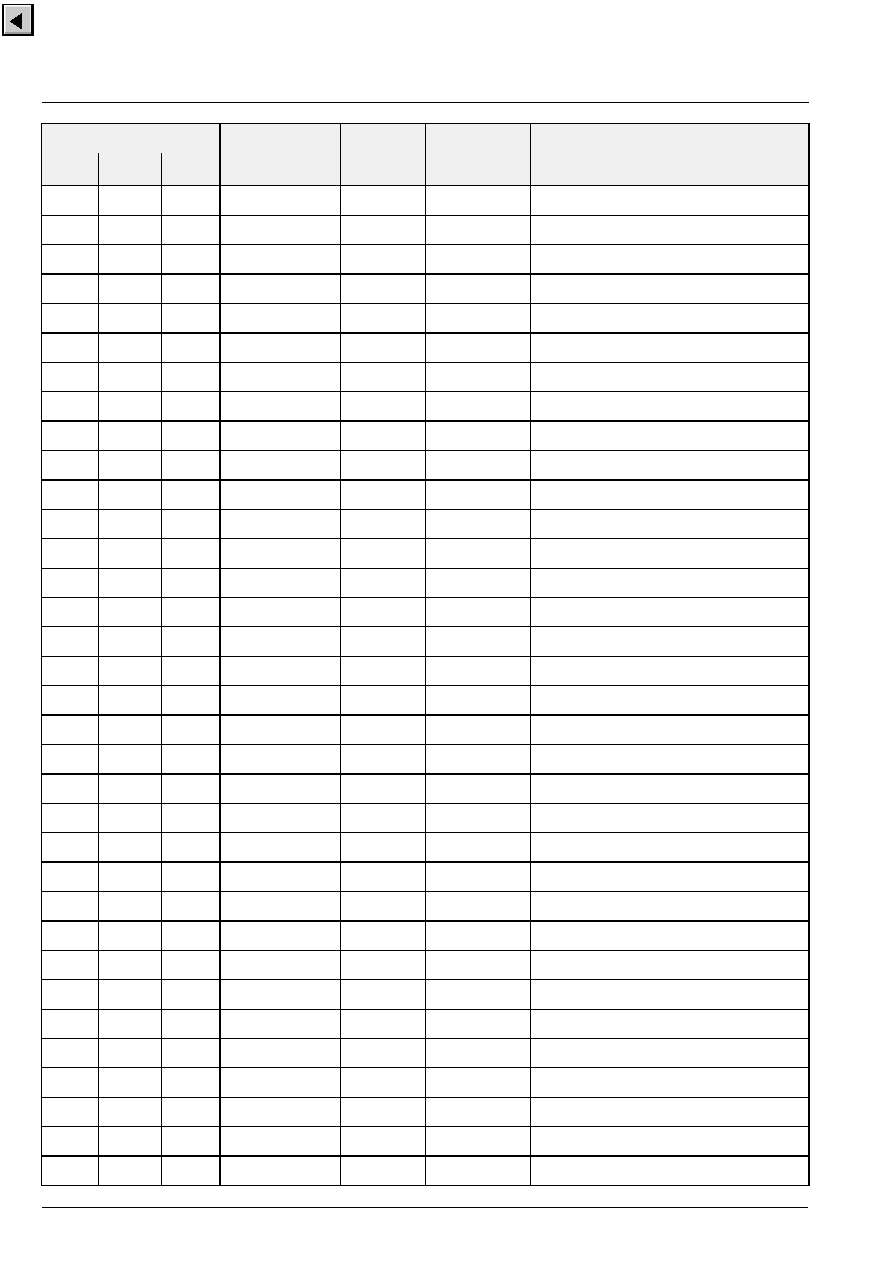
VCT 38xxA
ADVANCE INFORMATION
140
Micronas
64
65
Y-1
P20
IN/OUT
LV
Port 2, Bit 0
1
A-20
ADB17
OUT
LV
Address Bus 17
2
B-18
VSUP
ADB
SUPPLY
X
Supply Voltage, Address Bus
3
A-19
GND
ADB
SUPPLY
X
Ground, Address Bus
4
B-17
ADB16
OUT
LV
Address Bus 16
5
A-18
ADB15
OUT
LV
Address Bus 15
6
B-16
ADB14
OUT
LV
Address Bus 14
7
A-17
ADB13
OUT
LV
Address Bus 13
8
B-15
ADB12
OUT
LV
Address Bus 12
9
A-16
ADB11
OUT
LV
Address Bus 11
10
B-14
ADB10
OUT
LV
Address Bus 10
11
A-15
ADB9
OUT
LV
Address Bus 9
12
B-13
ADB8
OUT
LV
Address Bus 8
13
A-14
ADB7
OUT
LV
Address Bus 7
14
A-13
ADB6
OUT
LV
Address Bus 6
15
A-12
ADB5
OUT
LV
Address Bus 5
16
A-11
VSUP
ADB
SUPPLY
X
Supply Voltage, Address Bus
17
A-10
GND
ADB
SUPPLY
X
Ground, Address Bus
18
A-9
ADB4
OUT
LV
Address Bus 4
19
A-8
ADB3
OUT
LV
Address Bus 3
20
B-8
ADB2
OUT
LV
Address Bus 2
21
A-7
ADB1
OUT
LV
Address Bus 1
22
B-7
ADB0
OUT
LV
Address Bus 0
23
A-6
DB0
IN/OUT
LV
Data Bus 0
24
B-6
DB1
IN/OUT
LV
Data Bus 1
25
A-5
DB2
IN/OUT
LV
Data Bus 2
26
B-5
DB3
IN/OUT
LV
Data Bus 3
27
A-4
VSUP
DB
SUPPLY
X
Supply Voltage, Data Bus
28
B-4
GND
DB
SUPPLY
X
Ground, Data Bus
29
A-3
DB4
IN/OUT
LV
Data Bus 4
30
B-3
DB5
IN/OUT
LV
Data Bus 5
31
A-2
DB6
IN/OUT
LV
Data Bus 6
32
B-2
DB7
IN/OUT
LV
Data Bus 7
55
R-1
DISINTROM
IN
X
Disable Internal ROM
Pin No.
Pin Name
Type
Connection
Short Description
PSDIP
64-pin
PMQFP
128-pin
CPGA
257-pin
(If not used)

ADVANCE INFORMATION
VCT 38xxA
Micronas
141
56
R-2
P27
IN/OUT
LV
Port 2, Bit 7
57
T-1
P26
IN/OUT
LV
Port 2, Bit 6
58
T-2
P25
IN/OUT
LV
Port 2, Bit 5
59
U-1
P24
IN/OUT
LV
Port 2, Bit 4
60
U-2
VSUP
P2
SUPPLY
X
Supply Voltage, Port 2
61
V-1
GND
P2
SUPPLY
X
Ground, Port 2
66
W-3
VBCLK
IN
GND
D
Video Bus Clock
67
Y-2
VB7
IN
GND
D
Video Bus 7
68
W-4
VB6
IN
GND
D
Video Bus 6
69
Y-3
VB5
IN
GND
D
Video Bus 5
70
W-5
VB4
IN
GND
D
Video Bus 4 / Bond 0=16k Text RAM
71
Y-4
VB3
IN
GND
D
Video Bus 3 / Bond 1=CTI
72
W-6
VB2
IN
GND
D
Video Bus 2 / Bond 2=Scaler
73
Y-5
VB1
IN
GND
D
Video Bus 1 / Bond 3=Comb Filter
74
W-7
VB0
IN
GND
D
Video Bus 0 / Bond 4=VDP Full/Lite
75
Y-6
CLK20
OUT
LV
20 MHz System Clock Output
79
Y-9
P37
IN/OUT
LV
Port 3, Bit 7
80
Y-10
P36
IN/OUT
LV
Port 3, Bit 6
81
Y-11
P35
IN/OUT
LV
Port 3, Bit 5
82
Y-12
P34
IN/OUT
LV
Port 3, Bit 4
83
Y-13
VSUP
P3
SUPPLY
X
Supply Voltage, Port 3
84
W-13
GND
P3
SUPPLY
X
Ground, Port 3
85
Y-14
P33
IN/OUT
LV
Port 3, Bit 3
86
W-14
P32
IN/OUT
LV
Port 3, Bit 2
87
Y-15
P31
IN/OUT
LV
Port 3, Bit 1
88
W-15
P30
IN/OUT
LV
Port 3, Bit 0
124
D-19
WE1Q
OUT
LV
Write Enable Output 1
125
C-20
WE2Q
OUT
LV
Write Enable Output 2
126
C-19
OE1Q
OUT
LV
Output Enable Output 1
127
B-20
OE2Q
OUT
LV
Output Enable Output 2
128
B-19
ADB18
OUT
LV
Address Bus 18
Pin No.
Pin Name
Type
Connection
Short Description
PSDIP
64-pin
PMQFP
128-pin
CPGA
257-pin
(If not used)

VCT 38xxA
ADVANCE INFORMATION
142
Micronas
6.3. Pin Descriptions for PSDIP64 package
Pin 1,2,5-10, P10
-
P17
-
I/O Port (Fig. 6�28)
These pins provide CPU controlled I/O ports.
Pin 3, VSUPP1*
-
Supply Voltage, Port 1 Driver
This pin is used as supply for the I/O port 1 driver.
Pin 4, GNDP1*
-
Ground, Port 1 Driver
This is the ground reference for the I/O port 1 driver.
Pin 11, VOUT
-
Analog Video Output (Fig. 6�13)
The analog video signal that is selected for the main
(luma, CVBS) adc is output at this pin. An emitter fol-
lower is required at this pin.
Pin 12, VRT
-
Reference Voltage Top (Fig. 6�14)
Via this pin, the reference voltage for the A/D converters
is decoupled. The pin is connected with 10
�
F/47 nF to
the Signal Ground Pin.
Pin 13, SGND
-
Signal GND for Analog Input
This is the high quality ground reference for the video
input signals.
Pin 14, GNDAF*
-
Ground, Analog Front-end
This pin has to be connected to the analog ground. No
supply current for the digital stages should flow
through this line.
Pin 15, VSUPAF*
-
Supply Voltage, Analog Front-end
This pin has to be connected to the analog supply volt-
age. No supply current for the digital stages should
flow through this line.
Pin 16,18, CBIN,CRIN
-
Analog Chroma Component
Input (Fig. 6�11)
These pins are used as the chroma component (CB,
CR) inputs required for the analog YUV Interface. The
input signal must be AC-coupled. The CRIN pin can
alternatively be used as the second SVHS chroma
input (CIN2).
Pin 17,18, CIN1,CIN2
-
Analog Chroma Input (Fig. 6�
11)
These are the analog chroma inputs. A S-VHS chroma
signal is converted using the chroma (Video 2) AD
converter. A resistive divider is used to bias the input
signal to the middle of the converter input range. The
input signal must be AC-coupled. The CIN2 pin can
alternatively be used as the chroma component (CR)
input required for the analog YUV Interface.
Pins 19
-
22, VIN1�4
-
Analog Video Input (Fig. 6�10)
These are the analog video inputs. A CVBS or S-VHS
luma signal is converted using the luma (Video 1) AD
converter. The input signal must be AC-coupled.
Pin 23, TEST
-
Test Input (Fig. 6�6)
This pin enables factory test modes. For normal opera-
tion, it must be connected to ground.
Pin 24, HOUT
-
Horizontal Drive Output (Fig. 6�17)
This open drain output supplies the drive pulse for the
horizontal output stage. The polarity and gating with
the flyback pulse are selectable by software.
Pin 25, VSUPD*
-
Supply Voltage, Digital Circuitry
Pin 26, GNDD*
-
Ground, Digital Circuitry
This is the ground reference for the digital circuitry.
Pin 27, FBLIN
-
Fast Blank Input (Fig. 6�19)
These pins are used to switch the RGB outputs to the
external analog RGB inputs. The active level (low or
high) can be selected by software.
Pin 28,29,30, RIN, GIN, BIN
-
Analog RGB Input (Fig.
6�15)
These pins are used to insert an external analog RGB
signal, e.g. from a SCART connector which can by
switched to the analog RGB outputs with the fast blank
signal. The analog back-end provides separate bright-
ness and contrast settings for the external analog RGB
signals.
Pin 31, VPROT
-
Vertical Protection Input (Fig. 6�18)
The vertical protection circuitry prevents the picture
tube from burn-in in the event of a malfunction of the
vertical deflection stage. During vertical blanking, a
signal level of 2.5V is sensed. If a negative edge can-
not be detected, the RGB output signals are blanked.
Pin 32, SAFETY
-
Safety Input (Fig. 6�18)
This is a three-level input. Low level means normal
function. At the medium level RGB output signals are
blanked. At high level RGB output signals are blanked
and horizontal drive is shut off.
Pin 33, HFLB
-
Horizontal Flyback Input (Fig. 6�18)
Via this pin the horizontal flyback pulse is supplied to
the VCT 38xxA.
Pin 34, VERTQ, INTLC
-
Inverted Vertical Sawtooth
Output (Fig. 6�21) / Interlace Output (Fig. 6�20)
This pin supplies the inverted signal of VERT. Together
with the VERT pin it can be used to drive symmetrical
deflection amplifiers. The drive signal is generated with
15-bit precision. The analog voltage is generated by a
4 bit current-DAC with external resistor and uses digital
noise shaping. Alternatively this pin supplies the inter-
lace information, the polarity is programmable.
Pin 35, VERT
-
Vertical Sawtooth Output (Fig. 6�21)
This pin supplies the drive signal for the vertical output
stage. The drive signal is generated with 15-bit preci-
sion. The analog voltage is generated by a 4 bit cur-
rent-DAC with external resistor and uses digital noise
shaping.

ADVANCE INFORMATION
VCT 38xxA
Micronas
143
Pin 36, EW
-
East-West Parabola Output (Fig. 6�22)
This pin supplies the parabola signal for the East-West
correction. The drive signal is generated with 15 bit
precision. The analog voltage is generated by a 4 bit
current-DAC with external resistor and uses digital
noise shaping.
Pin 37, SENSE
-
Measurement ADC Input (Fig. 6�24)
This is the input of the analog to digital converter for
the picture and tube measurement. Three measure-
ment ranges are selectable with RSW1 and RSW2.
Pin 38, GNDM
-
Measurement ADC Reference Input
This is the ground reference for the measurement A/D
converter. Connect this pin to GND
AB
Pin 39, 40, RSW1, RSW2
-
Range Switch for Measur-
ing ADC (Fig. 6�23)
These pins are open drain pulldown outputs. RSW1 is
switched off during cutoff and whitedrive measure-
ment. RSW2 is switched off during cutoff measure-
ment only.
Pin 41, SVMOUT
-
Scan Velocity Modulation Output
(Fig. 6�16)
This output delivers the analog SVM signal. The D/A
converter is a current sink like the RGB D/A convert-
ers. At zero signal the output current is 50% of the
maximum output current.
Pin 42, 43, 44, ROUT, GOUT, BOUT
-
Analog RGB
Output (Fig. 6�16)
These pins are the analog Red/Green/Blue outputs of
the back-end. The outputs are current sinks.
Pin 45, VSUPAB*
-
Supply Voltage, Analog Back-end
This pin has to be connected to the analog supply volt-
age. No supply current for the digital stages should
flow through this line.
Pin 46, GNDAB*
-
Ground, Analog Back-end
This pin has to be connected to the analog ground. No
supply current for the digital stages should flow
through this line.
Pin 47, VRD
-
DAC Reference Decoupling (Fig. 6�25)
Via this pin the DAC reference voltage is decoupled by
an external capacitor. The DAC output currents
depend on this voltage, therefore a pulldown transistor
can be used to shut off all beam currents. A decou-
pling capacitor of 4.7
�
F in parallel to 100 nF (low
inductance) is required.
Pin 48, XREF
-
DAC Current Reference (Fig. 6�25)
External reference resistor for DAC output currents,
typical 10 k
to adjust the output current of the D/A
converters. (see recommended operating conditions).
This resistor has to be connected to analog ground as
closely as possible to the pin.
Pin 49, 50, 51, AIN1
-
3
-
Analog Audio Input (Fig. 6�
26)
The analog input signal from TUNER or SCART is fed
to this pin. The input signal must be AC-coupled. Alter-
natively these pins can be used as digital I/O ports
(Fig. 6�29).
Pin 52,53, AOUT1, AOUT2
-
Analog Audio Output
(Fig. 6�27)
These pins are the analog audio outputs. Connections
to these pins must use a 680 ohm series resistor as
closely as possible to these pins. The output signals
are intended to be AC coupled. Alternatively these pins
can be used as digital I/O ports (Fig. 6�29).
Pin 54, VSUPS*
-
Supply Voltage, Standby
Pin 55, GNDS*
-
Ground, Standby
This is the ground reference for the standby circuitry.
Pins 56 and 57, XTAL1 Crystal Input and XTAL2 Crys-
tal Output (Fig. 6�8)
These pins are connected to an 20.25 MHz crystal
oscillator which is digitally tuned by integrated shunt
capacitances. The CLK20 clock signal is derived from
this oscillator.
Pin 58, RESQ
-
Reset Input/Output (Fig. 6�7)
A low level on this pin resets the VCT 38xxA. The inter-
nal CPU can pull down this pin to reset external
devices connected to this pin.
Pin 59, SCL
-
I
2
C Bus Clock (Fig. 6�7)
This pin connects to the I
2
C bus clock line. The signal
can be pulled down by external slave ICs to slow down
data transfer.
Pin 60, SDA
-
I
2
C Bus Data (Fig. 6�7)
This pin connects to the I
2
C bus data line.
Pin 61
-
64, P20
-
P23
-
I/O Port (Fig. 6�28)
These pins provide CPU controlled I/O ports.

VCT 38xxA
ADVANCE INFORMATION
144
Micronas
6.4. Pin Descriptions for PMQFP128 package
Pins 1, 4
-
15, 18
-
22, 128, ADB0
-
ADB18
-
Address
Bus Output (Fig. 6�30)
These 19 lines provide the CCU address bus output to
access external memory.
Pin 2, 16, VSUPADB*
-
Supply Voltage, Address Bus
Driver
This pin is used as supply for the address bus driver.
Pin 3, 17, GNDADB*
-
Ground, Address Bus Driver
This is the ground reference for the address bus driver.
Pins 23
-
26, 29
-
32, DB0
-
DB7
-
Data Bus Input/Out-
put (Fig. 6�31)
These 8 lines provide the bidirectional CCU data bus
to access external memory.
Pin 27, VSUPDB*
-
Supply Voltage, Data Bus Driver
This pin is used as supply for the CCU data bus driver.
Pin 28, GNDDB*
-
Ground, Data Bus Driver
This is the ground reference for the CCU data bus
driver.
Pin 55, DISINTROM
-
Disable Internal ROM Input
(Fig. 6�6)
A high level at this pin disables the internal CCU pro-
gram memory during reset. In this case the CCU loads
the control word from external address location
h'FFF9.
Pin 56
-
59, P27
-
P24
-
I/O Port (Fig. 6�28)
These pins provide CCU controlled I/O ports.
Pin 60, VSUPP2*
-
Supply Voltage, Port 2 Driver
This pin is used as supply for the I/O port 2 driver.
Pin 61, GNDP2*
-
Ground, Port 2 Driver
This is the ground reference for the I/O port 2 driver.
Pins 66
-
74, VBCLK, VB0
-
VB7
-
Digital Video Bus
Input (Fig. 6�32)
In future versions of VCT 38xxA these pins will provide
the ITU
-
R 656 video interface. As long as the ITU-R
656 video interface is not available, these pins have to
be connected to GND
D
.
Pin 75, CLK20
-
Main Clock Output (Fig. 6�9)
This is the 20.25 MHz main clock output.
Pin 79
-
82, 85
-
88, P37
-
P30
-
I/O Port (Fig. 6�28)
These pins provide CCU controlled I/O ports.
Pin 83, VSUPP3*
-
Supply Voltage, Port 3Driver
This pin is used as supply for the I/O port 3 driver.
Pin 84, GNDP3*
-
Ground, Port 3Driver
This is the ground reference for the I/O port 3 driver.
Pin 124, WE1Q
-
Write Enable Output 1 (Fig. 6�30)
This pin controls the direction of data exchange
between the CCU and the external program memory
device.
Pin 125, WE2Q
-
Write Enable Output 2 (Fig. 6�30)
This pin controls the direction of data exchange
between the CCU and external the teletext page mem-
ory device.
Pin 126, OE1Q
-
Output Enable Output 1 (Fig. 6�30)
This pin is used to enable the output driver of the exter-
nal program memory device for read access.
Pin 127, OE2Q
-
Output Enable Output 1 (Fig. 6�30)
This pin is used to enable the output driver of the exter-
nal teletext page memory device for read access.
* Application Note:
All ground pins should be connected to one low-resis-
tive ground plane. All supply pins should be connected
separately with short and low-resistive lines to the
power supply. Decoupling capacitors from VSUP
xx
to
GND
xx
are recommended as closely as possible to
these pins. Decoupling of VSUP
D
and GND
D
is most
important. We recommend using more than one
capacitor. By choosing different values, the frequency
range of active decoupling can be extended.

ADVANCE INFORMATION
VCT 38xxA
Micronas
145
6.5. Pin Configuration
Fig. 6�4: 64-pin PSDIP package
1
P17
2
P16
3
VSUPP1
4
GNDP1
5
P15
6
P14
7
P13
8
P12
9
P11
10
P10
11
VOUT
12
VRT
13
SGND
14
GNDAF
15
VSUPAF
16
CBIN
P20
64
P21
63
P22
62
P23
61
SDA
60
SCL
59
RESQ
58
XTAL2
57
XTAL1
56
GNDS
55
VSUPS
54
AOUT1
53
AOUT2
52
AIN1
51
AIN2
50
AIN3
49
17
CIN1
18
CIN2/CRIN
19
VIN1
20
VIN2
21
VIN3
22
VIN4
23
TEST
24
HOUT
25
VSUPD
26
GNDD
XREF
48
VRD
47
GNDAB
46
VSUPAB
45
BOUT
44
GOUT
43
ROUT
42
SVMOUT
41
RSW2
40
RSW1
39
FBLIN
RIN
GIN
BIN
VPROT
SAFETY
38
37
36
35
34
33
27
28
29
30
31
32
GNDM
SENSE
EW
VERT
VERTQ
HFLB
VCT
3
8x
x

VCT 38xxA
ADVANCE INFORMATION
146
Micronas
48
113
AIN2
114
AIN1
115
AOUT2
116
AOUT1
117
RESQ
118
SCL
119
SDA
120
XTAL1
121
XTAL2
122
VSUPS
123
GNDS
124
WE1Q
125
WE2Q
126
OE1Q
127
OE2Q
128
ADB18
CBIN
VSUPAF
47
GNDAF
46
SGND
45
VRT
44
VOUT
43
P10
42
P11
41
P12
40
P13
39
GNDP1
38
VSUPP1
37
P14
36
P15
35
P16
34
P17
33
VSUPADB
GNDADB
ADB16
ADB15
ADB14
ADB13
ADB12
ADB11
ADB10
ADB17
ADB9
ADB8
1
2
3
4
5
6
7
8
9
10 11 12 13 14 15 16 17 18 19 20 21 22 23 24
96 95 94 93 92 91 90 89 88 87 86 85 84 83 82 81 80 79 78 77 76 75 74 73
25 26 27 28 29 30 31 32
ADB7
ADB6
ADB5
VSUPADB
ADB1
ADB0
DB0
DB1
DB2
DB3
VSUPDB
GNDDB
DB4
DB5
DB6
DB7
ADB2
ADB3
ADB4
GNDADB
72 71 70 69 68 67 66 65
49
CIN1
50
CIN2/CRIN
51
VIN1
52
VIN2
53
VIN3
54
VIN4
55
DISINTROM
56
P27
57
P26
58
P25
59
P24
60
VSUPP2
61
GNDP2
62
P23
63
P22
64
P21
97
VERTQ
98
VERT
99
EW
100
SENSE
101
GNDM
102
RSW1
103
RSW2
104
SVMOUT
105
ROUT
106
GOUT
107
BOUT
108
VSUPAB
109
GNDAB
110
VRD
111
XREF
112
AIN3
SAFETY
VPROT
BIN
GIN
RIN
FBLIN
TEST
P30
P31
HFLB
P32
P33
GNDP3
VSUPP3
P34
P35
HOUT
CLK20
VB0
VB1
VB2
VB3
VB4
VB5
VB6
VB7
VBCLK
P20
VSUPD
GNDD
P37
P36
VCT 38xx
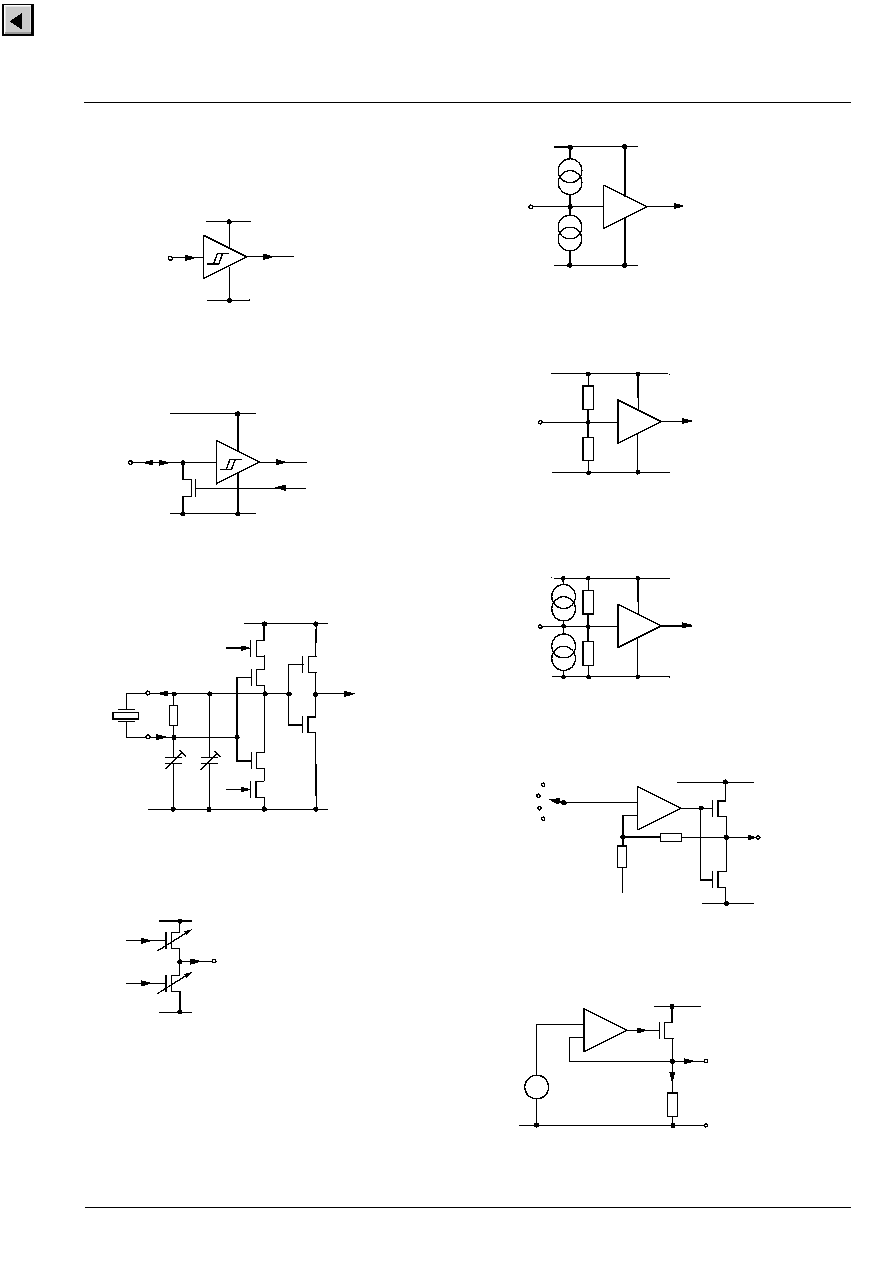
ADVANCE INFORMATION
VCT 38xxA
Micronas
147
Fig. 6�5: 128-pin PMQFP package
6.6. Pin Circuits
Fig. 6�6: Input pins TEST, DISINTROM
Fig. 6�7: Input/Output pins RESQ, SDA, SCL
Fig. 6�8: Input/Output pins XTAL1, XTAL2
Fig. 6�9: Output pin CLK20
Fig. 6�10: Input pins VIN1�VIN4
Fig. 6�11: Input pins CIN1, CIN2
Fig. 6�12: Input pins CRIN, CBIN
Fig. 6�13: Output pin VOUT
Fig. 6�14: Supply pins VRT, SGND
VSUP
S
GND
S
N
GND
S
VSUP
S
GND
S
VSUP
S
P
N
P
N
f
XTAL
0.5M
XTAL2
XTAL1
N
P
GND
D
P
N
VSUP
D
GND
AF
VSUP
AF
To ADC
GND
AF
VSUP
AF
To ADC
GND
AF
VSUP
AF
To ADC
VSUP
AF
GND
AF
P
N
VINx
VREF
�
+
VSUP
AF
P
SGND
VRT
V
REF
ADC Reference
�
+
=
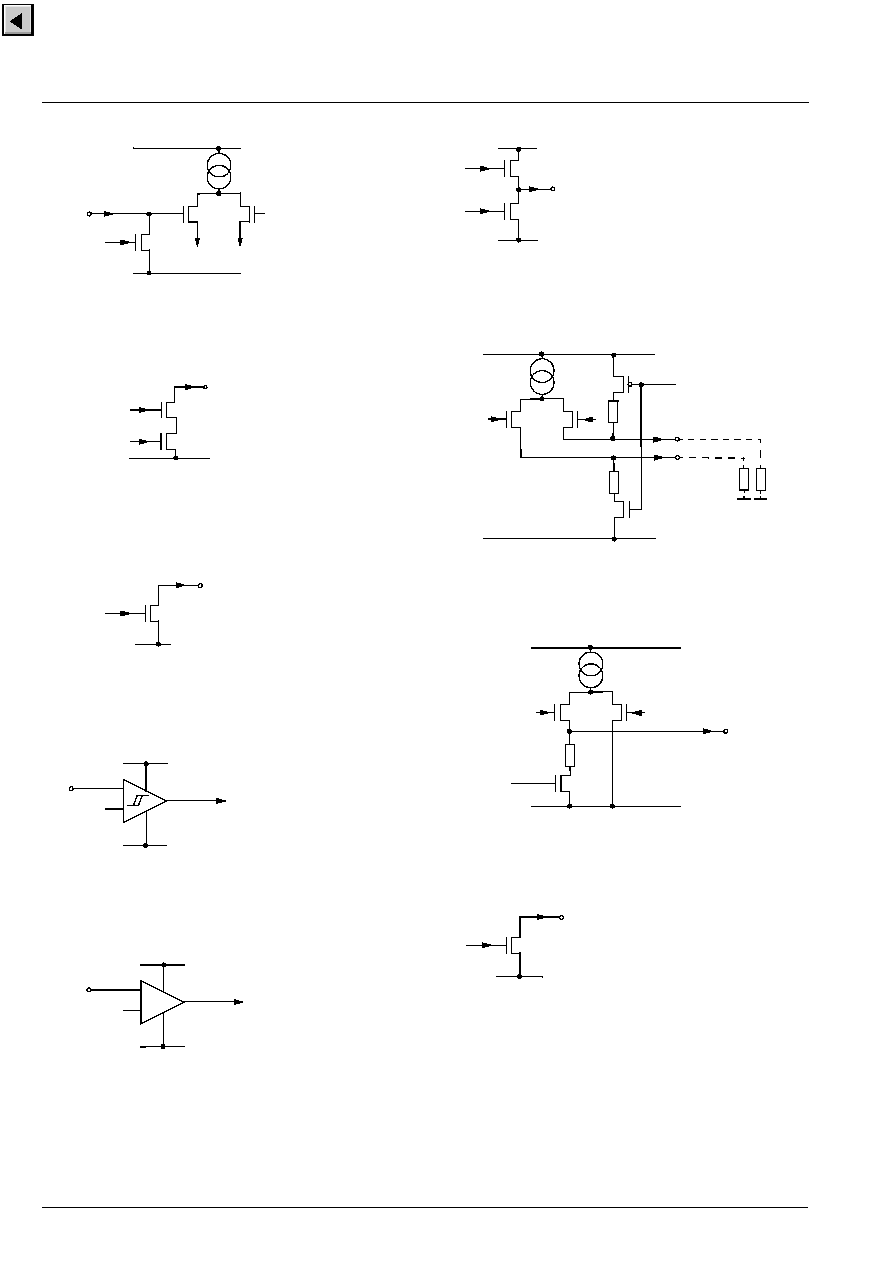
VCT 38xxA
ADVANCE INFORMATION
148
Micronas
Fig. 6�15: Input pins RIN, GIN, BIN
Fig. 6�16: Output pins ROUT, GOUT, BOUT,
SVMOUT
Fig. 6�17: Output pin HOUT
Fig. 6�18: Input pins SAFETY, VPROT, HFLB
Fig. 6�19: Input pin FBLIN
Fig. 6�20: Output pin INTLC
Fig. 6�21: Output pins VERT, VERTQ
Fig. 6�22: Output pin EW
Fig. 6�23: Output pins RSW1, RSW2
GND
AB
N
Clamping
P
P
VSUP
AB
GND
AB
Bias
N
N
GND
D
N
V
REF
VSUP
AB
GND
AB
V
REF
VSUP
AB
GND
AB
GND
AB
P
N
VSUP
AB
P
P
VSUP
AB
GND
AB
N
Flyback
VERT
VERTQ
P
VSUP
AB
GND
AB
N
VEWXR
P
P
GND
AB
N

ADVANCE INFORMATION
VCT 38xxA
Micronas
149
Fig. 6�24: Input pin SENSE
Fig. 6�25: Supply pins XREF, VRD
Fig. 6�26: Input pins AIN1-3
Fig. 6�27: Output pins AOUT1, AOUT2
Fig. 6�28: Input/Output pins P10-P17, P20-P27, P30-
P37
Fig. 6�29: Input pins P42-P46
Fig. 6�30: Output pins ADB0-ADB18, OE1, OE2,
WE1, WE2
Fig. 6�31: Input/Output pins DB0-DB7
Fig. 6�32: Input pins VB0-VB7, VBCLK
N
P
+
-
ref. current
VSUP
AB
GND
AB
VRD
XREF
int. ref.
voltage
2.5 V
40 k
GND
AB
80 k
2.5 V
GND
AB
GND
Px
P
N
VSUP
Px
VSUP
S
to ADC
GND
AB
P
N
VSUP
AB
P
N
VSUP
S
P
N
GND
ADB
VSUP
ADB
VSUP
DB
GND
DB
P
N
VSUP
S
VSUP
D
GND
D

VCT 38xxA
ADVANCE INFORMATION
150
Micronas
6.7. Electrical Characteristics
6.7.1. Absolute Maximum Ratings
1)
Refer to Pin Circuits (chapter 6.6. on page 147)
Stresses beyond those listed in the "Absolute Maximum Ratings" may cause permanent damage to the device. This
is a stress rating only. Functional operation of the device at these or any other conditions beyond those indicated in
the "Recommended Operating Conditions/Characteristics" of this specification is not implied. Exposure to absolute
maximum ratings conditions for extended periods may affect device reliability.
6.7.2. Recommended Operating Conditions
6.7.2.1. General Recommendations
Symbol
Parameter
Pin Name
Min.
Max.
Unit
T
A
Ambient Operating Temperature
-
65
�
C
T
C
Case Temperature (PSDIP64)
-
115
�
C
T
C
Case Temperature (PMQFP128)
-
115
�
C
T
S
Storage Temperature
-
40
125
�C
P
TOT
Total Power Dissipation
-
1400
mW
VSUP
x
Supply Voltage
VSUP
x
-
0.3
6
V
V
I
Input Voltage, all Inputs
-
0.3
VSUP
x
+0.3
1)
V
V
O
Output Voltage, all Outputs
-
0.3
VSUP
x
+0.3
1)
V
V
IO
Input/Output Voltage, all Open Drain Out-
puts
-
0.3
6
V
Symbol
Parameter
Pin Name
Min.
Typ.
Max.
Unit
T
A
Ambient Operating Temperature
0
-
65
�C
f
XTAL
Clock Frequency
XTAL1/2
-
20.25
-
MHz
VSUP
A
Analog Supply Voltage
VSUP
AF
VSUP
AB
4.75
5.0
5.25
V
VSUP
D
Digital Supply Voltage
VSUP
S
VSUP
D
VSUP
VDP
VSUP
TPU
VSUP
CCU
3.15
3.3
3.45
V
VSUP
P
Port Supply Voltage
VSUP
Px
VSUP
DB
VSUP
ADB
3.15
3.3/5.0
5.25
V
VSUP
OFF
Standby Supply Voltage
VSUP
AF
VSUP
AB
VSUP
D
0
-
0.5
V
VSUP
Difference between Standby and Emulator
Supply Voltage
VSUP
S
VSUP
VDP
VSUP
TPU
VSUP
CCU
0
-
0.3
V

ADVANCE INFORMATION
VCT 38xxA
Micronas
151
6.7.2.2. Analog Input and Output Recommendations
Symbol
Parameter
Pin Name
Min.
Typ.
Max.
Unit
Audio
C
AIN
Input Coupling Capacitor
Audio Inputs
AIN1
-
3
-
330
-
nF
V
AIN
Audio Input Level
-
-
1.0
V
RMS
R
LAOUT
Audio Output Load Resistance
AOUT1
-
2
10
-
-
k
C
LAOUT
Audio Output Load Capacitance
-
-
1.0
nF
R
SAOUT
Audio Output Serial Resistance
-
680
-
Video
V
VIN
Video Input Level
VIN1
-
4,
CIN1
-
2
0.5
1.0
3.5
V
V
CIN
Chroma Input Level
CRIN, CBIN
-
700
-
mV
C
VIN
Input Coupling Capacitor
Video Inputs
VIN1
-
4
-
680
-
nF
C
CIN
Input Coupling Capacitor
Chroma Inputs
CIN1
-
2
-
1
-
nF
C
CCIN
Input Coupling Capacitor
Component Inputs
CRIN, CBIN
-
220
-
nF
RGB
R
xref
RGB
-
DAC Current defining Resistor
XREF
9.5
10
10.5
k
C
RGBIN
RGB Input Coupling Capacitor
RIN
GIN
BIN
-
15
-
nF
Deflection
R
load
Deflection Load Resistance
EW,
VERT,
VERTQ
-
6.8
-
k
C
load
Deflection Load Capacitance
-
68
-
nF

VCT 38xxA
ADVANCE INFORMATION
152
Micronas
6.7.2.3. Recommended Crystal Characteristics
Symbol
Parameter
Min.
Typ.
Max.
Unit
T
A
Operating Ambient Temperature
0
�
65
�
C
f
P
Parallel Resonance Frequency
with Load Capacitance C
L
= 13 pF
�
20.250000
�
MHz
f
P
/f
P
Accuracy of Adjustment
�
�
�
20
ppm
f
P
/f
P
Frequency Temperature Drift
�
�
�
30
ppm
R
R
Series Resistance
�
�
25
C
0
Shunt Capacitance
3
�
7
pF
C
1
Motional Capacitance
20
�
30
fF
Load Capacitance Recommendation
C
Lext
External Load Capacitance
1)
from pins to
Ground
(pin names: Xtal1 Xtal2)
�
3.3
�
pF
DCO Characteristics
2,3)
C
ICLoadmin
Effective Load Capacitance @ min. DCO�
Position, Code 0,
package: 64PSDIP
3
4.3
5.5
pF
C
ICLoadrng
Effective Load Capacitance Range,
DCO Codes from 0..255
11
12.7
15
pF
1)
Remarks on defining the External Load Capacitance:
External capacitors at each crystal pin to ground are required. They are necessary to tune the effective load capacitance of the PCBs to the
required load capacitance C
L
of the crystal. The higher the capacitors, the lower the clock frequency results. The nominal free running fre-
quency should match f
p
MHz. Due to different layouts of customer PCBs the matching capacitor size should be determined in the application.
The suggested value is a figure based on experience with various PCB layouts.
Tuning condition: Code DVCO Register=�720
2)
Remarks on Pulling Range of DCO:
The pulling range of the DCO is a function of the used crystal and effective load capacitance of the IC (C
ICLoad
+C
LoadBoard
). The resulting fre-
quency f
L
with an effective load capacitance of C
Leff
= C
ICLoad
+ C
LoadBoard
is:
1 + 0.5 * [ C
1
/ (C
0
+ C
Leff
) ]
f
L
= f
P
* _______________________
1 + 0.5 * [ C
1
/ (C
0
+ C
L
) ]
3)
Remarks on DCO codes
The DCO hardware register has 8 bits, the fp control register uses a range of �2048...2047

ADVANCE INFORMATION
VCT 38xxA
Micronas
153
6.7.3. Characteristics
If not otherwise designated under test conditions, all characteristics are specified for recommended operating condi-
tions (see Section 6.7.2. on page 150).
6.7.3.1. General Characteristics
6.7.3.2. Test Input
Symbol
Parameter
Pin Name
Min.
Typ.
Max.
Unit
Test Conditions
P
TOT
Total Power Dissipation
-
850
1350
mW
P
STDBY
Standby Power Dissipation
VSUP
S
-
tbd
tbd
mW
VSUP
D
= VSUP
P
=
VSUP
AF
= VSUP
AB
=
VSUP
DB
= VSUP
ADB
= 0V
SR0 = SR1 = SR2 = 0
I
VSUPS
Current Consumption Standby
Mode
-
tbd
tbd
mA
I
VSUPS
Current Consumption Standby
Supply
-
15
23
mA
normal operation
I
VSUPD
Current Consumption Digital Cir-
cuitry
VSUP
D
-
55
83
mA
I
VSUPP
Current Consumption Port Cir-
cuitry
VSUP
P
-
-
�
mA
depends on port load
I
VSUPAF
Current Consumption Analog
Front-end
VSUP
AF
-
48
72
mA
I
VSUPAB
Current Consumption Analog
Back-end
VSUP
AB
-
50
100
mA
depends on contrast and
brightness settings
I
L
Input and Output Leakage Cur-
rent
All I/O Pins
-
-
1
�
A
Symbol
Parameter
Pin Name
Min.
Typ.
Max.
Unit
Test Conditions
V
IL
Input Low Voltage
TEST
-
-
0.8
V
V
IH
Input High Voltage
2.0
-
-
V

VCT 38xxA
ADVANCE INFORMATION
154
Micronas
6.7.3.3. Reset Input
6.7.3.4. I
2
C Bus Interface
Symbol
Parameter
Pin Name
Min.
Typ.
Max.
Unit
Test Conditions
VBG
Internal Reference Voltage
RESQ
1.125
1.25
1.375
V
tBG
Internal Voltage Reference
Setup Time after Power-Up
-
30
60
us
VREFR
RESET Comparator Reference
Voltage
-
1*VBG
-
V
RVlh
-
RVhl
RESET Comparator Hysteresis,
symmetrical to VREFR
0.25
0.313
0.375
V
VREFA
ALARM Comparator Reference
Voltage
-
2*VBG
-
V
AVlh
-
AVhl
ALARM Comparator Hysteresis,
symmetrical to VREFA
0.1
0.135
0.15
V
tCDEL
RESET, ALARM Comparator
Delay Time
-
-
100
ns
Overdrive=50mV
VREFPOR
Power On Reset Comparator
Reference Voltage
VSUP
S
-
2*VBG
-
V
Symbol
Parameter
Pin Name
Min.
Typ.
Max.
Unit
Test Conditions
V
IL
Input Low Voltage
SDA, SCL
�
�
0.3*
VSUP
S
V
V
IH
Input High Voltage
0.6*
VSUP
S
�
�
V
V
OL
Output Low Voltage
�
�
0.4
0.6
V
V
I
l
= 3 mA
I
l
= 6 mA
V
IH
Input Capacitance
�
�
5
pF
t
F
Signal Fall Time
�
�
300
ns
C
L
= 400 pF
t
R
Signal Rise Time
�
�
300
ns
C
L
= 400 pF
f
SCL
Clock Frequency
SCL
0
�
400
kHz
t
LOW
Low Period of SCL
1.3
�
�
�
s
t
HIGH
High Period of SCL
0.6
�
�
�
s
t
SU Data
Data Set Up Time to SCL high
SDA
100
�
�
ns
t
HD Data
DATA Hold Time to SCL low
0
�
0.9
�
s
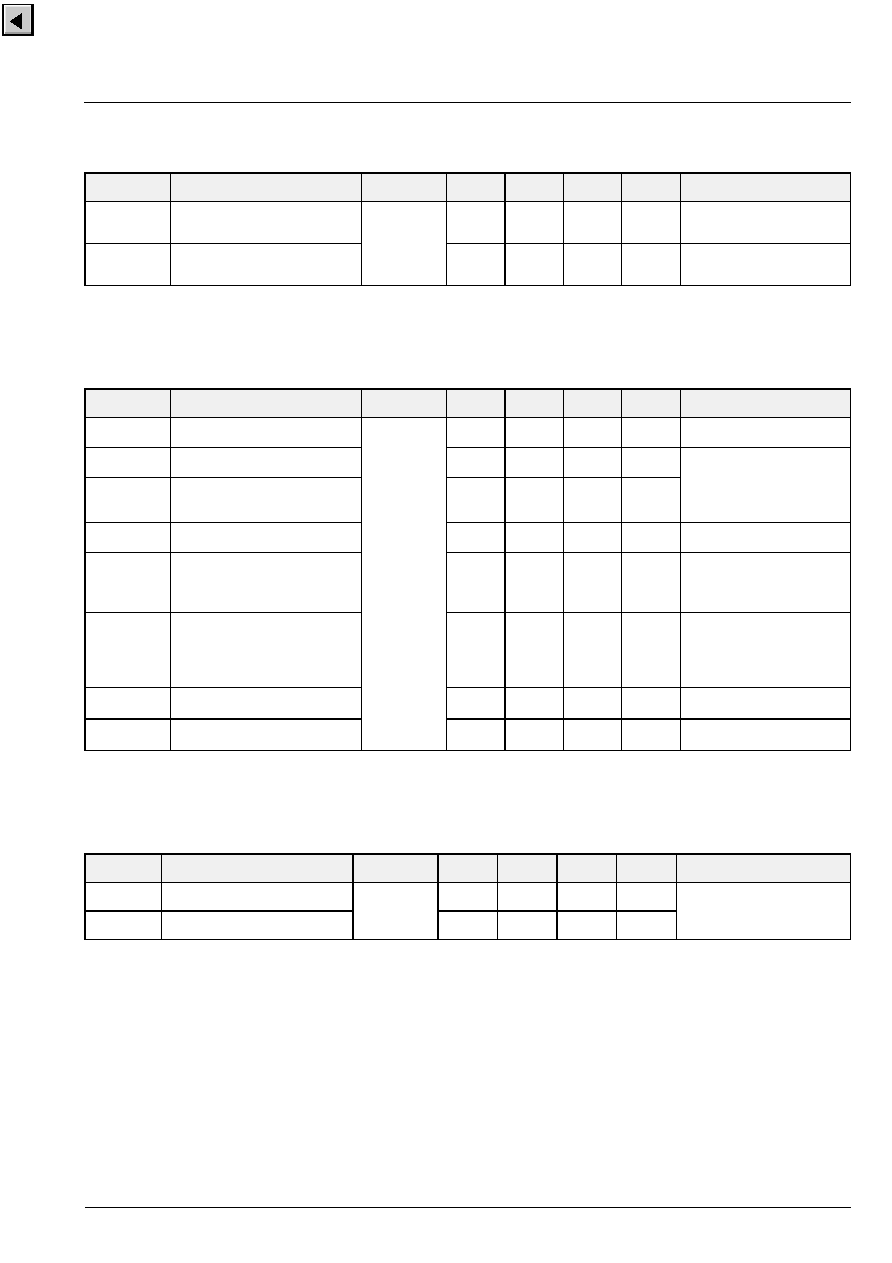
ADVANCE INFORMATION
VCT 38xxA
Micronas
155
6.7.3.5. 20-MHz Clock Output
6.7.3.6. Analog Video Output
6.7.3.7. A/D Converter Reference
Symbol
Parameter
Pin Name
Min.
Typ.
Max.
Unit
Test Conditions
V
OL
Output Low Voltage
CLK20
-
-
0.4
V
I
OL
= tbd,
strength tbd
V
OH
Output High Voltage
VSUP
D
-
0.4
-
VSUP
D
V
-
I
OL
= tbd,
strength tbd
Symbol
Parameter
Pin Name
Min.
Typ.
Max.
Unit
Test Conditions
V
OUT
Output Voltage
VOUT
1.7
2.0
2.3
V
PP
V
VIN
= 1 V
PP
, AGC = 0 dB
AGC
VOUT
AGC Step Width, VOUT
1.333
dB
3 Bit Resolution = 7
Steps
3 MSB's of main AGC
DNL
AGC
AGC Differential
Non-Linearity
�
0.5
LSB
V
OUTDC
DC-Level
1
V
clamped to back porch
BW
V
OUT
Bandwidth
6
10
-
MHz
Input:
-
2 dBr of main
ADC range,
C
L
10 pF
THD
V
OUT
Total Harmonic
Distortion
-
45
-
40
dB
Input:
-
2 dBr of main
ADC range,
C
L
10 pF
1 MHz, 5 Harmonics
C
LVOUT
Load Capacitance
-
-
10
pF
I
LVOUT
Output Current
-
-
�
0.1
mA
Symbol
Parameter
Pin Name
Min.
Typ.
Max.
Unit
Test Conditions
V
VRT
Reference Voltage Top
VRT
2.5
2.6
2.8
V
10
�
F/10 nF, 1 G
Probe
V
VRTN
Reference Voltage Top Noise
-
-
100
mV
PP
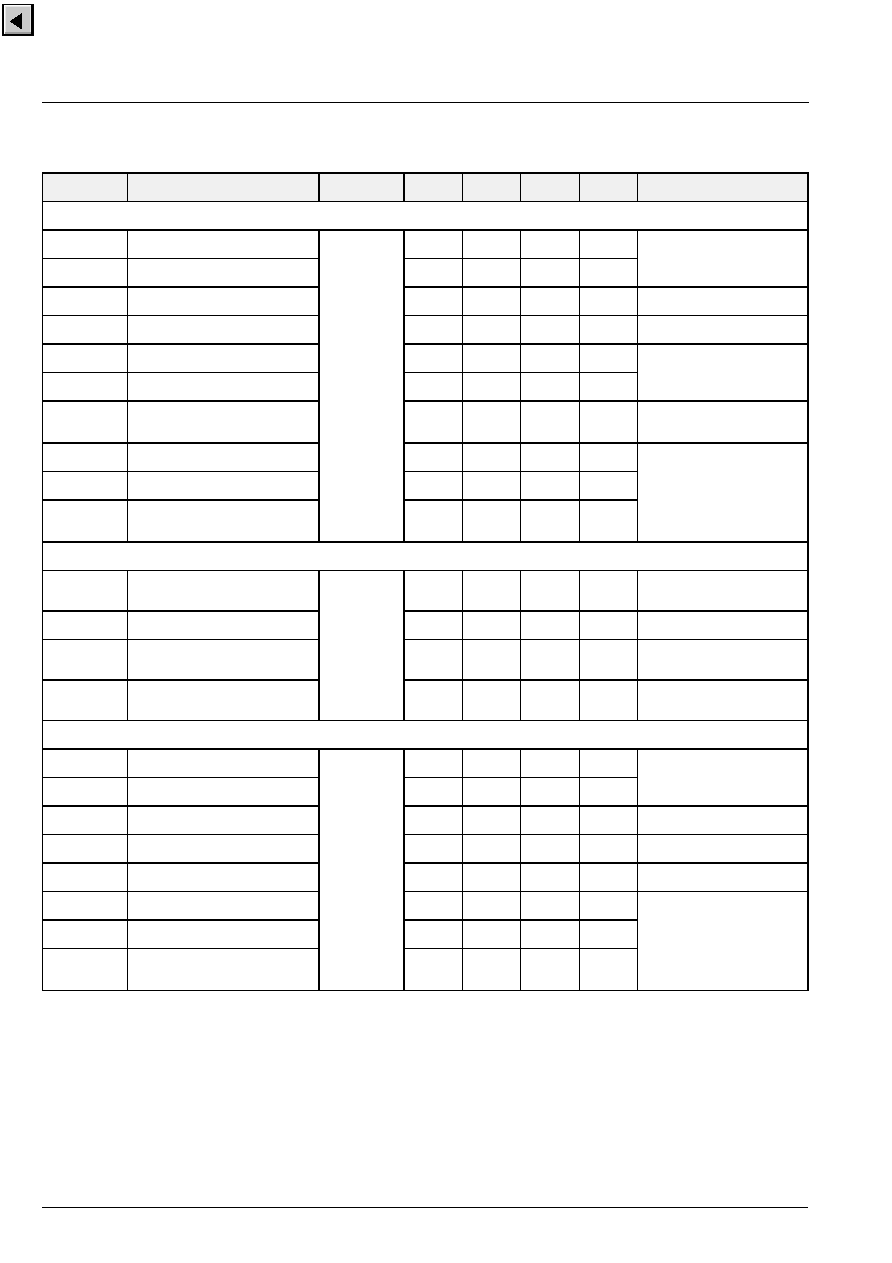
VCT 38xxA
ADVANCE INFORMATION
156
Micronas
6.7.3.8. Analog Video Front-End and A/D Converters
Symbol
Parameter
Pin Name
Min.
Typ.
Max.
Unit
Test Conditions
Luma � Path (Composite)
R
VIN
Input Resistance
VIN1
-
4
1
�
�
M
Code Clamp�DAC=0
C
VIN
Input Capacitance
�
5
�
pF
V
VIN
Full Scale Input Voltage
1.8
2.0
2.2
V
PP
min. AGC Gain
V
VIN
Full Scale Input Voltage
0.5
0.6
0.7
V
PP
max. AGC Gain
AGC
AGC step width
�
0.166
�
dB
6-Bit Resolution= 64 Steps
f
sig
=1MHz,
� 2 dBr of max. AGC�Gain
DNL
AGC
AGC Differential Non-Linearity
�
�
�
0.5
LSB
V
VINCL
Input Clamping Level, CVBS
�
1.0
�
V
Binary Level = 64 LSB
min. AGC Gain
Q
CL
Clamping DAC Resolution
�16
-
15
steps
5 Bit � I�DAC, bipolar
V
VIN
=1.5 V
I
CL�LSB
Input Clamping Current per step
0.7
1.0
1.3
�
A
DNL
ICL
Clamping DAC Differential Non-
Linearity
�
�
�
0.5
LSB
Chroma � Path (Composite)
R
CIN
Input Resistance
SVHS Chroma
CIN1
CIN2
1.4
2.0
2.6
k
V
CIN
Full Scale Input Voltage, Chroma
1.08
1.2
1.32
V
PP
V
CINDC
Input Bias Level,
SVHS Chroma
-
1.5
-
V
Binary Code for Open
Chroma Input
-
128
-
-
Chroma � Path (Component)
R
CIN
Input Resistance
CRIN
CBIN
1
-
-
M
Code Clamp�DAC=0
C
CIN
Input Capacitance
-
-
4.5
pF
V
CIN
Full Scale Input Voltage
0.76
0,84
0.92
V
PP
minimal Range
V
CIN
Full Scale Input Voltage
1.08
1.2
1.32
V
PP
extended Range
V
CINCL
Input Clamping Level C
r
, C
b
-
1.5
-
V
Binary Level = 128 LSB
Q
CL
Clamping DAC Resolution
�32
-
31
steps
6 Bit � I�DAC, bipolar
V
VIN
=1.5 V
I
CL�LSB
Input Clamping Current per step
0.59
0.85
1.11
�
A
DNL
ICL
Clamping DAC Differential Non-
Linearity
-
-
�
0.5
LSB

ADVANCE INFORMATION
VCT 38xxA
Micronas
157
Dynamic Characteristics for all Video-Paths (Luma + Chroma)
BW
Bandwidth
VIN1
-
4
CIN1
-
2
CBIN
8
10
�
MHz
�2 dBr input signal level
XTALK
Crosstalk, any Two Video Inputs
�
�56
�
dB
1 MHz, �2 dBr signal level
THD
Total Harmonic Distortion
�
50
�
dB
1 MHz, 5 harmonics,
�2 dBr signal level
SINAD
Signal-to-Noise and Distortion
Ratio
�
45
�
dB
1 MHz, all outputs,
�2 dBr signal level
INL
Integral Non-Linearity
�
�
�
1
LSB
Code Density,
DC-ramp
DNL
Differential Non-Linearity
�
�
�
0.8
LSB
DG
Differential Gain
�
�
�
3
%
�12 dBr, 4.4 MHz signal on
DC-ramp
DP
Differential Phase
�
�
1.5
deg
Symbol
Parameter
Pin Name
Min.
Typ.
Max.
Unit
Test Conditions
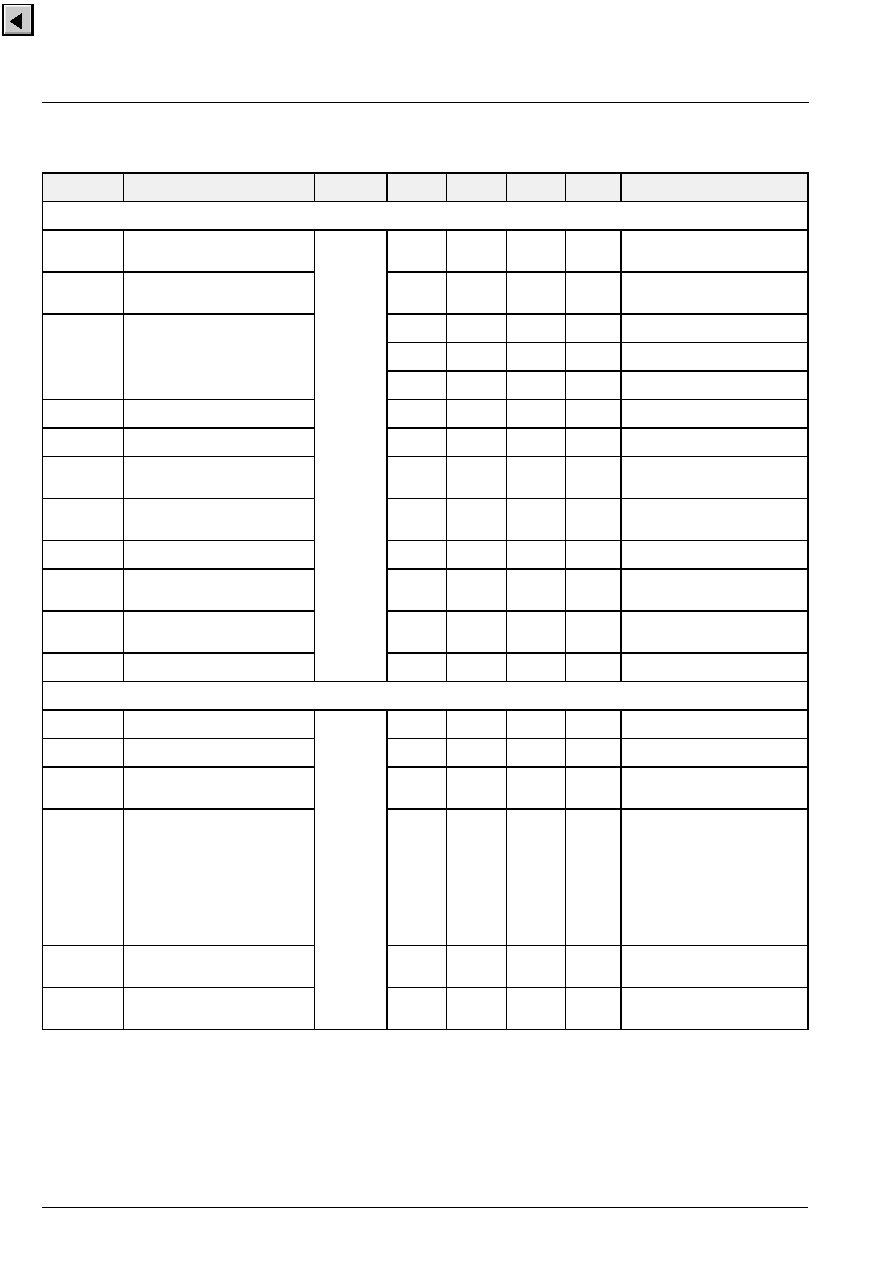
VCT 38xxA
ADVANCE INFORMATION
158
Micronas
6.7.3.9. Analog RGB and FB Inputs
Symbol
Parameter
Pin Name
Min.
Typ.
Max.
Unit
Test Conditions
RGB Input Characteristics
V
RGBIN
External RGB Inputs Voltage
Range
RIN
GIN
BIN
-
0.3
-
1.1
V
V
RGBIN
nominal RGB Input Voltage
peak-to-peak
0.5
0.7
1.0
V
PP
SCART Spec: 0.7V
�
3dB
V
RGBIN
RGB Inputs Voltage for Maxi-
mum Output Current
-
0.44
-
V
Contrast setting: 511
-
0.7
-
V
Contrast setting: 323
-
1.1
-
V
Contrast setting: 204
t
CLP
Clamp Pulse Width
1.6
-
-
�
s
C
IN
Input Capacitance
-
-
13
pF
I
IL
Input Leakage Current
-
0.5
-
0.5
�
A
Clamping OFF,
V
IN
=
-
0.3...3 V
V
CLIP
RGB Input Voltage for
Clipping Current
-
2
-
V
V
CLAMP
Clamp Level at Input
40
60
80
mV
Clamping ON
V
INOFF
Offset Level at Input
-
10
-
10
mV
Extrapolated from
V
IN
=
100 and 200 mV
V
INOFF
Offset Level Match at Input
-
10
-
10
mV
Extrapolated from
V
IN
=
100 and 200 mV
R
CLAMP
Clamping-ON-Resistance
-
140
-
Fast Blank Input Characteristics
V
FBLOFF
FBLIN Low Level
FBLIN
-
-
0.5
V
V
FBLON
FBLIN High Level
0.9
-
-
V
V
FBLTRIG
Fast Blanking Trigger
Level typical
-
0.7
-
V
t
PID
Delay Fast Blanking to RGB
OUT
from midst of FBLIN
-
transition
to 90% of RGB
OUT
- transition
-
8
15
ns
Internal RGB = 3.75 mA Full
Scale
Int. Brightness = 0
External Brightness =
1.5 mA (Full Scale)
RGBin = 0
V
FBLOFF
= 0.4 V
V
FBLON
= 1.0 V
Rise and fall time = 2 ns
Difference of Internal Delay to
External RGBin Delay
-
5
-
+5
ns
Switch-Over-Glitch
-
0.5
-
pAs
Switch from 3.75 mA (int) to 1.5
mA (ext)

ADVANCE INFORMATION
VCT 38xxA
Micronas
159
6.7.3.10. Horizontal Flyback Input
6.7.3.11. Horizontal Drive Output
6.7.3.12. Vertical Safety Input
6.7.3.13. Vertical Protection Input
Symbol
Parameter
Pin Name
Min.
Typ.
Max.
Unit
Test Conditions
V
IL
Input Low Voltage
HFLB
�
�
1.8
V
V
IH
Input High Voltage
2.6
�
�
V
V
IHST
Input Hysteresis
0.1
�
�
V
PSRR
HF
Power Supply Rejection Ratio of
Trigger Level
0
-
-
dB
f = 20 MHz
PSRR
MF
Power Supply Rejection Ratio of
Trigger Level
-
20
-
-
dB
f < 15 kHz
PSRR
LF
Power Supply Rejection Ratio of
Trigger Level
-
40
-
-
dB
f < 100 Hz
Symbol
Parameter
Pin Name
Min.
Typ.
Max.
Unit
Test Conditions
V
OL
Output Low Voltage
HOUT
-
-
0.4
V
I
OL
= 10 mA
V
OH
Output High Voltage
(Open Drain Stage)
-
-
5
V
external pull-up resistor
t
OF
Output Fall Time
-
8
20
ns
C
LOAD
= 30pF
I
OL
Output Low Current
-
-
10
mA
Symbol
Parameter
Pin Name
Min.
Typ.
Max.
Unit
Test Conditions
V
ILA
Input Low Voltage A
SAFETY
-
-
1.8
V
V
IHA
Input High Voltage A
2.6
-
-
V
V
ILB
Input Low Voltage B
-
-
3.0
V
V
IHB
Input High Voltage B
3.8
-
-
V
V
IHST
Input Hysteresis A and B
0.1
-
-
V
t
PID
Internal Delay
-
-
100
ns
Symbol
Parameter
Pin Name
Min.
Typ.
Max.
Unit
Test Conditions
V
IL
Input Low Voltage
VPROT
-
-
1.8
V
V
IH
Input High Voltage
2.6
-
-
V
V
IHST
Input Hysteresis
0.1
-
-
V

VCT 38xxA
ADVANCE INFORMATION
160
Micronas
6.7.3.14. Vertical and East
/
West D/A Converter Output
6.7.3.15. Interlace Output
6.7.3.16. Sense A/D Converter Input
6.7.3.17. Range Switch Output
Symbol
Parameter
Pin Name
Min.
Typ.
Max.
Unit
Test Conditions
V
OMIN
Minimum Output Voltage
EW
VERT
VERTQ
-
0
-
V
R
load
= 6.8 k
R
xref
= 10 k
V
OMAX
Maximum Output Voltage
2.82
3
3.2
V
R
load
= 6.8 k
R
xref
= 10 k
I
DACN
Full scale DAC Output
Current
415
440
465
�
A
R
xref
= 10 k
PSRR
Power Supply Rejection
Ratio
-
20
-
dB
Symbol
Parameter
Pin Name
Min.
Typ.
Max.
Unit
Test Conditions
V
OL
Output Low Voltage
INTLC
-
0.2
0.4
V
I
OL
= 1.6 mA
V
OH
Output High Voltage
VSUP
AB
-
0.4
VSUP
AB
-
0.2
-
V
-
I
OL
= 1.6mA
Symbol
Parameter
Pin Name
Min.
Typ.
Max.
Unit
Test Conditions
V
I
Input Voltage Range
SENSE
0
-
VSUP
A
B
V
V
I255
Input Voltage for code 255
1.4
1.54
1.7
V
Read cutoff blue
register
C
0
Digital Output for zero Input
-
-
16
LSB
Offset check,
read cutoff blue
register
R
I
Input Impedance
1
-
-
M
Symbol
Parameter
Pin Name
Min.
Typ.
Max.
Unit
Test Conditions
R
ON
Output On Resistance
RSW1
RSW2
-
-
50
I
OL
= 10 mA
I
Max
Maximum Current
-
-
15
mA
I
LEAK
Leakage Current
-
-
600
nA
RSW High Impedance
C
IN
Input Capacitance
-
-
5
pF

ADVANCE INFORMATION
VCT 38xxA
Micronas
161
6.7.3.18. D/A Converter Reference
6.7.3.19. Analog RGB Outputs, D/A Converters
Symbol
Parameter
Pin Name
Min.
Typ.
Max.
Unit
Test Conditions
V
DACREF
DAC-Ref. Voltage
VRD
2.38
2.50
2.67
V
V
DACR
DAC-Ref. Output
resistance
18
25
32
k
V
XREF
DAC-Ref. Voltage
Bias Current Generation
XREF
2.38
2.5
2.67
V
R
xref
= 10 k
Symbol
Parameter
Pin Name
Min.
Typ.
Max.
Unit
Test Conditions
Internal RGB Signal D/A Converter Characteristics
Resolution
ROUT
GOUT
BOUT
-
10
-
bit
I
OUT
Full Scale Output Current
3.6
3.75
3.9
mA
R
ref
= 10 k
I
OUT
Differential Nonlinearity
-
-
0.5
LSB
I
OUT
Integral Nonlinearity
-
-
1
LSB
I
OUT
Glitch Pulse Charge
-
0.5
-
pAs
Ramp signal, 25
output ter-
mination
I
OUT
Rise and Fall Time
-
3
-
ns
10% to 90%, 90% to 10%
I
OUT
Intermodulation
-
-
-
50
dB
2/2.5MHz full scale
I
OUT
Signal to Noise
+50
-
-
dB
Signal: 1MHz full scale Band-
width: 10MHz
I
OUT
Matching R-G, R-B, G-B
-
2
-
2
%
R/B/G Crosstalk
one channel talks
two channels talk
-
-
-
46
dB
Passive channel:
I
OUT
=1.88 mA
Crosstalk-Signal: 1.25 MHz,
3.75 mA
PP
RGB Input Crosstalk from exter-
nal RGB
one channel talks
two channels talk
three channels talk
-
-
-
-
-
-
-
50
-
50
-
50
dB
dB
dB
Internal RGB Brightness D/A Converter Characteristics
Resolution
ROUT
GOUT
BOUT
-
9
-
bit
I
BR
Full Scale Output Current rela-
tive
39.2
40
40.8
%
Ref to max. digital RGB
I
BR
Full Scale Output Current abso-
lute
-
1.5
-
mA
I
BR
Differential Nonlinearity
-
-
1
LSB
I
BR
Integral Nonlinearity
-
-
2
LSB
I
BR
Match R-G, R-B, G-B
-
2
-
2
%
I
BR
Match to digital RGB
R-R, G-G, B-B
-
2
-
2
%

VCT 38xxA
ADVANCE INFORMATION
162
Micronas
External RGB Voltage/Current Converter Characteristics
Resolution
ROUT
GOUT
BOUT
-
9
-
bit
I
EXOUT
Full Scale Output Current rela-
tive
96
100
104
%
Ref. to max. Digital RGB V
IN
= 0.7 V
PP
, contrast = 323
Full Scale Output Current
absolute
-
3.75
-
mA
Same as Digital RGB
CR
Contrast Adjust Range
-
16:511
-
Gain Match R-G, R-B, G-B
-
3
-
3
%
Measured at RGB Outputs
V
IN
= 0.7 V, contrast = 323
Gain Match to RGB-DACs
R-R, G-G, B-B
-
3
-
3
%
Measured at RGB Outputs
V
IN
= 0.7 V, contrast = 323
R/B/G Input Crosstalk
one channel talks
two channels talk
-
-
-
46
dB
Passive channel:
V
IN
= 0.7V, contrast = 323
Crosstalk signal: 1.25 MHz,
3.75 mA
PP
RGB Input Crosstalk from
Internal RGB
one channel talks
two channels talk
tree channels talk
-
-
-
50
dB
RGB Input Noise and
Distortion
-
-
-
50
dB
V
IN
=0.7 V
PP
at 1 MHz
contrast = 323
Bandwidth: 10 MHz
RGB Input Bandwidth -3dB
15
-
MHz
V
IN
= 0.7 V
PP
,
contrast =323
RGB Input THD
-
-
-
50
-
40
-
-
dB
dB
Input signal 1 MHz
Input signal 6 MHz
V
IN
= 0.7 V
PP
contrast =323
Differential Nonlinearity of
Contrast Adjust
-
-
1
LSB
V
IN
= 0.44V
Integral Nonlinearity of
Contrast Adjust
-
-
2
LSB
V
RGBO
R,G,B Output Voltage
-
1.0
-
0.3
V
Referred to V
SUPO
R,G,B Output Load Resistance
-
-
100
Ref. to V
SUPO
V
OUTC
RGB Output Compliance
-
1.5
-
1.3
-
1.2
V
Ref. to V
SUPO
Sum of max.
Current of RGB-DACs and
max. Current of Int. Bright-
ness DACs is 2% degraded
Symbol
Parameter
Pin Name
Min.
Typ.
Max.
Unit
Test Conditions
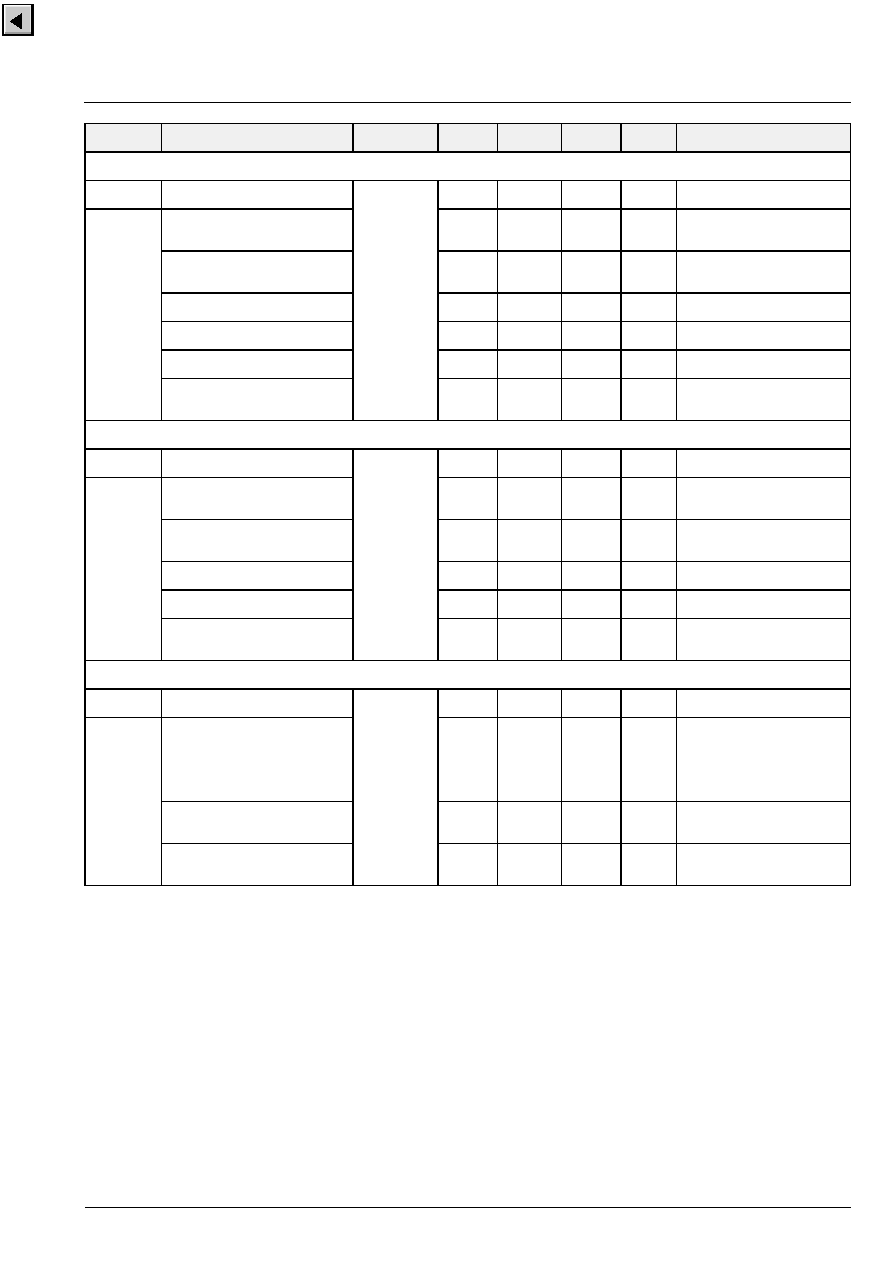
ADVANCE INFORMATION
VCT 38xxA
Micronas
163
External RGB Brightness D/A Converter Characteristics
Resolution
ROUT
GOUT
BOUT
-
9
-
bit
I
EXBR
Full Scale Output Current rela-
tive
39.2
40
40.8
%
Ref to max. digital RGB
Full Scale Output Current abso-
lute
-
1.5
-
mA
Differential Nonlinearity
-
-
1
LSB
Integral Nonlinearity
-
-
2
LSB
Matching R-G, R-B, G-B
-
2
-
2
%
Matching to digital RGB R-R, G-
G, B-B
-
2
-
2
%
RGB Output Cutoff D/A Converter Characteristics
Resolution
ROUT
GOUT
BOUT
-
9
-
bit
I
CUT
Full Scale Output Current rela-
tive
58.8
60
61.2
%
Ref to max. digital RGB
Full Scale Output Current abso-
lute
-
2.25
-
mA
Differential nonlinearity
-
-
1
LSB
Integral nonlinearity
-
-
2
LSB
Matching to digital RGB R-R, G-
G, B-B
-
2
-
2
%
RGB Output Ultrablack D/A Converter Characteristics
Resolution
ROUT
GOUT
BOUT
-
1
-
bit
I
UB
Full Scale Output Current
relative
19.6
20
20.4
%
Ref to max. digital RGB
Full Scale Output Current
absolute
-
0.75
-
mA
Match to digital RGB
R
-
R, G
-
G, B
-
B
-
2
-
2
%
Symbol
Parameter
Pin Name
Min.
Typ.
Max.
Unit
Test Conditions
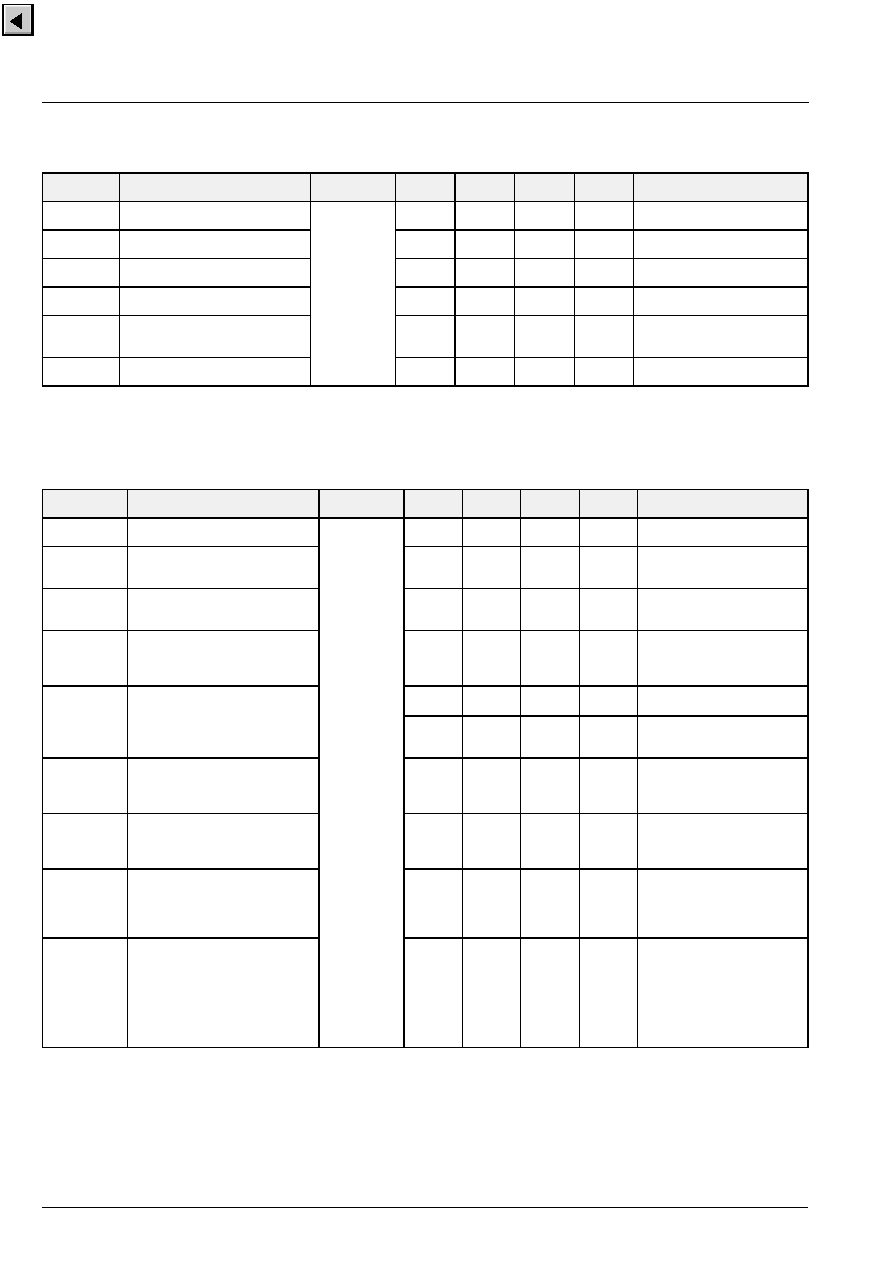
VCT 38xxA
ADVANCE INFORMATION
164
Micronas
6.7.3.20. Scan Velocity Modulation Output
6.7.3.21. Analog Audio Inputs and Outputs
Symbol
Parameter
Pin Name
Min.
Typ.
Max.
Unit
Test Conditions
Resolution
SVMOUT
-
8
-
bit
I
OUT
Full Scale Output Current
1.55
1.875
2.25
mA
I
OUT
Differential Nonlinearity
-
-
0.5
LSB
I
OUT
Integral Nonlinearity
-
-
1
LSB
I
OUT
Glitch Pulse Charge
-
0.5
-
pAs
Ramp, output line is termi-
nated on both ends with 50
I
OUT
Rise and Fall Time
-
3
-
ns
10% to 90%, 90% to 10%
Symbol
Parameter
Pin Name
Min.
Typ.
Max.
Unit
Test Conditions
R
AIN
Audio Input Resistance
AIN1-3
AOUT1-2
25
40
58
k
f
signal
= 1 kHz, I = 0.05 mA
dV
AOUT
Deviation of DC-Level at Audio
Output from GND
AB
Voltage
-
20
-
+20
mV
A
Audio
Gain from Audio Input to Audio
Output
-
1.0
0.0
+0.5
dB
f
signal
= 1 kHz
AVOL = 0dB
f
rAudio
Frequency Response from Audio
Input to Audio Output
bandwidth: 50 Hz to 15000 Hz
-
0.5
0.0
+0.5
dB
with resp. to 1 kHz
PSRR
Power Supply Rejection Ratio for
Audio Output
tbd
50
-
dB
1 kHz sine at 100 mV
RMS
tbd
20
-
dB
100 kHz sine at
100 mV
RMS
V
NOISE
Noise Output Voltage
-
tbd
20
�
V
R
GEN
= 1k
,
equally weighted
50 Hz...15 kHz
V
Mute
Mute Output Voltage
-
tbd
2
�
V
AVOL = mute,
equally weighted
50 Hz...15 kHz
THD
Total Harmonic Distortion from
Audio Input to Audio Output
-
-
0.1
%
Input Level =
0.7
V
RMS
,
f
sig
= 1 kHz,
equally weighted
50 Hz...15 kHz
XTALK
Crosstalk attenuation between
Audio Input and Audio Output
70
-
-
dB
Input Level =
0.7
V
RMS
,
f
sig
= 1 kHz,
equally weighted
50 Hz...15 kHz,
unused analog inputs
connected to ground by Z <
1 k

ADVANCE INFORMATION
VCT 38xxA
Micronas
165
6.7.3.22. ADC Input Port
6.7.3.23. Universal Port
Symbol
Parameter
Pin Name
Min.
Typ.
Max.
Unit
Test Conditions
VREF
ADC Comparator Reference
Voltage
Px.y
-
0.5*
VSUP
S
-
V
Vlh
-
Vhl
ADC Comparator Hysteresis,
symmetrical to VREF
0.1
0.17
0.24
V
tCDEL
ADC Comparator Delay Time
-
-
100
ns
Overdrive=50mV
LSB
LSB Value
-
VSUP
S
/1024
-
V
R
Conversion Range
GND
S
-
VSUP
S
V
A
Conversion Result
-
INT
(Vin/
LSB)
-
hex
GND
S
<Vin<VSUP
S
000
-
-
hex
Vin<=GND
S
-
-
3FF
hex
Vin>=VSUP
S
tc
Conversion Time
-
4
-
�
s
ts
Sample Time
-
2
-
s
TUE
Total Unadjusted Error
-
6
-
6
LSB
DNL
Differential Non-Linearity
-
3
-
3
LSB
Ci
Input Capacitance during Sam-
pling Period
-
15
-
pF
Ri
Serial Input Resistance during
Sampling Period
-
5
-
k
Symbol
Parameter
Pin Name
Min.
Typ.
Max.
Unit
Test Conditions
Vol
Output Low Voltage
P1x
P2x
P3x
-
-
0.4
1.0
V
Io=3mA
Io=10mA
Voh
Output High Voltage
VSUP
P
-
0.4
VSUP
P
-
1.0
-
-
V
Io=
-
3mA
Io=
-
10mA
V
IL
Input Low Voltage
P1x
P2x
P3x
P42
-
P46
-
-
0.8
V
V
IH
Input High Voltage
2.0
-
-
V
Ii
Input Leakage Current
-
0.1
-
0.1
�
A
0<Vi<VSUP
P

VCT 38xxA
ADVANCE INFORMATION
166
Micronas
6.7.3.24. Memory Port
Fig. 6�33: Memory port timing
Symbol
Parameter
Pin Name
Min.
Typ.
Max.
Unit
Test Conditions
t
CYC
PH2
Cycle
Time
-
98.77
-
ns
t
ADS
Address
Setup
Time
ADB[18-0]
-
15
+ 0.5
20
30
19
+ 0.7
26
40
ns
ns/pf
ns
ns
C
ADB
= 0 pF
C
ADB
= 10 pF
C
ADB
= 30 pF
t
ADH
Address
Hold
Time
-
8
10
ns
C
ADB
= 10 pF
t
DWS
Data Write Setup Time
DB[7:0]
-
9
+ 0.5
14
24
14
+ 0.7
21
35
ns
ns/ pF
ns
ns
C
DB
= 0 pF
C
DB
= 10 pF
C
DB
= 30 pF
t
DWH
Data Write Hold Time
-
6
8
ns
C
DB
= 0 pF
t
DRS
Data Read Setup Time
12
-
-
ns
t
DRH
Data Read Hold Time
6
-
-
ns
t
ENS
Enable Setup Time
OE1Q
OE2Q
WE1Q
WE2Q
-
6
10
ns
C
OEQ,WEQ
= 0 pF
t
ENH
Enable Hold Time
-
6
9
ns
C
OEQ,WEQ
= 0 pF
PH2
DB[7:0]
DB[7:0]
WRITE DATA
READ DATA
ADB[18:0]
t
ADH
t
ADS
t
ACC
t
DRS
t
DRH
t
DWH
t
DWS
t
ENH
t
ENS
WEQ,
OEQ
t
cyc
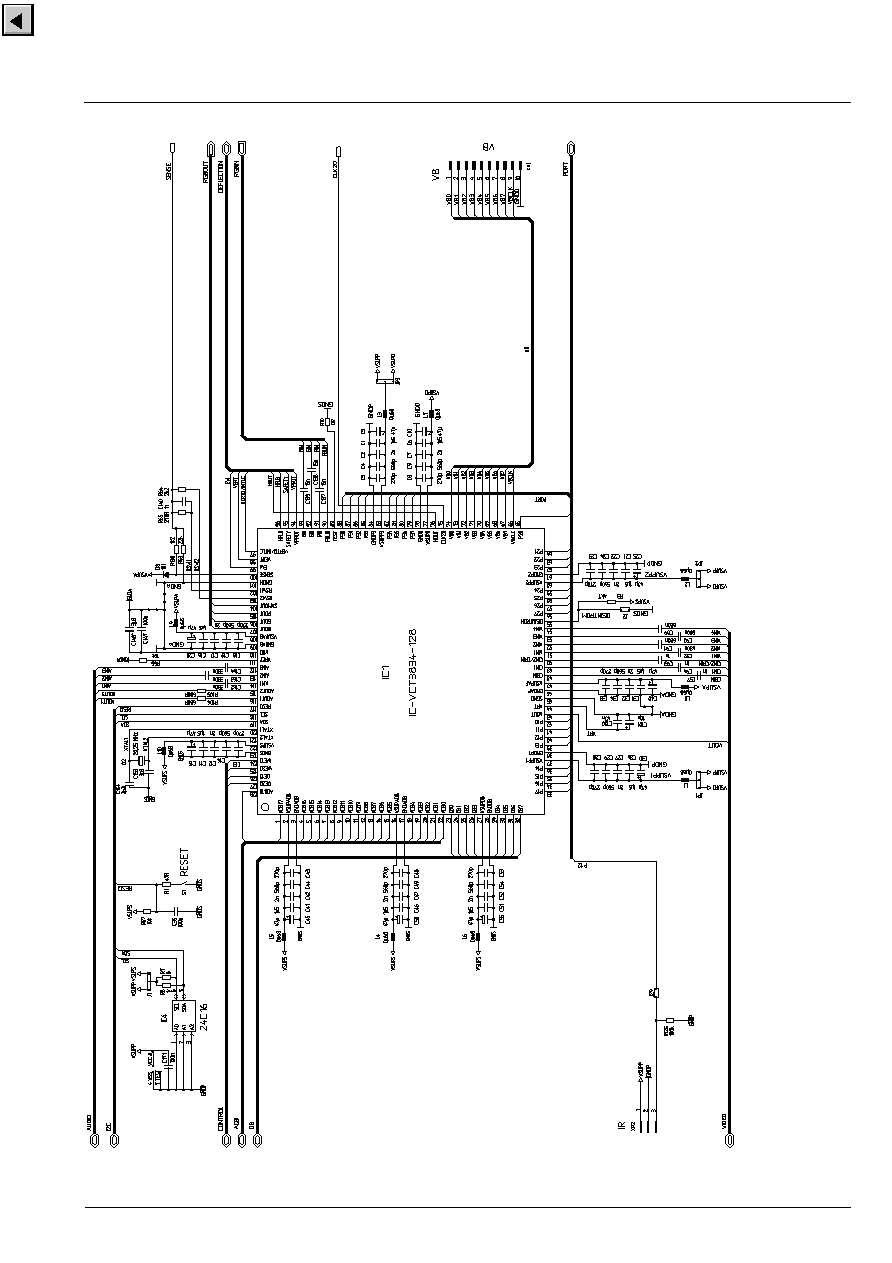
ADVANCE INFORMATION
VCT 38xxA
Micronas
167
7. Application
Fig. 7�1: VCT 38xxA application circuit, part 1/3

VCT 38xxA
ADVANCE INFORMATION
168
Micronas
Fig. 7�2: VCT 38xxA application circuit, part 2/3
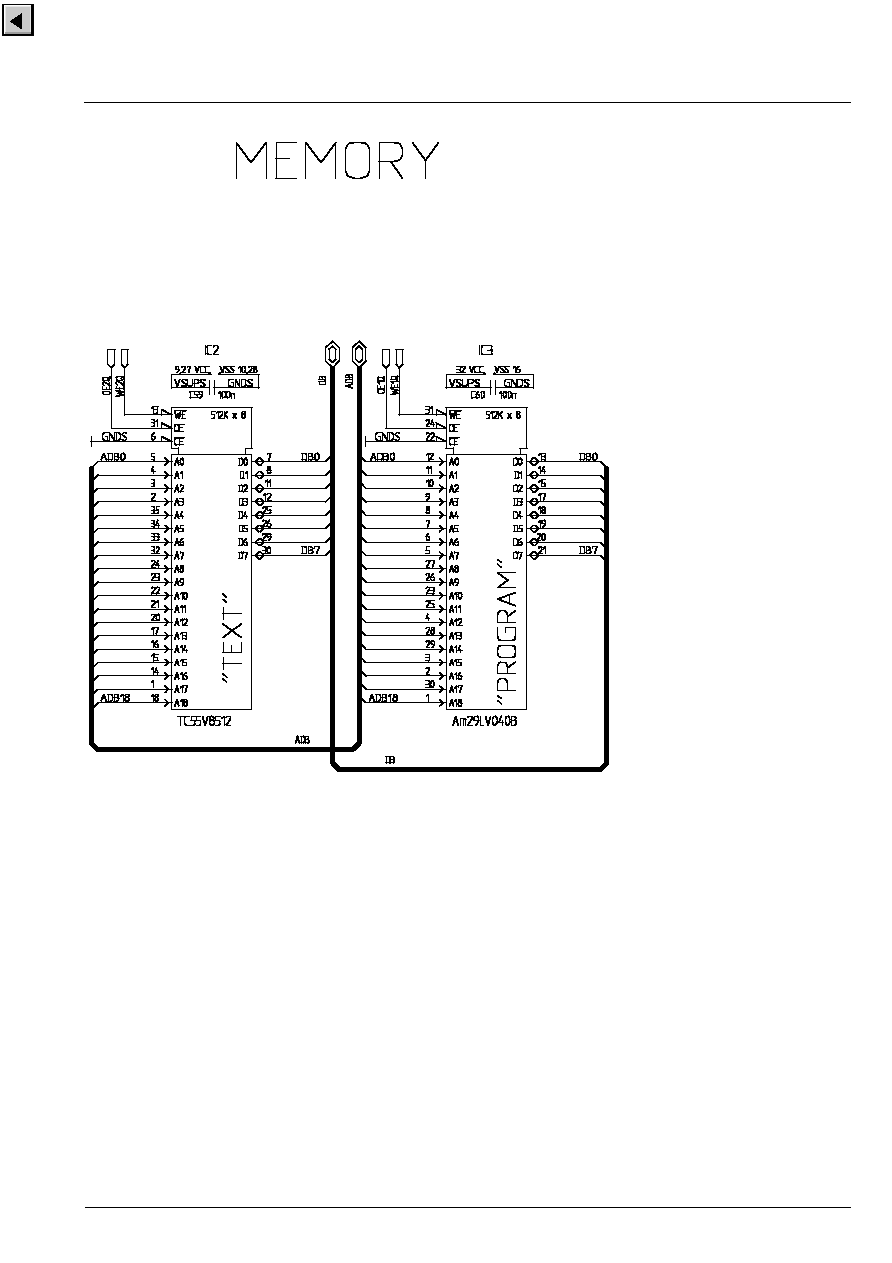
ADVANCE INFORMATION
VCT 38xxA
Micronas
169
Fig. 7�3: VCT 38xxA application circuit, part 3/3

VCT 38xxA
ADVANCE INFORMATION
170
Micronas

ADVANCE INFORMATION
VCT 38xxA
Micronas
171
8. Glossary of Abbreviations
AIT
Additional Information Table
BTT
Basic TOP Table
BTTL
Basic TOP Table List
CCU
Central Control Unit
CLUT
Color Look Up Table
CPU
Central Processing Unit
CRI
Clock Running-in
DMA
Direct Memory Access
DRAM
Dynamic Random Access Memory
FLOF
Full Level One Features
FRC
Framing Code
MPT
Multipage Table
MPET
Multipage Extension Table
NMI
Non Maskable Interrupt
OSD
On Screen Display
PDC
Programme Delivery Control
PLT
Page Linking Table
RAM
Random Access Memory
ROM
Read Only Memory
SRAM
Static Random Access Memory
TOP
Table Of Pages
TPU
Teletext Processing Unit
TTX
Teletext
VBI
Vertical Blanking Interval
VPS
Video-Programm-System
WSS
Wide Screen Signalling
WST
World System Teletext
9. References
1. Preliminary Data Sheet: "VDP 31xxB",
Sept. 25, 1998
6251-437-2PD
2. Preliminary Data Sheet: "TPU 3035, TPU 3040,
TPU 3050",
Feb. 23, 1999
6251-349-6PD
3. Preliminary Data Sheet: "W65C02",
Oct. 2, 1991
6251-364-1PD
4."Enhanced Teletext Specification".
European Telecommunication Standard ETS 300
706. ETSI, May1997.
5. "Television systems; 625-line television Wide
Screen Signalling (WSS)". European Telecommuni-
cation Standard ETS 300 294. ETSI, May1996.
6. "Television systems; Specification of the domestic
video Programme Delivery Control system (PDC)".
European Telecommunication Standard ETS 300
231. ETSI, August1996.
7. "Electronic Programme Guide (EPG)". European
Telecommunication Standard ETS 300 707. ETSI,
May1997.

All information and data contained in this data sheet are without any
commitment, are not to be considered as an offer for conclusion of a
contract, nor shall they be construed as to create any liability. Any new
issue of this data sheet invalidates previous issues. Product availability
and delivery are exclusively subject to our respective order confirmation
form; the same applies to orders based on development samples deliv-
ered. By this publication, Micronas GmbH does not assume responsibil-
ity for patent infringements or other rights of third parties which may
result from its use.
Further, Micronas GmbH reserves the right to revise this publication and
to make changes to its content, at any time, without obligation to notify
any person or entity of such revisions or changes.
No part of this publication may be reproduced, photocopied, stored on a
retrieval system, or transmitted without the express written consent of
Micronas GmbH.
VCT 38xxA
ADVANCE INFORMATION
172
Micronas
Micronas GmbH
Hans-Bunte-Strasse 19
D-79108 Freiburg (Germany)
P.O. Box 840
D-79008 Freiburg (Germany)
Tel. +49-761-517-0
Fax +49-761-517-2174
E-mail: docservice@micronas.com
Internet: www.micronas.com
Printed in Germany
Order No. 6251-518-1AI
10. Data Sheet History
1. Advance Information: "VCT 38xxA Video/Controller/
Teletext IC Family", Edition Oct. 17, 2000,
6251-518-1AI. First release of the advance informa-
tion.











































































































































































